
Loving Life with Fun, Balance, and Learning


10 Easy Toddler Science Experiments To Wow Your Kids
Combine play time and science for a creative way to connect with your children! These easy toddler science experiments will inspire fun, creativity, and learning into your days with the kids.
This is a fairly low prep science activity and simple to complete. It is great for 2 years of age and older.
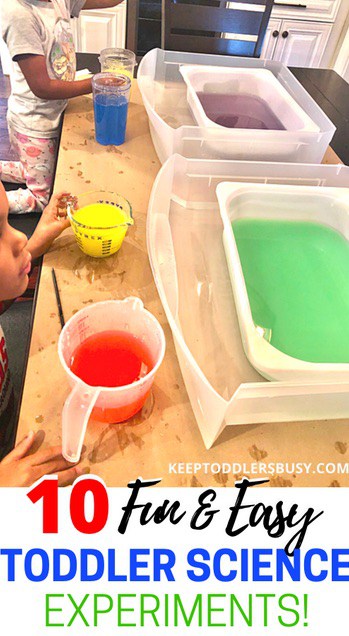
The great thing is that sometimes the simplest things can turn into the absolute best toddler learning activities.
If you love these ideas also be sure to check out my post on 3 ingredient art crafts and dollar tree craft ideas as well! You can never have too many ideas lined up to keep your toddler busy.
Fun Toddler Science Activities!
1. “when will the boat sink” toddler science experiment, get your supplies ready.
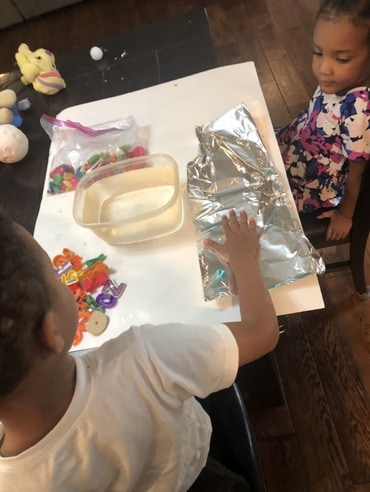
Everything you need can be found with one trip around he house and shouldn’t cost any more than a few dollars if you need to grab some supplies! Here is a list of the items you will need if you don’t already have them at home.
We hope you like the products we recommend. Just so you are aware, Keep Toddlers Busy may collect a share of sales from the links on this page. As an Amazon Associate I earn from qualifying purchases. Read more about our links in my disclosure policy.
Here is what you will need:
1.Aluminum foil to make your boat
2. A Messy Mat or cardboard to catch the water. Or you can do it outside.
3. Something to weight down the boat! Coins would work great. We decided to use letter but they were a little too light. We had to add a lot of letters! The kids enjoyed it though.
Let The Guessing Began!
Have your kids guess how much it will take to sink the boat! My kids guesses were all over the place and it was hilarious 🙂
If you have more than one child, I suggest dividing up your experiment materials so everything will go smoothly! Mine argue over everything currently.
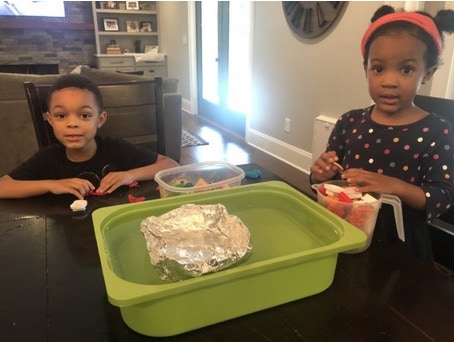
Let the Fun Begin!
This part of the activity is very simple and fun! Add each piece slowly and count them until the boat sinks! Try to spread your materials throughout the boat and you will be surprised how much can really fit on top.
The funnest part is when the boat actually sinks 🙂
We had so much fun, we had to take the party outside!
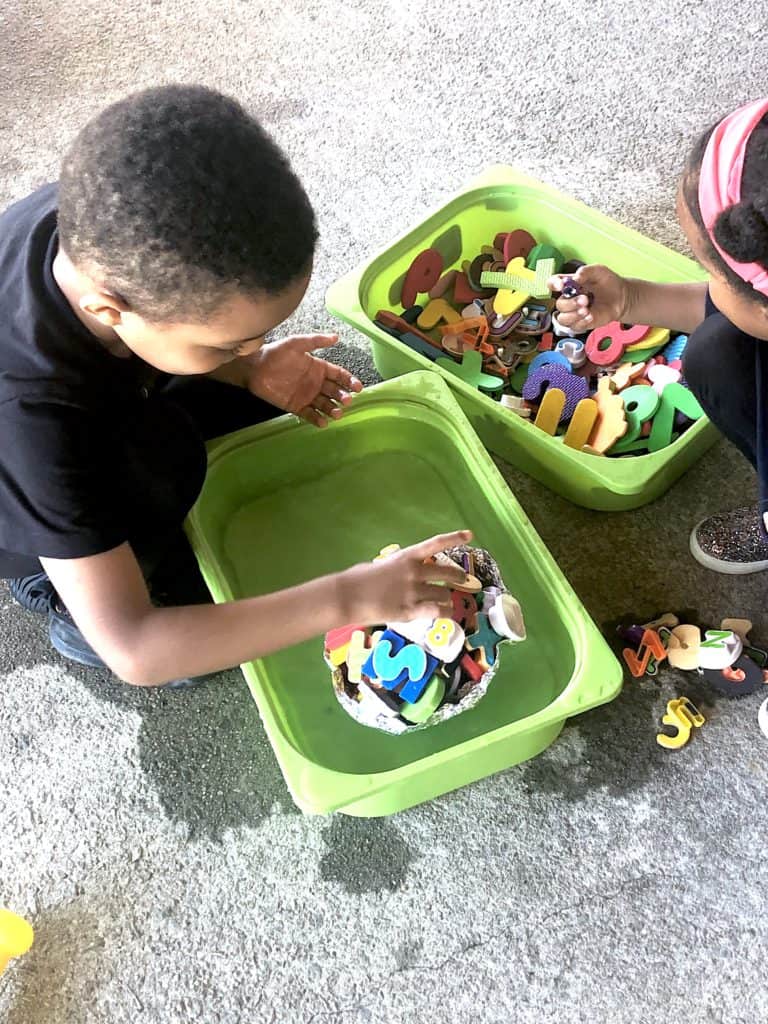
2. Glove Air Blow Experiment
We had so much fun with this!
All you need is, gloves, a cup, and a straw! I wrote names an/or alphabet letters on the fingers and I watched my kids run around blowing in their gloves saying “magic gloves”.
Check out the pictures and videos below!
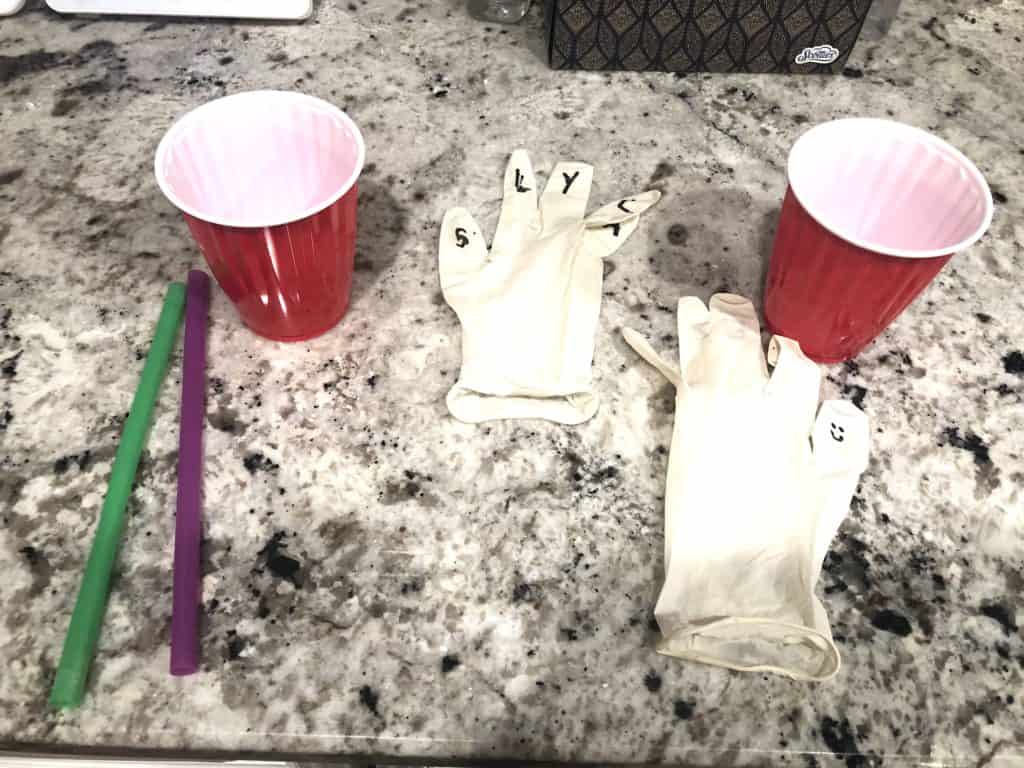
Sidenote: I Loove Green Craft Kids. If you are looking for Hands-on science and art kits delivered each month for ages 2-10+, check this out!
2a. Color Water Mixing
I did a brave thing and did a water mixing activity inside. My husband was literally holding his breath lol. The experiment involves water colored with Crayola Washable Paint ! Super fun!
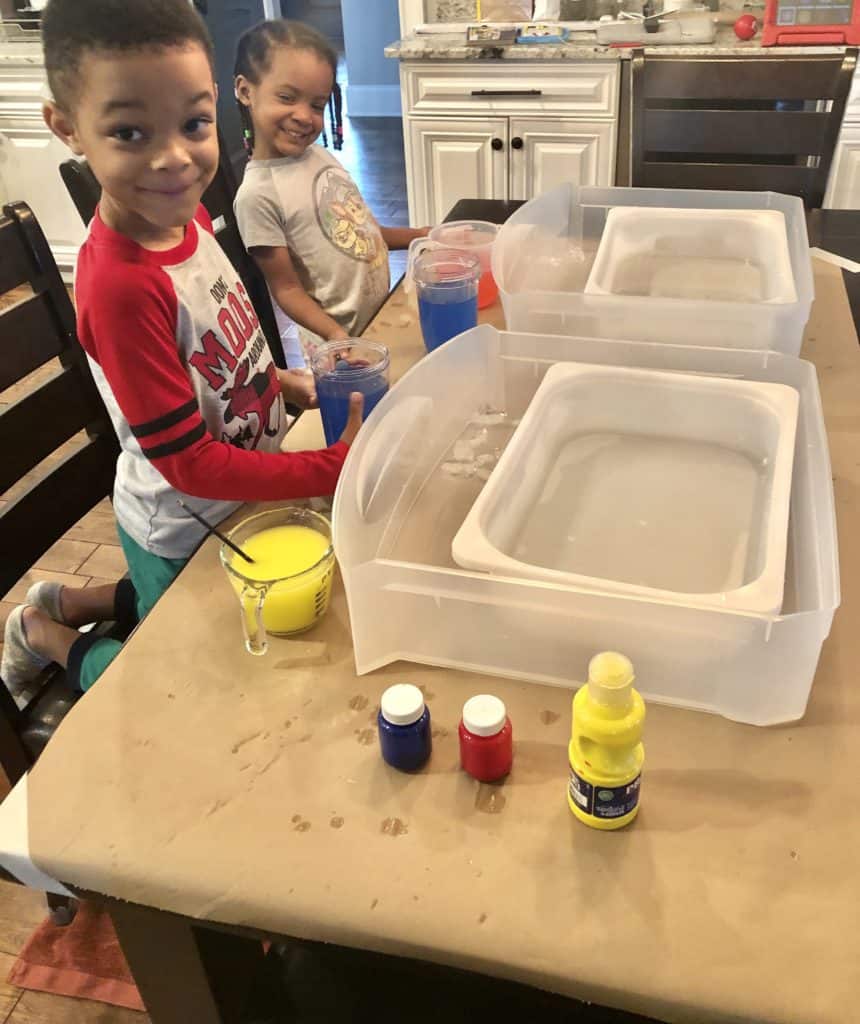
3. Grow A Rainbow Experiment
The Best Ideas For Kids has an awesome rainbow experiment! Check it out here !
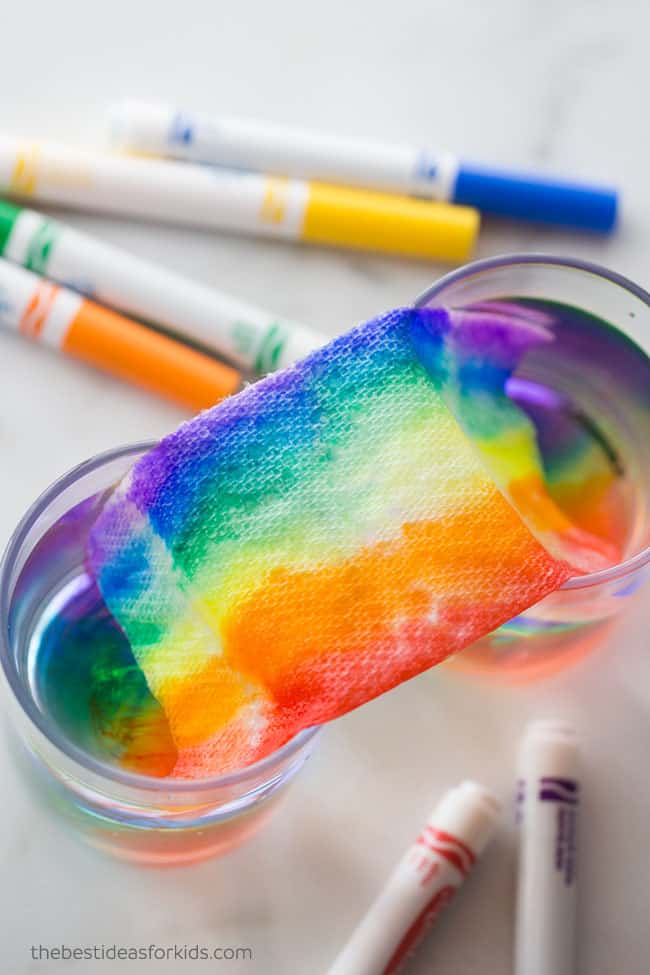
4. Sink or Float Science
A simple yet awesome science experiment for kids. Check it out at Happy Hooligans
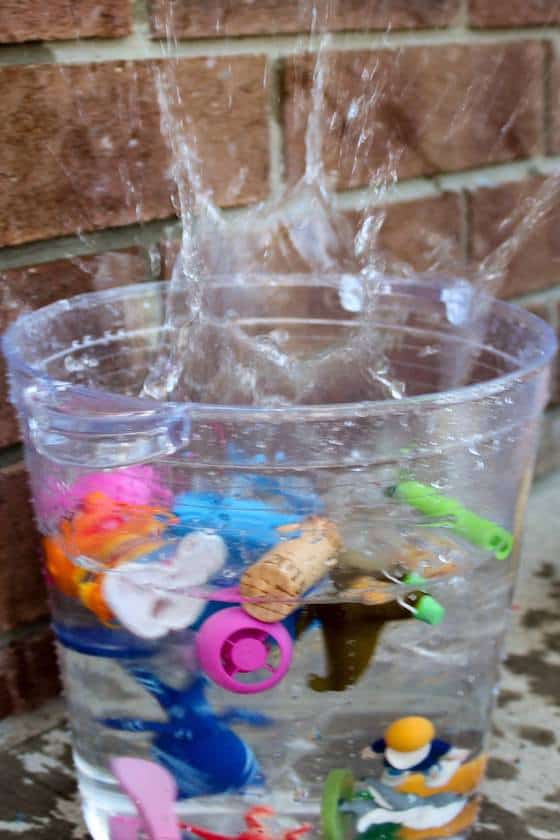
5. Mixing Colors Science Activity
This is another awesome science activity that your toddler would love. See more at here at Busy Toddler.
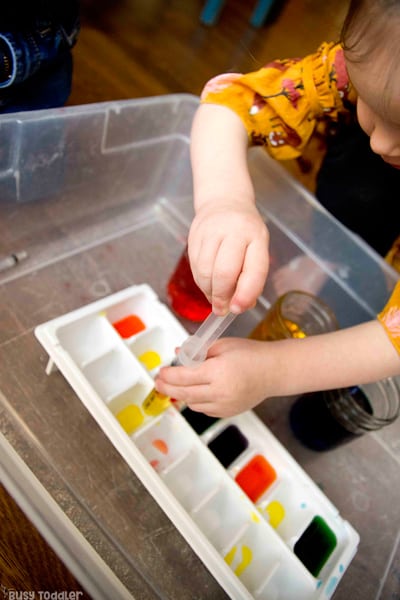
6. Salt With Frozen Hands Science Activity
I love this simple project! My kids currently adore anything frozen so Im looking forward to trying this one. Get the how-to at here .

7. Sink The Egg Stem Challenge
This is another low prep activity that the kiddies would ABSOLUTELY love from one of my favorite activity mom bloggers! Check it out at Happy Toddler Playtime .
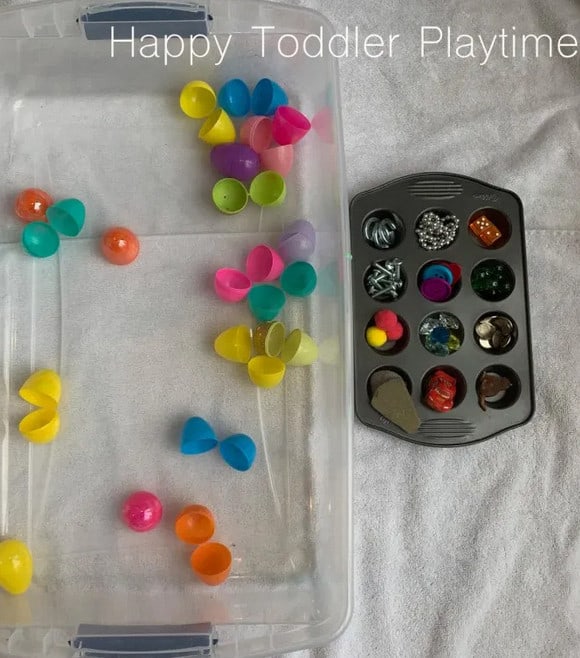
8. Exploring Colors Challenge
Baking and vinegar will never go out of style for almost all ages, especially when you add color. Check out this awesome science project here at Buggy and Buddy.

9. Rain Clouds Science
How cool is this toddler experiment?? Get the how-to at Team Cartwright
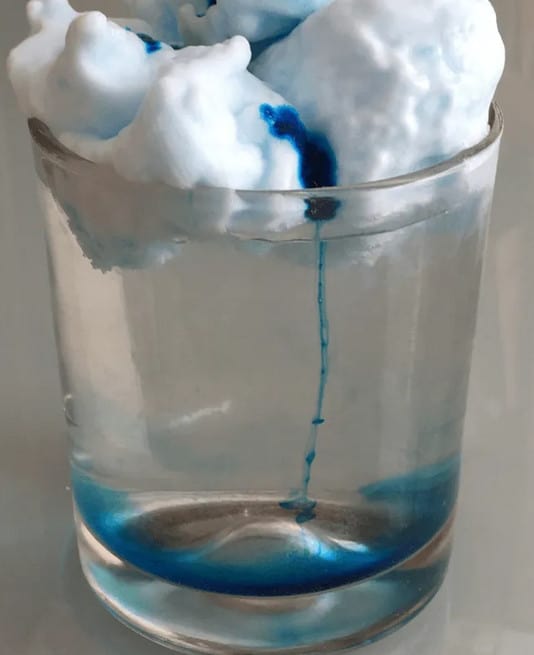
10. Toddler Gravity Experiments
This is literally one of the most important science lessons we can study as a young child. I mean really 🙂 Check out the how-to at Lovevery.
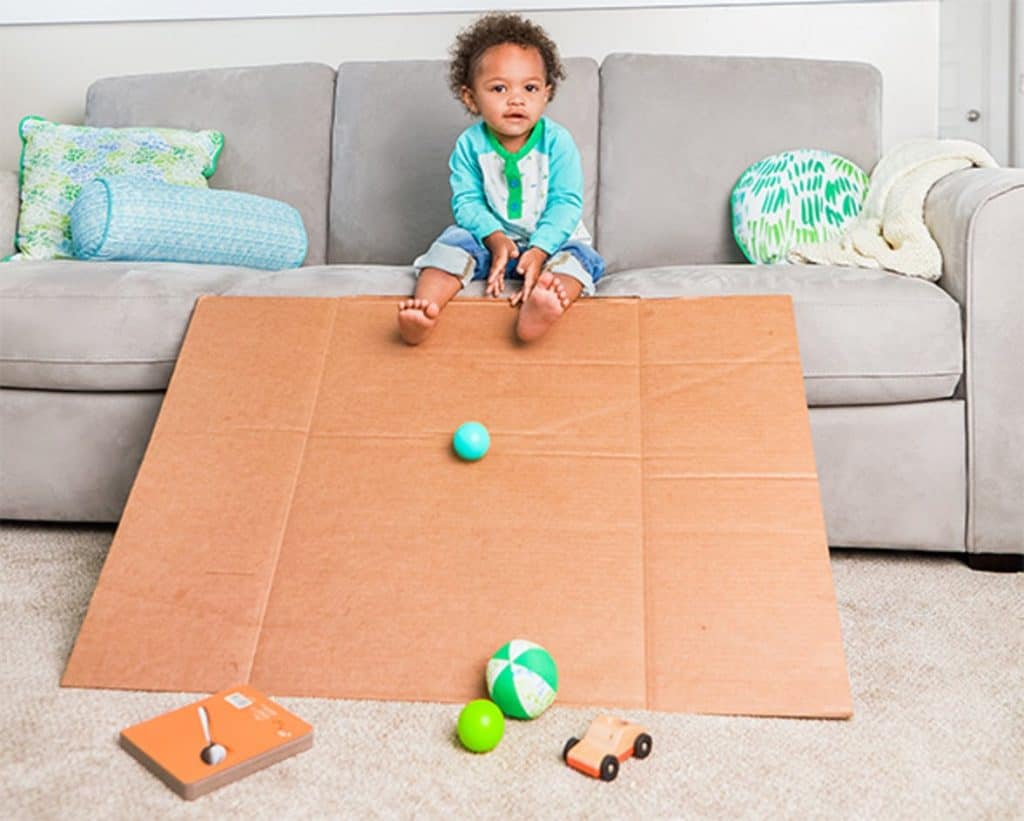
I hope you enjoyed these easy toddler and preschool science experiments! They have certainly brought joy to my children. Have you tried any science projects yet? If so, please tell me some of your ideas below. I would absolutely LOVE to hear about them.
Also check out my posts on a great pom pom frame craft and popsicle stick crafts for more fun ideas!
Also, remember to sign up for your FREE weekly activities planner on the top or the right side of the page and check out my printables page
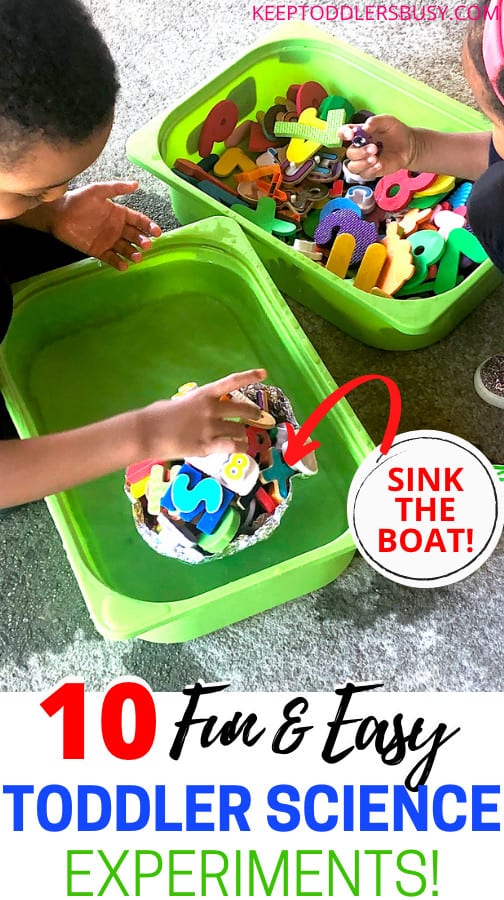
Welcome to my blog! I am an activity mom of three and I have over 15 years of experience crafting, writing, designing and creating. My mission is to bring fun, balance and learning to your busy homes with activities, tips, inspiration, and organization!

You May Also Like
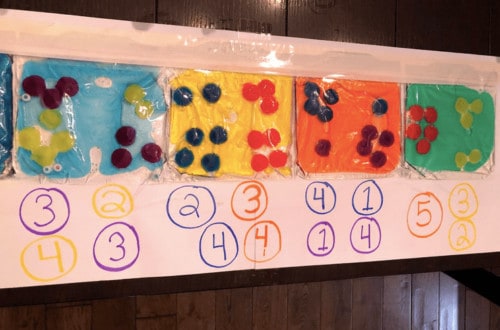
Sensory Activities Toddlers Will Love: Sensory Bag Counting
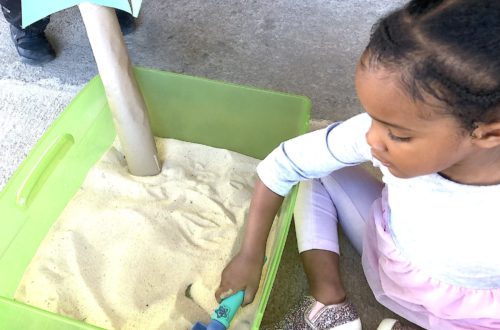
Super Awesome Chicka Chicka Boom Boom Activities and Crafts

Cool Crafts Kids Will Love: Life-Sized Body Part Labeling
Hi Kayla, congratulations for designing this great website. It is very appealing and I love the post topic of toddler science experiments. The kids will love this and I believe it truly will also help their developmental growth.
I plan to direct some friends and family members who have toddlers to come over to this beautiful website to learn ways to keep their kids busy in a productive and educationally enriching way.
I really wish you great success!
Thank you Joseph, I appreciate that!
Iheanacho David
This is a very useful article and i think i will be getting the materials for one of these experiments for my niece and nephew. I think it is much better than the regular toys i get for them. I feel it will build their interest in the science world at a very young age and they want to try out new things.
I agree! Enjoy!
Nice work you’ve done here, i and my kids love your website so much, they always love reading your content its so friendly and unique, thanks alot for the info, i see you have wriiten a thorough article here, these has been one of the most thorough and laid down article ive read so far, its really crazy with what you can accomplish with the right post, i already saved these post so as to come back for future reference.i actually read it to the end because your choice of words and writing skills is really something to save and come back for future referencing, i really do fancy these post alot, it really has made my day fun, thanks alot for the info, it has been the best so far..
Heloo there
Thanks alot for this informative article on ten easy toddler science experiment… This is really fascinating…. Doing science projects helps to to develop a child’s resourcefulness particularly their skills at goal getting, planning and solving problems. I really appreciate your effort on this and i can’t wait to try them with my little niece and nephew. Thanks alot for sharing… I’m looking forward to seeing more of your post.
you are welcome and yes it has so many benefits! Thanks for your comment!
Yayy!! All the experiments are really good and informational. Thanks for sharing!!
You’re Welcome Robin! Glad you enjoyed 🙂
Leave a Reply Cancel reply
Your email address will not be published. Required fields are marked *
- Grades 6-12
- School Leaders
Free Attendance Questions Slideshow ✨
72 Easy Science Experiments Using Materials You Already Have On Hand
Because science doesn’t have to be complicated.
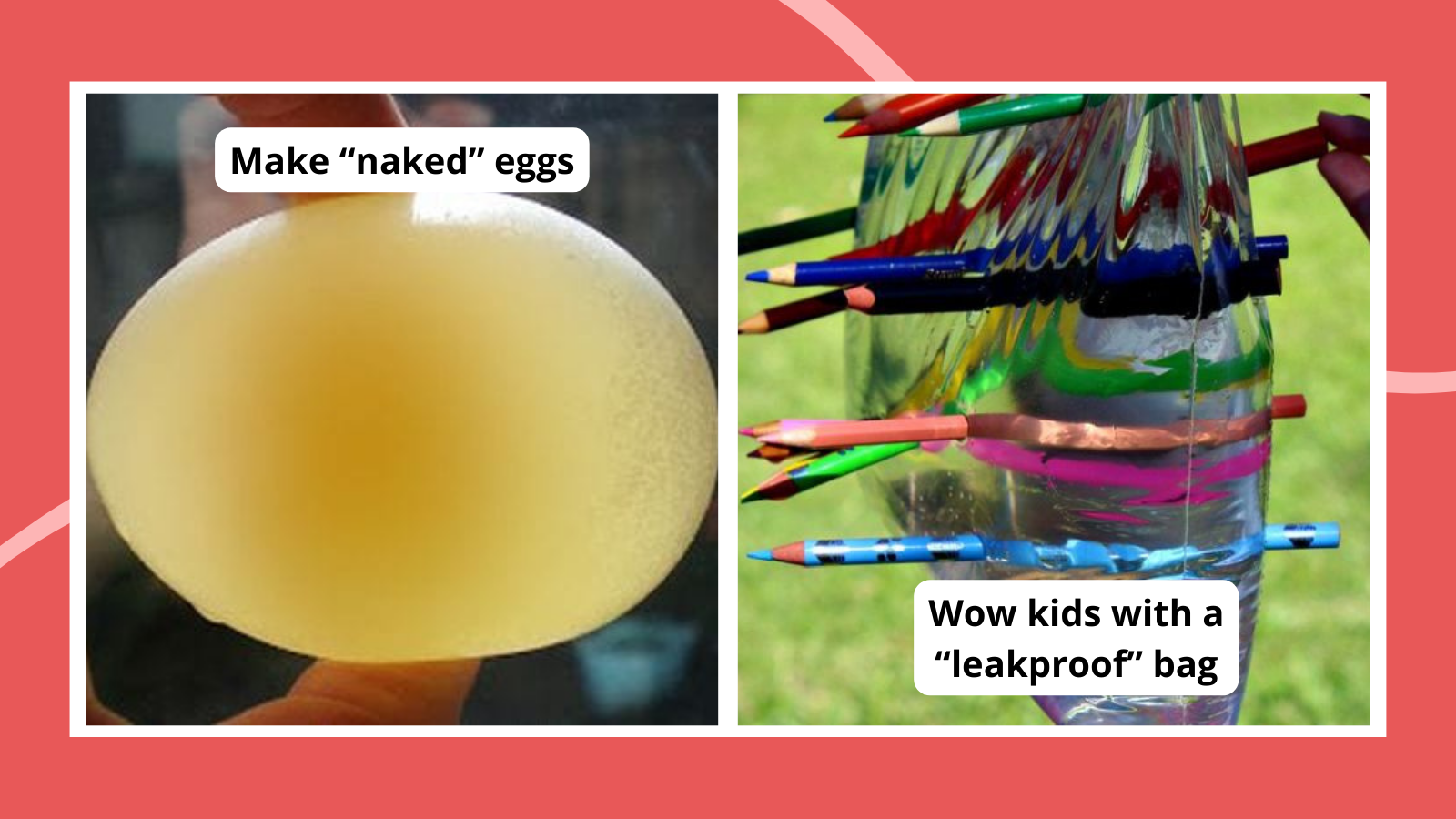
If there is one thing that is guaranteed to get your students excited, it’s a good science experiment! While some experiments require expensive lab equipment or dangerous chemicals, there are plenty of cool projects you can do with regular household items. We’ve rounded up a big collection of easy science experiments that anybody can try, and kids are going to love them!
Easy Chemistry Science Experiments
Easy physics science experiments, easy biology and environmental science experiments, easy engineering experiments and stem challenges.
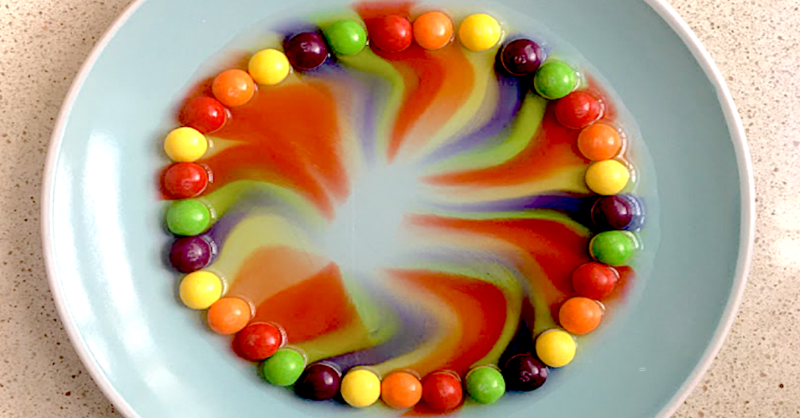
1. Taste the Rainbow
Teach your students about diffusion while creating a beautiful and tasty rainbow! Tip: Have extra Skittles on hand so your class can eat a few!
Learn more: Skittles Diffusion
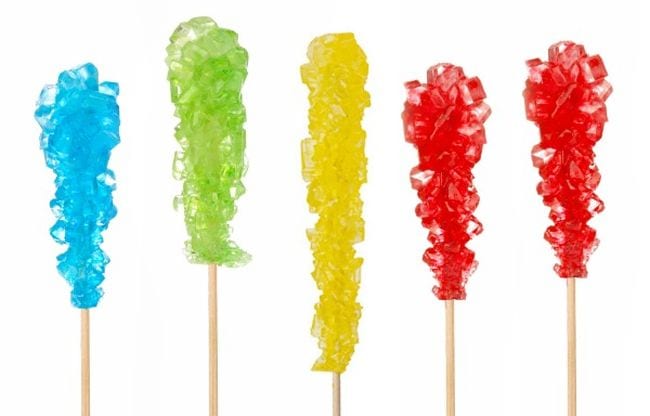
2. Crystallize sweet treats
Crystal science experiments teach kids about supersaturated solutions. This one is easy to do at home, and the results are absolutely delicious!
Learn more: Candy Crystals
3. Make a volcano erupt
This classic experiment demonstrates a chemical reaction between baking soda (sodium bicarbonate) and vinegar (acetic acid), which produces carbon dioxide gas, water, and sodium acetate.
Learn more: Best Volcano Experiments
4. Make elephant toothpaste
This fun project uses yeast and a hydrogen peroxide solution to create overflowing “elephant toothpaste.” Tip: Add an extra fun layer by having kids create toothpaste wrappers for plastic bottles.
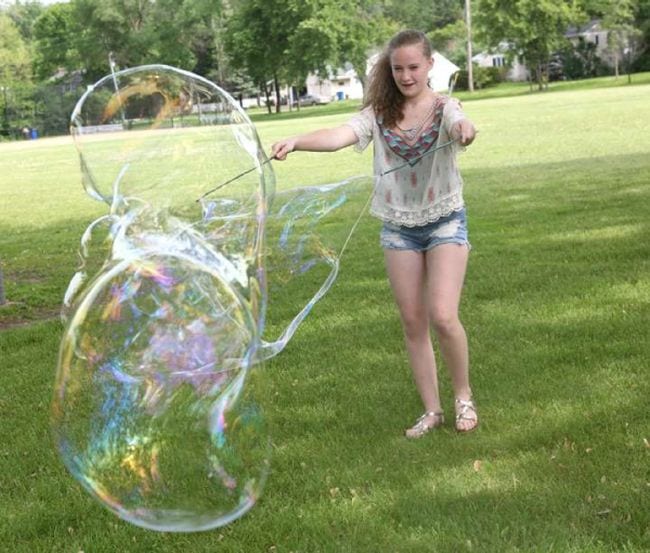
5. Blow the biggest bubbles you can
Add a few simple ingredients to dish soap solution to create the largest bubbles you’ve ever seen! Kids learn about surface tension as they engineer these bubble-blowing wands.
Learn more: Giant Soap Bubbles
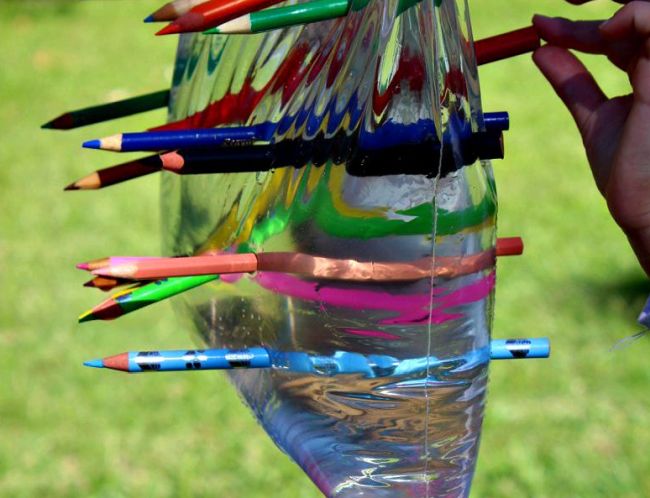
6. Demonstrate the “magic” leakproof bag
All you need is a zip-top plastic bag, sharp pencils, and water to blow your kids’ minds. Once they’re suitably impressed, teach them how the “trick” works by explaining the chemistry of polymers.
Learn more: Leakproof Bag
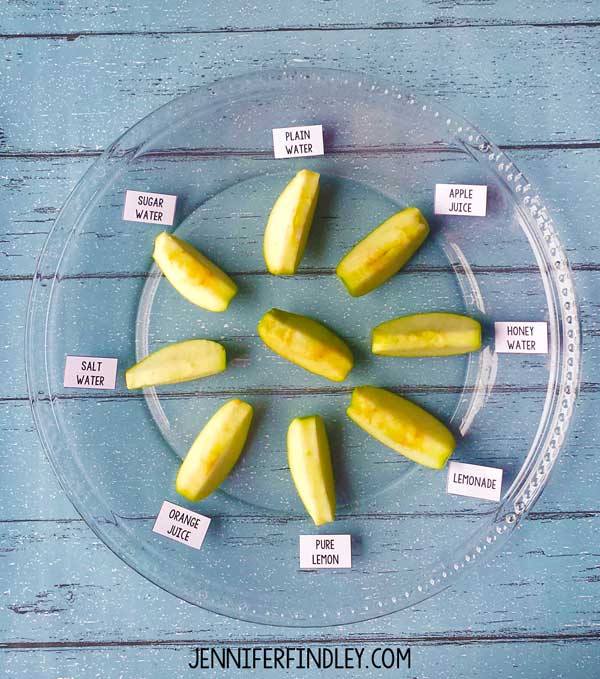
7. Use apple slices to learn about oxidation
Have students make predictions about what will happen to apple slices when immersed in different liquids, then put those predictions to the test. Have them record their observations.
Learn more: Apple Oxidation
8. Float a marker man
Their eyes will pop out of their heads when you “levitate” a stick figure right off the table! This experiment works due to the insolubility of dry-erase marker ink in water, combined with the lighter density of the ink.
Learn more: Floating Marker Man

9. Discover density with hot and cold water
There are a lot of easy science experiments you can do with density. This one is extremely simple, involving only hot and cold water and food coloring, but the visuals make it appealing and fun.
Learn more: Layered Water
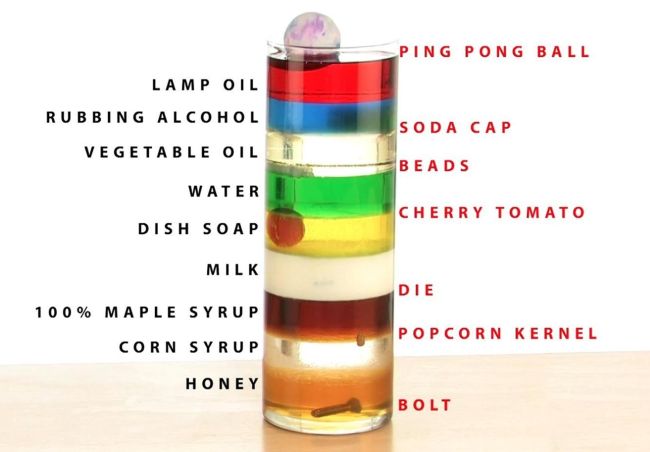
10. Layer more liquids
This density demo is a little more complicated, but the effects are spectacular. Slowly layer liquids like honey, dish soap, water, and rubbing alcohol in a glass. Kids will be amazed when the liquids float one on top of the other like magic (except it is really science).
Learn more: Layered Liquids
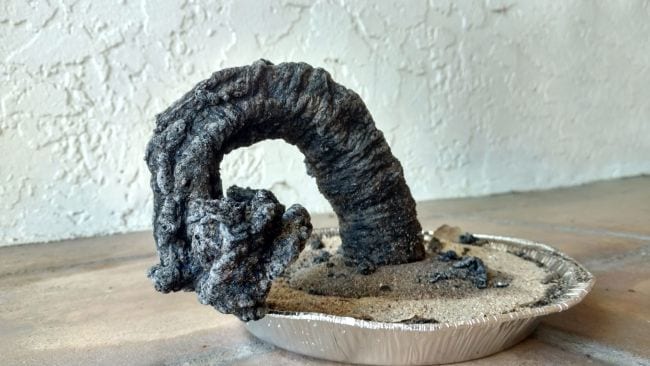
11. Grow a carbon sugar snake
Easy science experiments can still have impressive results! This eye-popping chemical reaction demonstration only requires simple supplies like sugar, baking soda, and sand.
Learn more: Carbon Sugar Snake
12. Mix up some slime
Tell kids you’re going to make slime at home, and watch their eyes light up! There are a variety of ways to make slime, so try a few different recipes to find the one you like best.
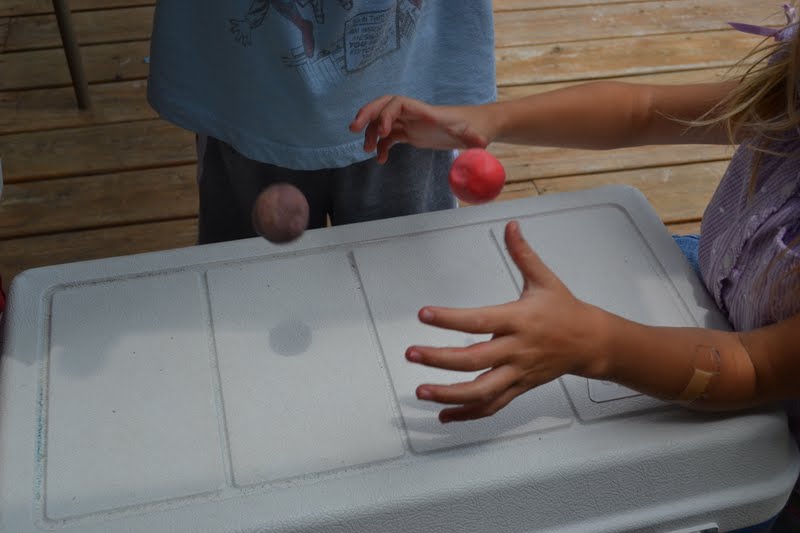
13. Make homemade bouncy balls
These homemade bouncy balls are easy to make since all you need is glue, food coloring, borax powder, cornstarch, and warm water. You’ll want to store them inside a container like a plastic egg because they will flatten out over time.
Learn more: Make Your Own Bouncy Balls

14. Create eggshell chalk
Eggshells contain calcium, the same material that makes chalk. Grind them up and mix them with flour, water, and food coloring to make your very own sidewalk chalk.
Learn more: Eggshell Chalk
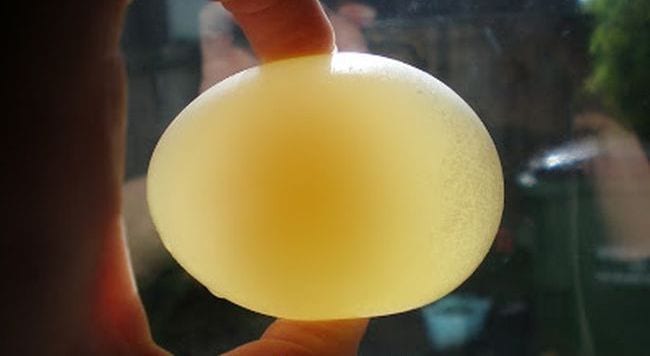
15. Make naked eggs
This is so cool! Use vinegar to dissolve the calcium carbonate in an eggshell to discover the membrane underneath that holds the egg together. Then, use the “naked” egg for another easy science experiment that demonstrates osmosis .
Learn more: Naked Egg Experiment
16. Turn milk into plastic
This sounds a lot more complicated than it is, but don’t be afraid to give it a try. Use simple kitchen supplies to create plastic polymers from plain old milk. Sculpt them into cool shapes when you’re done!
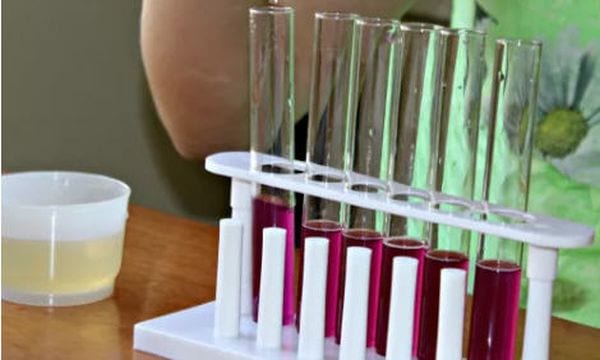
17. Test pH using cabbage
Teach kids about acids and bases without needing pH test strips! Simply boil some red cabbage and use the resulting water to test various substances—acids turn red and bases turn green.
Learn more: Cabbage pH
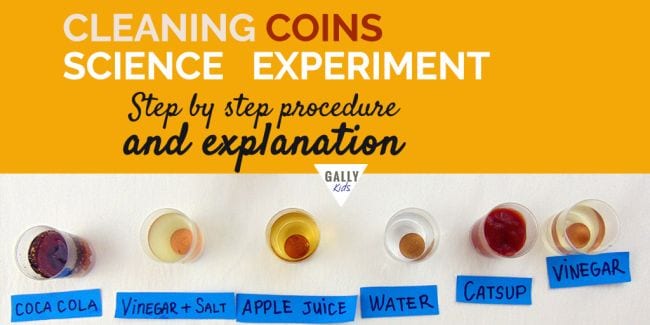
18. Clean some old coins
Use common household items to make old oxidized coins clean and shiny again in this simple chemistry experiment. Ask kids to predict (hypothesize) which will work best, then expand the learning by doing some research to explain the results.
Learn more: Cleaning Coins
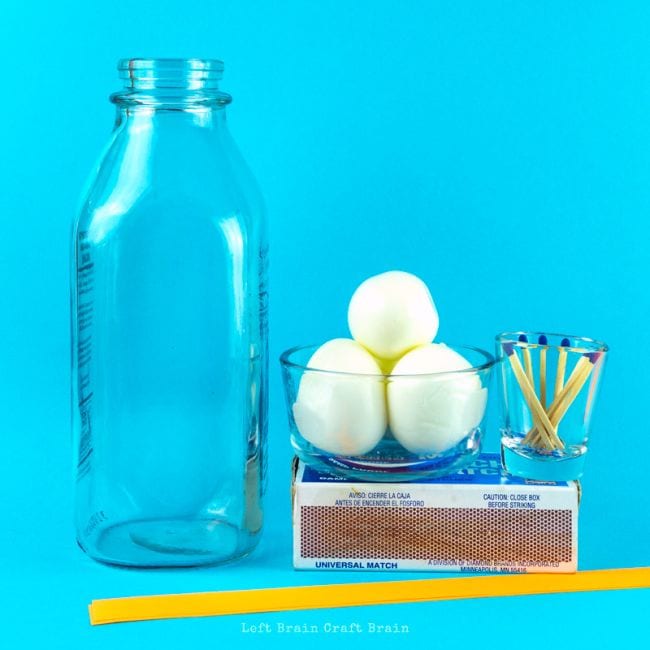
19. Pull an egg into a bottle
This classic easy science experiment never fails to delight. Use the power of air pressure to suck a hard-boiled egg into a jar, no hands required.
Learn more: Egg in a Bottle
20. Blow up a balloon (without blowing)
Chances are good you probably did easy science experiments like this when you were in school. The baking soda and vinegar balloon experiment demonstrates the reactions between acids and bases when you fill a bottle with vinegar and a balloon with baking soda.
21 Assemble a DIY lava lamp
This 1970s trend is back—as an easy science experiment! This activity combines acid-base reactions with density for a totally groovy result.
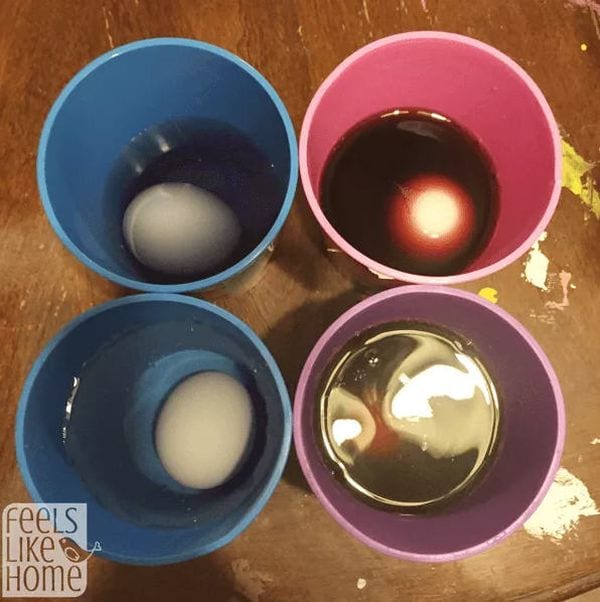
22. Explore how sugary drinks affect teeth
The calcium content of eggshells makes them a great stand-in for teeth. Use eggs to explore how soda and juice can stain teeth and wear down the enamel. Expand your learning by trying different toothpaste-and-toothbrush combinations to see how effective they are.
Learn more: Sugar and Teeth Experiment
23. Mummify a hot dog
If your kids are fascinated by the Egyptians, they’ll love learning to mummify a hot dog! No need for canopic jars , just grab some baking soda and get started.
24. Extinguish flames with carbon dioxide
This is a fiery twist on acid-base experiments. Light a candle and talk about what fire needs in order to survive. Then, create an acid-base reaction and “pour” the carbon dioxide to extinguish the flame. The CO2 gas acts like a liquid, suffocating the fire.
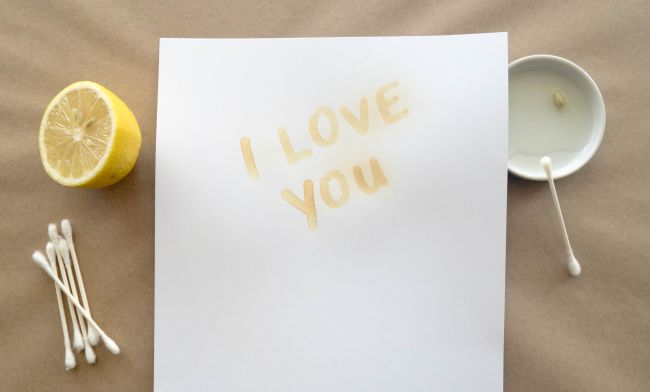
25. Send secret messages with invisible ink
Turn your kids into secret agents! Write messages with a paintbrush dipped in lemon juice, then hold the paper over a heat source and watch the invisible become visible as oxidation goes to work.
Learn more: Invisible Ink
26. Create dancing popcorn
This is a fun version of the classic baking soda and vinegar experiment, perfect for the younger crowd. The bubbly mixture causes popcorn to dance around in the water.
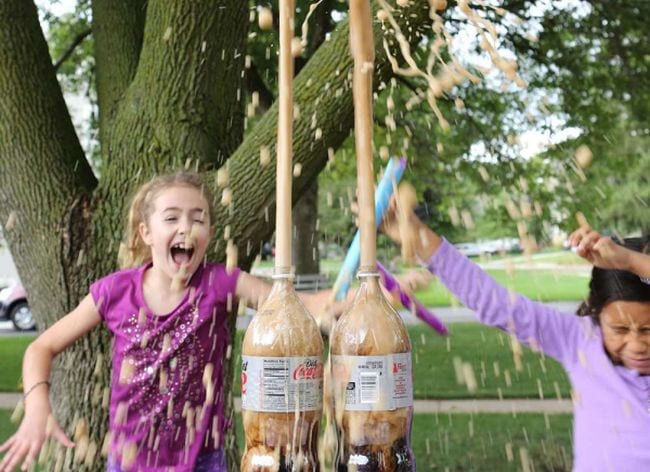
27. Shoot a soda geyser sky-high
You’ve always wondered if this really works, so it’s time to find out for yourself! Kids will marvel at the chemical reaction that sends diet soda shooting high in the air when Mentos are added.
Learn more: Soda Explosion
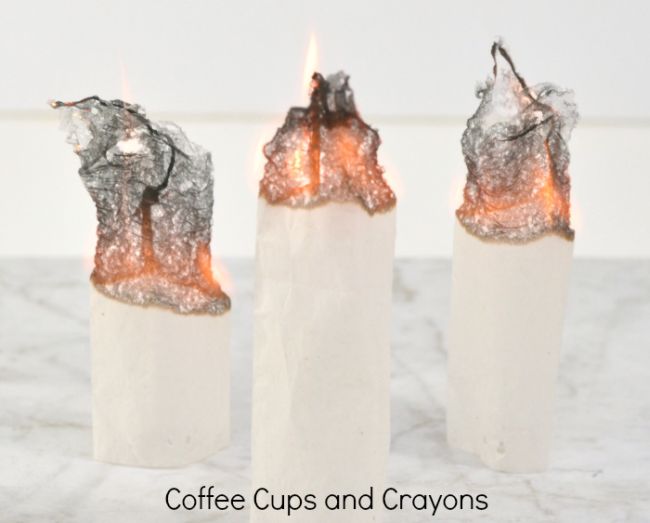
28. Send a teabag flying
Hot air rises, and this experiment can prove it! You’ll want to supervise kids with fire, of course. For more safety, try this one outside.
Learn more: Flying Tea Bags
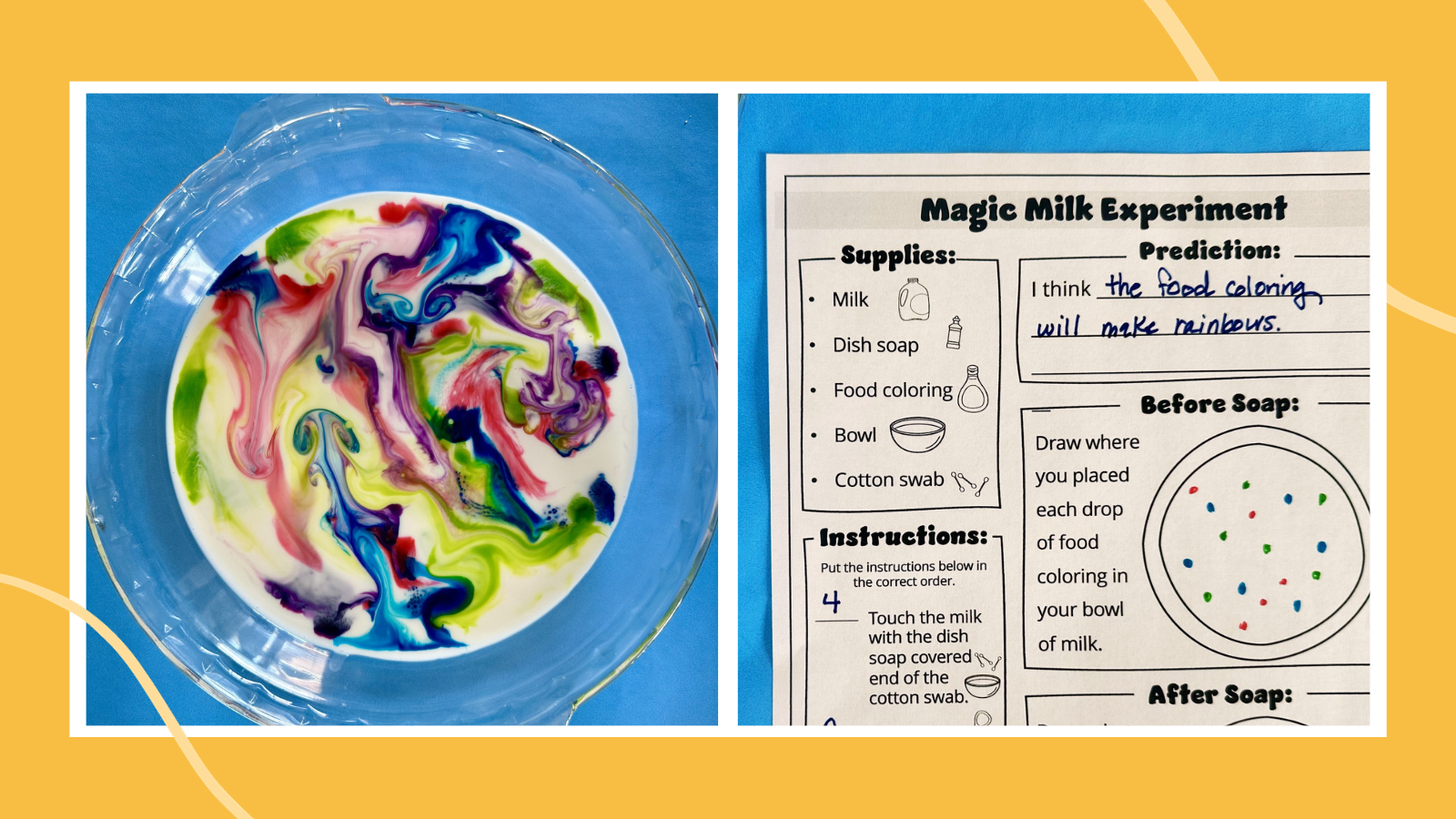
29. Create magic milk
This fun and easy science experiment demonstrates principles related to surface tension, molecular interactions, and fluid dynamics.
Learn more: Magic Milk Experiment
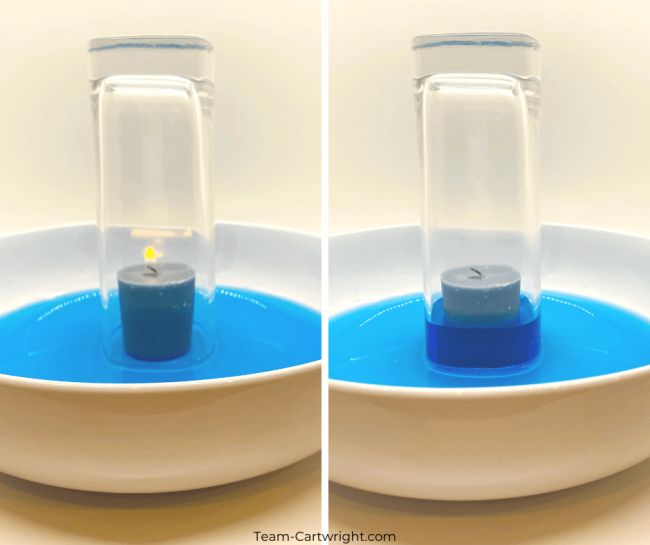
30. Watch the water rise
Learn about Charles’s Law with this simple experiment. As the candle burns, using up oxygen and heating the air in the glass, the water rises as if by magic.
Learn more: Rising Water
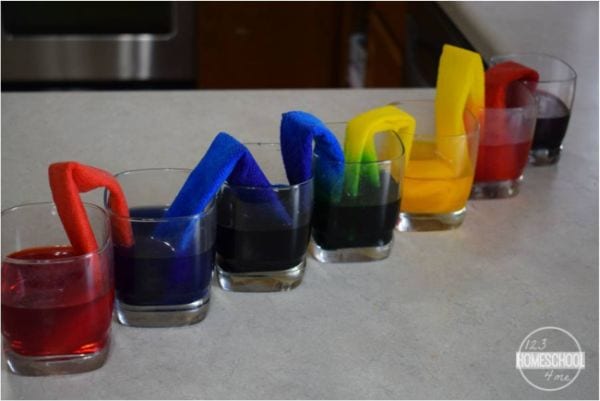
31. Learn about capillary action
Kids will be amazed as they watch the colored water move from glass to glass, and you’ll love the easy and inexpensive setup. Gather some water, paper towels, and food coloring to teach the scientific magic of capillary action.
Learn more: Capillary Action
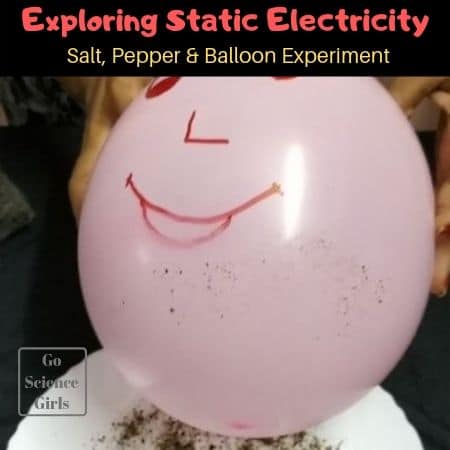
32. Give a balloon a beard
Equally educational and fun, this experiment will teach kids about static electricity using everyday materials. Kids will undoubtedly get a kick out of creating beards on their balloon person!
Learn more: Static Electricity
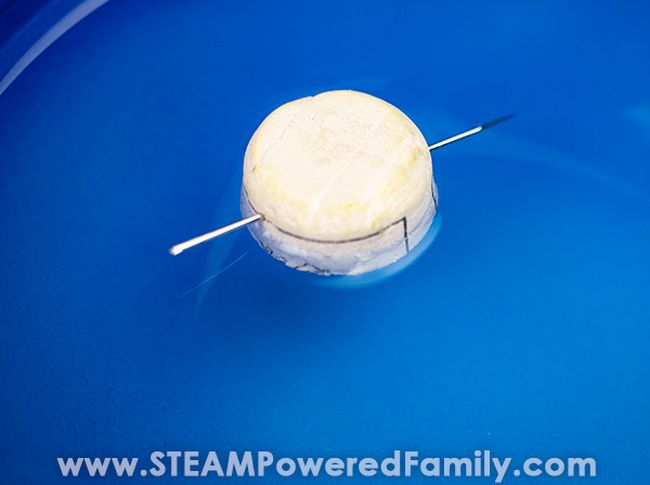
33. Find your way with a DIY compass
Here’s an old classic that never fails to impress. Magnetize a needle, float it on the water’s surface, and it will always point north.
Learn more: DIY Compass
34. Crush a can using air pressure
Sure, it’s easy to crush a soda can with your bare hands, but what if you could do it without touching it at all? That’s the power of air pressure!

35. Tell time using the sun
While people use clocks or even phones to tell time today, there was a time when a sundial was the best means to do that. Kids will certainly get a kick out of creating their own sundials using everyday materials like cardboard and pencils.
Learn more: Make Your Own Sundial
36. Launch a balloon rocket
Grab balloons, string, straws, and tape, and launch rockets to learn about the laws of motion.
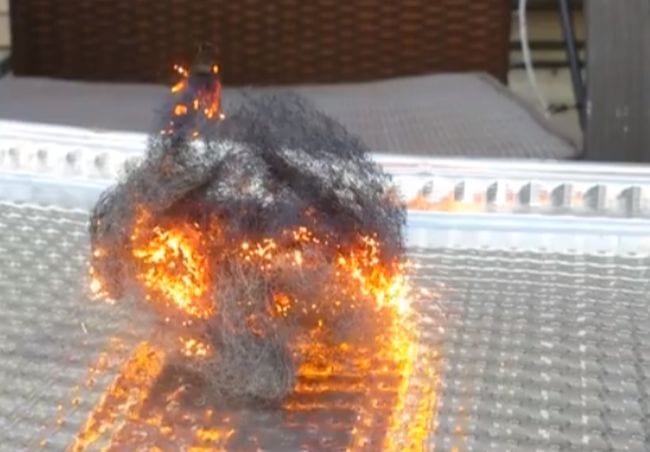
37. Make sparks with steel wool
All you need is steel wool and a 9-volt battery to perform this science demo that’s bound to make their eyes light up! Kids learn about chain reactions, chemical changes, and more.
Learn more: Steel Wool Electricity
38. Levitate a Ping-Pong ball
Kids will get a kick out of this experiment, which is really all about Bernoulli’s principle. You only need plastic bottles, bendy straws, and Ping-Pong balls to make the science magic happen.
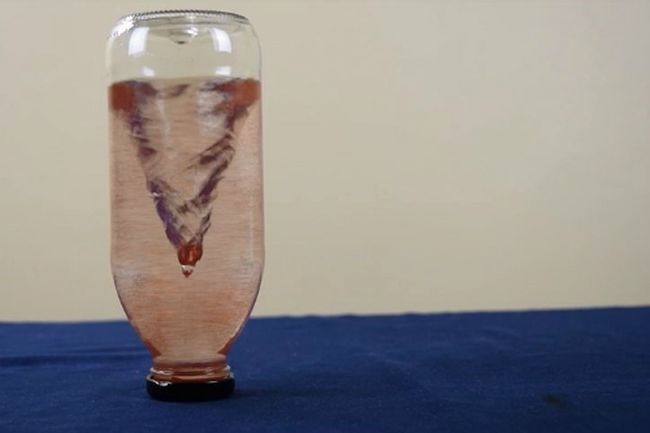
39. Whip up a tornado in a bottle
There are plenty of versions of this classic experiment out there, but we love this one because it sparkles! Kids learn about a vortex and what it takes to create one.
Learn more: Tornado in a Bottle
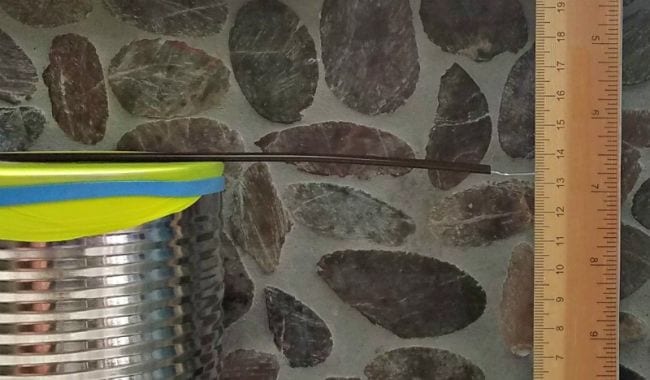
40. Monitor air pressure with a DIY barometer
This simple but effective DIY science project teaches kids about air pressure and meteorology. They’ll have fun tracking and predicting the weather with their very own barometer.
Learn more: DIY Barometer
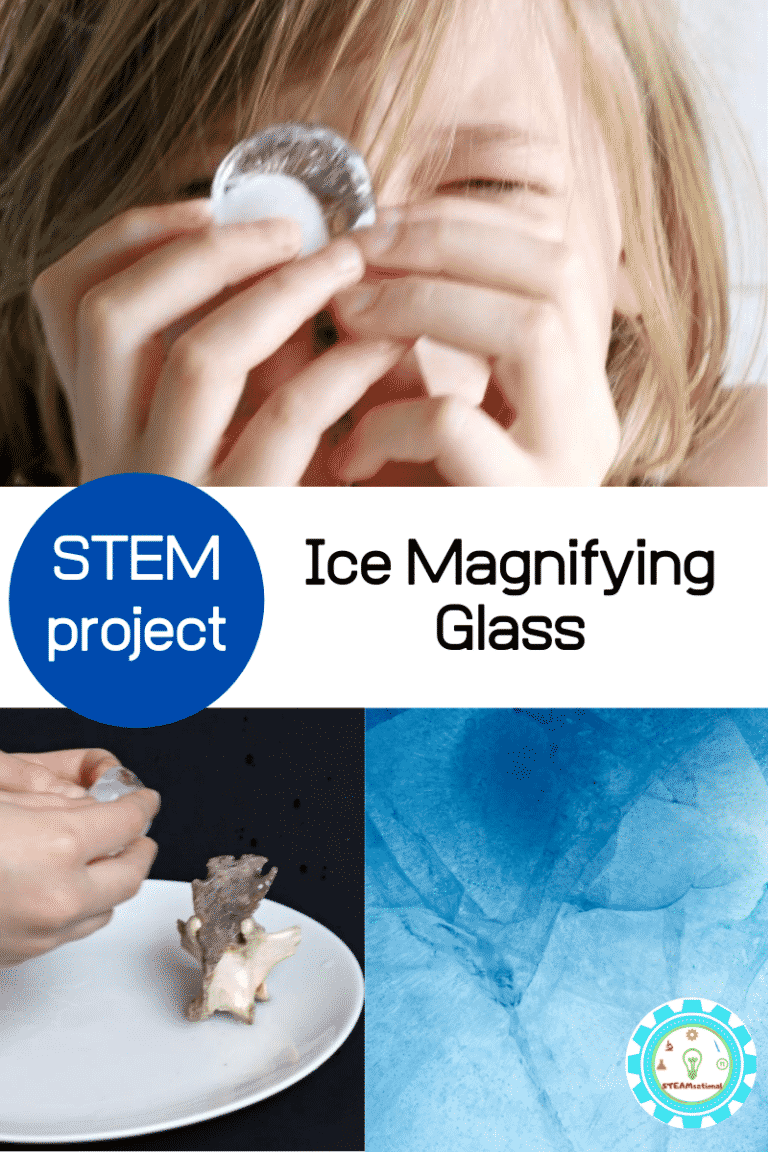
41. Peer through an ice magnifying glass
Students will certainly get a thrill out of seeing how an everyday object like a piece of ice can be used as a magnifying glass. Be sure to use purified or distilled water since tap water will have impurities in it that will cause distortion.
Learn more: Ice Magnifying Glass
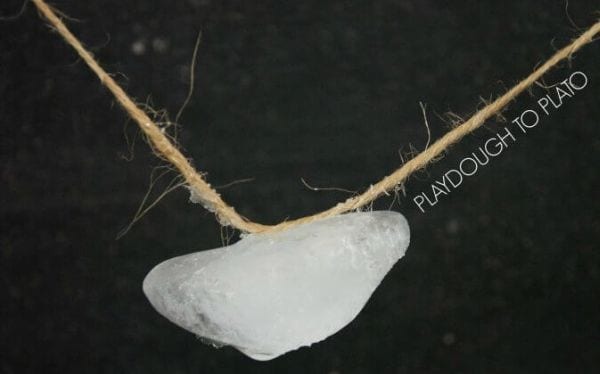
42. String up some sticky ice
Can you lift an ice cube using just a piece of string? This quick experiment teaches you how. Use a little salt to melt the ice and then refreeze the ice with the string attached.
Learn more: Sticky Ice
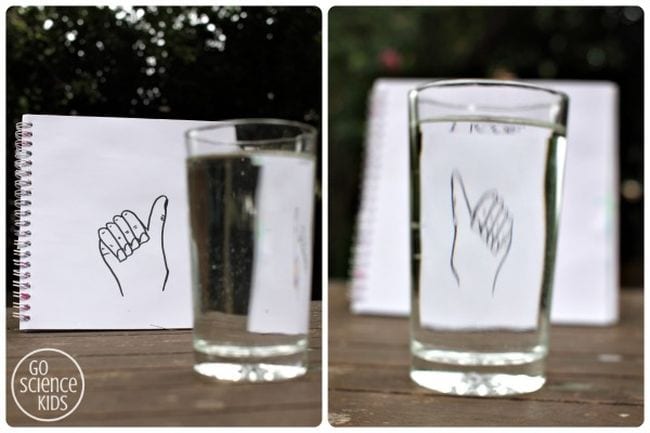
43. “Flip” a drawing with water
Light refraction causes some really cool effects, and there are multiple easy science experiments you can do with it. This one uses refraction to “flip” a drawing; you can also try the famous “disappearing penny” trick .
Learn more: Light Refraction With Water
44. Color some flowers
We love how simple this project is to re-create since all you’ll need are some white carnations, food coloring, glasses, and water. The end result is just so beautiful!
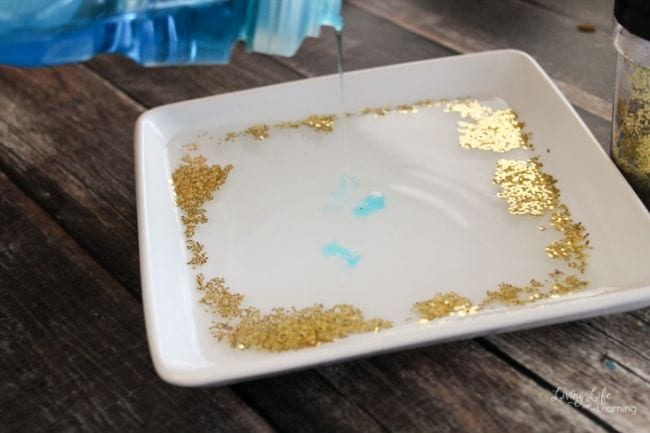
45. Use glitter to fight germs
Everyone knows that glitter is just like germs—it gets everywhere and is so hard to get rid of! Use that to your advantage and show kids how soap fights glitter and germs.
Learn more: Glitter Germs
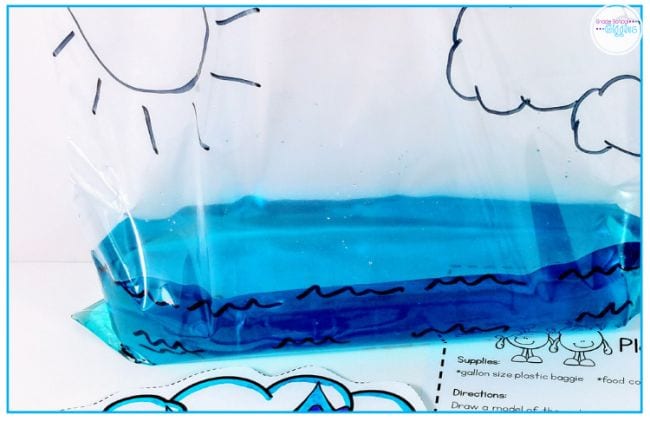
46. Re-create the water cycle in a bag
You can do so many easy science experiments with a simple zip-top bag. Fill one partway with water and set it on a sunny windowsill to see how the water evaporates up and eventually “rains” down.
Learn more: Water Cycle
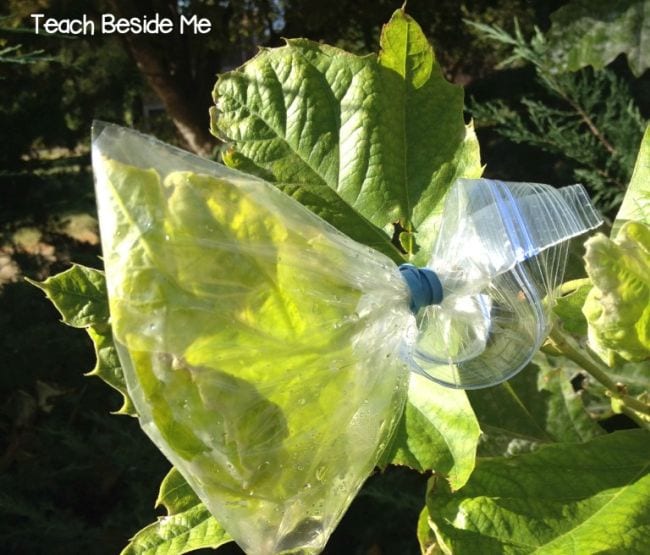
47. Learn about plant transpiration
Your backyard is a terrific place for easy science experiments. Grab a plastic bag and rubber band to learn how plants get rid of excess water they don’t need, a process known as transpiration.
Learn more: Plant Transpiration
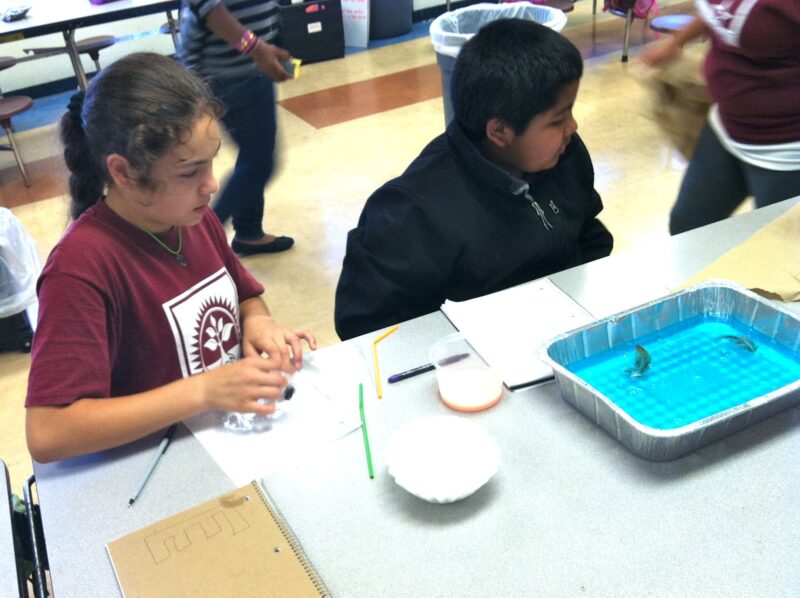
48. Clean up an oil spill
Before conducting this experiment, teach your students about engineers who solve environmental problems like oil spills. Then, have your students use provided materials to clean the oil spill from their oceans.
Learn more: Oil Spill
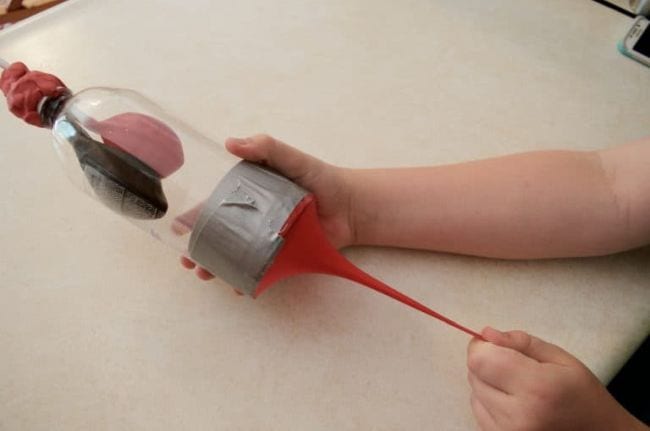
49. Construct a pair of model lungs
Kids get a better understanding of the respiratory system when they build model lungs using a plastic water bottle and some balloons. You can modify the experiment to demonstrate the effects of smoking too.
Learn more: Model Lungs
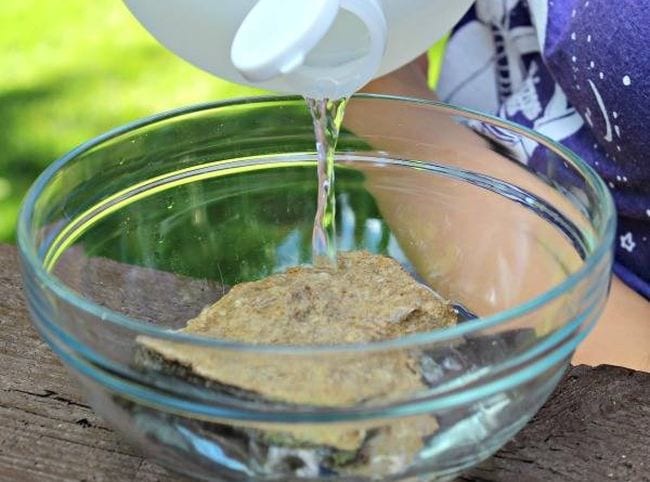
50. Experiment with limestone rocks
Kids love to collect rocks, and there are plenty of easy science experiments you can do with them. In this one, pour vinegar over a rock to see if it bubbles. If it does, you’ve found limestone!
Learn more: Limestone Experiments
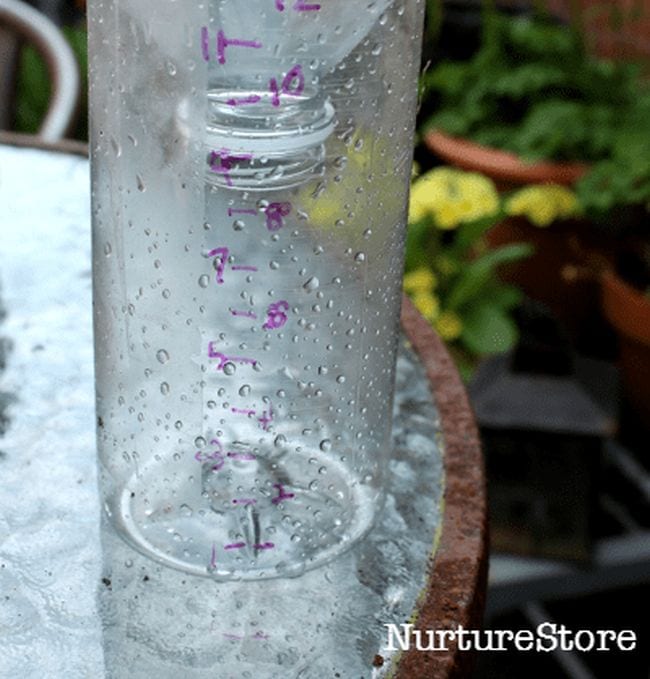
51. Turn a bottle into a rain gauge
All you need is a plastic bottle, a ruler, and a permanent marker to make your own rain gauge. Monitor your measurements and see how they stack up against meteorology reports in your area.
Learn more: DIY Rain Gauge
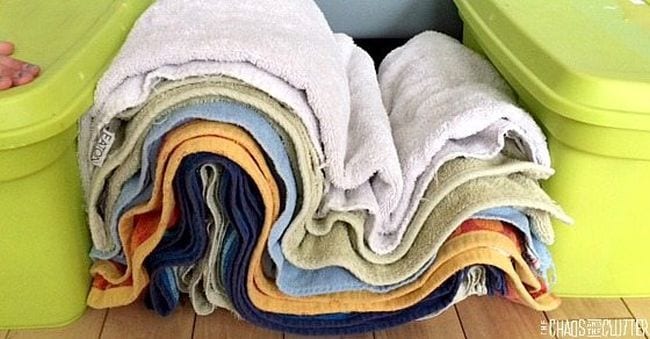
52. Build up towel mountains
This clever demonstration helps kids understand how some landforms are created. Use layers of towels to represent rock layers and boxes for continents. Then pu-u-u-sh and see what happens!
Learn more: Towel Mountains
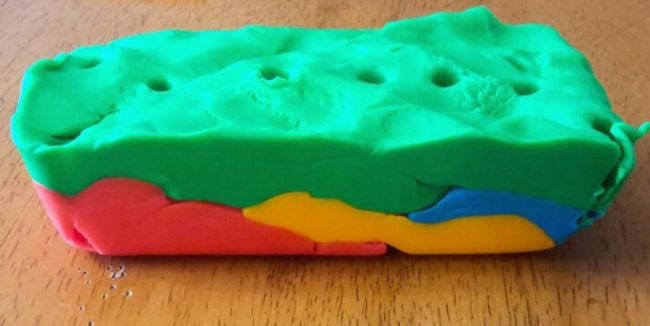
53. Take a play dough core sample
Learn about the layers of the earth by building them out of Play-Doh, then take a core sample with a straw. ( Love Play-Doh? Get more learning ideas here. )
Learn more: Play Dough Core Sampling
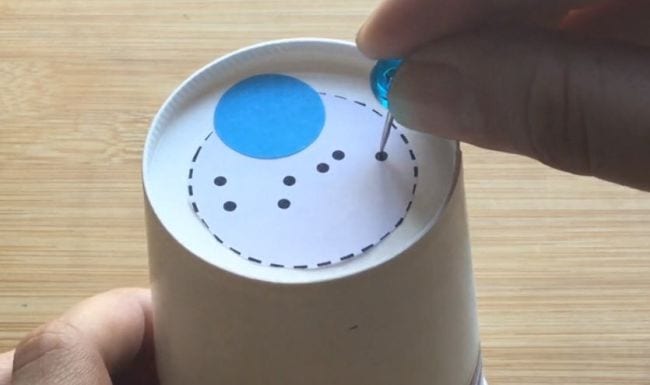
54. Project the stars on your ceiling
Use the video lesson in the link below to learn why stars are only visible at night. Then create a DIY star projector to explore the concept hands-on.
Learn more: DIY Star Projector
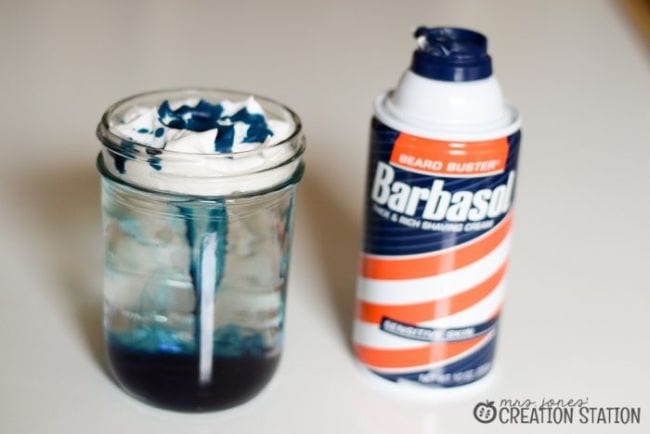
55. Make it rain
Use shaving cream and food coloring to simulate clouds and rain. This is an easy science experiment little ones will beg to do over and over.
Learn more: Shaving Cream Rain
56. Blow up your fingerprint
This is such a cool (and easy!) way to look at fingerprint patterns. Inflate a balloon a bit, use some ink to put a fingerprint on it, then blow it up big to see your fingerprint in detail.
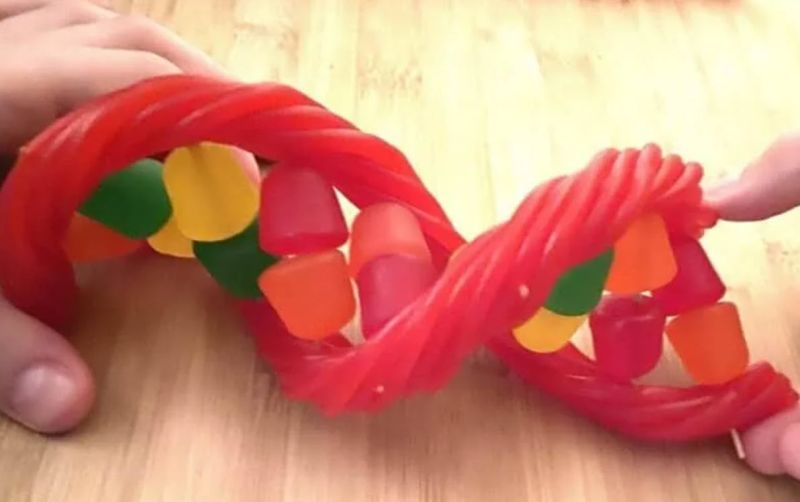
57. Snack on a DNA model
Twizzlers, gumdrops, and a few toothpicks are all you need to make this super-fun (and yummy!) DNA model.
Learn more: Edible DNA Model
58. Dissect a flower
Take a nature walk and find a flower or two. Then bring them home and take them apart to discover all the different parts of flowers.
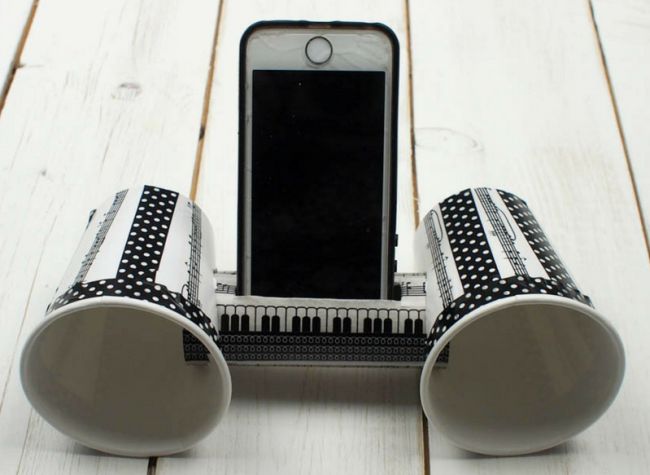
59. Craft smartphone speakers
No Bluetooth speaker? No problem! Put together your own from paper cups and toilet paper tubes.
Learn more: Smartphone Speakers
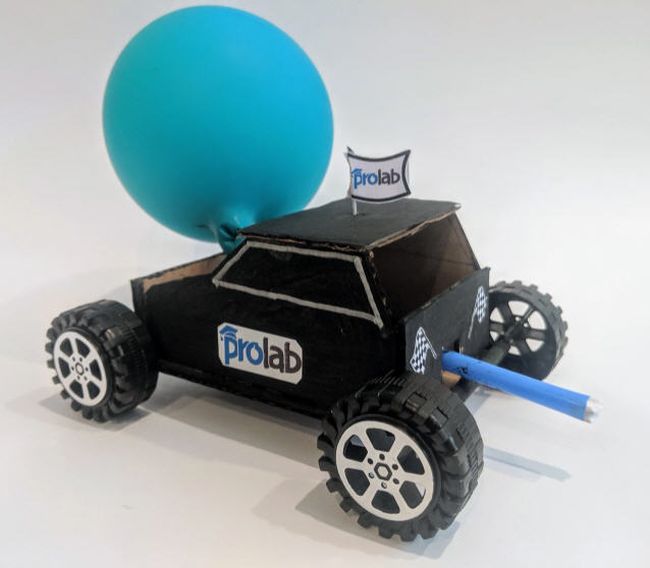
60. Race a balloon-powered car
Kids will be amazed when they learn they can put together this awesome racer using cardboard and bottle-cap wheels. The balloon-powered “engine” is so much fun too.
Learn more: Balloon-Powered Car
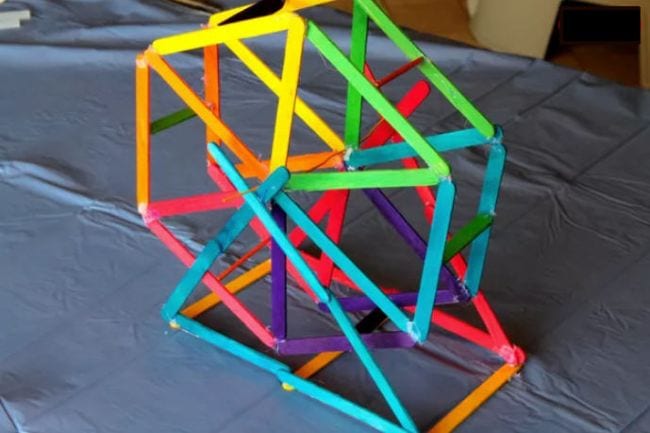
61. Build a Ferris wheel
You’ve probably ridden on a Ferris wheel, but can you build one? Stock up on wood craft sticks and find out! Play around with different designs to see which one works best.
Learn more: Craft Stick Ferris Wheel
62. Design a phone stand
There are lots of ways to craft a DIY phone stand, which makes this a perfect creative-thinking STEM challenge.
63. Conduct an egg drop
Put all their engineering skills to the test with an egg drop! Challenge kids to build a container from stuff they find around the house that will protect an egg from a long fall (this is especially fun to do from upper-story windows).
Learn more: Egg Drop Challenge Ideas
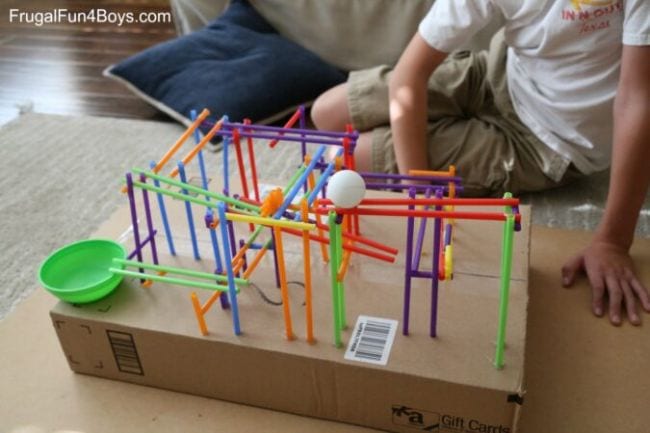
64. Engineer a drinking-straw roller coaster
STEM challenges are always a hit with kids. We love this one, which only requires basic supplies like drinking straws.
Learn more: Straw Roller Coaster
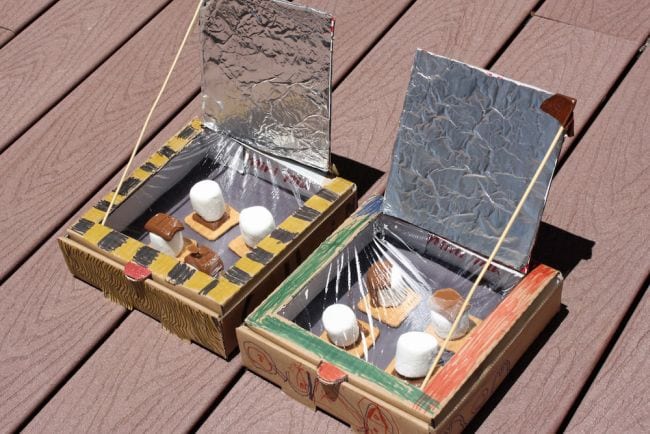
65. Build a solar oven
Explore the power of the sun when you build your own solar ovens and use them to cook some yummy treats. This experiment takes a little more time and effort, but the results are always impressive. The link below has complete instructions.
Learn more: Solar Oven
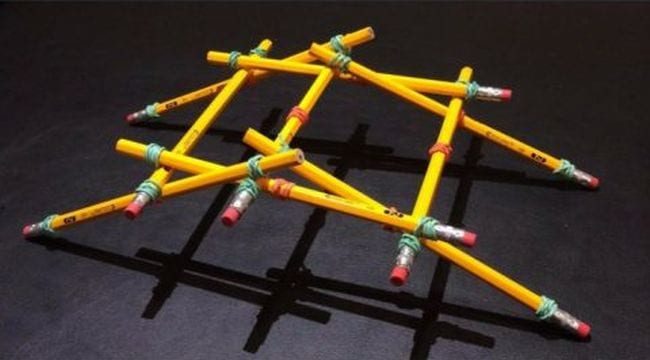
66. Build a Da Vinci bridge
There are plenty of bridge-building experiments out there, but this one is unique. It’s inspired by Leonardo da Vinci’s 500-year-old self-supporting wooden bridge. Learn how to build it at the link, and expand your learning by exploring more about Da Vinci himself.
Learn more: Da Vinci Bridge
67. Step through an index card
This is one easy science experiment that never fails to astonish. With carefully placed scissor cuts on an index card, you can make a loop large enough to fit a (small) human body through! Kids will be wowed as they learn about surface area.
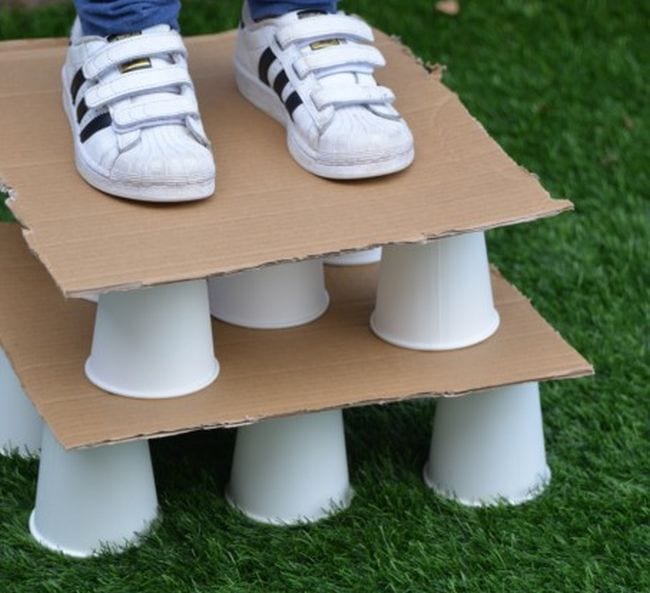
68. Stand on a pile of paper cups
Combine physics and engineering and challenge kids to create a paper cup structure that can support their weight. This is a cool project for aspiring architects.
Learn more: Paper Cup Stack
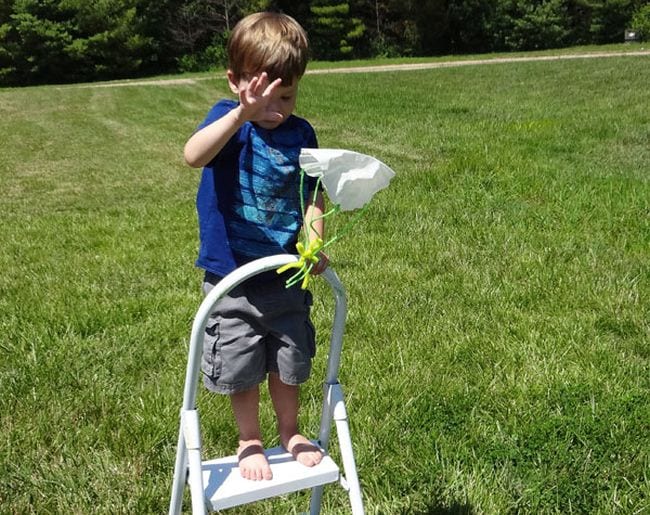
69. Test out parachutes
Gather a variety of materials (try tissues, handkerchiefs, plastic bags, etc.) and see which ones make the best parachutes. You can also find out how they’re affected by windy days or find out which ones work in the rain.
Learn more: Parachute Drop

70. Recycle newspapers into an engineering challenge
It’s amazing how a stack of newspapers can spark such creative engineering. Challenge kids to build a tower, support a book, or even build a chair using only newspaper and tape!
Learn more: Newspaper STEM Challenge
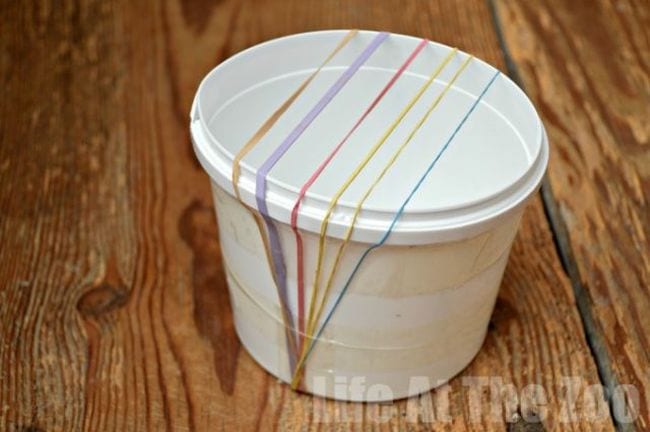
71. Use rubber bands to sound out acoustics
Explore the ways that sound waves are affected by what’s around them using a simple rubber band “guitar.” (Kids absolutely love playing with these!)
Learn more: Rubber Band Guitar
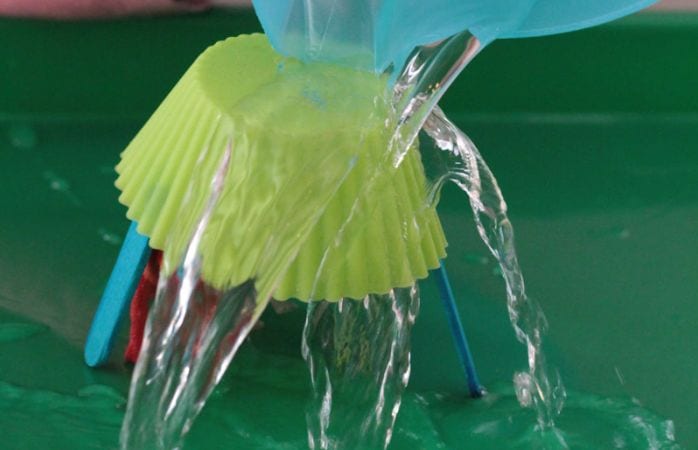
72. Assemble a better umbrella
Challenge students to engineer the best possible umbrella from various household supplies. Encourage them to plan, draw blueprints, and test their creations using the scientific method.
Learn more: Umbrella STEM Challenge
Plus, sign up for our newsletters to get all the latest learning ideas straight to your inbox.
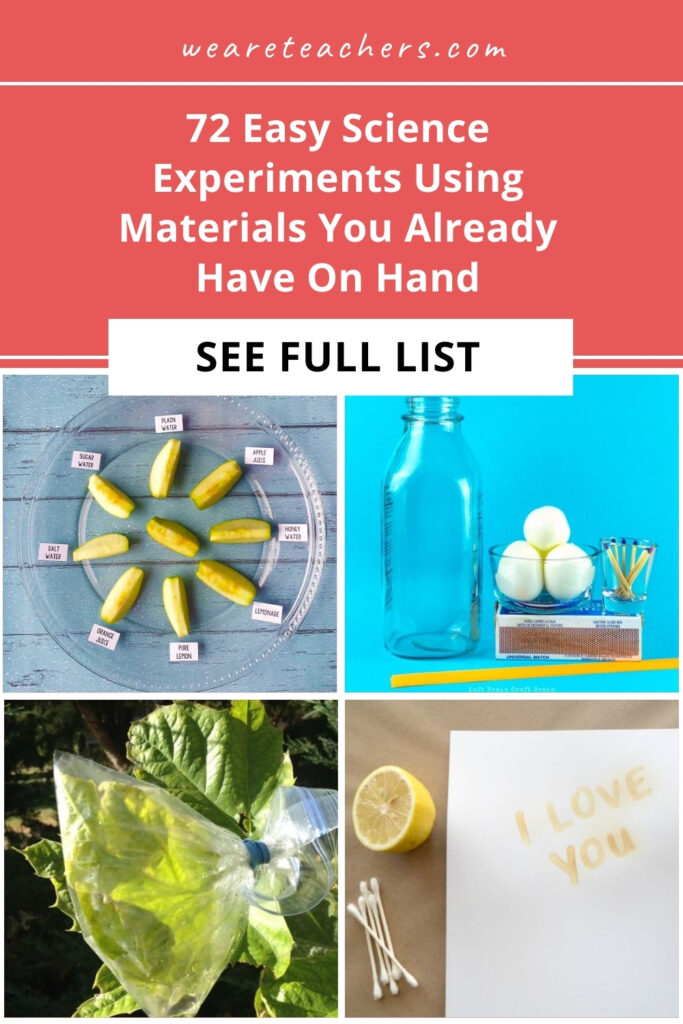
You Might Also Like
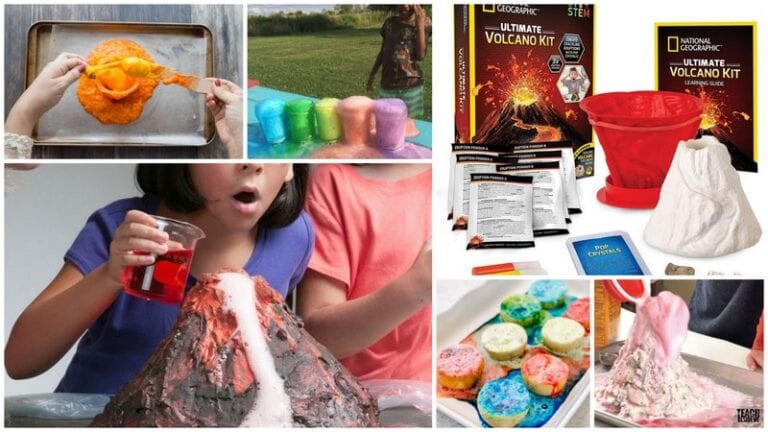
16 Red-Hot Volcano Science Experiments and Kits For Classrooms or Science Fairs
Kids will erupt with excitement! Continue Reading
Copyright © 2024. All rights reserved. 5335 Gate Parkway, Jacksonville, FL 32256

45 of the Best STEM Activities for Toddlers and Preschoolers
Categories STEM
Introducing young kids to STEM is incredibly fun. When I first started looking into STEM for Toddlers and Preschoolers , I was thrilled to see so many easy ways to do it.
If you’re a mom at home or early childhood educators, there are so many benefits to teaching your kids STEM. Use their natural curiosity to develop problem solving skills, and have a great time doing it.

Disclosure: Adult supervision is required for all activities at all times.
Table of Contents
What is stem.
- STEM Activities
- FAQ’s
You May Also Like
Not sure what STEM stands for? It’s an abbreviation of S cience T echnology E ngineering and M ath. Or you may have heard of STEAM, where the A stands for arts. All toddlers (2-3 year olds) and preschoolers (3-5 year olds), can get involved with these amazing ideas.
STEM Activities for Toddlers and Preschoolers
1. magic milk.

All you need for this science activity is some food coloring, milk, and dish soap. With those three ingredients you can watch the colors dance around the milk all by themselves. Learn how to turn regular milk into magic milk here.
2. Coke and Mentos

This was one of the best science experiments I’ve ever done with my kids. The look on their faces is absolutely priceless and has become one of my favorite memories. The only thing I struggled with initially was getting all of the mentos into the bottle fast enough. Fortunately, I came up with an easy hack, which allows toddlers and older kids to drop all of the mentos into the bottle at once. Check out the coke and mentos reaction and learn the super easy hack to make it toddler friendly.
3. Fizzy Painting

This is another science activity that works because of chemical reactions. But in this play idea, you’ll be using it to make a painting that bubbles and fizzes. Learn how to use chemistry to make fizzy art .
4. Straw Rockets

These straw rockets are a free printable that you can download and use for STEM learning. Children of all ages love propelling the rockets through the air using the power of their lungs. Get your free printable rockets and start having fun.
5. Rain in a Jar

All you need for this weather science activity is a cup of water, shaving cream and blue food coloring. Watch as the blue food coloring falls through the clouds and looks like rain when it travels through the water. Learn how to make the rain in a jar STEM activity with your toddlers and preschoolers.
6. Fireworks in a Jar

This is similar to the rain in a jar experiment, but has enough of a twist to make it new and exciting. Along with other easy STEM activities, you already have everything you need for this idea in your kitchen cupboard. If your kids are too scared of real fireworks, then learn how to make them in a jar and still enjoy some colorful bursts.
7. Color Changing Flowers

This is a fun way to explore capillary action with young kids. They get to see how flowers “drink” water and how it travels from the bottom of the stem, all the way up to their petals. Learn how to make flowers change colors , and see it start working in about 30 minutes.
8. Walking Water

Did you know that you can make water move and change colors all by itself? This is another fantastic STEM education activity that explores capillary action. Watch the water ‘walk’ and become a rainbow before your eyes. Click the link to see how it’s done.
9. Balloon Magic

Kids of all ages love watching the balloon in this science activity inflate all by itself , just like magic. With a couple of common household ingredients, your kids can be magicians too.
10. Magnet Exploration

Playing with magnets is the best way to explain the STEM concepts of magnetism. Learn what is magnetic and what isn’t, using whatever bits and bobs you have lying around the house or classroom.
11. DIY Magnetic Ball Run

Learn how to turn regular cardboard tubes into a fun fridge door activity. Younger kids will love doing a bit of engineering while making their own magnetic ball run and learning about gravity.
12. Salt Dough Dinosaur Fossils

This is without a doubt one of my favorite preschool STEM activities. Use the DIY dinosaur fossils to create a real dino dig in the sandbox, or just as a dinosaur matching activity. All you need is some salt dough, and small toy dinosaurs. It’s so easy.
13. Planet Match Activity

Do you have little astronauts running around at home? This matching activity is a simple way to let them explore the solar system. Get the free planet match printable to help teach your kids about outer space.
14. Butterfly Life Cycle

When the weather warms up, and the butterflies are out, this is the perfect chance to explore some Spring themed STEAM activities. Learn about the life cycle of a butterfly , while creating some beautiful art at the same time.
This activity also comes with a free printable template for you to use for the art. In addition, it also contains a whole lot of interesting butterfly facts to use during circle time.
15. How to Grow Crystal Snowflakes

These snowflakes can sit on your window and don’t melt. I love this science activity for older children, because it doesn’t snow where we live. But we still get to enjoy a bit of magic with this play idea.
Learn how to make crystal snowflakes for your windows.
16. Invisible Heart Activity for Kids

The secret behind this science activity is homemade invisible ink. Instead of making secret messages, I made a secret cardiovascular system. You can do individual pictures for kids at home, or large ones that kids in your early years classroom can do as a small group project. Learn how to make an invisible heart science activity , or just write secret messages.
17. Snowstorm in a Jar

If you’re looking for winter themed STEM ideas, make sure to try this snowstorm in a jar. Kids as young as toddlers can join in on this one. Not to mention it’s so much fun to watch no matter how old you are.
Learn how to turn a regular jar into an indoor snowstorm , using a bit of simple science.
18. Building Shapes

This is a fantastic engineering and math activity for children. Toddlers can focus on building 2D shapes, while preschoolers can also explore 3D constructions. I used toothpicks for this activity. However, if you’re going to try this play idea with toddlers, then I suggest you use pipe cleaners or paper straws instead. What 2D and 3D shapes will you build with your kids?
19. Popsicle Stick Shape Mats

Here is another way to build shapes, using craft sticks. These shape mats are a free printable that you can download and use today. Best of all, the craft sticks are the exact size on the mats, so everything fits together seamlessly.
Get your copy of the free craft stick shape mats printable , and do a bit of math with your kids.
20. Farm Animal Shadow Matching Game

This is one of the first simple STEM activities I did with my toddlers. In fact, it’s the exact one I used to get my kids interested in puzzles (they were hopeless before this). It’s such a simple puzzle, but you do need to recognise irregular shapes.
This game comes as a free printable. All you need to do is to match the farm animals to their shadows , and maybe make a few barnyard noises while you do.
21. Parachute STEM Experiment

Can you make one of your toys fly? When we did this activity, we had one very brave cow that got caught in the rose bushes a lot.
This science activity is a simple way to experiment with wind resistance, different materials and parachute designs . Perfect for older kids to make, but still fun for toddlers and preschoolers to play with.
22. Water Cycle STEM for Kids

Did you know that you can make a working indoor water cycle ? One where your kids can taste the difference because it actually turns saltwater into freshwater?
Believe it or not, you can. This STEM idea is a fun way to talk about the weather in a way where kids can get some hands on learning.
23. Car STEM Experiments for Kids

Toddlers and preschoolers love playing with cars and ramps. Use their enthusiasm to learn a bit of rudimentary physics in easy ways. Don’t worry, it really is more simple than it sounds.
What happens when you let cars go down ramps? Kids learn about gravity. What happens when you adjust the ramps or the cars a little bit? Well that’s a whole afternoon of fun experimenting with toy cars .
24. DIY Pirate Ship: STEM Challenge

This engineering challenge is perfect for elementary school children. All you need to do is give them a few basic materials and tell them to build their own boat.
I spent hours as a kid building my own forts in the backyard. Tying the sticks together, and hating when it was not tight enough.
So let your kids build their own ship in the backyard this summer. You’ll have pirates running around all holiday.
25. Sink the Egg STEM Challenge

Simple STEM projects are always a treasure, and this one is no different. What does it take to make the egg sink ? What do you fill it with? What will your kids come up with?
26. Non Newtonian Fluid Science Activity

The non-Newtonian fluid in this play idea is also called Oobleck. Oobleck has the wonderful characteristic of changing form when pressure is applied.
Confused? Basically, when you push down hard on oobleck, it becomes hard and feels solid. But if you let it go and just hold it in your hand, it will flow like a liquid.
Can you imagine what a great time your kids will have playing with this amazing stuff? Learn how to make oobleck here.
27. Snowball Balance

Do you save your large cardboard tubes? Make sure that you do because it’s amazing what you can do with them.
Here you are using the tubes to balance crumpled up paper balls . This is a fantastic activity for toddlers because it’ll help with hand-eye coordination and other fine motor skills as well.
28. Easy Heart Pump Model

How does the heart work? Here you can explore how the heart pumps blood with a working demonstration. How amazing is that?
29. Seed Germination Experiment for Kids

Growing seeds and beans is a science classic for a reason. The kids will learn about how plants grow, where food comes from and hopefully a little bit of healthy eating habits at the same time.
I’ve done this experiment a few times with my kids and they just love looking at how the plants grow more and more each day.
30. Water Transfer Activity with Sponges

Why do sponges hold water? Are they the best option when trying to transfer water from one container to another? Why?
Playing with sponges and water is a great summer time activity, especially if you’re trying to cool down.
31. Exploring Vegetable Seeds

What do you find when you cut open a capsicum (bell pepper)? A whole lot of tiny seeds that are perfect for exploring.
If you got excited about the idea of growing seeds, then imagine how excited your kids will be when they see where seeds come from .
32. DIY Balance Scales

Have you ever thought about using a regular clothes hanger to make a set of scales? Exploring simple machines with your kids can be as easy as this play idea.
This is a fantastic way for kids to explore the concept of weight, and experiment with heavy and light objects . Which side will go down and why?
33. Sink or Float

Here is a science activity that you can try at bath time. What sinks and what floats ? Even toddler age children can explore this STEM concept while they splash around.
34. Static Hair

I definitely saved the best for last. At least I think so because I absolutely LOVED doing this as a child myself.
Why does static electricity make your hair stand up ? You’re going to have a whole lot of fun and giggles while you’re finding out.
35. Floating City STEM Challenge

Your little engineer will love this toddler STEM activity at bath time. All you need to do is get some foam building blocks and put them in the bath. If your kids is a pro at making towers on dry land, see what happens to their creation once the water moves around. Build a floating city and develop problem solving skills at bath time.
36. Make a Book Invitation to Play

Learning about technology isn’t all about screens. Everyday tools like kitchen utensils and office stationary are technology too. In this make a book invitation , younger children can play around with different tools to make their own book.
37. Animal Sorting

Where do the animals belong? This is a super simple science activity that toddlers and even older babies can enjoy. Sort and group (which is a math skills) the different toys by where you can find them. This sorting animals activity is a fun way to explore all of the amazing creatures we find on land, sea or sky.
38. Building Animal Towers

If you’ve got your toy animals out for the previous activity, then keep them around for some more fun STEM activities. Little kids will love trying to build the tallest tower out animals or other different items. Their irregular shapes adds an extra challenge that is fun for the whole family.
39. Free Color Match and Clip Cards

Learning about the different colors is another essential math concept that toddlers can learn. These free printable color match and clip cards will help toddlers with their math and their fine motor skills at the same time.
40. Dinosaur Number Match

This cute dinosaur number match puzzle will get toddlers and preschoolers to practice counting, number recognition, fine motor skills and more. This is a great STEM activity for kids who love anything to do with dinosaurs.
41. Fizzy Heart Bombs

You can use household items to make a chemical reaction that is safe for toddlers and preschoolers to play with. These fizzy heart bombs are a simple experiment that you can use to get kids excited about science.
42. Free Measuring Flowers Activity

Grab your copy of this free measuring flowers activity . This activity will invite children to explore both formal and informal measuring, number formation and various other math concepts.
43. Snowman Shape Puzzles (Free Printable)

Learn about different shapes with these free printable snowman shape puzzles . 2D shapes is a math concept that young children need to learn before they go to school. And these cute little guys are the perfect way to help you.
44. Free Feed the Shark Math Game

Toddlers and preschoolers will have so much fun with this feed the shark math game . This free printable is a simple STEM activity that will get them to practice counting, one-to-one correspondence and even some simple addition.
45. Bauble Balance

Even babies can try their engineering skills with this Christmas themed challenge. Build your own Christmas tree out of pool noodles (or paper towel rolls) and see if you can balance the bauble on top.
Frequently Asked Questions
At what age can you start stem.
You can start exploring STEM with your child from day one. After all, we understand the world around us through STEM. All of our senses, like sound and vision, are all components of science that we experience very early on. As we get older we learn about nature and how the things around us work.
How do you teach a toddler STEM?
The best way to teach STEM is through hands on experience. Play based learning is the best approach when trying to explain concepts to kids. Keep it simple, age appropriate, and allow kids to explore and problem solve by themselves.
Do kids like STEM?
Absolutely. I have yet to meet a child who didn’t have a natural curiosity about the world around them. The key is to make it fun, without any pressure, because that is how they learn best. It’s also a great way to create toddlers and preschoolers who are intrinsically motivated to learn more.
Are you going to try any of these STEM activities for toddlers and preschoolers? Don’t forget to pin the idea for later.

STEM Activities for Kids

Water STEM Activities for kids
Share this:
- Click to share on Facebook (Opens in new window)
- Click to share on Pinterest (Opens in new window)
- Click to share on Twitter (Opens in new window)

50+ Science Experiments for 1-2 Year Olds (Toddlers)
Can you imagine! Teaching little babies’ science has become easy now.
Yes, with the help of science experiments.
I created this page to list down all Science Experiments for Toddlers (in the age group of 1-2).
I know that toddlers crave for attention and their mind is curious to explore everything they come across. Be assured, these are golden period for any kid as 80% of brain development happens below 3 years of growth. This is the right age to introduce science.
Yes, I am not joking and I have done it with my two daughters. We have collected several experiments suitable for kids of age 1 and 2. Here in this article, you will find a brief intro for the experiment and the link where you can find the detailed steps to do the activity.
Spend quality time with kids from their young age, as tender age is the right age for them to grasp things quickly.
We have crafted our toddler section having this in mind. Our activities help develop their motor skills and kindle curiosity about science. We strongly believe some of these activities will be well suited to try at your home with your little buds.
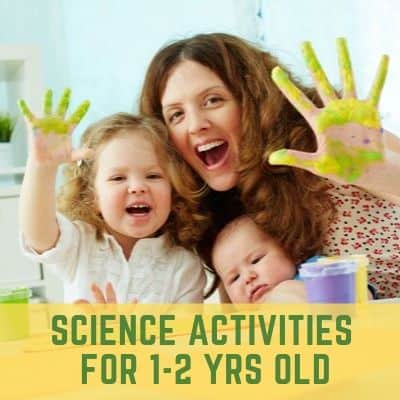
Science Activities for Toddlers (1-2 Year Olds)
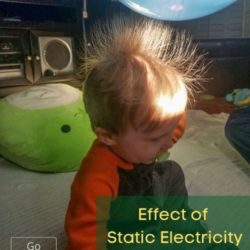
Standing Hair : Static Electricity Experiment With Kids
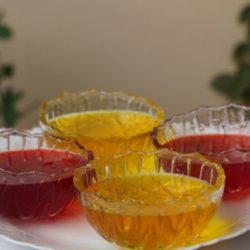
Sensory Play with Jelly (Find out Solid or Liquid)

Questacon (Australia’s National Science and Technology Centre) – Place to Visit With Kids
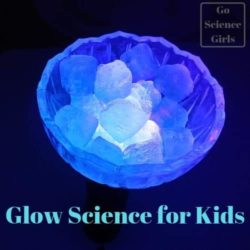
Glow in the Dark Ice Cubes – Sensory, Edible Science Activity
STEM Toys for Girls : 2019 Topmost Toys for Curious Girls
Engineering Toys for Girls : 2019 Ultimate List for Little Geniuses

Wildlife Habitat Port Douglas : Nature Learning for Kids
Safety Glasses – Advantages & Using Guide
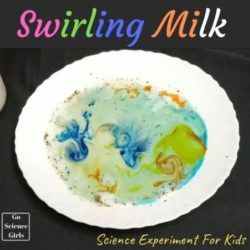
Swirling Milk Experiment (Magic Milk Activity)
Upcycled Catapult – STEM go green DIY Challenge
Static Electricity Balloon and Salt and Pepper Experiment
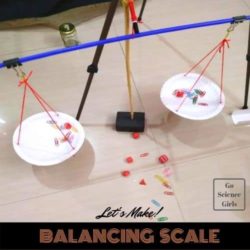
How To Make Balance Scales for Toddlers and Preschoolers
Delightfully Fizzy Sherbet
Looking for Even More Science Activities for Toddlers?
Here is a collection of toddler-friendly ideas that we have collected from across the web:
- Sink or Float – Let us start with a very simple experiment presented by Happy hooligans. Kids can now understand the physics concept of sinking and floating. They will guess by putting different items in water to know if they will sink or float.
- Magnetism – Next comes another fun and easy physics experiment. Busy toddlers site explains this experiment in detail. All you need is a bin with dust and a magnet. Yes, hold the magnet and see which all the magnetic things are.
- Fine motor skills – This experiment will help your toddler work with fine motor skills. Mama Papa Bubba site has explained it in detail. The summary is you need to cut some self-adhesive tapes of different size and stick them on a plate or any surface. Ask kids to remove them. This will improve their fine motor skills. You can also teach them about colors by using different colored tapes.
- Build up a tower – Kids spot has nicely demonstrated the tower building experiment. This can be done with the empty toilet roll at home. You can ask them to build a tower using them. Also, teach them counting with this activity. This will improve their focus as they look at making the tower stand erect.
- Smell and Identify – Mamas happy hive has posted the right way to help kids learn about the smell. They have used a few food items to let kids smell and identify. However, be careful when doing this as the smell should not suffocate small kids. Choose wisely the items and have fun.
- The Penguin Ice Play – A simple exercise to introduce states of matter and how temperature affects it. This play activity provides an opportunity to explore ice and how it melts; thus – helps the kids to learn more about Antarctic and Arctic animals and habitats. Source: Messy Little Monster .
- Dinosaur Ice Melt Experiments – Learn about how to melt ice faster . This could be a follow up experiment or an add on to the previous activity. Best for preschoolers and toddlers. Source: Living Montessori Now.
- Shadow Box – Kids can now learn to color and know about this shadow box from teaching preschool.
- Lunch menu and alphabet – Choose one alphabet and make a lunch using ingredients starting with that alphabet. This will help kids know letters. You can start with the letter in which their name starts. Easy way to teach them letters and food recipes. Source: PBS
- Paint with yogurt – Teach color to kids and a safe way to paint. Yes, no chemicals and with yogurt different flavors your kids can become an artist today. No time for flashcards has demonstrated this well and check them out for details.
- Bubble Experiment – This may be a huge concept for toddlers, but they will love bubbles and you can try this as given in science kids. Note: this can only be seen by kids but do not allow them to touch as the dry ice will affect their skin.
- Color Game – The game posted on the education website will make kids identify colors. Simply collect the things posted in the instruction and get ready to make kids know the rainbow color at the age of 2.
- How to create a Water Bottle Fountain ? The experiment teaches preschoolers about how air takes up room even though it is not visible to our eyes. Source: Learn With Play at Home.
- Hands-on Sink or Float Science Activity – Buggy and Buddy’s one of the fun filled activity for below two year olds. If you are looking for an easy to do experiment that shows immediate result, this one would be best fit. Encourage your kid to make predictions so you can play along to see if your kid is correct.
- Octopus Craft – My bored toddler has presented this creative craft just with empty toilet rolls. You can take help for kids for painting and yes they will mess but will look great to spend such a great time with them.
- Water paint – When you think that kids are too small to deal with toxic colors, then there is an idea posted in my mundane and miraculous life. Here, simply using a paint brush, water, and chalkboard you can make kids paint. Safe but makes little ones creative.
- Ball Drop for toddlers – The motor skills of kids can be enhanced with this activity. Do you know, toddlers love to throw things? But do not worry, as this activity will pave the way to do that without any difficulty. They need a huge tub and ping pong balls. Preferably a watering can help which has a small opening. Source: kitchenfloorcrafts
- Velcro and Pompom – This activity will teach a kid about colors and also help them develop their motor skills by sticking and removing the pompom on the Velcro. Source: teach-me-mommy
- Buggy and Bundy fun paperclip experiment – Kids can have fun with this activity and they can count the clips. Make sure you are around and supervise them so that they don’t put any clip in the mouth.
- Floating egg experiment – Let your kids explore why eggs are floating in water. Teach them about density of things (water and egg) and how it affects floating. Source: There’s Just One Mommy.
- Oobleck 2 ingredient sensory play – Fun little play game for small kids that teaches sensory (touch) for your little ones. This is another activity that explain properties of liquid and solid. Try this cool activity from Messy Little Monster . Optional – add some penguins to make the role-play interesting.
- DIY Frog Pond – Learn how to make a frog pond with this Kiwico step by step instruction. Teach a bit of biology
- Can balloons lift bag? – The mess of less educates you and your little ones that balloon can lift bag. Count the number and blow them
- Ice grows – Ice grow and yes it is possible with this teach preschool frozen ice experiment.
- Flower Science – Teach some botany with these flower science activities. Happily ever mom makes you a happy mom.
- Rainbow and Color – Kids can know the color and activate their sensory brain by following this fun day activity.
- Oral Motor Experiment with Straw – Give exercise to tongue, cheeks and lips and improve oral motor skills of little kids with just house hold items. The experiment is all about lifting light and heavy objects using straw in fun filling way. Source: Mom Explores the Smokies .
- Make Your Own Straw Rockets – A fun and easy kid’s activity that teaches kids to make their own block straw rockets. Little help from adult is needed to stick the straws together.
- Chewing Gum for toddlers? I agree that kids cannot chew gum but they can do this experiment with gums and be around don’t leave them unattended. Get details from meet penny.
- Milk science – Laughing science kids know the kid’s mentality and attracted them with this milk science experiment.
- Colors and melting ice – Artful parent teaches you to be artful too. Try this melting ice experiment.
- Friction Lesson with carrots – Carrots are orange presents you with an easy experiment that will even allow a toddler to know about friction.
- Toothpaste for elephants – Fun home with kids is really fun allowing babies to make toothpaste for elephants.
- Sensory Activity using Magnetic Discovery Bottles – Preschool Inspirations came out with a detailed post on using discovery bottles and its wide variety of uses for kids. The post also can help teach your kids about magnetism and its principles. (We prefer using big sized magnets).
- Explore what melts in the sun ? Perfect experiment for a lazy day on summer. Try out with different products and see. Source: Frugal Fun for Boys and Girls.
- Colored Ants – Life with Moore babies makes ants colorful.
- Sensory activities for babies – 5 simple experiments for toddlers all about sensory activities.
- Leaf rubbing science – Sixth bloom explains in detail about the leaf rubbing science. STEAM experiment.
- Seed science – Pinky Stripey Socks explains very clearly about this STEM activity and its all about seeds.
- Experiment with Straw – Learn about oral motor science from the Mom Explores the Smokies.
- Explore what melts in the sun – Sun produces heat and do you know there are certain things that melt at that temperature. Show them to kids following Frugal Fun for Boys and Girls steps.
- Eggs float too Messy Little Moms do not make any mess but teach toddlers about the egg and its properties.
- Ice melts faster than you think – Living Montessori Now explains about the properties of ice and when they melt faster.
- Magnetism with bottles – Bottles can help you understand magnetism. Preschool inspirations teach you the tactics.
- Fizzy lemonade – Lemonade foaming experiment makes kids enjoy with the fizzing sound. Source: Learn with Play at Home
- Straw Rockets – Housing A Forest launches a rocket with straw.
- Sensory activity for kids –Messy Little Monster makes penguins dance and you can teach a kid about the sensory activity.
- Water Bottle Fountain – We had seen magnetism with a water bottle and its time to make a fountain with a water bottle. Source: Learn With Play at Home.
- Ice cream recipe – Making ice cream in a plastic bag is simple and easy with Science bob experiment.
- Water Science – Water walks and that’s a wow experiment for kids presented by coffee cups and crayons.
- Crystallization made simple with kids – Follow Wiki to grow rock candy just in a glass at home.
- Microwave Ivory soap – Source: Stevespanglerscience. Cook soap in the microwave to see what happens.
- Bean in a cup – Now bean can be grown at home to show the roots to kids and this great activity is explained in Science Sparks.
- Freezing bubbles – Bubbles freeze kids can touch and feel. Best winter experiment. Source: Mommy Poppins
- Ink made invisible – Just use lemon and make ink that goes invisible. Science Kids experiment.
- Balls, shapes, and bounce – Make your own ball in any shape and see them how they bounce. Source: Come together, kids.
- The parachute that flies high – With a plastic bag it is now possible to make a parachute.
- Coin and Surface tension – Put water droplets on coins to explain surface tension to kids. Do it in the science kiddo way.
- Make your own fizzy lemonade – Another fun filled science activity for a hot summer day. Cool yourself with your own lemonade. This is Taste-safe activity that your kids will enjoy making and drinking. Source: Learn with Play at Home.
I am glad to give you so many science experiments that you can teach toddlers. Don’t think these are a high standard for kids. You will be amazed to see their grasping power at this young age. Try and share your experience.
Well, if you are in activity spree and looking for more science ideas for toddlers?
Most of the activities we try are taste-safe (non toxic and no hazards). If you have a grown up kid – try our Science for 3-4 Year Olds page for ideas on experiments that doesn’t have any mouthing things. We keep our experiments open-ended; that means you can create variations of these activities to suit your kid’s age or personal favorite.
Though we encourage kids to try these activities independently, we request you to have a constant supervision i.e. be with the kid when they try these activities. Only parents will know what activity will suit their kids (based on age group or interest). Check for more information here .
Get Your ALL ACCESS Shop Pass here →

Science Activities for Toddlers
Even toddlers have the capacity and desire to learn science, and the following science experiments for 2 to 3 year olds help you do just that! These fun science activities for toddlers provide opportunity to explore the natural world, learn through sensory play, observe simple chemical reactions and much more!
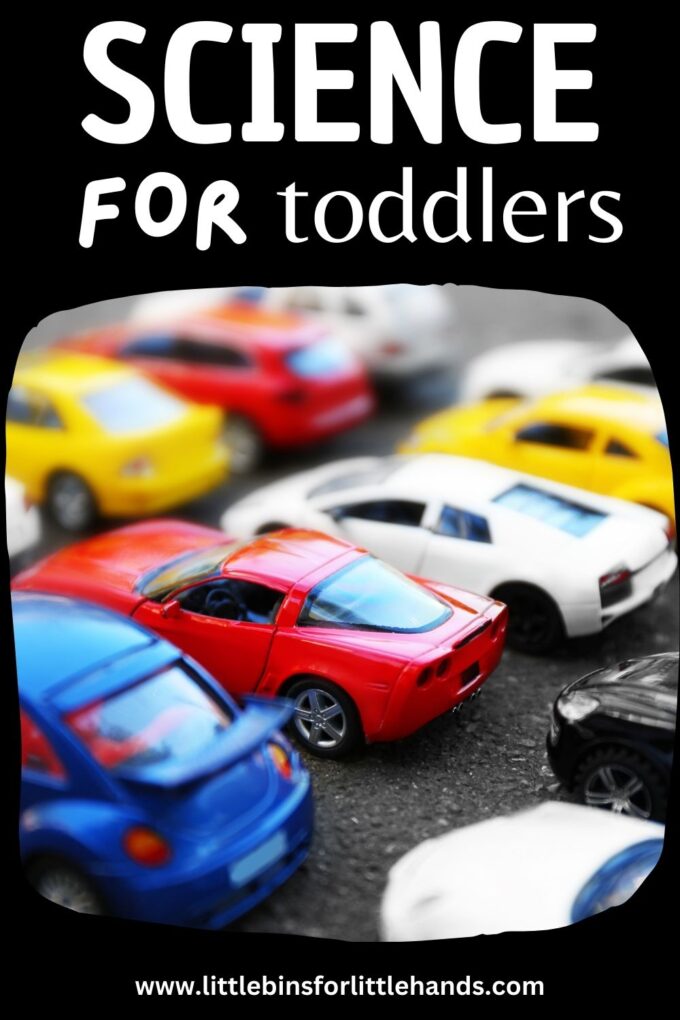
Science for 2 Year Olds
Two to three year olds will enjoy these easy science experiments that don’t require much prep, planning, or supplies. The simpler you keep it, the more fun your little scientist will have exploring!
For more easy science projects for younger kiddos, check out…
- Toddler STEM Activities
- Preschool Science Experiments
Make Observations with 5 Senses
Many of these toddler science activities below will seem more like play than learning. Truly, the best way to teach your two year old science is through play!
Encourage them to use their senses whenever possible! Make observations with the 5 senses including sight, sound, touch, smell, and sometimes even taste.
Ask Questions
Have lots of conversation with your toddler and ask questions throughout the process. Acknowledge what they have to say about the activity and try not to overcomplicate the conversation.
Ask open-ended questions without telling them what to say.
- What does it feel like? (Help name some different textures)
- What do you see happening? (Colors, bubbles, swirls, etc)
- Do you think it will…?
- What would happen if…?
This is a great introduction to the scientific method for kids!
How To Choose Science Activities
Choose a simple science activity to fit the day! Maybe you need something very playful with lots of moving around. Or maybe you want to make a snack or bake together.
Maybe the day calls for setting up a science activity you can look at over several days, and talk about together.
When introducing science to young kids, adjusting your expectations is essential…
First, keep it quick and basic with as few ingredients and steps as possible.
Second, prep some of the materials beforehand and call your kiddo over when you are ready, so they don’t have to wait and potentially lose interest.
Third, let them explore without too much guidance. When they’re done, they’re done, even if it’s five minutes. Just keep it fun!
I will share my favorite science experiments for toddlers below! Plus, I’ve grouped them into different sections: Playful, Make Together, and Observe. Pick one based on what the day feels like to you.
You’ll also find a link to even more preschool science experiments here if you’re kiddo is soaking up all the science and learning!
Playful Science Experiments
Bubble play.
Bubbles are science! Make a batch of homemade bubble mixture and having fun playing with bubbles. Or even try one of our fun bubble experiments !
Chick Pea Foam
Foamy fun! Make up some taste safe sensory play foam with ingredients you probably already have in the kitchen.
Frozen Dinosaur Eggs
Ice melting is so much fun for kids and these frozen dinosaur eggs are perfect for your dinosaur loving toddler.
Frozen Flowers
A fun 3 in 1 flower activity for little ones, including a flower ice melt and water sensory bin.
Fizzing Dinosaur Eggs
Make up some baking soda dinosaur eggs that kids will love hatching out with a simple chemical reaction.
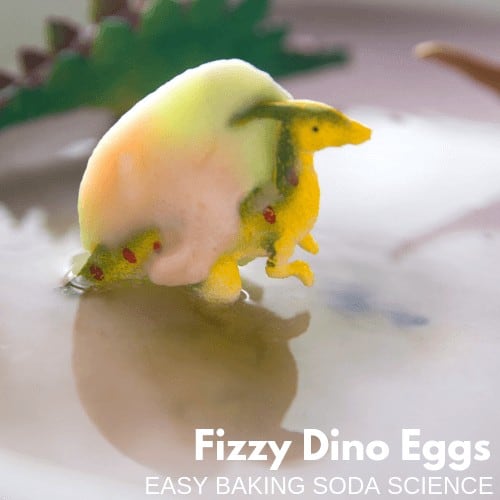
Fizzing Sidewalk Paint
Get outdoors, paint pictures, and enjoy a kid-favorite fizzing chemical reaction.
Marshmallow Slime
One of our most popular edible slime recipes . Playful sensory science that’s ok for kids to take a nibble or two of.
Make up a fun space theme sensory bin with homemade moon sand or space sand as we like to call it.
Ocean Sensory Bin
Set up a simple ocean sensory bin that is science too!
Just two ingredients, cornstarch and water, makes for an amazing play experience. Great for talking about liquids and solids!
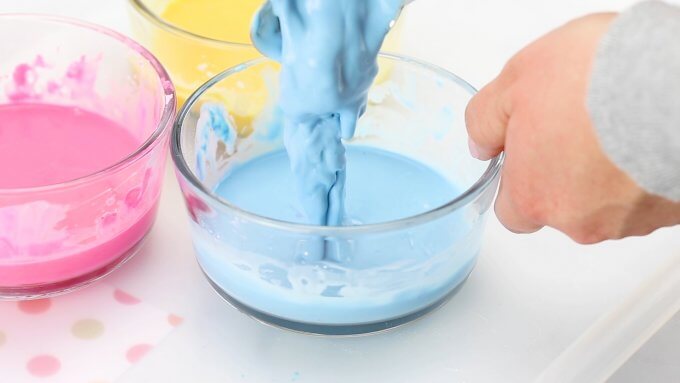
Rainbow In A Bag
Introduce the colors of the rainbow with this fun mess free rainbow in a bag painting idea.
Set up some simple ramps for playful science. See how we used it for our Easter egg races and also pumpkin rolling .
Sink or Float
Grab some toys or other items from around the house, and find out what sinks or floats in water.
There are so many fun ways to put together a baking soda and vinegar erupting volcano. Try a Lego volcano , watermelon volcano and even a sandbox volcano !
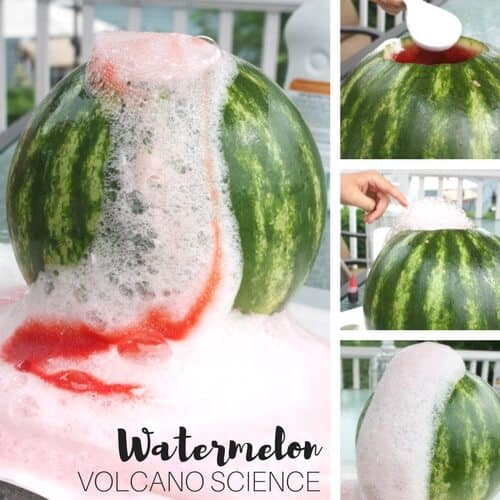
Water Xylophone
Kids love to make noises and sounds, which is all part of science. This water xylophone sound science experiment is truly a must do science activity for young kids.
What Absorbs
Water activities are so easy to set up and perfect for young kids to play and learn with science. Learn about absorption as you investigate what materials absorb water.
Science You Can Make
Edible butterfly.
Keep it simple and use candy to make an edible butterfly, one part of the lifecycle. You could also do this with homemade playdough.
Nature Paint Brushes
You will need to help with this one! But what you can find in nature that you can turn into paint brushes?
Nature Sensory Bottles
Go for a walk around your backyard to collect things from nature for these simple sensory bottles.
Turn corn kernels into yummy homemade popcorn with our easy popcorn in a bag recipe.
What’s Magnetic?
Make up your own magnet sensory bottle from items around the house and explore what is magnetic and what isn’t. You could also set up a magnet discovery table !
Science Activities To Observe
Apple 5 senses.
Set up a simple version of our apple 5 senses activity. Cut up some different types of apples and notice the color of the apple, what it smells like and which one tastes the best.
Celery Food Coloring Experiment
Add a stalk of celery to water with food coloring and watch what happens!
Color Changing Flowers
Grab some white carnations and watch them change color.
Dancing Corn
This bubbling corn experiment appears almost magical but it really just uses baking soda and vinegar for a classic chemical reaction.
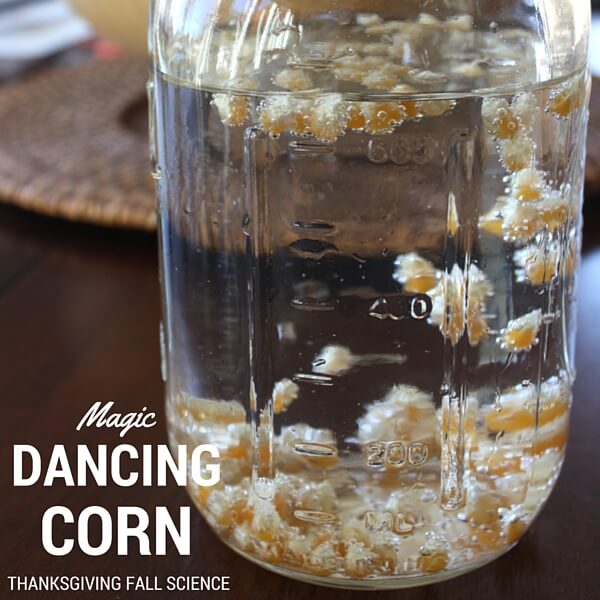
Growing Flowers
Check our list of easy flowers to grow, especially for little hands.
A homemade lava lamp experiment is one of our favorite science experiments for kids.
While the science concepts may be beyond them, this science experiment for toddlers will still engage them. Simple to set up from common kitchen ingredients and fun to watch!
Re-grow Lettuce
Do you know you can grow a cut head of lettuce? This is a fun science activity to observe as your lettuce grows.
Seed Germination Experiment
Watching seeds grow is amazing science for kids! With a seed jar you can see what happens to seeds underground.
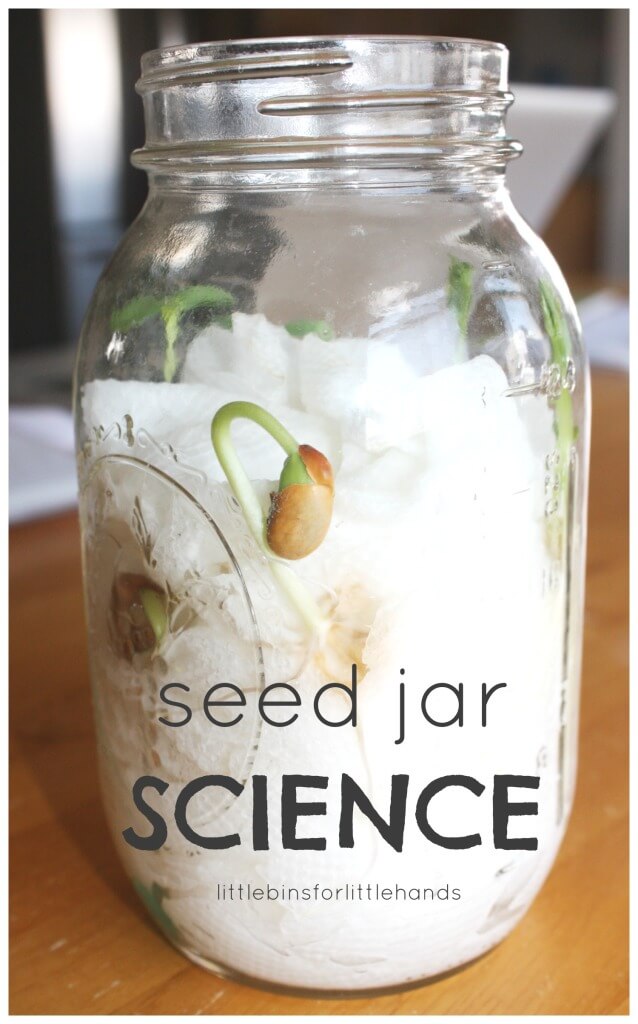
More Helpful Resources
If you found your toddler loves a certain type of activity, click on the links to find lots of additional ideas.
- Favorite Science Picture Books
- Building Toys For Toddlers
- STEM Activities For Toddlers
- All About Sensory Bins
- 21 Sensory Bottle Ideas
- Board Games For Toddlers
- 5 Senses Activities
- Dinosaur Activities
- Ice Play Activities
- Baking Soda and Vinegar Experiments
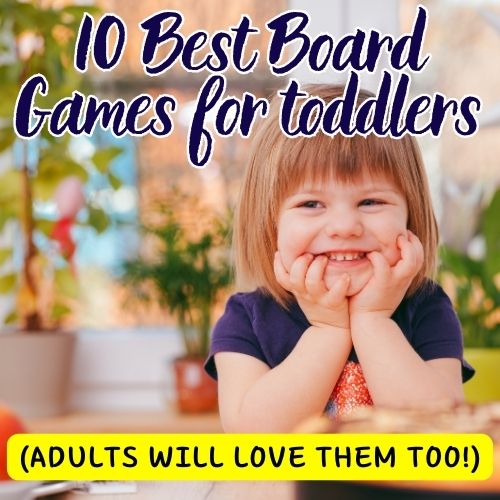
Science Activities By Age Group
- Science for Preschoolers
- Science for Kindergarten
- Elementary Science by Season
- Science for 1st Grade
- Science for 2nd Grade
- Science for 3rd Grade
- Science for 4th Grade
- Science for 6th Grade
- Science for Middle School
Printable Preschool Pack
Get ready to explore this year with our growing Preschool STEM Bundle ! Or grab the individual packs.
What’s Included:
There are 12 fun preschool themes to get you started. This is an ” I can explore” series! You’ll find both seasonal and non-seasonal themes appropriate to preschool learning throughout the year.
Each unit contains approximately 15 activities, with instructions and templates as needed. Hands-on activities are provided to keep it fun and exciting. This includes sensory bins, experiments, games, and more! Easy supplies keep it low-cost, and book suggestions add learning time.
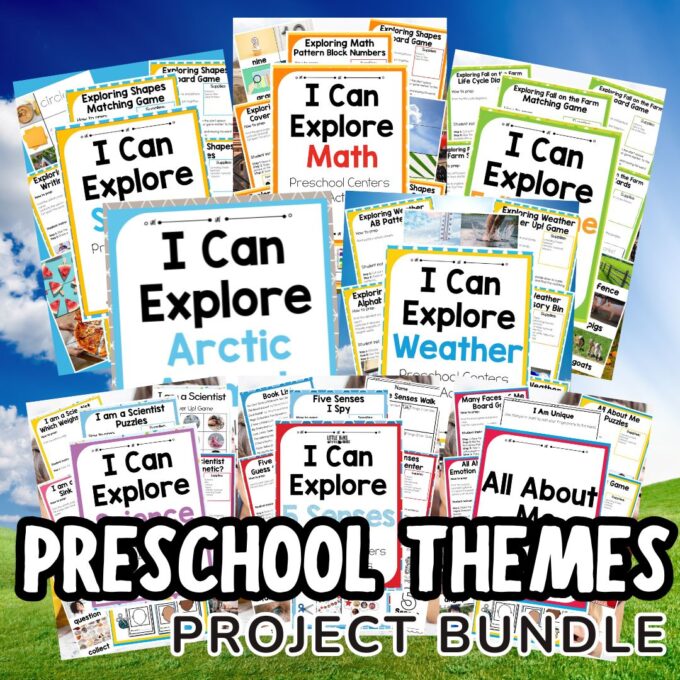
Subscribe to receive a free 5-Day STEM Challenge Guide
~ projects to try now ~.

- Skip to primary navigation
- Skip to main content
- Skip to primary sidebar
- MEMBER LOGIN
Hands On As We Grow®
Hands on kids activities for hands on moms. Focusing on kids activities perfect for toddlers and preschoolers.
50 Amazingly Simple Science Experiments for Kids at Home
Science Kindergartners Preschoolers Experiment Resources 30 Comments
Kids love experimenting , and these 50 simple science experiments for kids at home from Brigitte are perfect for all ages! Plus, you probably already have the basic supplies at home.
My daughters and I have had a lot of fun doing science experiments. Each year when we create our spring and summer list , we make sure to include “science days” which are days filled with science experiments.
Sometimes our science experiments don’t work according to plan, but I have been told that all scientists have failures with experiments from time to time.
It’s okay if they aren’t all successes.
Get the FREE Science Experiments Download
50 Simple Science Experiments with Supplies You Already Have
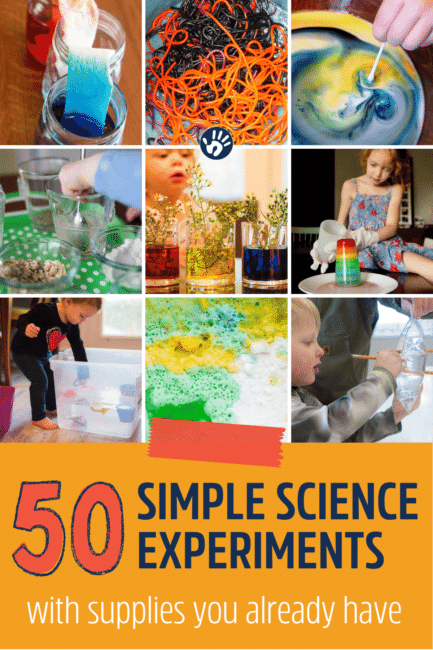
I love these 50 simple science experiments for you to try with your little scientists. They all use basic household supplies that you probably already have at home!
Most of these are experiments my daughters and I have done together. I hope you enjoy them as much as we have!
Get little ones involved with these easy toddler-friendly science experiment ideas!
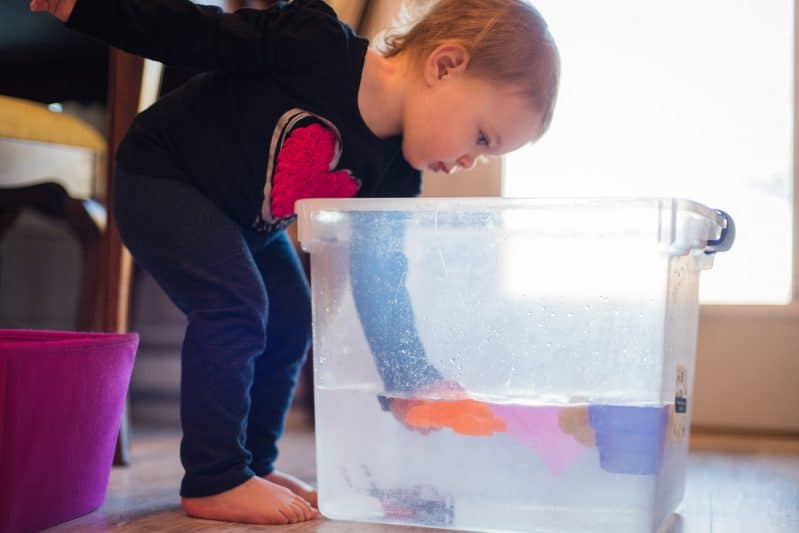
Simple Science Experiments with Water
Not only can water be a blast to play in, but water plus a few basic supplies equals a lot of science fun!
- Make an orange sink and float with an orange buoyancy experiment from Playdough to Plato.
- Compare the amount of salt in different types of water with this salty egg experiment as seen on Uplifting Mayhem.
- Do a little more sinking or floating with a fun sink or float experiment even toddlers can do from Hands On As We Grow.
- Use the free printable to record what sinks or floats in an outdoor experiment from Buggy and Buddy.
- Create some beautiful pieces of paper with this rainbow paper experiment from Science Kiddo.
- Talk about solutions as you try the “what dissolves in water” experiment as seen on Hands On As We Grow.
- Learn about water absorption with this simple experiment from Little Bins for Little Hands.
- Mix some fun colors with this oil and water experiment from Fun Learning for Kids.
- Make your own lava lamp , just like on Hands On As We Grow.
- Can you keep all the water in the bag? Try it with a leak-proof bag experiment as seen on Hands On As We Grow.
- Learn about surface tension with this magic finger pepper experiment found on Hands On As We Grow.
- Make your own water cycle in a bottle as seen on A Dab of Glue Will Do.
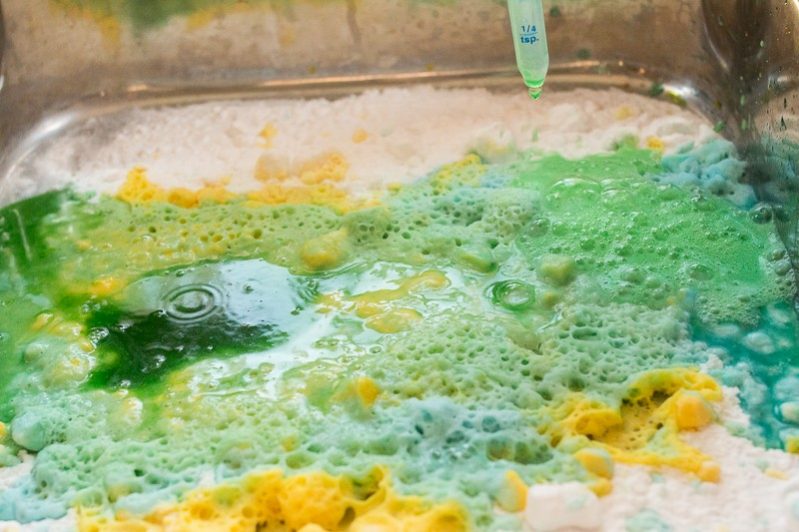
Simple Science Experiments with Baking Soda and Vinegar
Baking soda + vinegar = a great chemical reaction! This fizzy reaction can fuel a variety of simple science experiments at home.
First of all, we have tested and found out the absolute best combination of baking soda and vinegar to get the best reaction possible. It makes a difference if you add vinegar to baking soda or vice versa! And how much you use!
- Inflate a balloon without blowing into it with a baking soda and vinegar balloon experiment as seen on Little Bins for Little Hands.
- Practice colors as you do a baking soda and vinegar with color experiment as seen on Hands On As We Grow.
- Have fun outside with an outdoor volcano eruption as seen on Preschool Inspirations.
- Have more volcano fun by making apple volcanoes as seen on The Resourceful Mama.
- Learn about acids and bases and the chemical reaction that occurs when you make apple seeds dance with a jumping apple seeds experiment as seen on JDaniel4s Mom.
- Watch some rice dance with a dancing rice experiment as seen on Green Kid Crafts.
- Continue your dance party by making raisins dance with a dancing raisin experiment as seen on 123 Homeschool 4 Me. What other items can you get to dance?
- Learn more about acids and bases by dissolving a sea shell as seen on Teach Beside Me.
- Make an egg shell disappear with this disappearing egg activity as seen on Premeditated Leftovers.
- See how far you can launch a soda bottle with this baking soda powered boat as seen on Science Sparks.
- Make your own rocks (or eggs) with this fizzy treasure rocks experiment as seen on Living Life and Learning.
- Have some fun this summer with this frozen vinegar experiment as seen on Inspiration Laboratories.
Plant Themed Simple Science Experiments
Enjoy learning about seeds, plant parts, and how plants grow with these simple science experiments.
- Learn about how plants soak up water through their stems with a flower experiment for kids from Growing A Jeweled Rose.
- Watch seeds sprout as you grow seeds in a jar as seen on Teaching Mama.
- Learn about the parts of the seed with a seed coat experiment as seen on Gift of Curiosity.
- Build a house out of sponges and then watch it sprout with this sprout house as seen on The Stem Laboratory.
- Learn what liquids allow seeds to grow the best with this seed experiment as seen on Gift of Curiosity.
- Explore how plants grow towards the light with this shoe-box maze experiment from Plants for Kids.
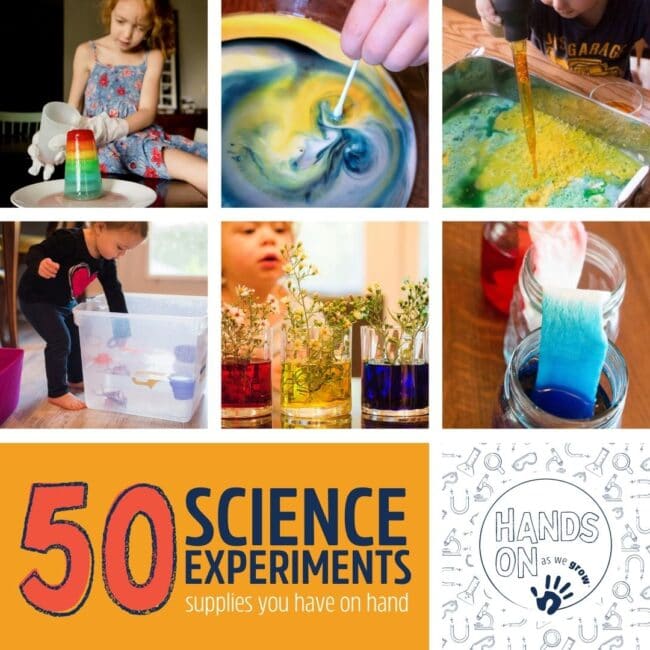
Animal Themed Simple Science Experiments
Learning about animals can be even more fun with some simple hands-on simple science experiments.
- Find out more about giraffes and create some giraffe spots as seen on Preschool Powol Packets.
- Learn about how animals in the Arctic keep warm by making an arctic glove as seen on Steve Spangler Science.
- Discover how penguins stay dry with a penguin feather experiment as seen on Raising Little Superheroes.
- Learn about different bird beaks with a bird beak experiment as seen on Blessed Beyond a Doubt.
- Explore how fish (and hermit crabs) breathe with this gill experiment as seen on Preschool Powol Packets.
- Learn about sharks with a shark buoyancy experiment as seen on Little Bins for Little Hands.
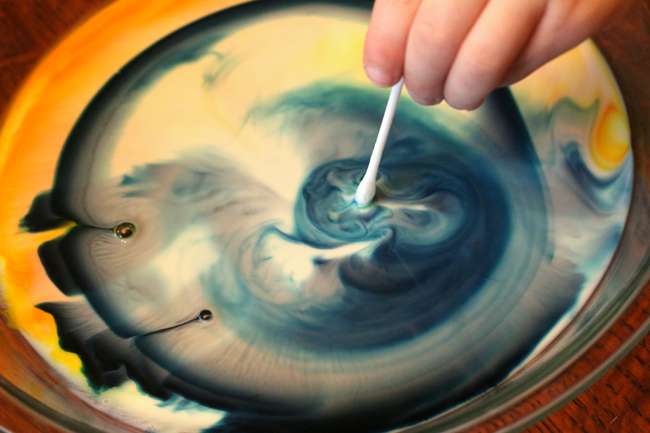
Even More Simple Science Experiment for Kids at Home!
If you are still looking for more science fun, you may enjoy the following simple science experiments.
- Find out how sugary drinks hurt teeth with an eggs-periment as seen on Feels Like Home Blog.
- Discover geodes (the state rock of Iowa) with this eggshell geode crystal experiment as seen on Science Bob.
- Learn about air pressure with an egg and bottle experiment as seen on Science Sparks.
- Find out what causes an apple to brown with this apple science experiment as seen on Teach Beside Me.
- Make an edible bubble apple with an experiment as seen on Preschool Powol Packet.
- Learn more about surface tension with a penny and water experiment as seen on Artful Parent.
- Mix colors like magic with this color changing milk experiment from Hands On As We Grow.
- Blow up a balloon with this soda and balloon experiment from Learn Play Imagine.
- Practice letters by making beautiful crystal letters as seen on Books and Giggles.
- Make your own indoor hovercraft as seen on Living Life and Learning.
- Learn about colors with this beautiful butterfly chromatography craft as seen on Buggy and Buddy.
- Make soap souffle as seen on Steve Spangler Science.
- After talking about liquids and solids (and finding them in your own home), create oobleck as seen on Babble Dabble Do. Is it a liquid, or is it a solid?
- Learn about frost by making some indoor frost as seen on Little Bin for Little Hands.
- Make your own homemade butter in a jar as seen on Happy Hooligans.
What scientific experiment will you try first?

About Brigitte Brulz
Brigitte Brulz is a homeschooling mom of two daughters, wife of her high school sweetheart, and author of Jobs of a Preschooler and Pickles, Pickles, I Like Pickles. She offers free coloring pages and activity ideas on her website at BrigitteBrulz.com .
More Hands on Kids Activities to Try
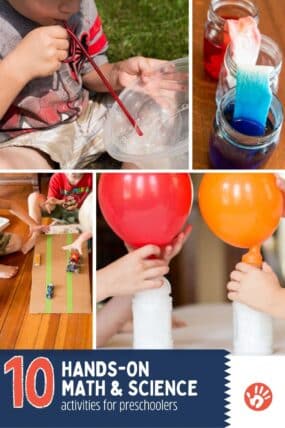
Reader Interactions
30 comments.
college brawl says
March 13, 2024 at 1:05 am
Wow, these experiments look like so much fun! I can’t wait to try them out with my kids. We’re always looking for new and creative ways to learn about science at home, and these experiments look like they’ll be perfect for us. Thanks for sharing! 😊
threadsBay says
August 31, 2023 at 3:13 am
I love science experiments! This one is really simple and easy to do.
Leave a Comment Cancel reply
Your email address will not be published. Required fields are marked *
This site uses Akismet to reduce spam. Learn how your comment data is processed .

What Parents Have to Say…
Shop ebooks of activities.

Get activity plans delivered to your inbox, every week!
Activities that hands-on parents absolutely love.
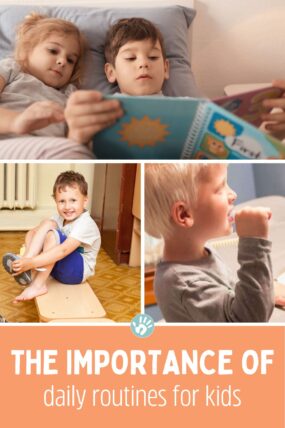
Why Routines for Kids are Important

Top Physical Activities for Toddlers! Mom, Embrace the Energy!

Improve Kids Fine Motor Skills with 30 Materials & Activities
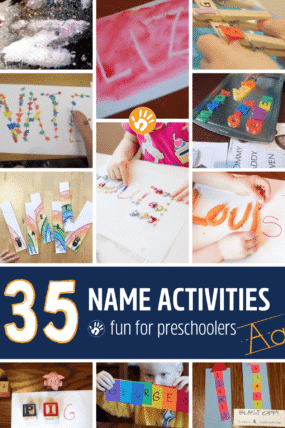
35 Name Activities For Preschoolers
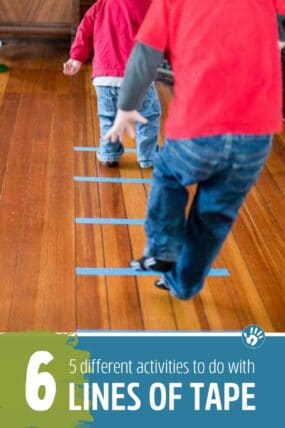
6 Different Activities for 6 Lines of Tape

30+ Scavenger Hunt Ideas for Kids To Do at Any Age
Get started having fun with your kids.
PLAN THE FUN WITH THE FREE KIDS ACTIVITIES PLANNER! AND RECEIVE ACTIVITIES EVERY WEEK!

- Preschoolers
- Kindergartners
- Grade School
- Literacy & ABCs
- Math & 123s
- Art Projects
- Gross Motor
- Shop Activity Plans
- Member Login

Easy Science Experiments for Kids
Looking for some easy experiments to do with the kids? We’ve got you covered with all of our favourite, easy science experiments for kids. The best part about all of these ideas is that they may be simple, but the lessons are powerful! Plus they can be adapted for a wide variety of ages and learning environments.
100+ Genius Easy Science Experiments for Kids
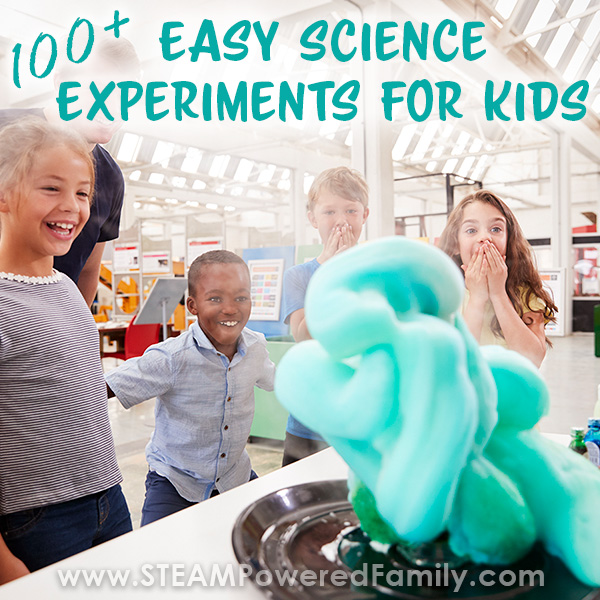
Disclaimer: This article may contain commission or affiliate links. As an Amazon Influencer I earn from qualifying purchases. Not seeing our videos? Turn off any adblockers to ensure our video feed can be seen. Or visit our YouTube channel to see if the video has been uploaded there. We are slowly uploading our archives. Thanks!
Fun Science Experiments
First let’s kick things off with a list of easy science experiments for kids that we have done many times over and are a favourite of STEAM Powered Family readers around the world. Almost all of these projects use common household items and are tested by kids and teachers. We have science experiments for all ages, from preschool to middle school, even adults love to do these. The best part is that you can use these ideas to help students gain comfort and eventually mastery of the Scientific Method . This list is also a fantastic place to find ideas for your science fair projects.
Baking Soda and Vinegar Experiments
It is incredible the number of cool science experiments you can create from this one simple chemical reaction between Baking Soda and Vinegar . This endothermic reaction, is a classic acid and base chemical reaction.
Here is the chemical formula of this reaction
C 2 H 4 O 2 + NaHCO 3 -> NaC 2 H 3 O 2 + H 2 O + CO 2 vinegar + sodium bicarbonate -> sodium acetate + water + carbon dioxide
Some of our favourite baking soda and vinegar science activities of all time include Bottle Rockets , Fireworks Experiment , Baking Soda Oobleck , and Hatching Dinosaur Eggs . No matter which one you pick, you must try at least one vinegar and baking soda experiment when little scientists are first learning about chemistry.
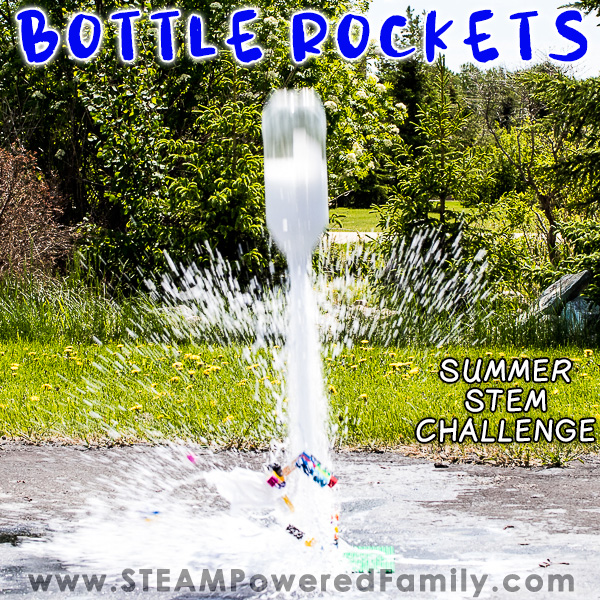
Balloon Races – Physics Science Experiment
This fast paced, exciting science experiment explores the principles of physics and Newton’s Laws of Motion. It is so simple, kids won’t believe how much they are learning while having fun! Balloon Races make a fantastic activity for the classroom, camp, after school program or at home when the kids need to burn off some energy while learning!
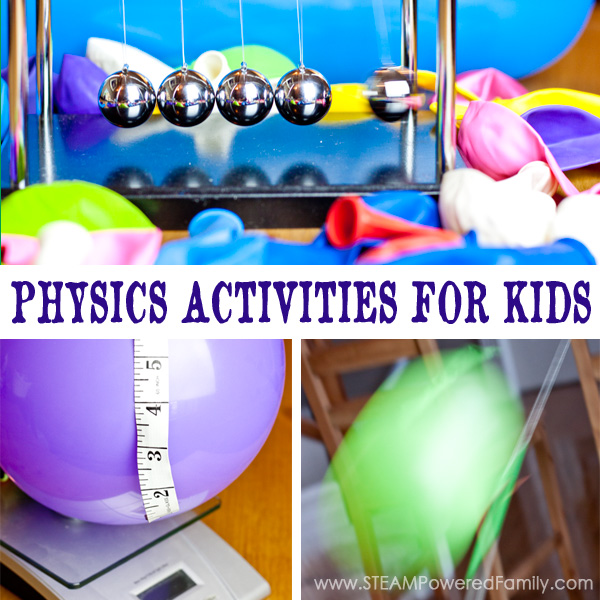
Build a Compass – A Magnetism Science Experiment
Did you know it is actually very easy to build a compass ? All you need is a bowl of water, a needle and a cork! Have your children explore the same magnetic forces that inspired Einstein as a child in this fun science experiment.
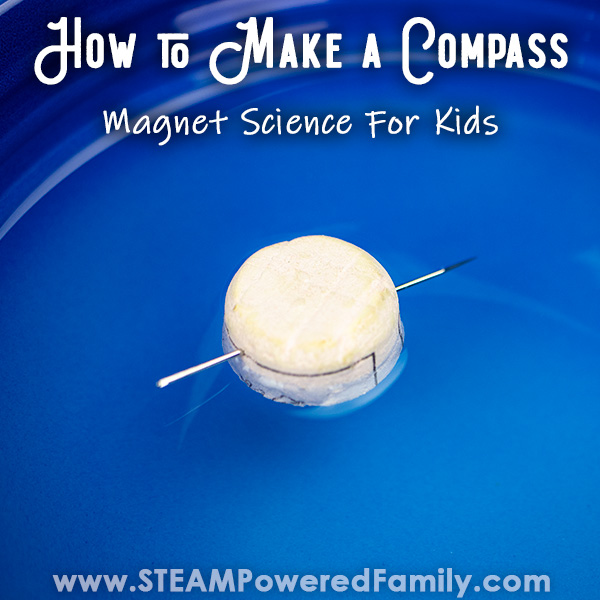
Lollipop Layers Density Experiment
Density is such a fun phenomenon to explore, and in this version of a density experiment we are using candy! Lollipop layers is so simple, all you need is a bunch of lollipops or hard candies, water, and a patient hand. The result… GORGEOUS!

Greenhouse Effect Science Experiment
Climate change experiments are so important for helping foster a deep understanding in our students. In this Greenhouse Effect Science Experiment we learn how gas are changing the atmosphere and affecting global temperatures.
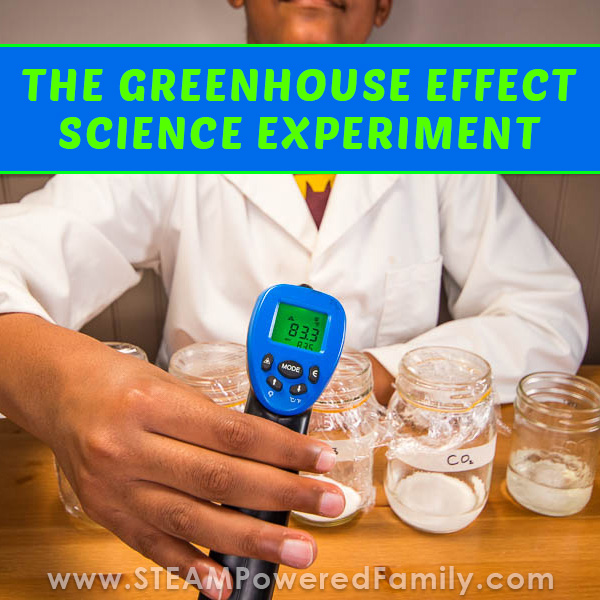
Volcano Experiment
A classic science project for kids, making a volcano can be as simple or as complex as you want to make it. The goal of the exercise, a big, bubbly reaction that is sure to WOW students. Here are some of our favourite Volcano Experiments we have done.
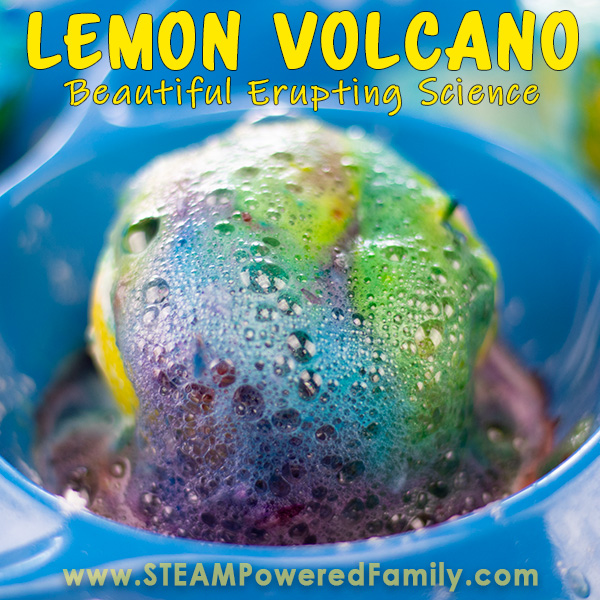
Have you ever made a Lava Lamp at home? This sensory science experiment is mesmerizing! Watching those bubbles bounce and dance and play is sure to capture students of all ages. Best of all, we have 5 different ways you can make a Lava Lamp (including the old favourite with alka seltzer), so no matter what supplies you have available, we have a Lava Lamp experiment you can do.
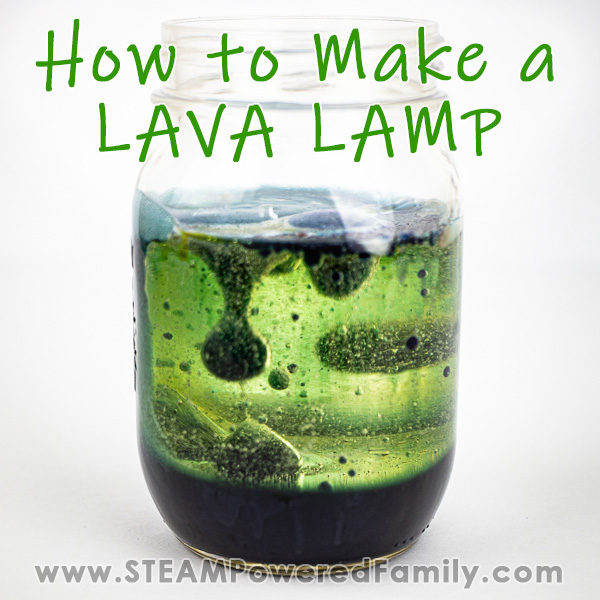
Make Milk Plastic
While teaching elementary science I was always on the hunt for cool science experiments that would impress my kids and really stretch their interests and foster their curiosity. One of the biggest hits of all time was a surprisingly simple experiment, that we never really considered as possible… making plastics. Specifically making bioplastics out of milk . With this concept you can create a lesson that is a powerful way to explore polymers with kids. This easy science experiment is a sure fire hit with students and gives them a wonderful keepsake of their studies.
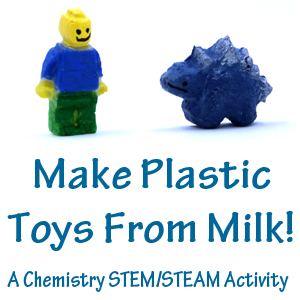
Bouncy Naked Egg in Vinegar Experiment
Have you ever tried to shell a raw egg? Impossible you say? Challenge your hypothesis in this egg in vinegar science experiment ! Not only will you remove the shell from a raw egg, but the result is a bouncy, rubbery, raw egg. An incredibly simple science experiment, it can also be used to teach higher level concepts in osmosis and biology for students learning about the parts of the cell.
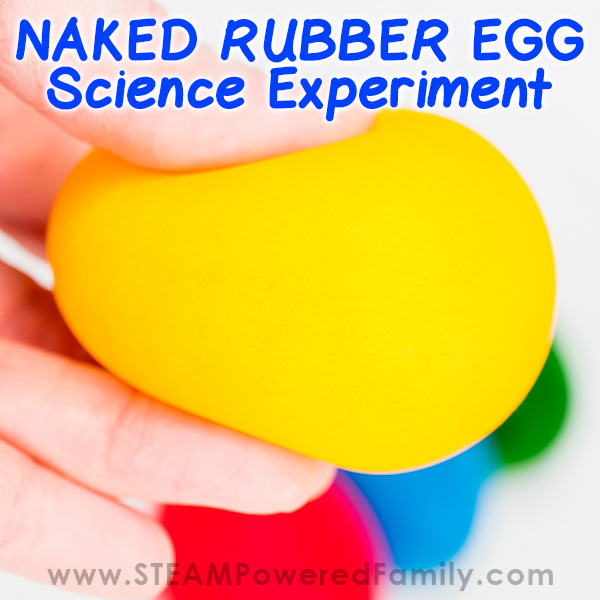
Making Water Rise Experiment Magic
When we did this water experiment the kids jaws hit the floor! It is so simple, but the results shock the kids. This is one very easy science experiment that is also incredibly memorable. It teaches the science of creating a vacuum in a very simple approach with just a jar, water and a candle. Learn how to make water rise and wow your students!
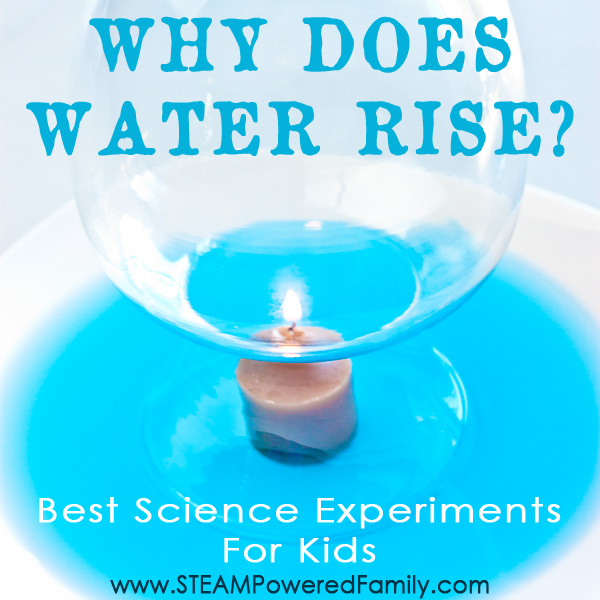
Elephant Toothpaste
You have probably seen the Elephant Toothpaste Science Experiment done on TV or at the Science Center where they create a massive gusher that goes many feet into the air, but did you know there is a very simple and easy way you can do this experiment yourself with items you already have available? This classic science experiment is one every student should experience.
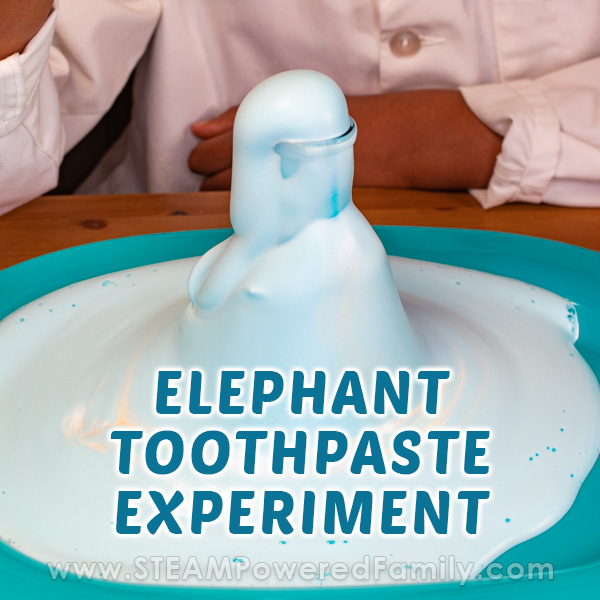
Frozen Bubbles
If you live where it gets well below freezing, one of our favourite winter science experiments is to freeze bubbles . There are some specific science principles you need to understand to ensure this experiment is a beautiful success!
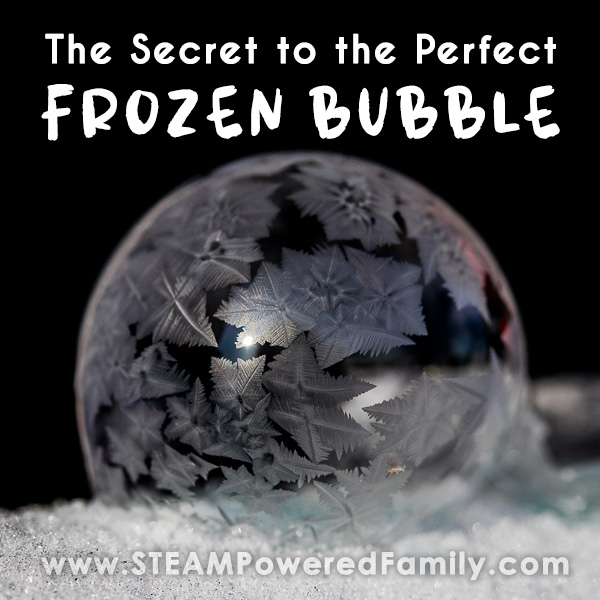
Growing Crystals
As a crystal lover and passionate family of rock hounds, the idea of growing crystals is something that we love! Over the years we have found all the ways to simplify and perfect the process so you can easily grow gorgeous crystals and learn the science behind crystallization. We have made crystals from borax, alum and sugar. We even have edible crystals called Rock Candy … yum!!
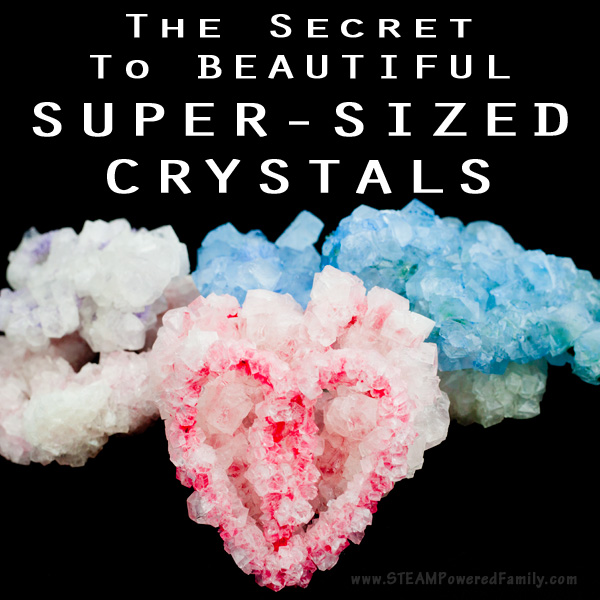
Explore Surface Tension with Glitter (or Pepper) and Soap
Surface tension is the focus of this simple science experiment that provides a powerful demonstration of the effect soap has on surface tension. Do this easy experiment, all you need is a plate, water, glitter or pepper and dish soap. Such an easy science experiment for kids!
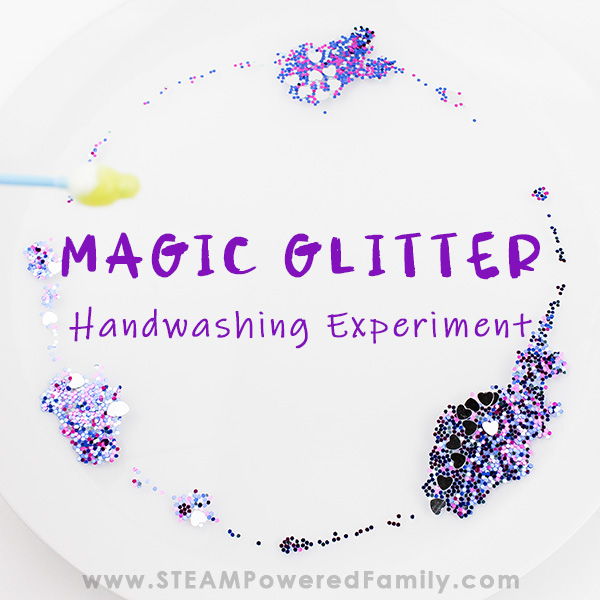
Bottle Crush – Simple Heat Transfer Experiment
Got a soda pop bottle, some hot water and a cold winter day (or a bucket of ice)? Then you have all the makings of a cool science experiment! This this Bottle Crush science experiment , kids feel like all powerful magicians as they crush plastic bottles without touching them.
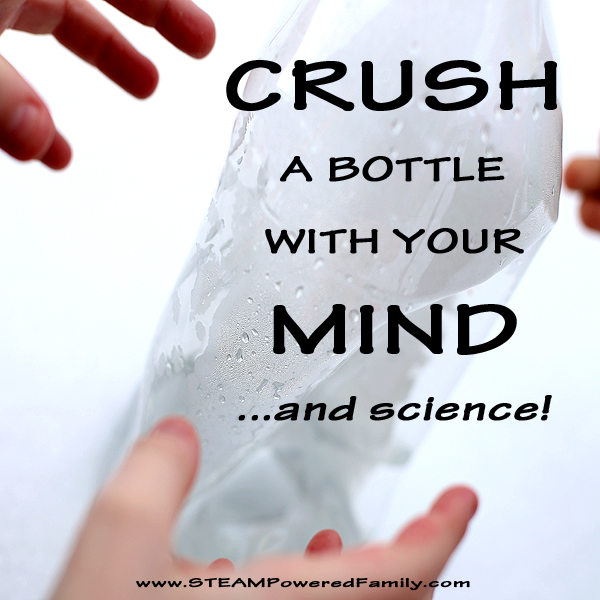
pH Testing Lab
Have you ever done a pH lab ex periment? In this simple version, you can use items from the kitchen to create a science lab that allows students to explore pH and learn more about acids and bases.
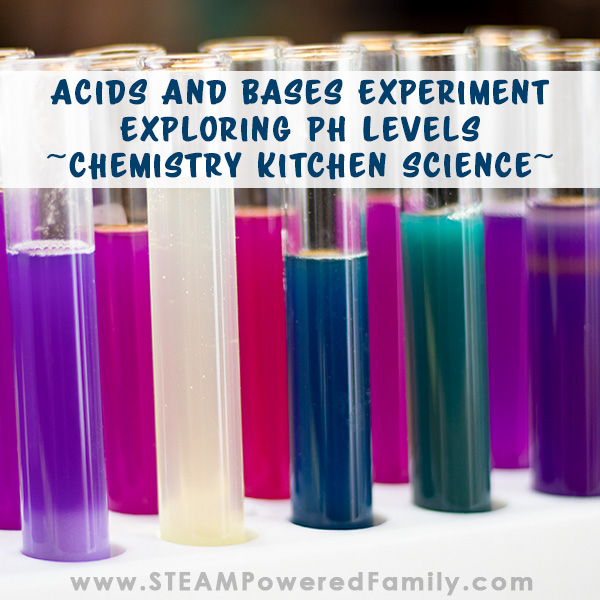
Gummy Mummies – Gummy Bear Mummification Experiment
Gummy Bear Science Experiments are always a hit with kids and in this easy science experiment we explore how the mummification process works. Add an extra fun comparison by also placing some of the gummy bears in liquid.
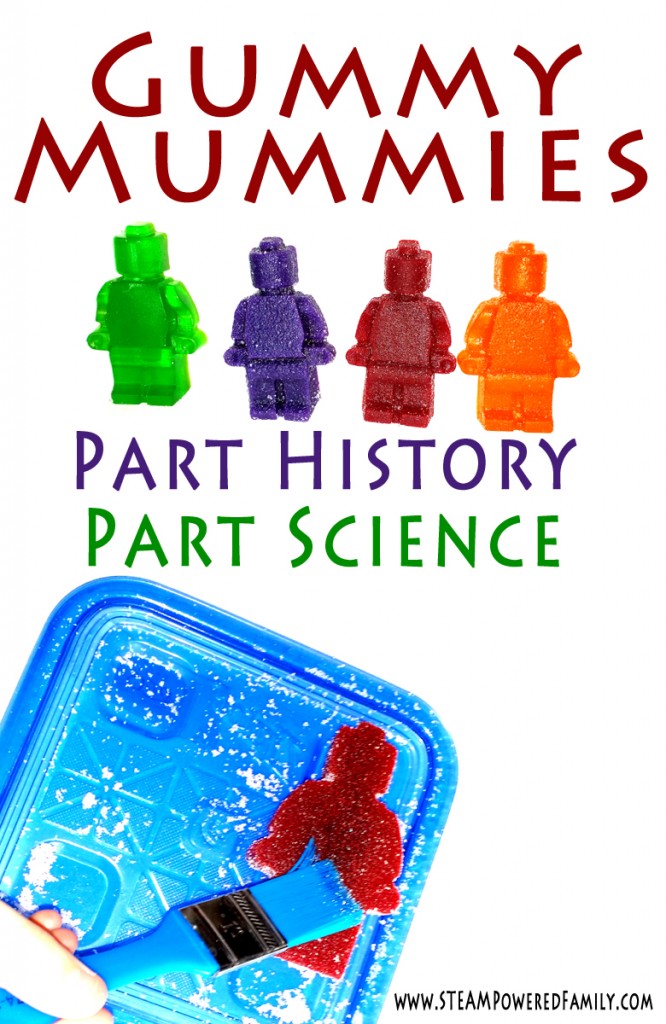
Walking Rainbow
Want a beautiful rainbow science experiment that is soooo easy it all happens without you even needing to do anything? Simply set it up, walk away, and come back to a beautiful rainbow of colours. In the Walking Rainbow Science Experiment kids learn about capillary action and color mixing. All you need is jars, paper towels, water and food coloring.
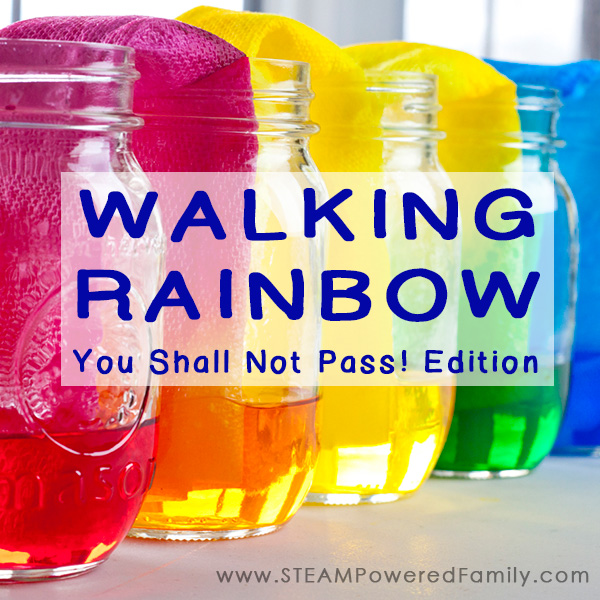
Rainbow Rain
On a rainy day, why not make Rainbow Rain in this simple science experiment for kids. The results are beautiful and will brighten a dreary day. All you need is water, shaving cream and a few drops of food colouring.
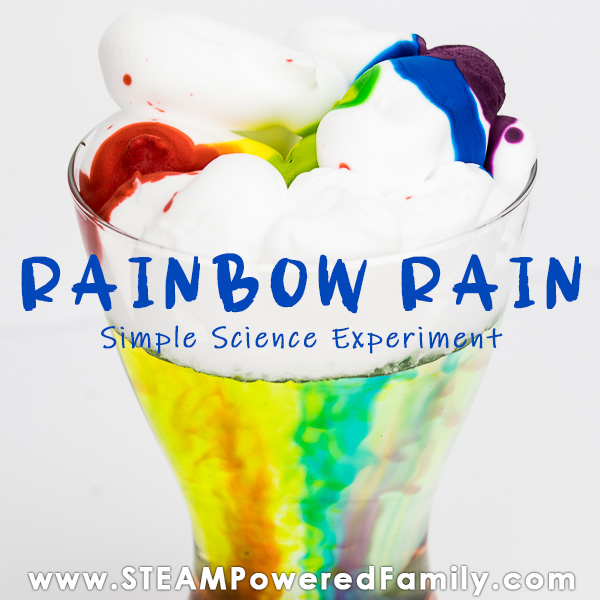
Skittles Experiment
It doesn’t get any easier than the simple Skittles Experiment . All you need is a plate, some Skittles and water. Soon you will have a spectacular science experiment the kids will beg to do again and again.
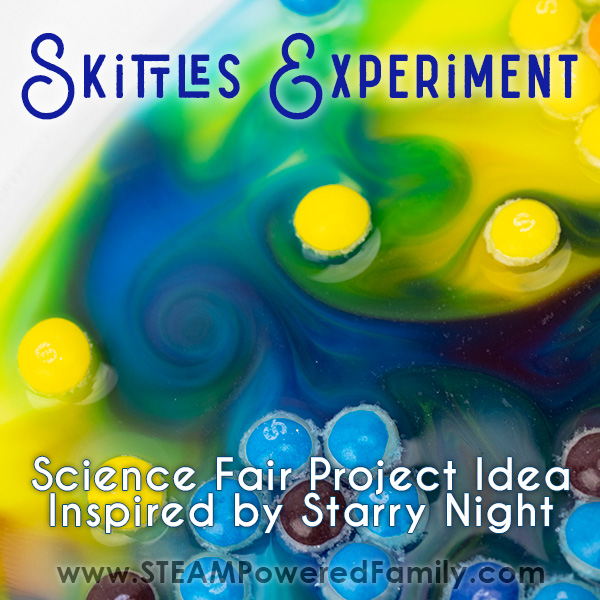
It’s been all the rage for a few years, and whether you love it or hate it, making slime can actually be a fantastic science experiment for kids.
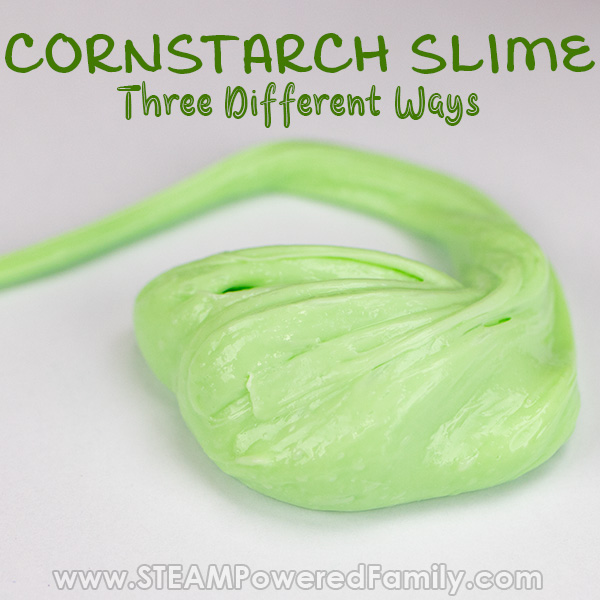
Ready to do one of the most simple science experiments, but also the most fun? It’s time to make non-Newtonian Fluids! Known as Oobleck , it turns sold under pressure and liquifies when you remove pressure. And it will keep kids learning hands on and exploring for hours! The best part is all the different science experiments you can do with Oobleck.
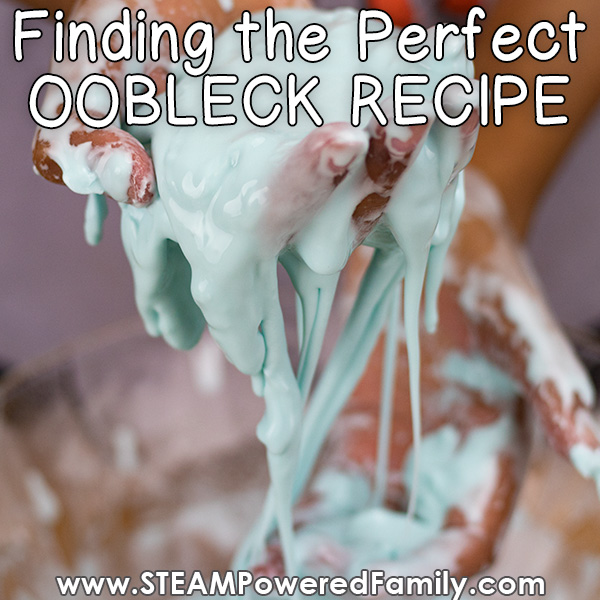
Now when you think of Moon Dough , you don’t immediately think of easy science experiments for kids, but that’s because you have never made Moon Dough the way we make Moon Dough! In our recipes we learn about emulsifiers, glow in the dark science, chemical reactions, heat transfer, all while having so much fun exploring science and sensory play with kids of all ages.
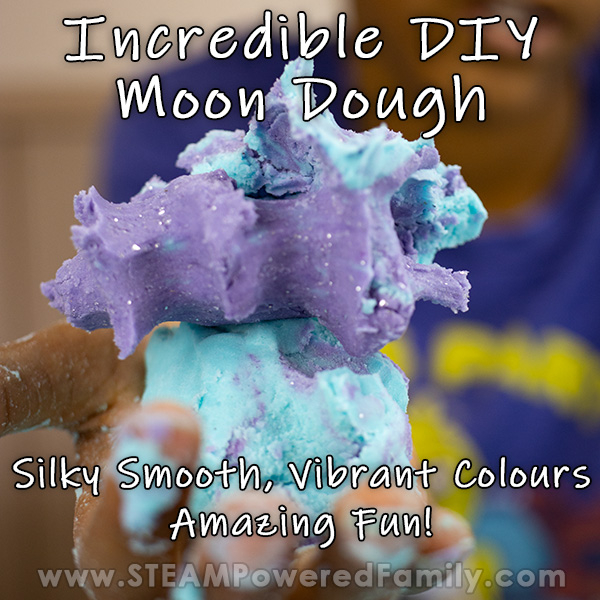
Making playdough with your kids is a great way to teach them about mixtures, solutions, substances, and chemical changes. It is also teaches about the importance of formulas and the role each ingredient plays in creating one of the all time most popular sensory play items, playdough!
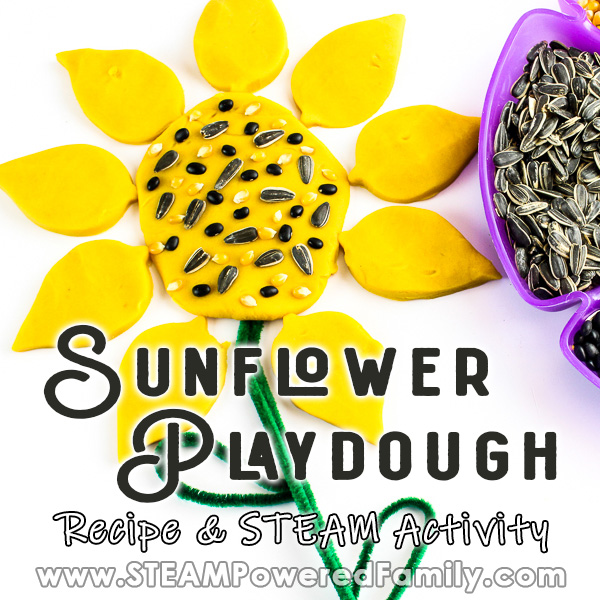
Magic Milk Experiment
Ready for some serious wow factor in a really easy science experiment? Magic Milk is a classic experiment that always mesmerizes kids. Over the years we have used it to learn about surface tension, space, pollution on Earth Day, and so much more. All you need is milk, dish soap and a drop of food colouring… and watch the magic colour explosion happen!
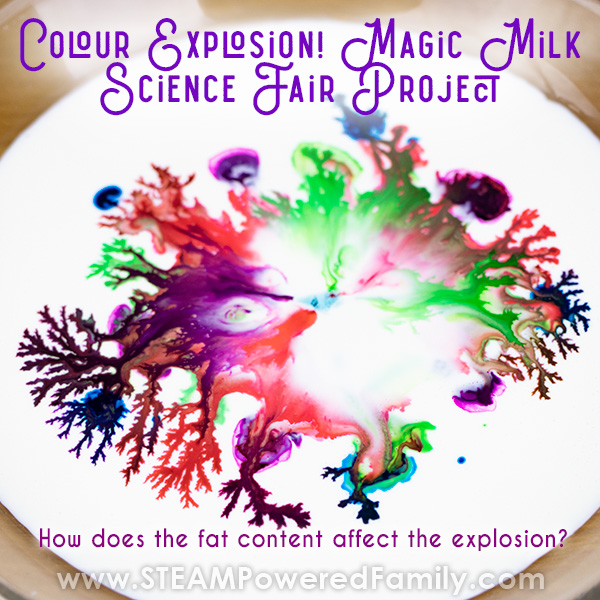
Simple Snow and Ice Experiment
Is it winter where you live? This is a fantastic, very simple and easy experiment to do with young students. All you need is some jars, snow, ice cubes and water… and watch the melting magic !
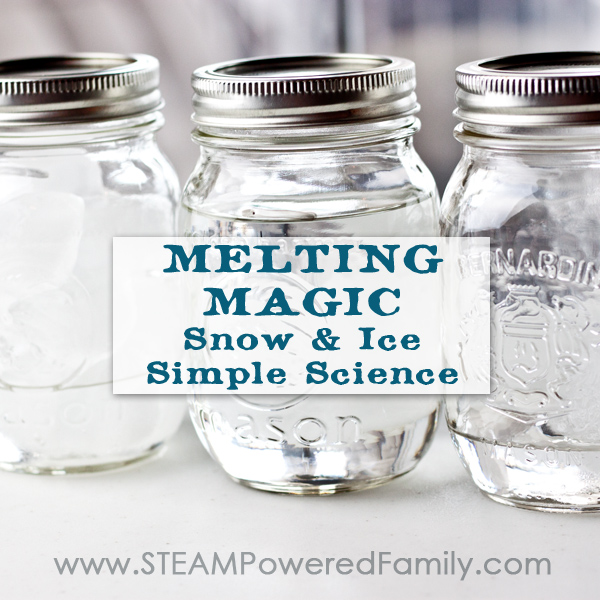
Heat Transfer Experiment – Slurpee Making
Kids love this simple slurpee science experiment where they get a cold, sweet treat at the end in the form of a homemade slurpee! Using the science of heat transfer, kids will make their very own slurpee out of juice. A great experiment for learning about temperature, heat and heat transfer.
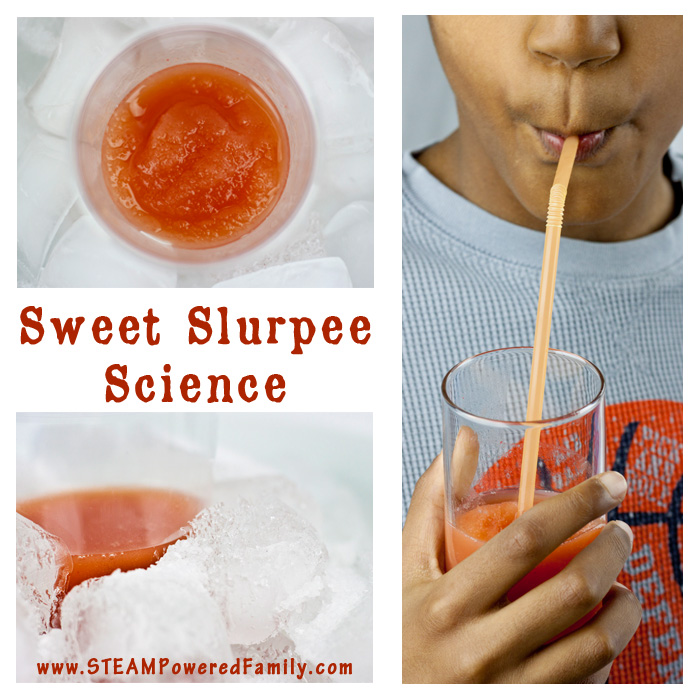
Flying Ghosts Tea Bag Experiment
Obviously this easy science experiment is perfect for Halloween, but don’t let that stop you from doing it at any time during the year. The results of the flying tea bag experiment are always a hit with kids and all you need is fire and a tea bag to set flight to curiosity!
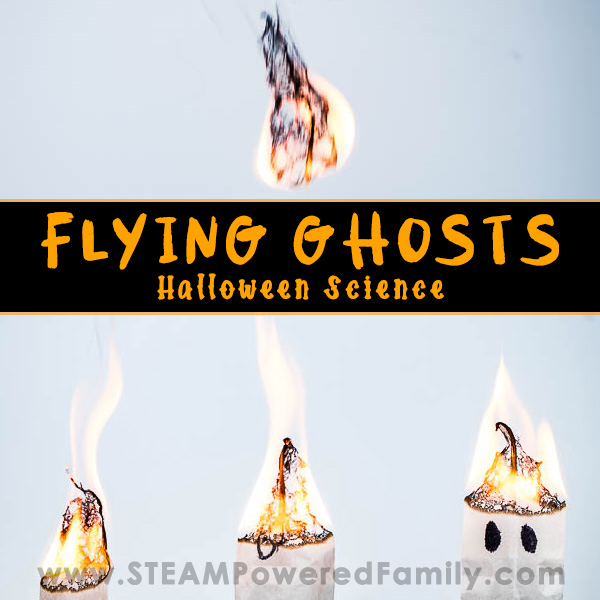
Ice Fishing
Inspire your little ones to learn more about how salt and water react in this fun ice fishing science experiment .

Water and Oil Experiment
Demonstrate how oil and water don’t mix in this colourful oil and water experiment. All you need is a few simple ingredients: water, oil and food colouring. When it comes to easy science experiments for kids, it doesn’t get easier than this!
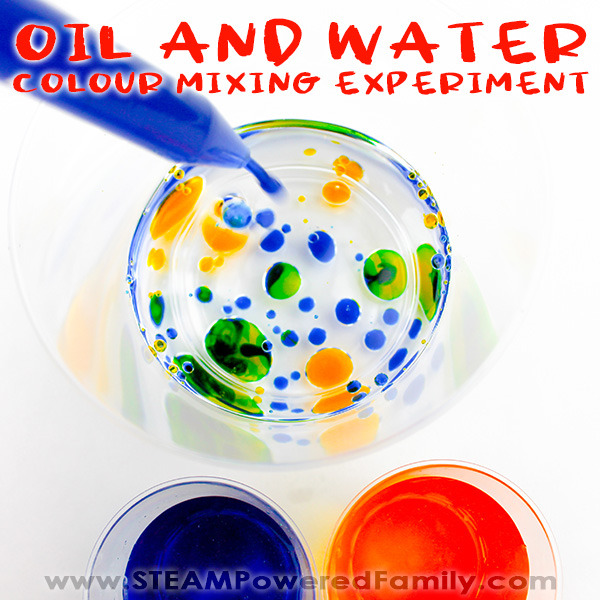
Magnet Science – Harry Potter Inspired Wingardium Leviosa
Use the magic of science to wow students, or teach students this experiment so they can wow their friends with their new found magical abilities. You can also use this science to make ghosts fly! Who knew magnet science was so cool?
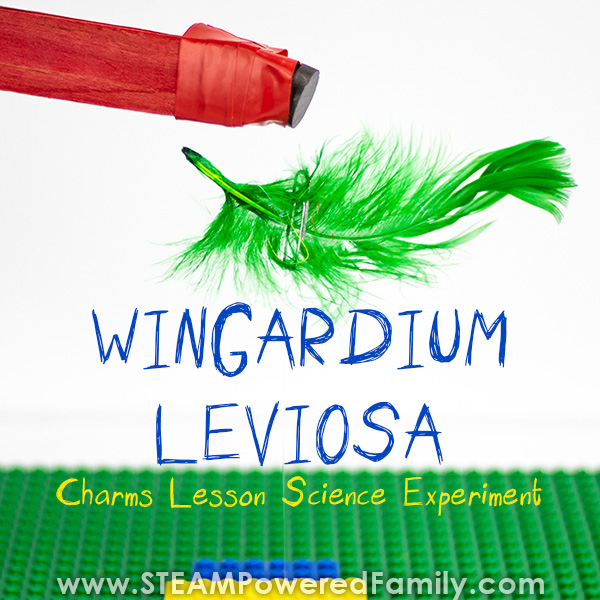
Marshmallow Science
Marshmallows are the secret to easy science experiments that you never knew existed in your pantry! Learn how to teach concepts around heat, molecules, expansion and more in this marshmallow science experiment .
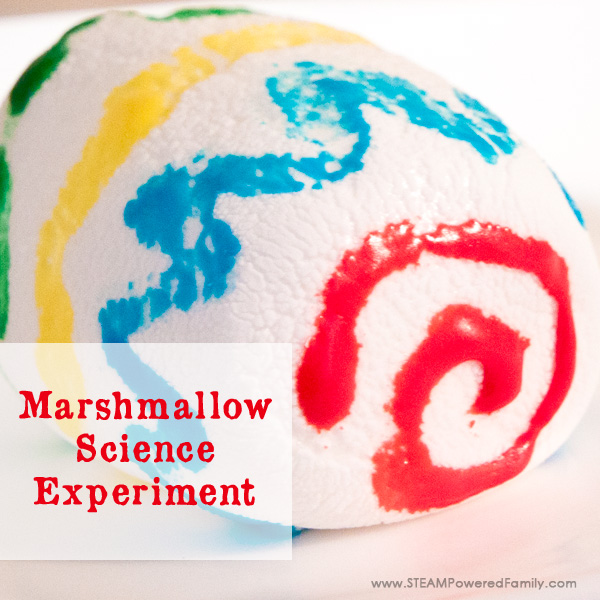
Sky Science
Kids wondering why the sky changes colour during sunrise and sunsets? Or the always famous, why is the sky blue, question? Explore the science of the sky colours in this easy experiment .
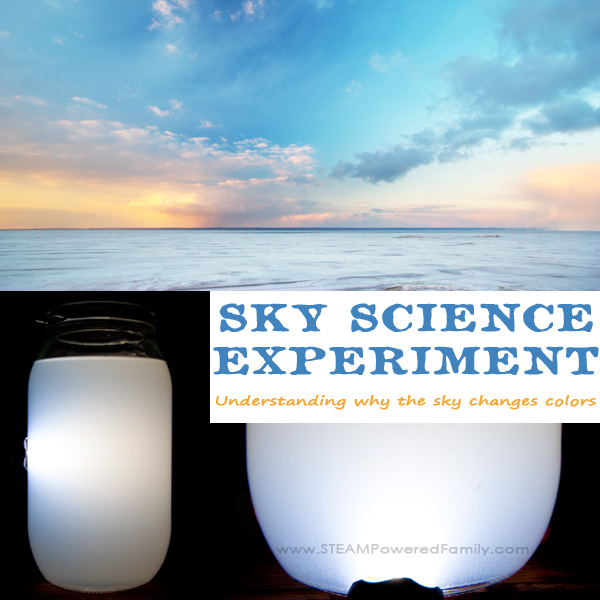
Easy STEM Challenges
Why not combine Science with some Technology, Engineering and Math in these easy STEM Projects for kids.
Build a Popsicle Stick Catapult
One of the original STEM projects kids have been building for generations is the simple catapult. There are lots of different ways you can build a catapult, but here we are making the always easy and popular Popsicle Stick Catapult .
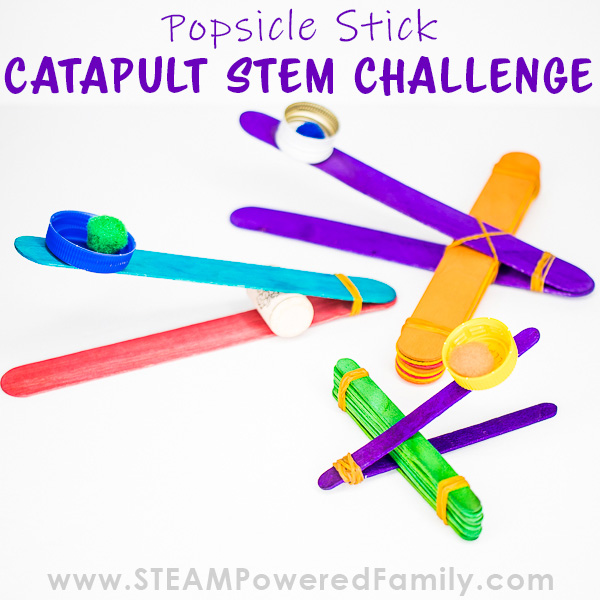
Build a Water Clock
This easy STEM project has some significant historical context that your history loving students will go wild over. Plus building a water clock is surprisingly easy but packs a powerful learning punch.
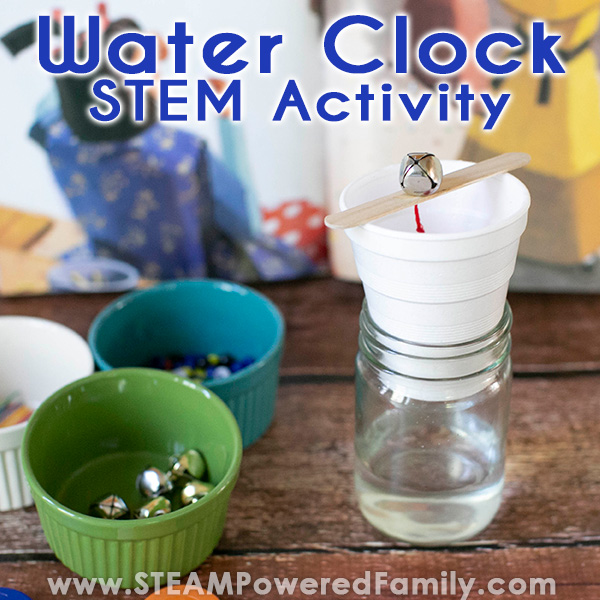
Make a Glow Salt Circuit
Before you start to worry, building a circuit doesn’t have to be difficult. In fact, once your students master the basics of electricity and circuits, they will want to start adding circuits to everything. To get started, one of the most simple circuit projects you can make is our Glow Salt Circuit . Don’t worry, we provide all the detailed instructions to ensure your project is a hit.
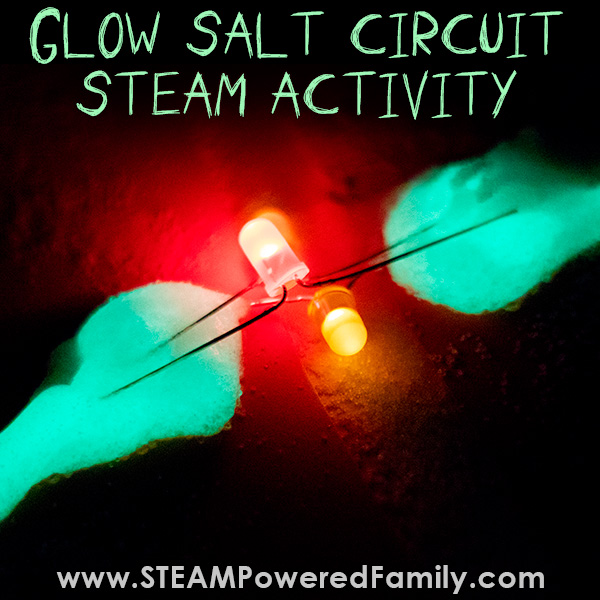
Build a Battery
Another great way to explore electricity science is to build a simple battery out of food. We have built Lemon Batteries , Pumpkin Batteries and even Potato Batteries . Kids love capturing the energy in our foods and using it to light up!
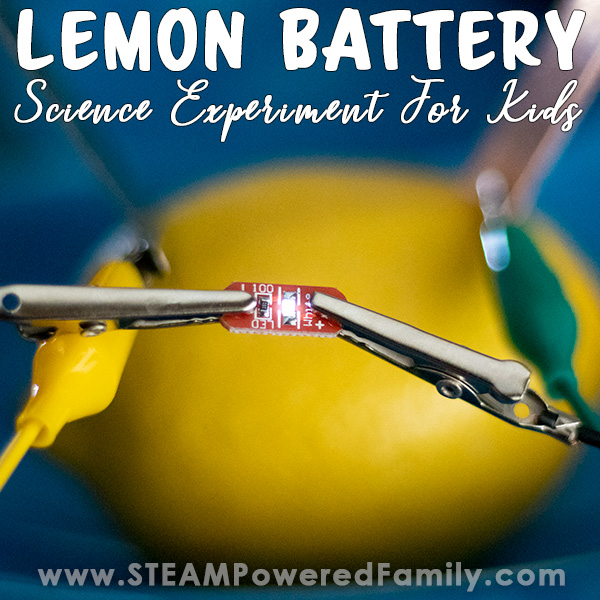
Build a Bridge
A bridge building challenge is a great way to challenge a class either in school, at camp or in an after school program. Kids get to let their innovation, creativity, and understanding of science and engineering go wild as they build their creations. Then test them out against other designs to see which concepts come out on top.
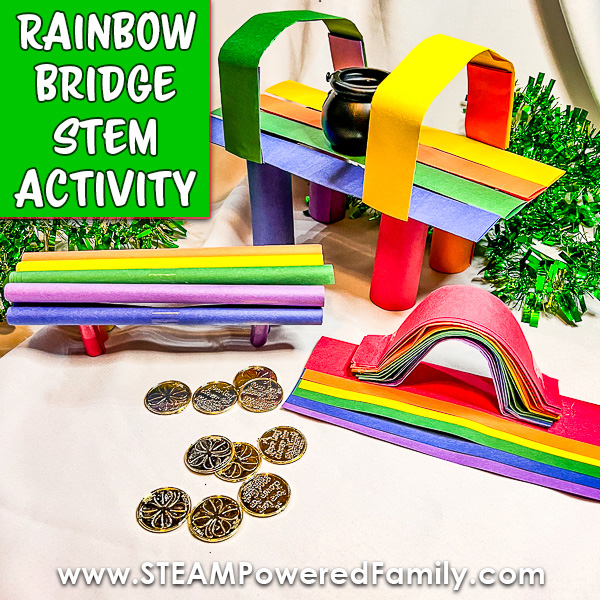
Rube Goldberg Machine
Building simple machines is an incredible STEM project for all ages. With a Rube Goldberg Machine you are linking simple machines into a chain reaction to achieve an end goal. The best part about a Rube Goldberg Machine project is that it challenges students to work together and apply critical thinking and problem skills as they develop their STEM literacy. Check out the Rube Goldberg Machine we built as a Leprechaun Trap .
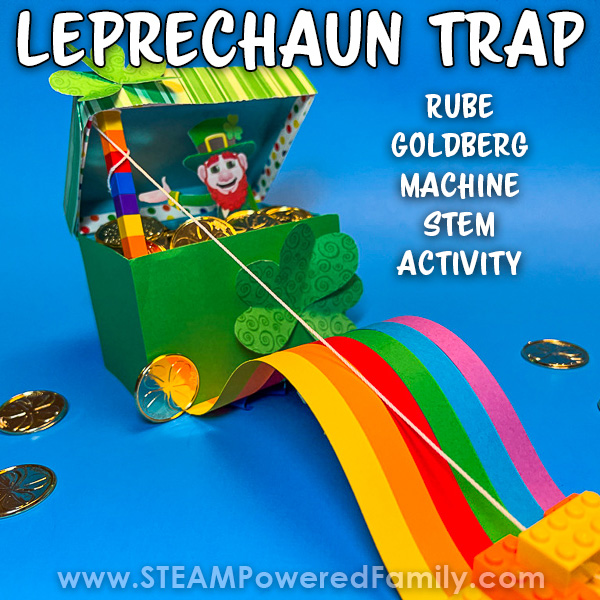
Build a Catapult Cannon
Catapults may be fun, but as kids get older, they want bigger challenges, bigger launches and bigger fun with their learning. Enter the Catapult Cannon , a Catapult design that launches harder and farther than your regular catapults, and challenges students to apply more advanced engineering and physics concepts.
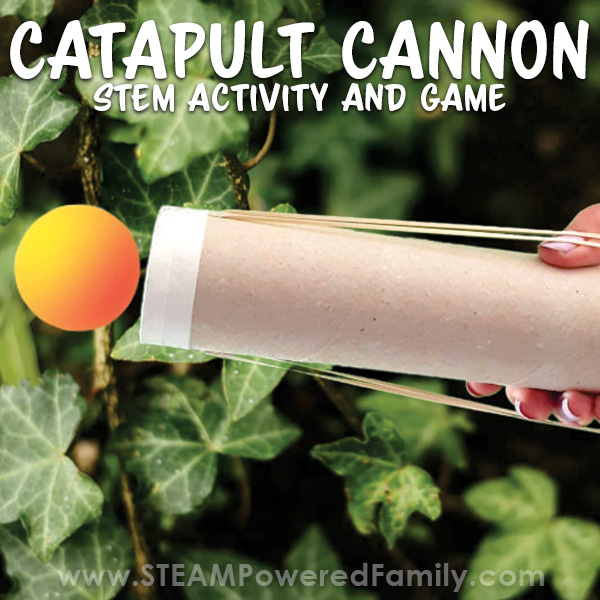
Build a Confetti Cannon or Seed Bomb Launcher
For a smaller scale challenge with mini cannons, try making this Confetti Cannon , which includes two different designs, one for little learners and one more complex design for older kids. Plus you can use a similar design concept to make a Seed Bomb Launcher for homemade Seed Bombs.
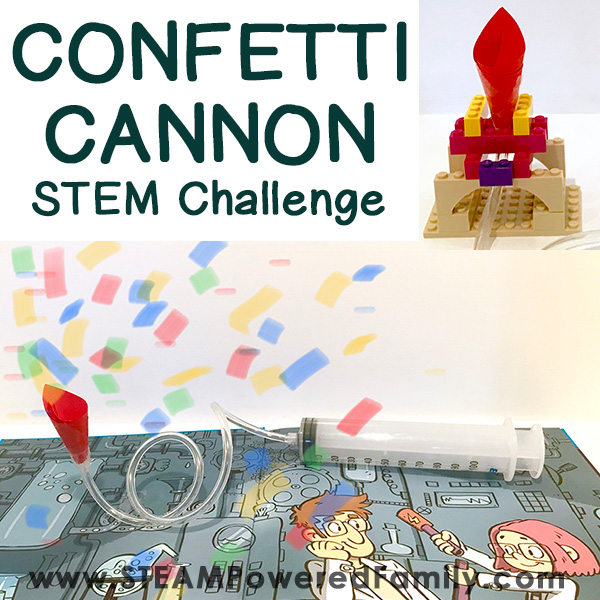
Tower Construction Challenge
A very easy STEM Project is to challenge kids to build a tower. Now you can do this with blocks or LEGO, but up the challenge by having kids build with candy , marshmallows , paper, pasta or even frozen bubbles . Add a time limit to turn this into a one minute STEM challenge.
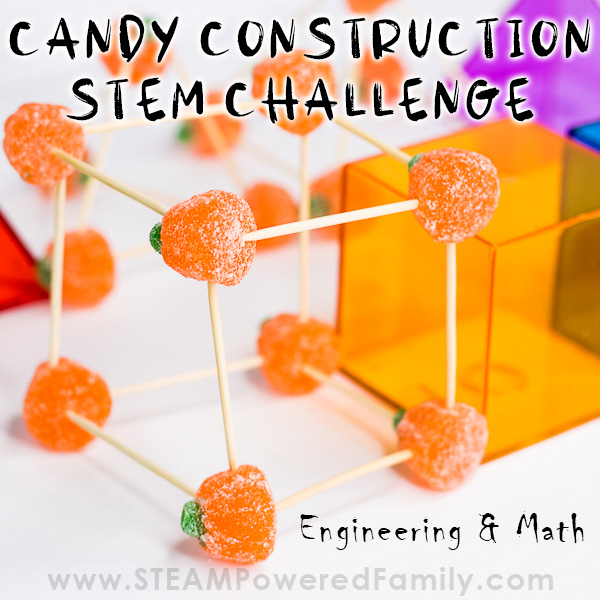
Make a Thaumatrope
Optical illusions are always a fun experiment for kids. For a quick and easy optical illusion for kids, try building Thaumatropes . It is so easy, especially with our ideas and templates.
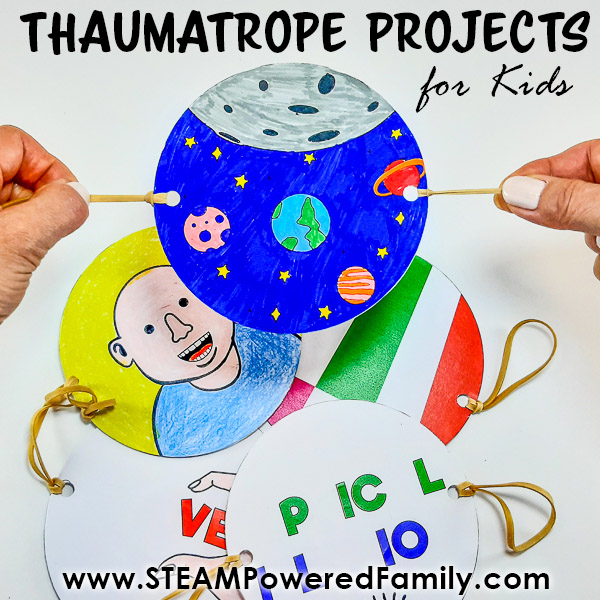
Build a Balloon Car
This is a STEM build that is perfect for a classroom or after school group. Build a Balloon Car that is powered by air. For younger kids, challenge them with the Make It Move STEM Challenge .
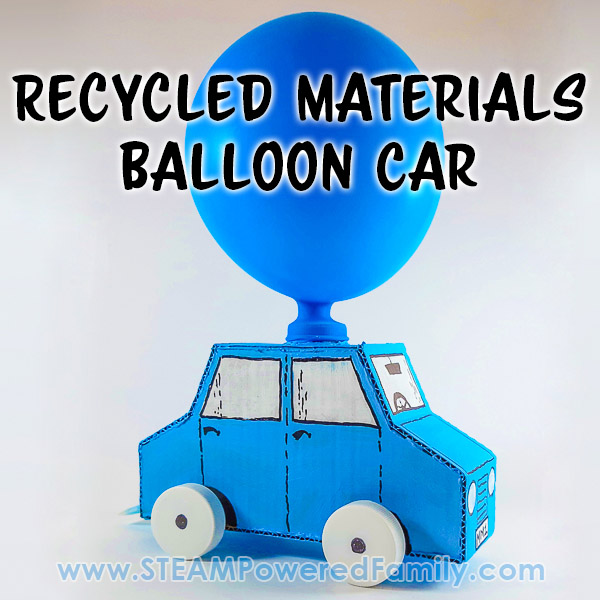
Biology Science Building Models
Turn a boring Biology lesson into a fun science class with a STEM project inspired by the human body. Build functioning models of The Lungs , The Heart or The Hand .
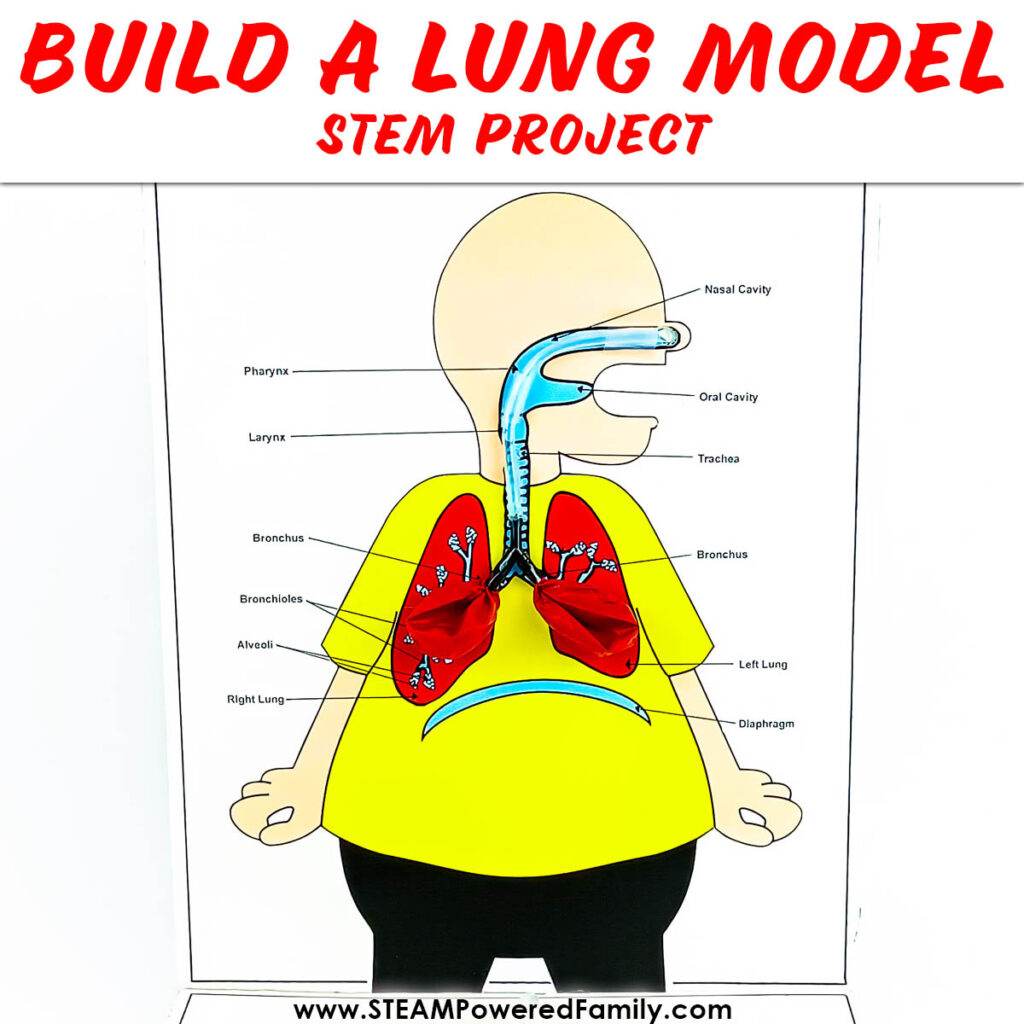
Science Projects and STEM Activities for the Holidays
Need something specific to celebrate the seasons or holidays? Check out all of these resources featuring the best in easy science experiments for kids with a special theme!
Spring Activities
Summer Activities
Fall Activities
Winter Activities
End of School Year
Valentine’s Day
St. Patrick’s Day
Halloween Activities
Christmas Activities
5 Days of Smart STEM Ideas for Kids
Get started in STEM with easy, engaging activities.
GET OUR LATEST UPDATES!

30 Easy Science Experiments for Kids Using Items You Already Have At Home
- Kindergartner
- Preschooler
30 Easy Science Experiments for kids to try using supplies you probably already have in your kitchen, bathroom or craft room. The best science experiments for curious and creative kids!
Science for Kids
I have rounded up all the best and easiest science experiments that we have done over the years and many many others that are super accessible to create at home. They use supplies that are easily available in most homes and classrooms or can easily (and cheaply) be acquired. These are fun and exciting ideas perfect for preschoolers and up. These experiments will wow your kids and get them asking a million and one questions!
- Amazing Dancing Water Beads: STEAM Activity
Make water beads dance in a jar in this easy idea.
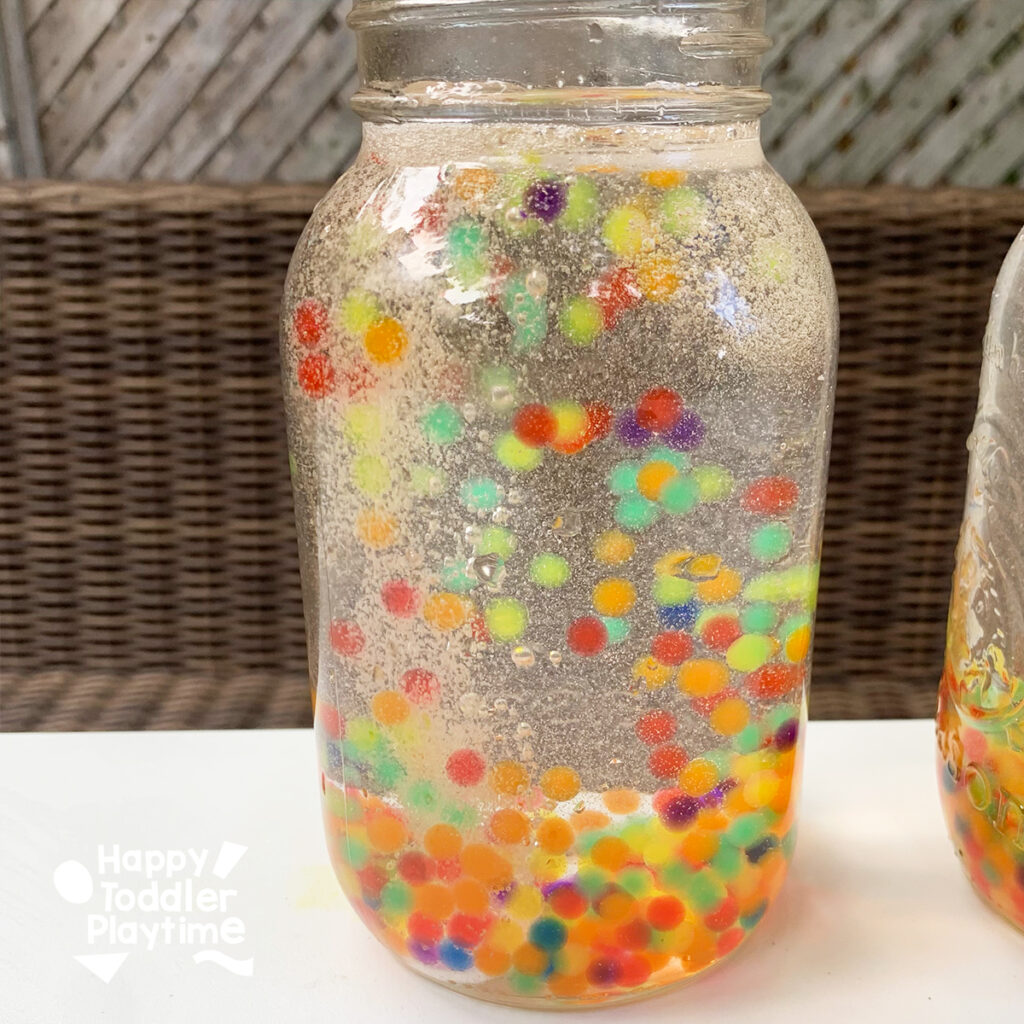
- Awesome Fizzy Ice Cream Shop Sensory Bin
Ice cream anyone! Serve up delicious looking ice cream cones that fizz and pop!
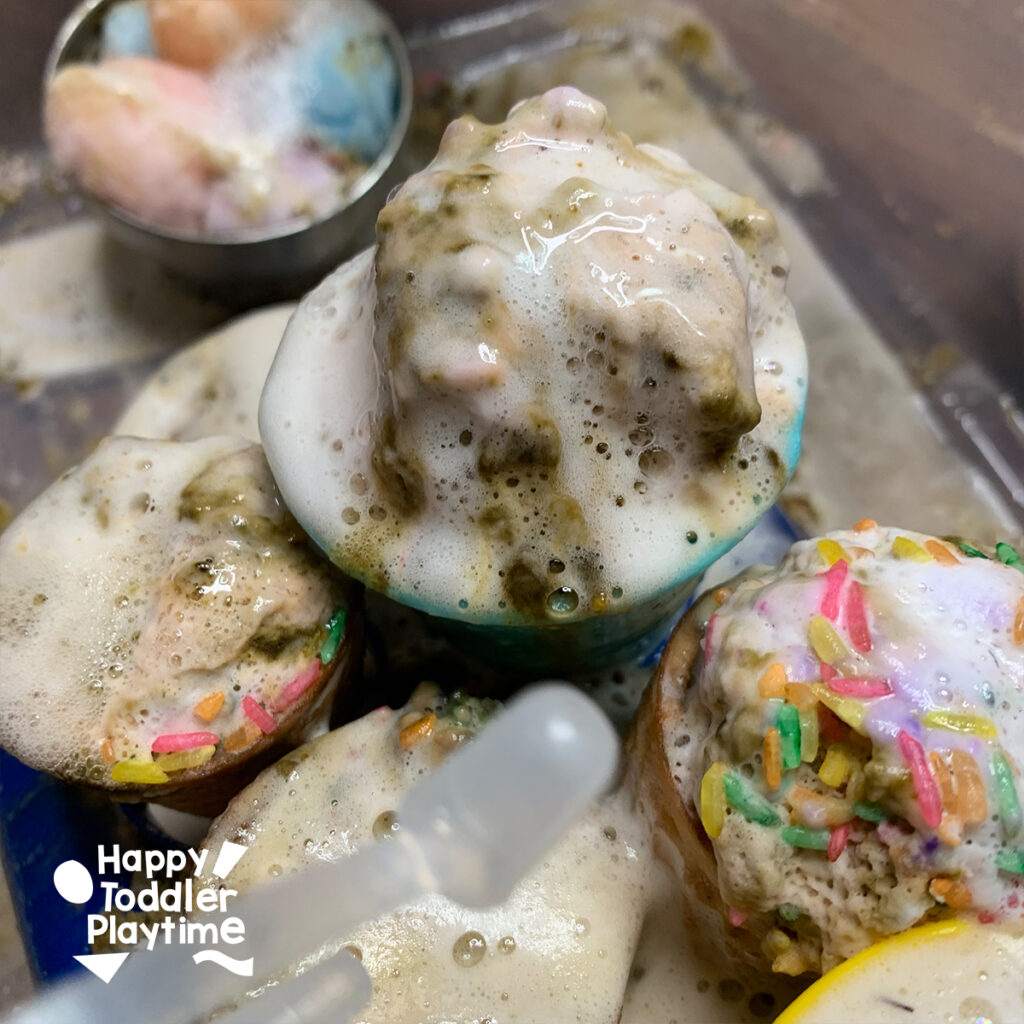
- Easy Baking Soda and Vinegar Experiment for Kids
One of our favorites using baking soda and vinegar. A classic for a reason and a great way to keep kids busy at home.
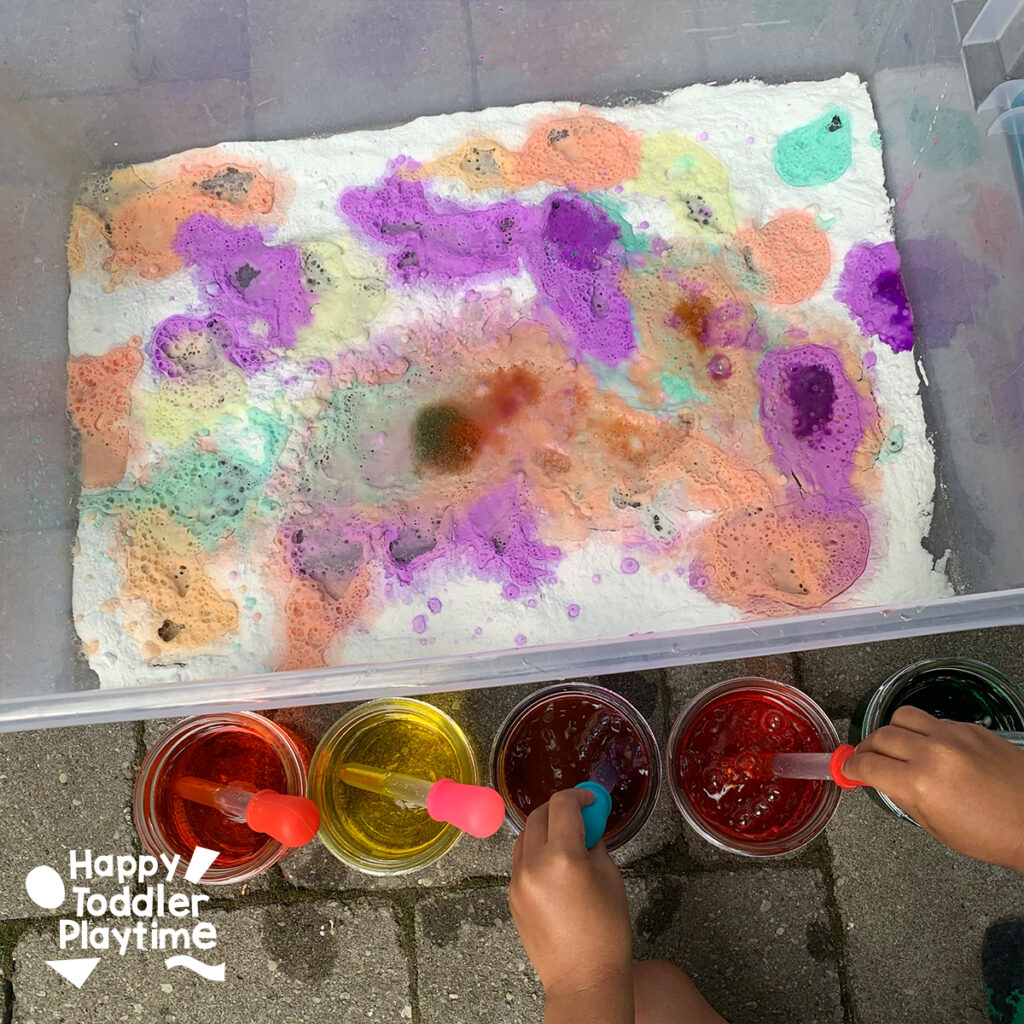
- Walking Rainbow Heart Experiment
So simple yet so amazing. A great way to look at capillary action at work!
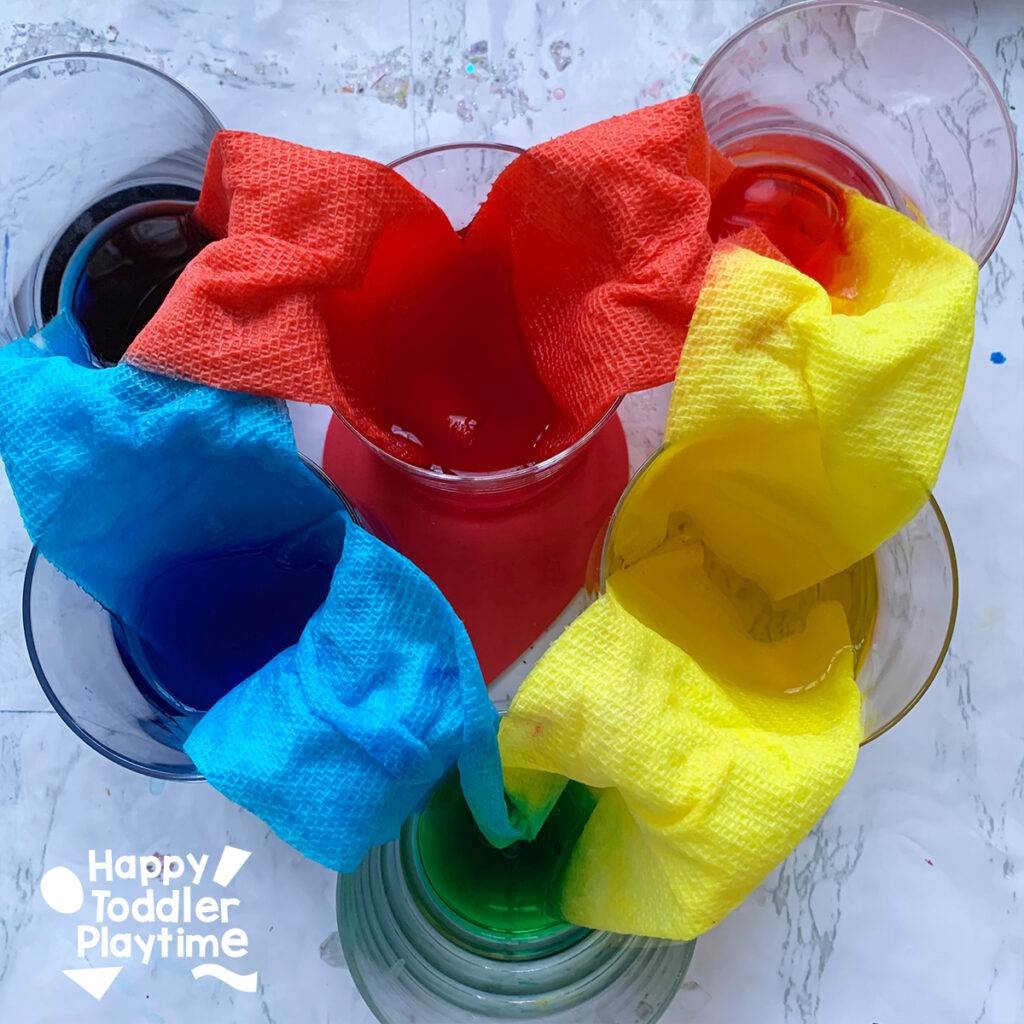
- How to Make Glow in the Dark Slime
This amazing Glow in the Dark Slime is one your kids will love and its mess free! All you need is three easy ingredients!!
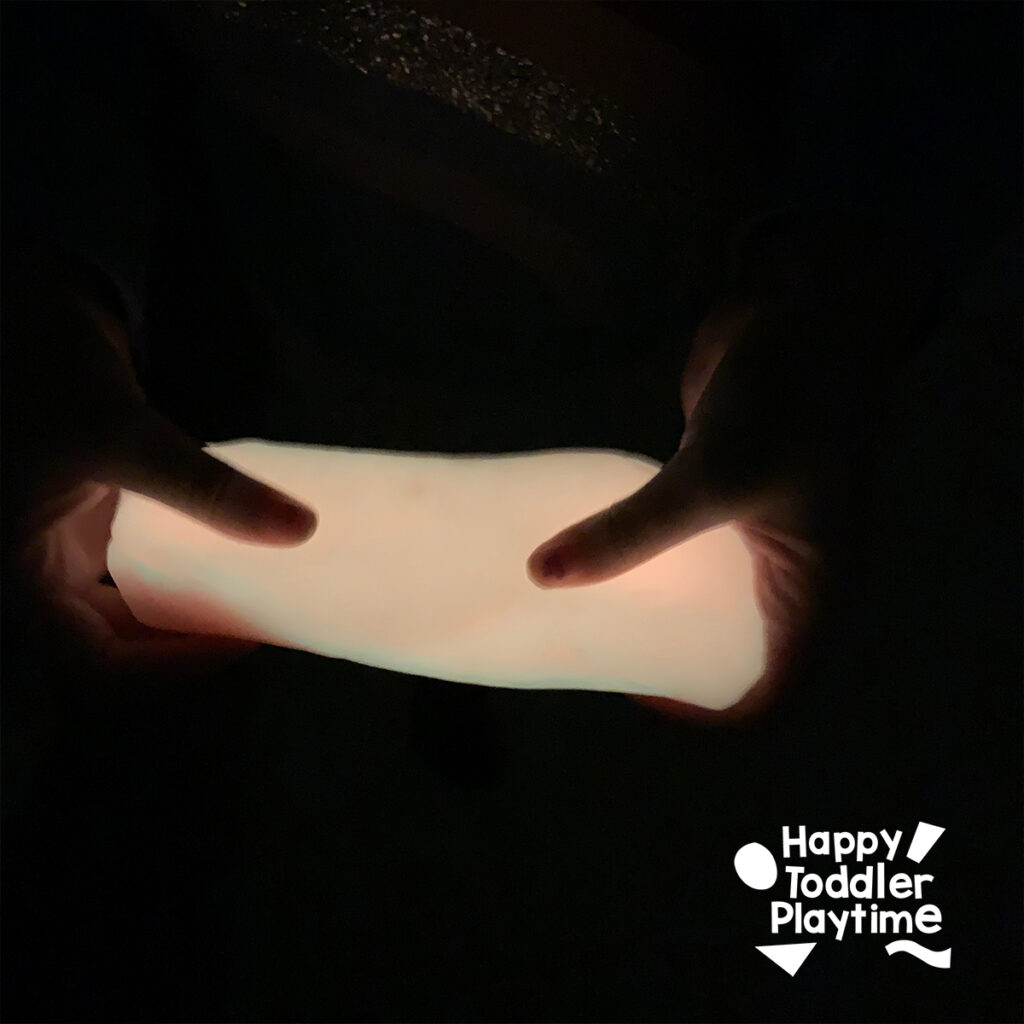
- How to Make Oobleck for Kids
Learn how to make one of the best taste safe sensory play materials for kids: oobleck! It uses only 2 ingredients: corn starch and water!
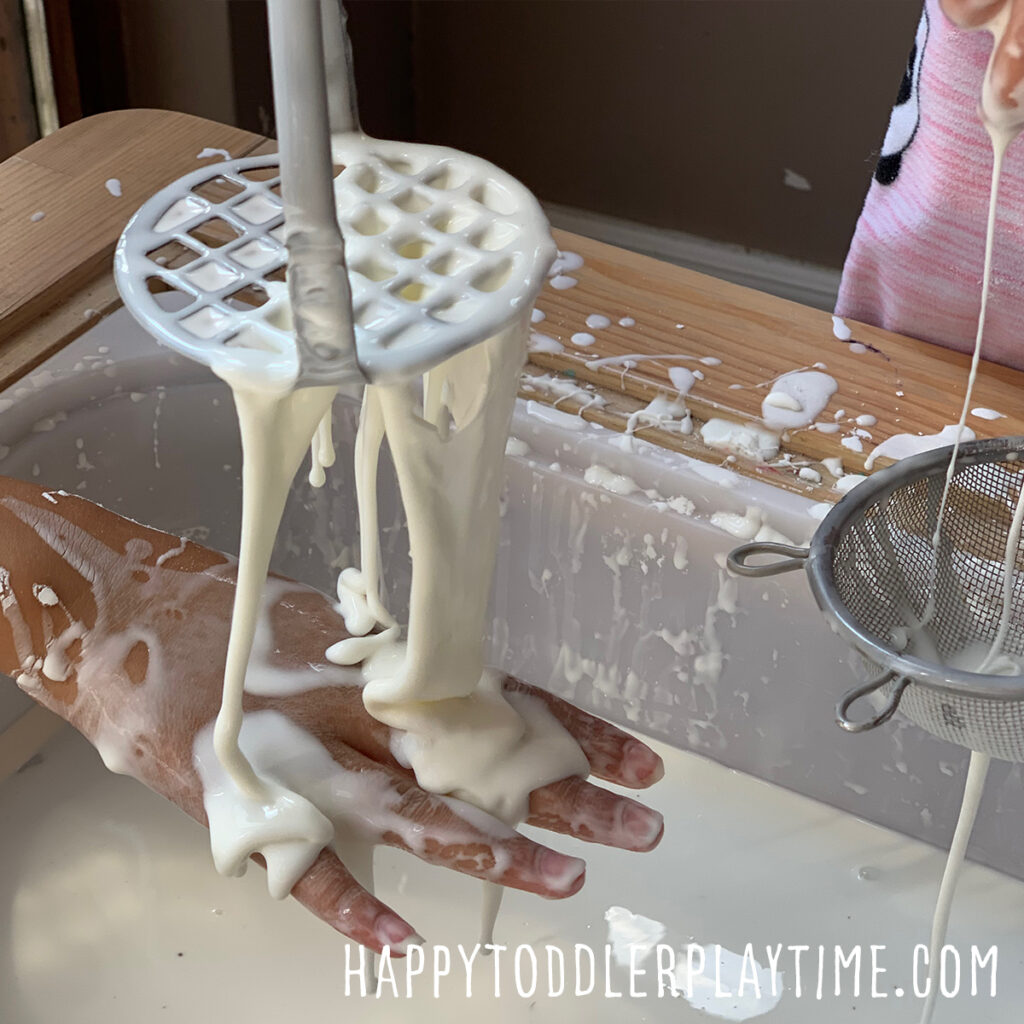
- DIY Water Wall
DIY Water Wall is an amazing STEAM activity for kids this summer! Its a great way to beat the summer heat!
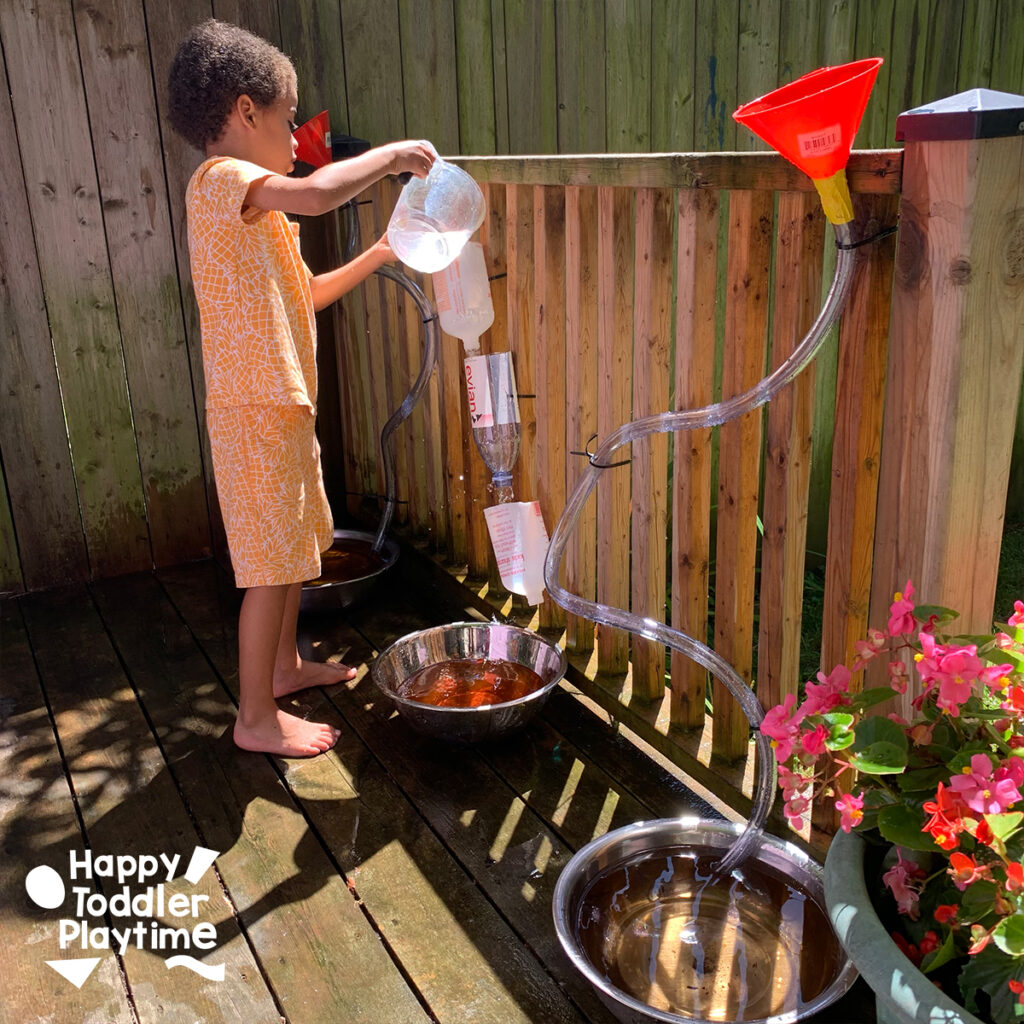
- Pool Noodle Marble Run
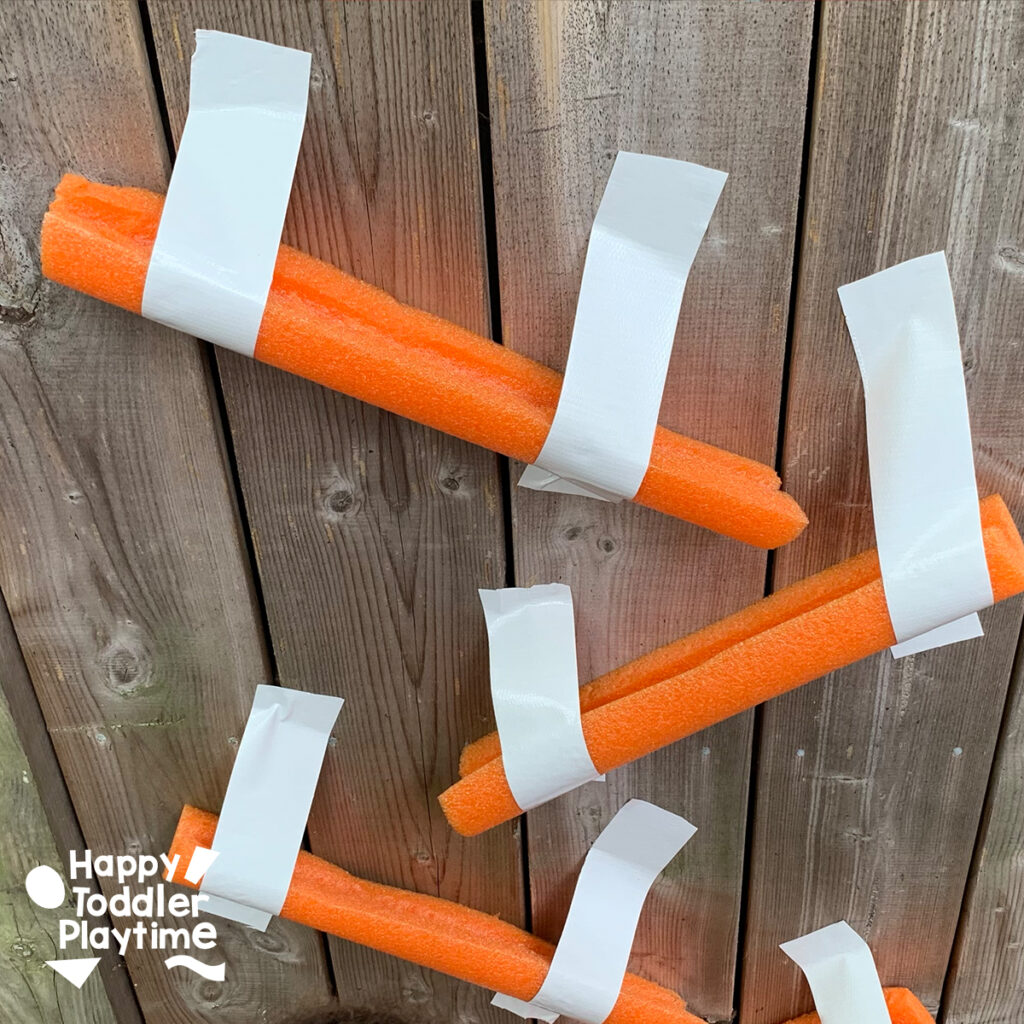
- Growing a Carbon Sugar Snake
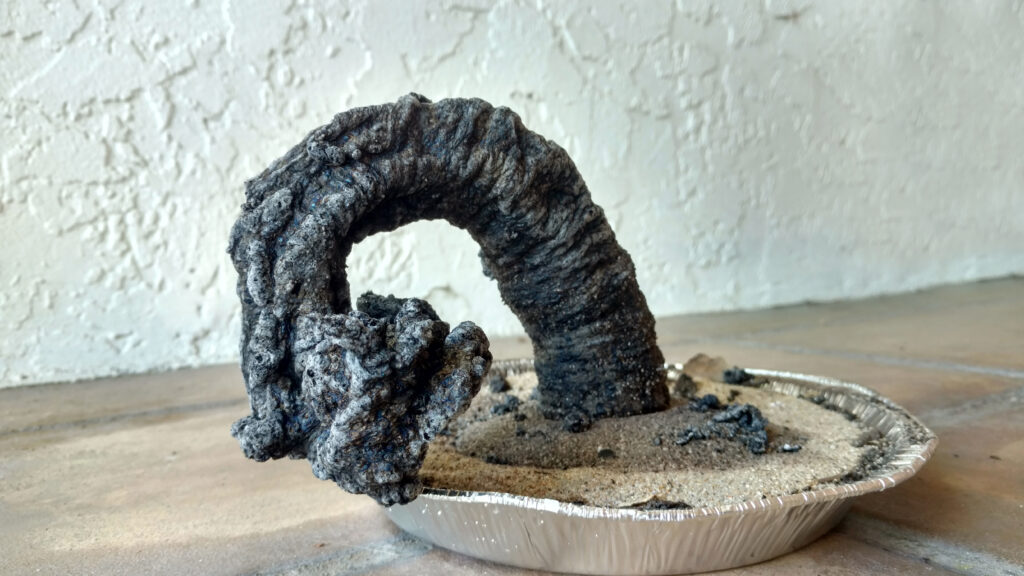
- How to Build a Toilet Paper Roll Balloon Car

- Flying Tea Bag Ghosts

- Candle and Rising Water Science Experiment

- Leak Proof Bag Science Experiment for Kids
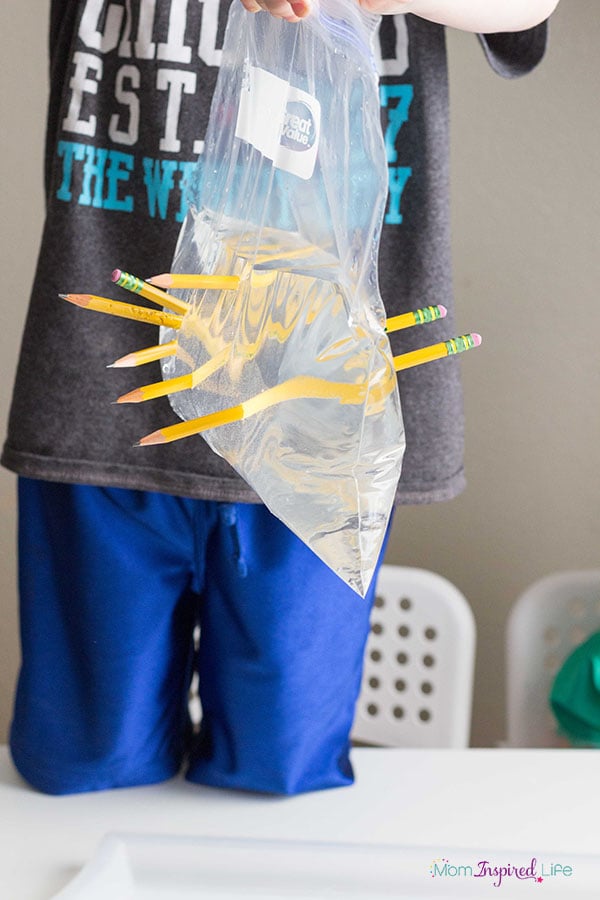
- Egg Drop Experiment
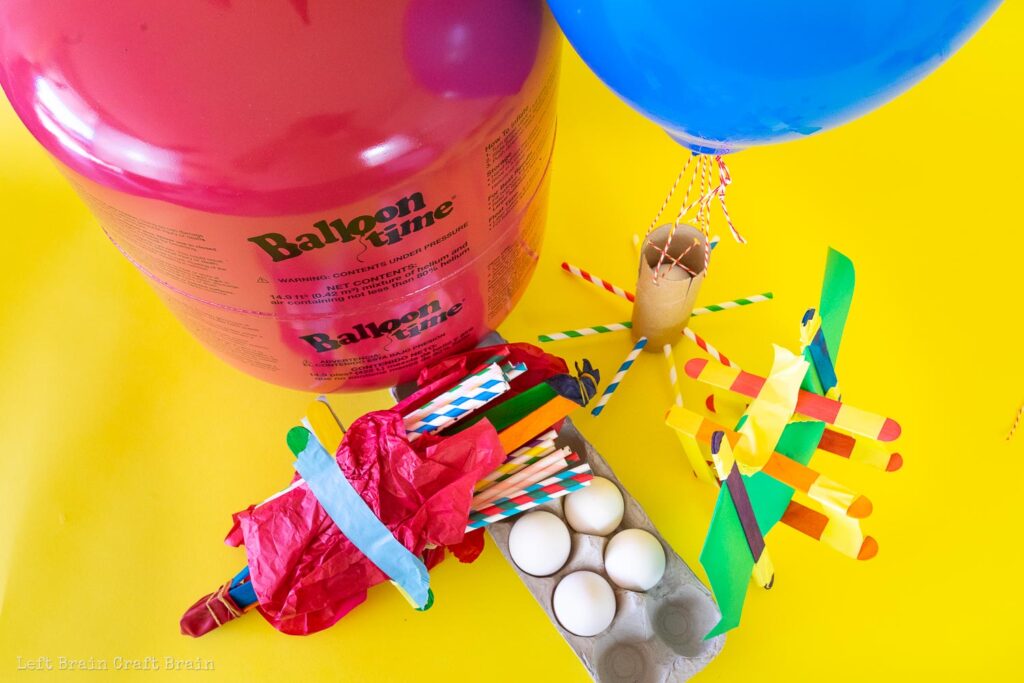
- Floating Dry Erase Marker Experiment

More Easy Science Experiments for Kids
- Density Tower Experiment

- How To Make Colour Changing Lemonade
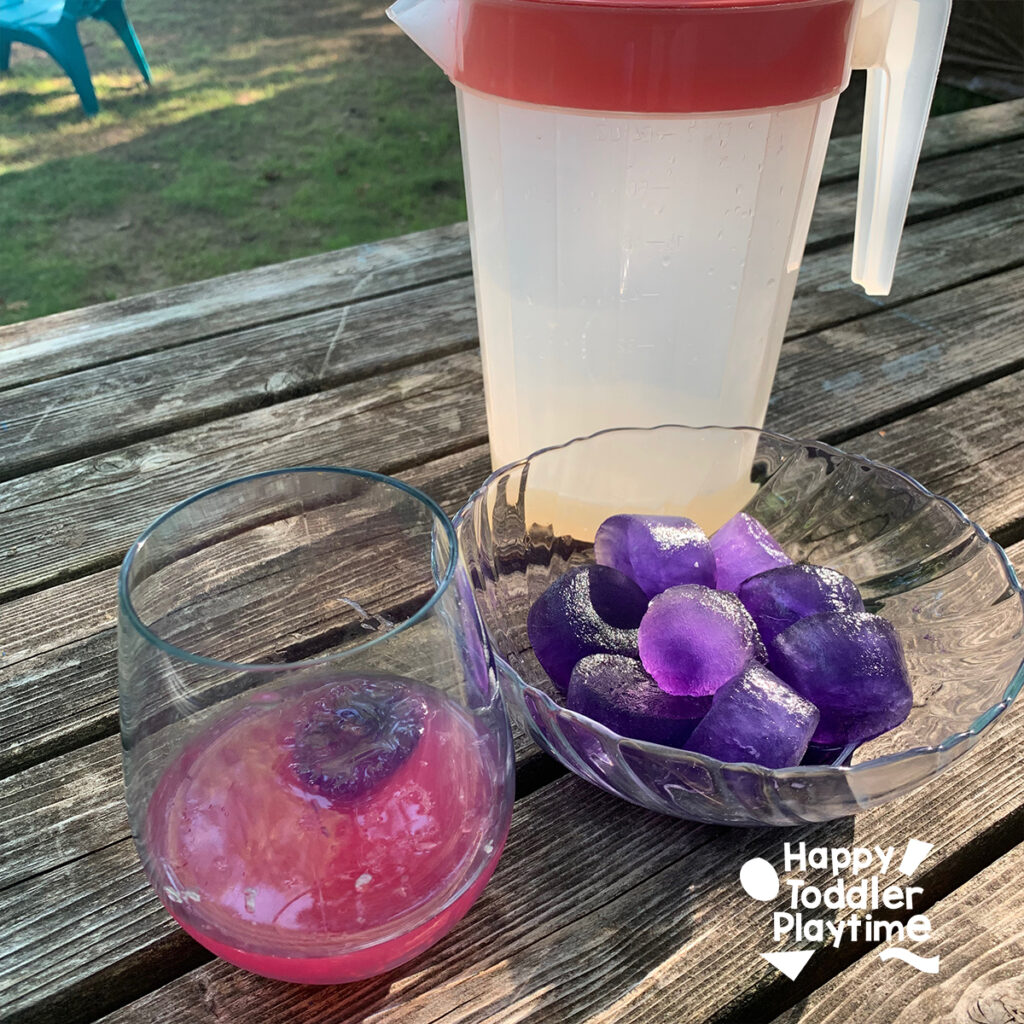
- Ice Cube on a String Experiment

- Soda Gysers

- Surprise! You Can Stand on Eggs

- Make A Sundial Experiment

- Light Refraction Magic

- Sugar Water Rainbows
- Rainbow Celery

- Water Cycle In A Bag

- Fun Thanksgiving Milk Experiment

- Playing with Magnets

- Oil & Water Experiment

- Tie-Dye with Sharpies and Rubbing Alcohol
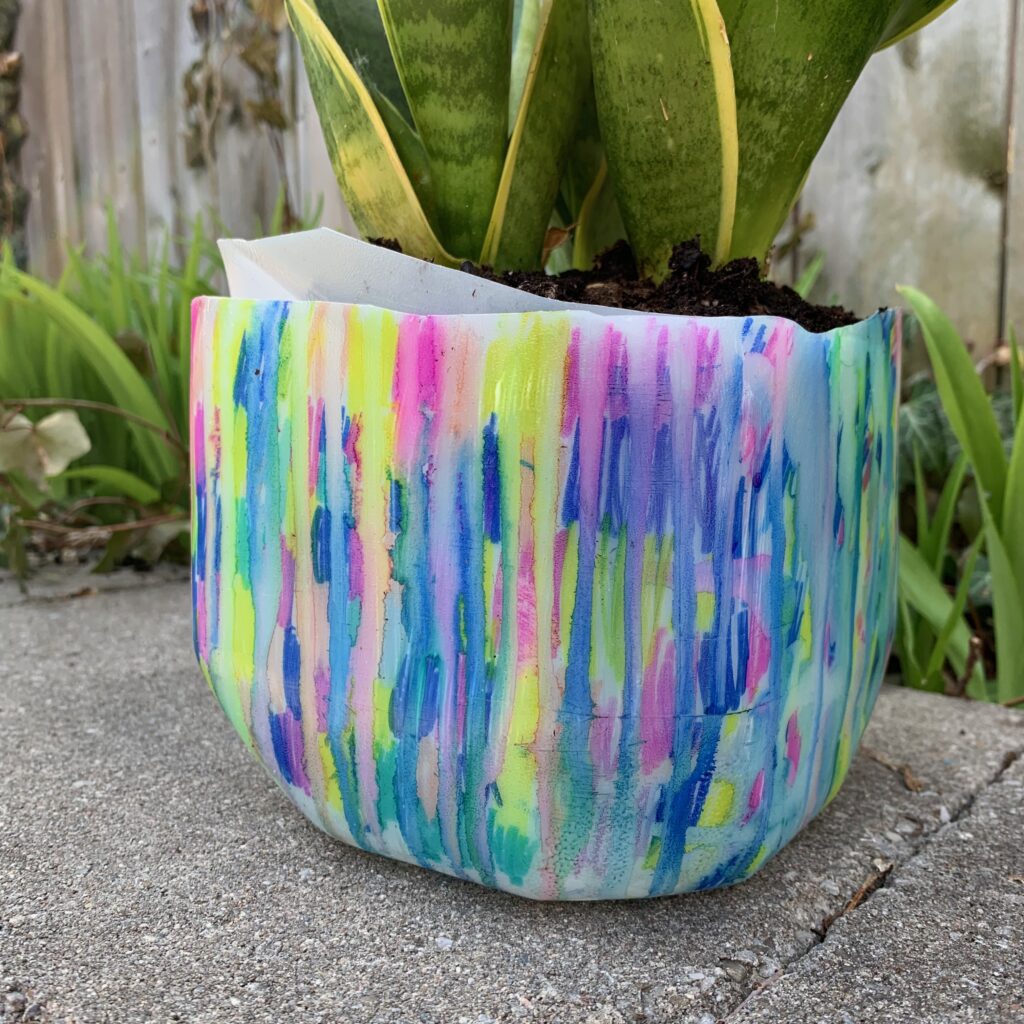
- DIY Toy Parachute

Age Suitability for these Easy Science Experiments
This activity is good for kids 3 years and up with adult assistance. My kids are 4, 4, and 8 year old.
Mess Level for these Easy Science Experiments
This is a mess level is varies.
Difficulty to Create these Easy Science Experiments
Easy to medium.
Skills Developed in Easy Science Experiments
Language development, problem solving skill, hand-eye coordination, fine motor skills, imaginative play, creativity.
(This post and list contains affiliate links for your convenience. If you make a purchase using one of these links, I may earn a commission. Please visit my disclosure policy for more information.)
Check out My Books, TV Show & Play Kits!
Book: super steam activity book for kids.

Learning all about science, technology, engineering, art, and math sets kids up for scholastic success―and it can be so much fun! Watch kids enjoy building STEAM skills as they color friendly fish, help water find its way to tree roots, solve math problems with mazes, and more.
Find out more and grab your copy here .
Book: Exciting Sensory Bins for Curious Kids
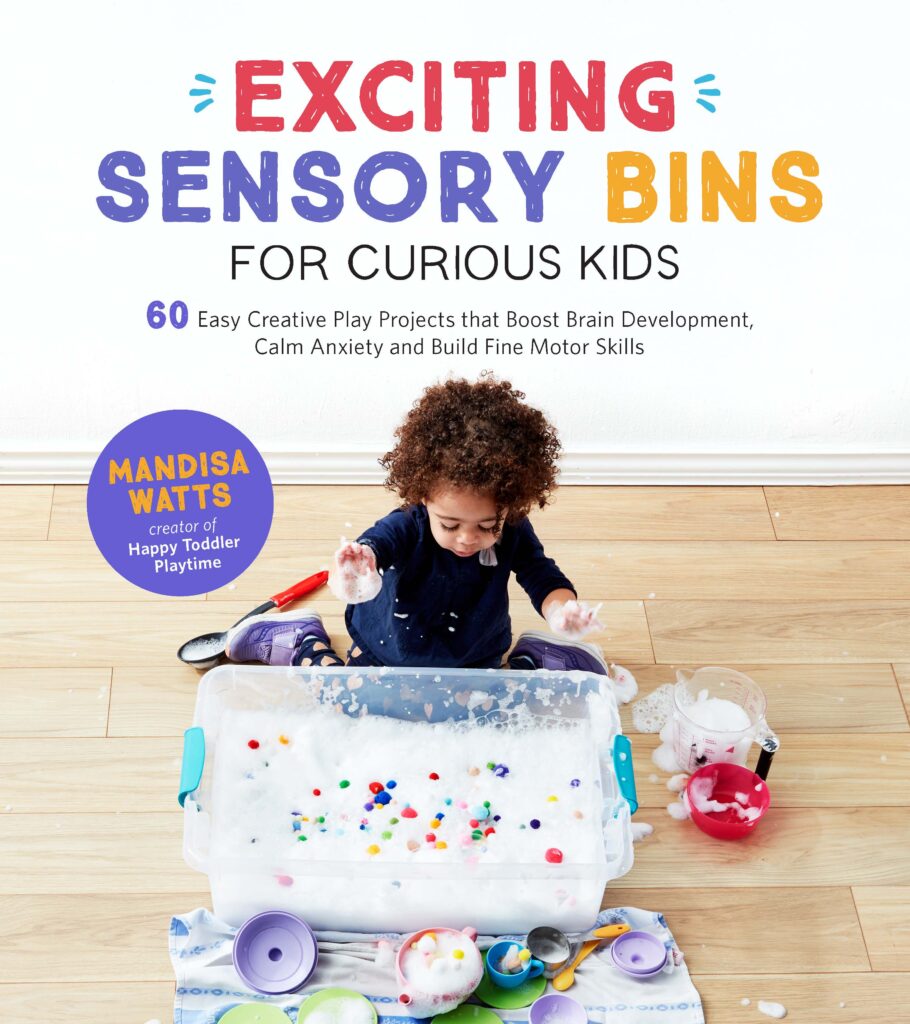
Did you know I wrote a book of sensory bins? Click here for more information Exciting Sensory Bin for Curious Kids . Or grab your copy at Amazon .
Boring afternoons are made exciting with awesome animal-based bins, like Salty Shark Bay or Yarn Farm. Pretend play bins like Birthday Cake Sensory Play or Bubble Tea Party encourage creativity and imagination. And your kids will have so much fun they won’t even know they’re getting smarter with STEAM (science, technology, engineering, art and math) activities like Sink or Float Soup, Magnetic Letter Hunt or Ice Cream Scoop and Count.
Book: Big Book of Riddles for Kids – coming out September 27, 2022
Book: steam crafts for kids – coming out november 29, 2022, tv show: curious crafting.
I’m so excited to finally share my new crafting TV show Curious Crafting which launched July 1 at on TVOkids and TVOkids YouTube !
This show is all about fun and easy crafts for toddlers and preschoolers.
Set in the ultimate crafting space, Curious Crafting is a short form pre-school age series about the joy of making crafts. I lead a rotating cast of adorable little preschoolers (including my own) making magic out of common household objects.
In each episode we transform recycled items into magical crafts like a milk carton school bus, paper bag puppet or cotton pad turtle. The crafters learn and laugh their way through each activity while demonstrating what their young imaginations can create.
Curious Crafting shares the adventure and joy of making art with takeaway lessons for creating crafts at home.
The Best Sensory Play Kits for Kids
Play is at the core of learning during the early years and it can take many forms. One of the most important of these is sensory play because it engages all of a child’s senses (taste, touch, smell, sight and hearing) and has a enoumous positive impact on brain development.
Our Sensory Play Kits are some fun and easy ways to keep your child engaged while at the same time using sensory play to nurture their mind!
Shop our ready made play kits here .
Will you try any of these easy science experiments with your kids pin it for later.

Filed Under:
Other posts you may like....

Q-Tip Letter Tracing Activity for Preschooler

Watermelon Counting Sticky Wall

DIY Shape Sorter for Preschoolers

Under the Sea Lantern Craft for Kids
Review and rate this post cancel reply.
I love hearing from you! Submit your question or review here. Your email address will not be published. Required fields are marked*.
This site uses Akismet to reduce spam. Learn how your comment data is processed .
45 Easy Science Experiments for Kids
Hello, STEM! These simple DIY activities can be done at home or in school.
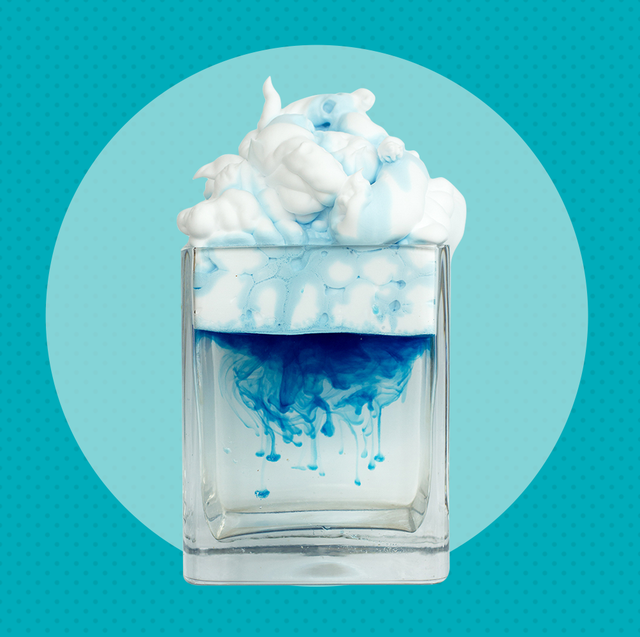
We've been independently researching and testing products for over 120 years. If you buy through our links, we may earn a commission. Learn more about our review process.
Imagine blowing the biggest bubbles imaginable — or even making bubbles within bubbles. Or sending vessels — rockets, tea bags, airplanes — soaring through the sky for impossible distances. Now imagine making things explode, or change colors, or reveal hidden messages with just a few simple mixtures.
First off, it's good to start them off with the scientific method. Give them a journal to record their observations, questions, hypotheses, experiments, results and conclusions. As always, safety counts: wear goggles and coats or aprons if need be (sometimes kids get a kick out of how scientific the protective gear makes them look), and always make sure that the kids are supervised when doing them. (Warning: Some of these are messy!)
These experiments are mostly designed for preschoolers through elementary schoolers — with a couple that are either demonstrations or better for older kids — but if you have a younger one, you can check out these 1-year-old learning activities , toddler learning activities and preschool/kindergarten learning activities , some of which also cover STEM subjects.
Floating Fish

Here's another one that deals with solubility and density.
- Draw the outline of a fish on the bottom of a glass plate or tray in dry-erase marker. Retrace your drawing to make sure all the lines are connected. Let dry for a minute or two.
- Fill the measuring cup with tap water. Place the pour spout just inside the corner of the dish and add water very slowly until it just covers the bottom. Be careful not to pour water directly onto your drawing or make splashes near it. The water will move toward your drawing, eventually surrounding it. Observe what happens. If the water splashes or it doesn’t work on your first try, empty the dish, erase the drawing with a paper towel, dry off the dish, and try again.
- Tilt the dish slightly from side to side. What happens? Jot it down.
The ink in dry erase markers is engineered to be slippery. It’s made with a chemical that causes it to easily release from surfaces. (Permanent markers are made with a chemical that makes the ink stick to surfaces, so be sure not to use these in your experiment!)
The easy-release ink lets go from a surface, but why does it float? There are two reasons. First, dry erase ink isn’t soluble, which means it won’t dissolve in water. Second, dry erase ink is less dense than the water, so it becomes buoyant, meaning it can float. When you tilt the dish, the fish moves around on the water’s surface.
From Good Housekeeping Amazing Science: 83 Hands-on S.T.E.A.M Experiments for Curious Kids! See more in the book »
Brush, Brush!
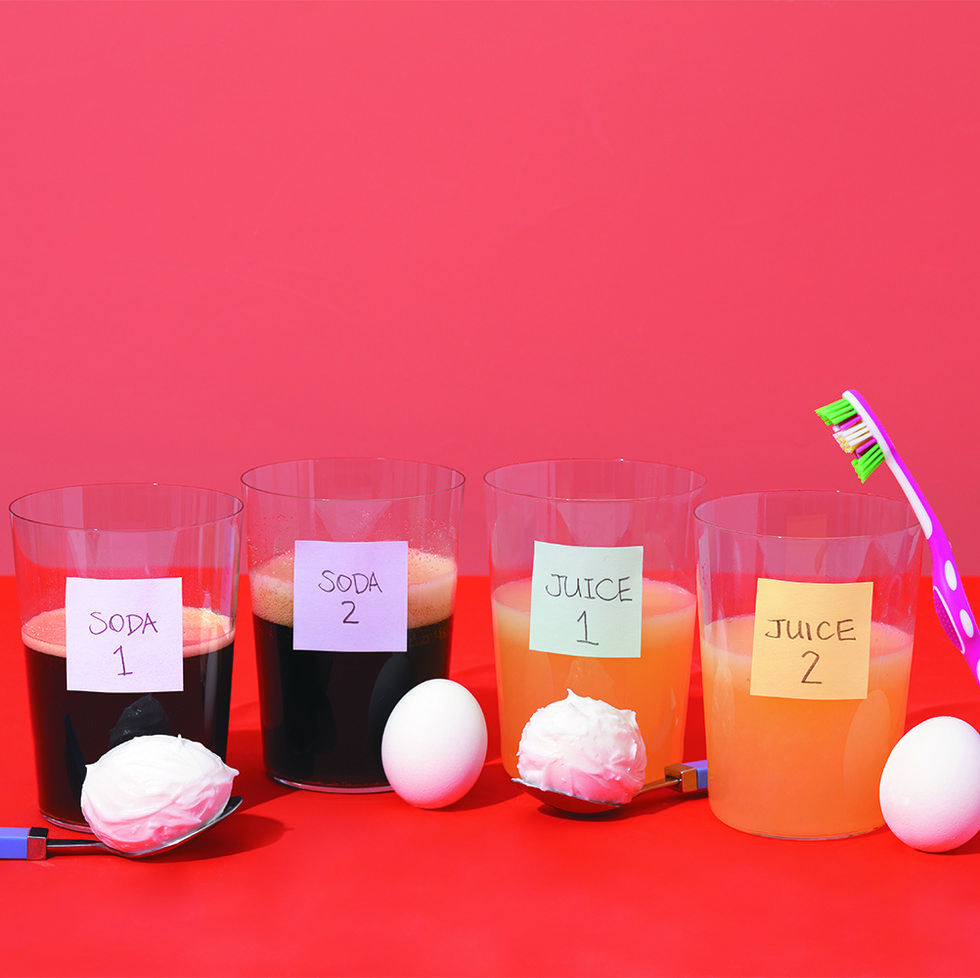
This one will really get them into brushing their teeth once they scientifically prove all the good things that toothpaste can do.
- Write on sticky notes: Soda 1, Soda 2, Juice 1, and Juice 2. Place them in a row on a counter.
- Fill two glasses halfway with brown soda and place behind the Soda 1 and Soda 2 sticky notes. Fill two glasses halfway with lemon juice and place behind the Juice 1 and Juice 2 sticky notes.
- Carefully place one egg in the bowl. Squeeze a big dollop — about one tablespoon — of toothpaste on top of the egg and gently rub the toothpaste all around with your hands until the egg is completely covered in a thick layer of toothpaste. Repeat with a second egg.
- Gently submerge the toothpaste-covered eggs into the liquids: one egg in the glass labeled Soda 1 and the other egg in the glass labeled Juice 1. Wash and dry your hands.
- Gently submerge the remaining eggs, without toothpaste on them, in the remaining glasses: one in the glass labeled Soda 2 and the other in the glass of juice labeled Juice 2. Wash and dry your hands. Leave the eggs in the glasses for 12 hours.
- After 12 hours, remove the eggs from the glasses of soda one at a time. Rinse them in cool water and pat them dry with the towel. Place each egg by the sticky note of the glass it was in. Are the eggs the same or different colors?
- Remove the eggs from the glasses of juice one at a time. Rinse them under the faucet and pat them dry. Place each egg by the sticky note of the glass it was in. Feel the eggs gently. Does one feel stronger or weaker than the other?
- Write down your observations in your science notebook.
The eggshells in this experiment represent the enamel (outer coating) on your teeth. Toothpaste cleans your teeth and prevents stains: it removes food and drink particles that are stuck on your teeth. Teeth can be stained easily by dark-colored liquids like cola, coffee or tea. The egg without toothpaste will be brown and discolored. The egg covered in toothpaste was protected from turning brown.
Toothpaste also protects your pearly whites from decay (breaking down). The egg without toothpaste left in the lemon juice was worn down and soft to the touch, while the egg that was protected with toothpaste is stronger. The lemon juice is acidic, and those acids broke down the shell just as acidic drinks can wear away your tooth enamel. When a tooth is worn down, a cavity can form more easily. But the fluoride in toothpaste mixes with your saliva to create a protective coating around your tooth enamel. It helps keep your teeth strong and cavity-free.
Grow an Avocado Tree

For an easy lesson in Earth Science, your family can grow an avocado tree from a pit. You can buy an AvoSeedo kit , or just peel the seed and suspend it over water with toothpicks.
Get the tutorial »
Milk Bottle Xylophone

No for an experiment in sound!
- Arrange six glass jars or bottles, all the same size with no lids, in a line. What will each jar sound like when you tap it with a spoon? Make a prediction, then tap each jar. Record your observations.
- Next, put water in each of the jars. Pour 1⁄4 cup (60 ml) of water into the first jar. Add 1⁄2 cup (120 ml) of water to the second jar. Continue in 1⁄4-cup increments, adding 3⁄4 cup (180 ml) of water to the third jar, 1 cup (240 ml) of water to the fourth jar, 11⁄4 cups (300 ml) of water to the fifth jar, and 11⁄2 cups (360 ml) to the sixth jar. Add a couple of drops of food coloring to each jar.
- What will each jar sound like? Will they sound the same or different than when the container was empty? Will they sound the same or different from one another? Record your predictions.
- Tap each jar with a metal spoon. Write down your observations about each jar’s pitch (how high or low a sound is) in your notebook.
Sound waves are created by vibrations, which are back-and-forth movements that are repeated again and again. Pitch depends on the frequency of the waves — how many are created each second. A high pitch is created by high-frequency sound waves, and can sound squeaky. A low pitch is created by low-frequency sound waves, and sounds deep and booming.
When you tapped the jar, it vibrated. The vibrations traveled from the jar to the water to the air and eventually to your ears. The jars with more water had a low pitch. The sound waves vibrated more slowly because they had more water to travel through. The jars with less water had higher pitches. The sound waves vibrated faster because they had less water to travel through. A jar with no water in it makes the highest pitch because it has the least substance to travel through.
"Elephant Toothpaste"
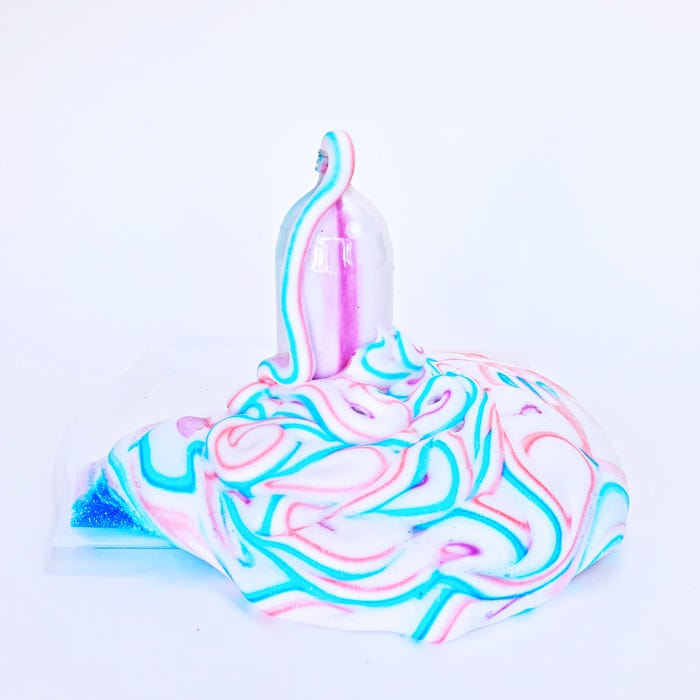
Okay, elephants don't really brush with this stuff, which is made from a chemical reaction between hydrogen peroxide, yeast, dish soap and a few other simple ingredients. But this experiment has a big "wow" factor since, when the substances are mixed, the "toothpaste" foams out of the bottle. You can use it to teach kids about catalysts and exothermic reactions.
Get the tutorial at Babble Dabble Do »
DIY Compass
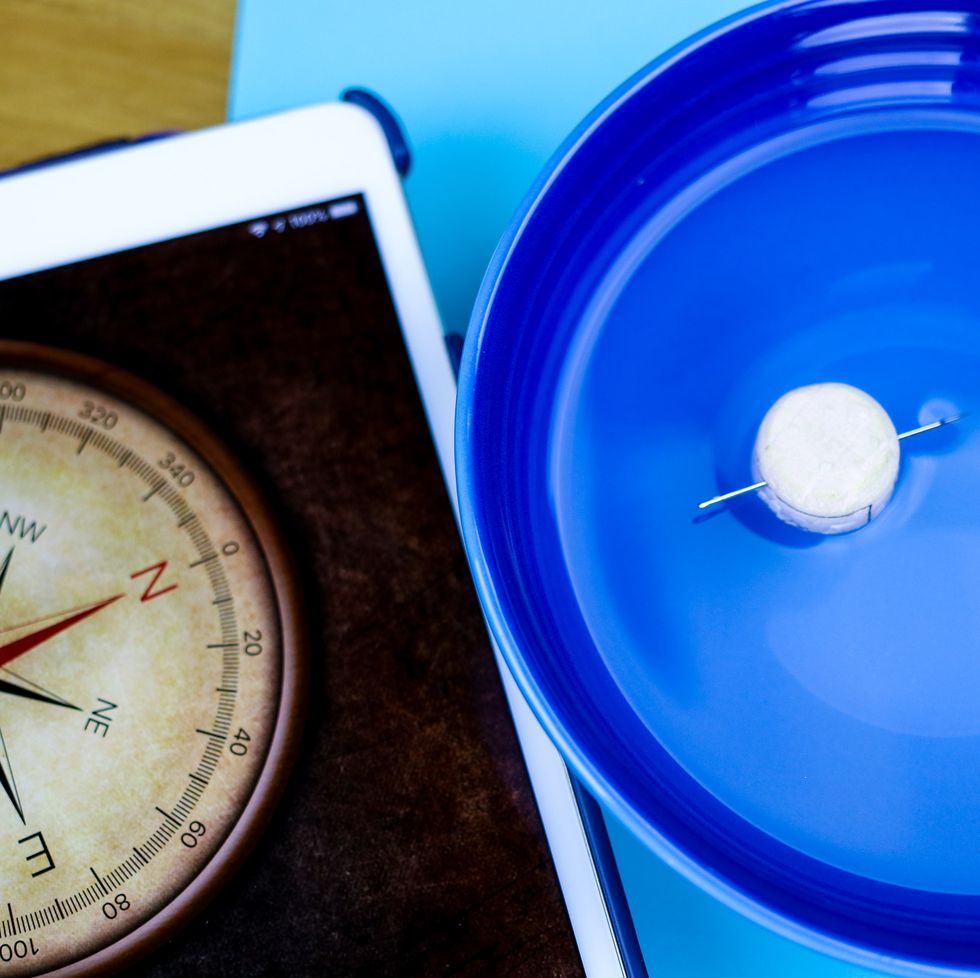
Explore the way magnetism works, and how it affects everyday objects, by magnetizing a needle and making a DIY compass. You can even spin the compass in the water, and it'll end up pointing the right way again.
Get the tutorial at STEAM Powered Family »
Craft Stick Chain Reaction
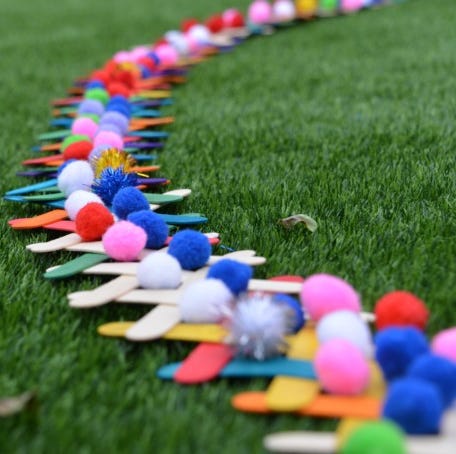
Kids can learn about the differences between potential and kinetic energy with this chain reaction. It makes a big impact: Once the tension is released, the pom poms go flying through the air!
Get the the tutorial at Science Sparks »
Color-Changing Invisible Ink
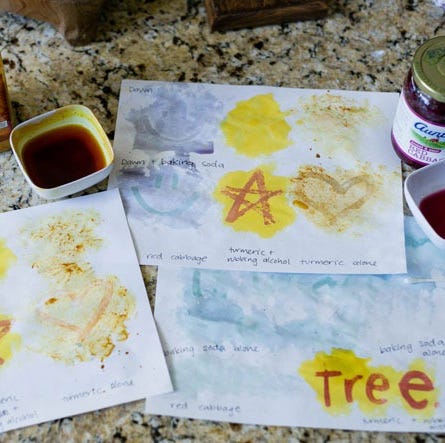
Kids will feel like super-spies when they use this heatless method to reveal pictures or colors written with "invisible ink." You can try different acid/base combinations to see which one makes the most dramatic result.
Get the tutorial at Research Parent »
Paper Bridge
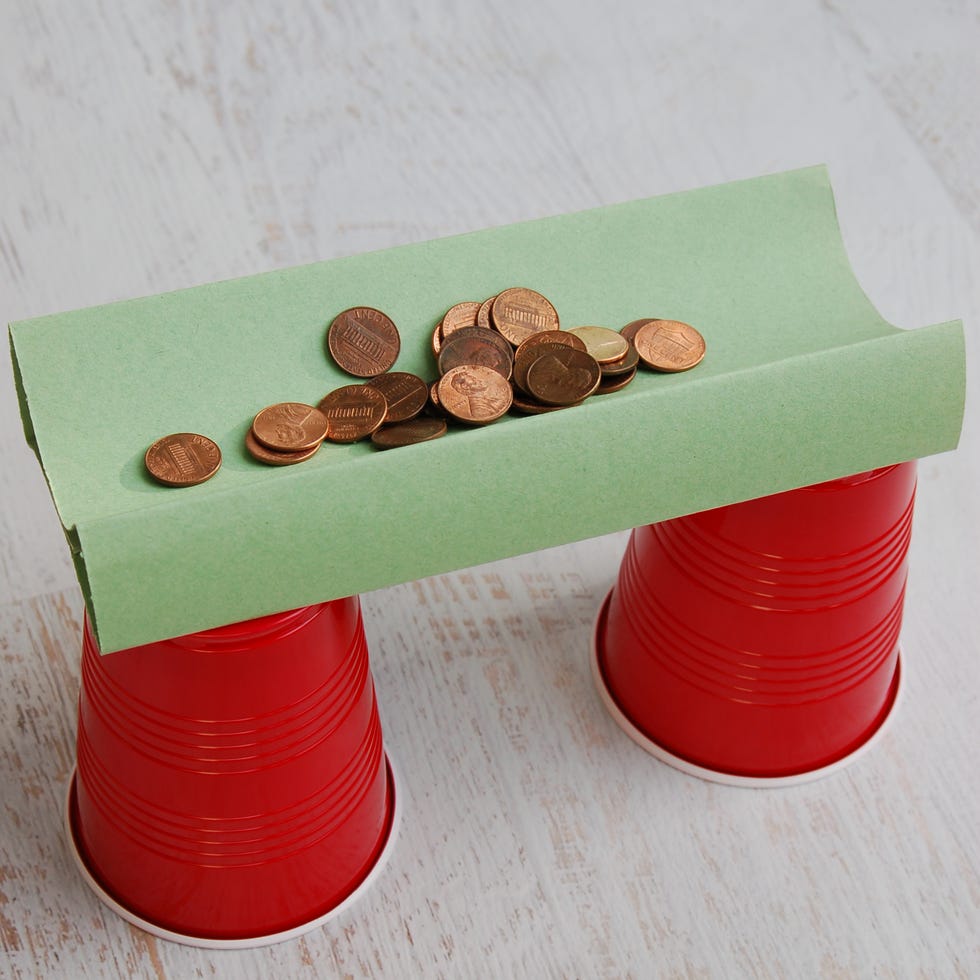
Get the engineering back into STEM with this activity, which challenges kids to create a paper bridge that's strong enough to hold as many pennies as possible. How can they manipulate the paper to make it sturdier? (Hint: Fold it!)
See the paper bridge tutorial at KidsActivities.com »
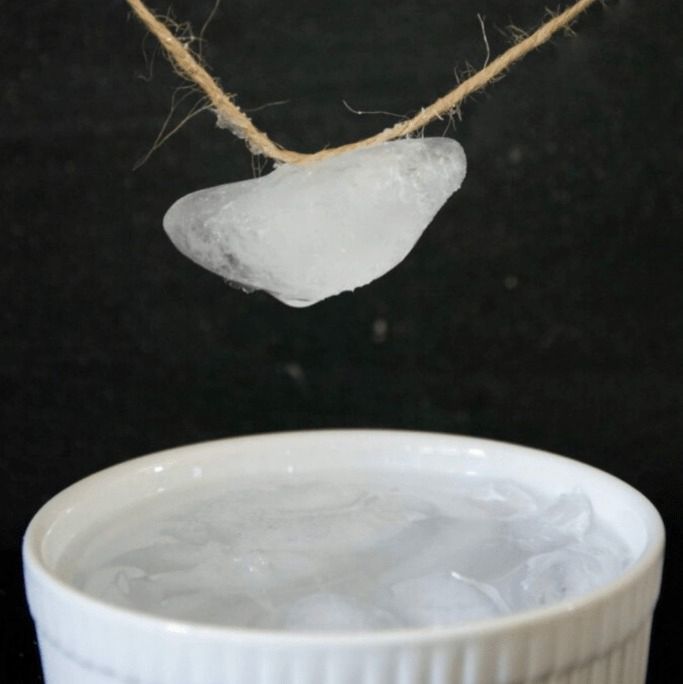
Challenge your little scientist to lift up an ice cube with just a piece of string. It's possible ... with a little salt to help. Salt melts the ice and lowers the freezing point of the ice cube, which absorbs the heat from the water around it, making the water cold enough to re-freeze around the string.
Get the tutorial at Playdough to Plato »
Marshmallow Catapult
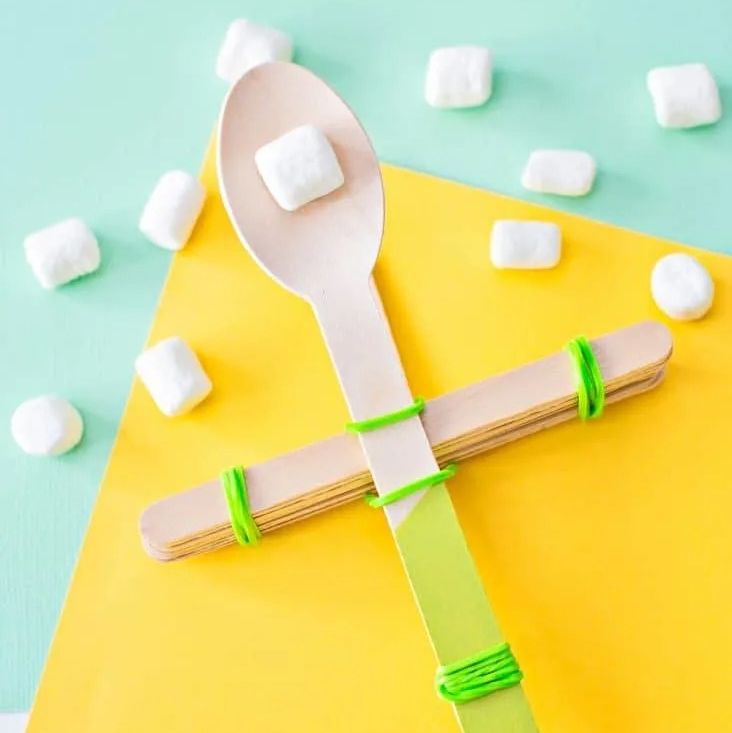
Another lesson in potential and kinetic energy, kids will love sending mini marshmallows flying in the name of science. Change some of the variables and see how that affects the marshmallow's trajectory.
Get the tutorial at Hello, Wonderful »
Leaf Breathing
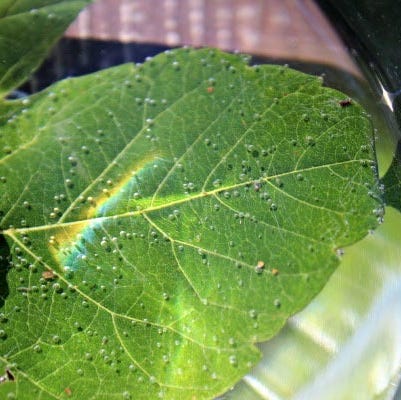
It's hard for kids to picture how plants and trees "breathe" through their leaves — until they see the bubbles appear on a leaf that's submerged in water. You can also teach them about photosynthesis by putting different leaves in different spots with varying levels of sunlight.
Get the tutorial at KC EDventures »
Hoop-and-Straw Airplane

We all remember how to fold those classic, triangular paper airplanes, but these hoop-and-straw airplanes fly way better (and straighter). Experiment by changing the length of the straw and the size of the hoops and see how it affects the flight.
Get the tutorial at Mombrite »
Film Canister Rocket

Blast off! You don't need jet fuel to make these rockets go, just Alka-Seltzer tablets and baking soda, but they'll be amazed when they achieve lift-off! (Note: If you can't find old film canisters, tubes of Airborne work, too.)
Get the tutorial at Raising Lifelong Learners »
Coin Inertia
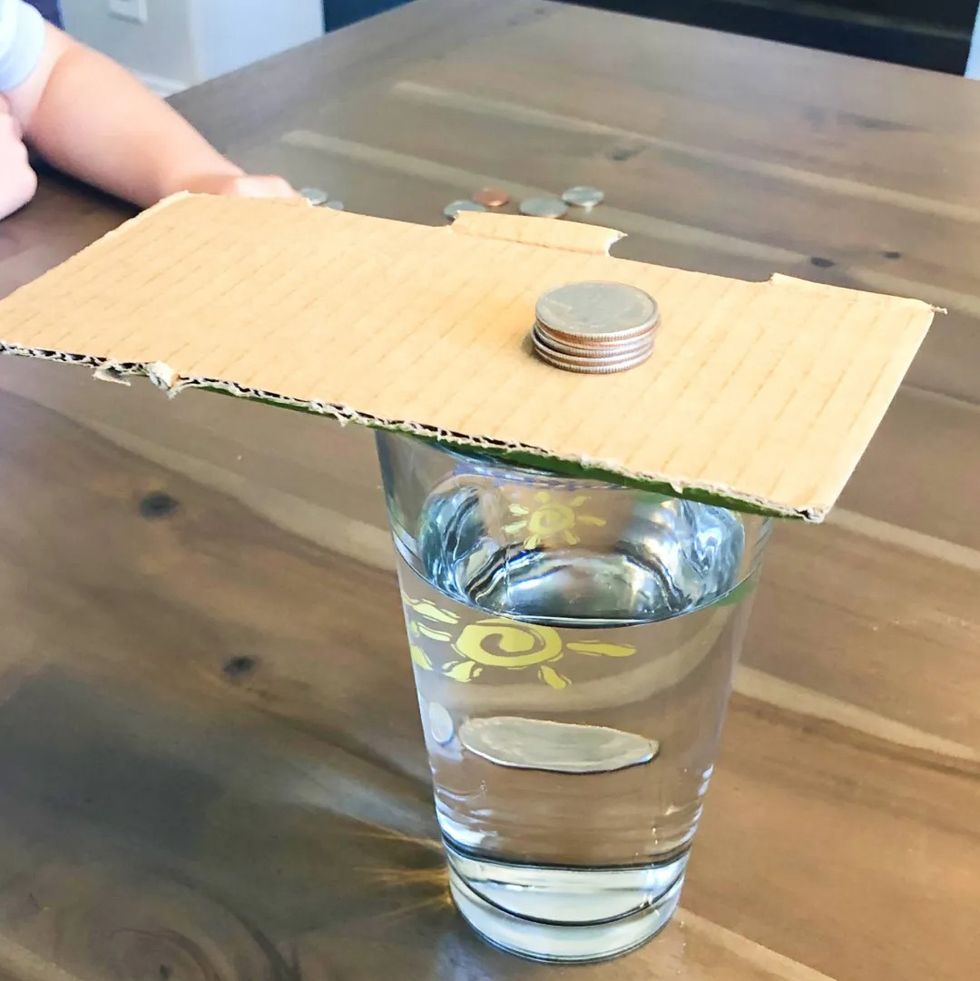
Stack up about five or so coins on a piece of cardboard and place it over a glass of water. Then, flick the cardboard out from on top of the glass. Do the coins drop into the water, or ride with the cardboard? Due to inertia, they drop into the water — a very visual (and fun!) demonstration of Newton's First Law of Motion.
Get the tutorial at Engineering Emily »
Apple Oxidation

What works best for keeping an apple from turning brown? Test to find out! Slice up an apple, and let each slice soak in a different liquid. Then take them out, lay them on a tray, and check the brownness after three minutes, six minutes and so on. Not only does this test the properties of different liquids, it also helps students practice the scientific method if they create hypotheses about which liquids would be most effective.
Get the tutorial at Jennifer Findley »
RELATED: 50 Fun Activities for Kids Will Keep Them Entertained for Hours
Coffee Ground Fossils

By making a salt dough with coffee grounds and pressing various shapes into it (toy dinosaur feet, seashells), kids can get a better understanding of how fossils are made. If you poke a hole in the top before it dries, the kids can hang their "fossils" up in their rooms.
Get the tutorial at Crafts by Amanda »
Chromatography Flowers
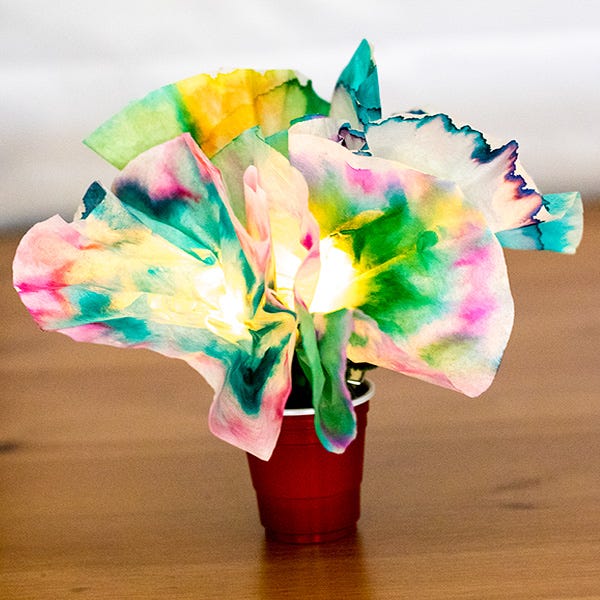
Chromatography is the process of separating a solution into different parts — like the pigments in the ink used in markers. If you draw stripes around a coffee filter, then fold it up and dip the tip in water, the water will travel up the filter and separate the marker ink into its different pigments (in cool patterns that you can display as a craft project). This family made the end-result even brighter by adding an LED circuit to the center.
Get the tutorial at Steam Powered Family »
Water Walking
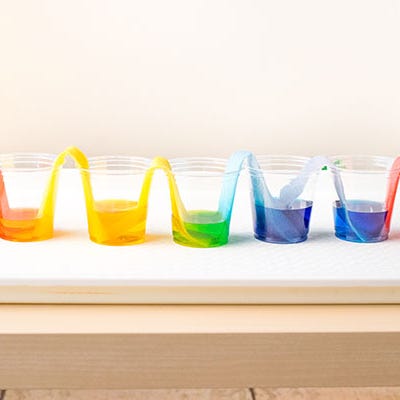
You'll need six containers of water for this one: three with clear water, one with red food coloring, one with blue coloring, and one with yellow coloring. Arrange them in a circle, alternating colored and clear containers, and make bridges between the containers with folded paper towels. Your kids will be amazed to see the colored water "walk" over the bridges and into the clear containers, mixing colors, and giving them a first-hand look at the magic of capillarity.
Get the tutorial at Fun Learning for Kids »
Sunscreen Test
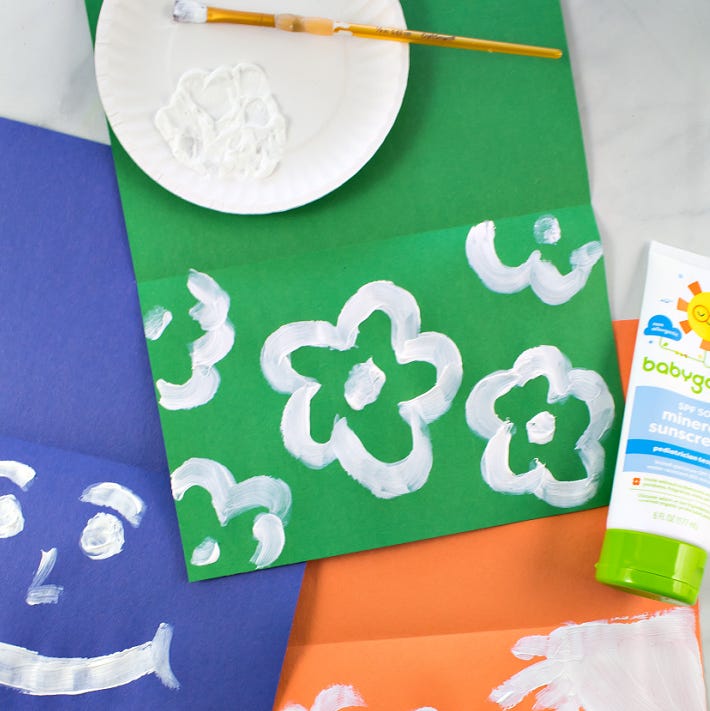
This experiment puts the A (art) in STEAM: Paint different designs on construction paper with different sunscreens, leave the papers out in the sun and compare the results. Then, hang your "conclusions" on your fridge.
Get the tutorial at Tonya Staab »
Marisa (she/her) has covered all things parenting, from the postpartum period through the empty nest, for Good Housekeeping since 2018; she previously wrote about parents and families at Parents and Working Mother . She lives with her husband and daughter in Brooklyn, where she can be found dominating the audio round at her local bar trivia night or tweeting about movies.

@media(max-width: 64rem){.css-o9j0dn:before{margin-bottom:0.5rem;margin-right:0.625rem;color:#ffffff;width:1.25rem;bottom:-0.2rem;height:1.25rem;content:'_';display:inline-block;position:relative;line-height:1;background-repeat:no-repeat;}.loaded .css-o9j0dn:before{background-image:url(/_assets/design-tokens/goodhousekeeping/static/images/Clover.5c7a1a0.svg);}}@media(min-width: 48rem){.loaded .css-o9j0dn:before{background-image:url(/_assets/design-tokens/goodhousekeeping/static/images/Clover.5c7a1a0.svg);}} Parenting Tips & Advice

Tips for Getting the Kids to School on Time
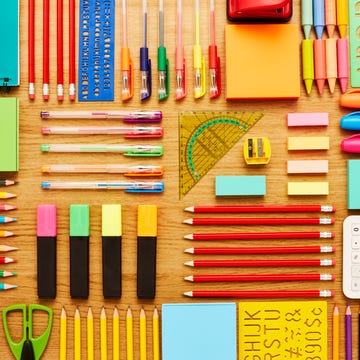
The Ultimate Back-to-School Supplies List
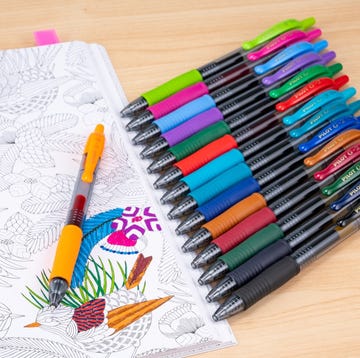
Why I Love Pilot Pens

100 Funny and Thoughtful New Baby Messages

The Ultimate List of the Best Jokes for Kids

150 Thought-Provoking Questions for Kids

How I Became a "Theme Dresser"

These 200 Baby Girl Names Are Short and Sweet
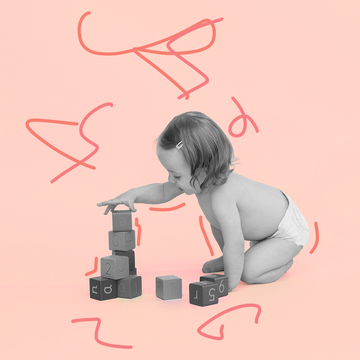
150 Hispanic Girl Names

200 Unique Middle Names for Girls

How Parents Can Deal With Summer Homework
10 quick and Easy science experiments for toddlers that are totally awesome {2 years old and Up}
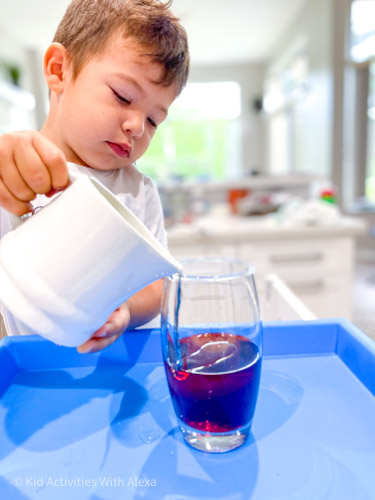
It is science week here at Tot School, and to celebrate, we had a week full of daily science experiments for toddlers.
If you are looking for easy science experiments for toddlers to learn and enjoy, these are our top favorites so far!
All of these science experiments for toddlers are age-appropriate, fun, and have been tested and approved by my own toddler 2-year-old toddler as well as my sensory students.
The Best science experiments for toddlers
#1 volcanic eruptions.
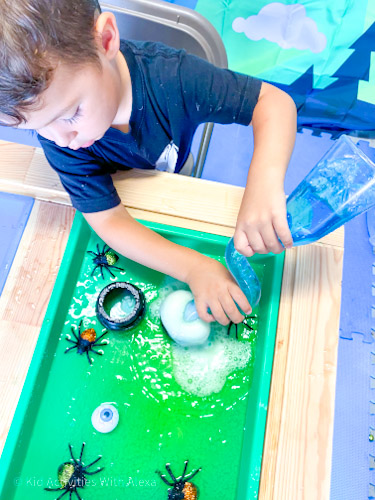
Also called witches brew. This science experiment for toddlers come in as number 1 in our list because it is so easy to make, it is so much fun to do, and the kids can do it themselves.
To do this experiment, all you need is some baking soda and vinegar. The mixture between the two created a magic explosion that is safe for the little ones and a lot of fun.
Use food coloring to change the color of the bubbles. Add water to the vinegar to dilute and expand the use of it, the kids love to pour and see the bubbles repeatedly, so this will extend the activity for extra playtime.
Learn how to set up this witches brew experiment with step by step instructions
#2 fizzy cubes.

To make fizzy cubes freeze a mixture of baking soda and water. Activate with the vinegar the same way mentioned above.
To change the activity and work fine motor skills , this activity was set up using a dropper to suck the vinegar and squeeze it into the fizzy cube.
My toddler tried it a few times but wanted a faster way to dissolve the cubes. He enjoyed grabbing each of the fizzy cubes and dropping them into the vinegar cup.
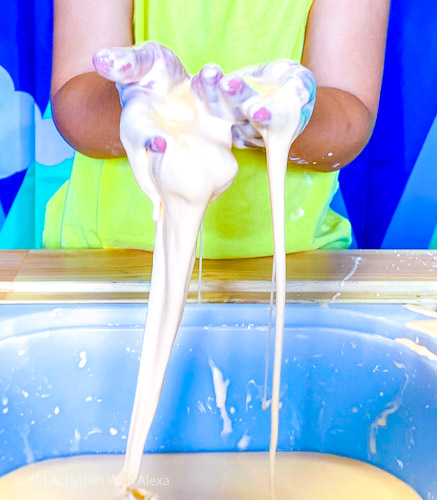
Making Oobleck is one of my favorite activities, but it can get very messy! When you grab this substance, it is solid, but it melts and becomes liquid when you let go of the pressure.
To do this science experiment all you need is two parts cornstarch and 1 part water.
Watch our quick video or get the step by step instructions and learn how to make oobleck
View this post on Instagram Make the coolest science experiment for toddlers and am kids of all ages. All you need is water, cornstarch and food coloring. (Be careful as some food coloring can temporarily stain the hand) 1 cup of water to about 2 cups of corns starch A post shared by Alexa | Kid Activities (@kidactivitieswithalexa) on Jul 15, 2020 at 6:38pm PDT
#4 Sink or Float

Understanding weight is one of the first science experiments that you can do at home. All you need is a bowl of water and a few water-safe objects.
Start by identifying what happens when each objects touches the water. Repetition here is key!
Once tout toddler grasps the new vocabulary words and correctly identifies what is happening then try to ask before the item gets dropped to guess what he thinks is going to happen.
You can repeat this experiment during bath time, at the pool or anywhere you have access to water.
Have you played the sink or float game? Well, actually is a science experiment and one of our favorite activities. I usually let Manu set up the whole thing form the beginning. I give him a pitcher of water and an empty bowl for him to pour h the e water into. Then we walk around and find different things to test out. Will it float? Will it sink? I let him pick what he wants to throw (as long as it can get wet and has no batteries) and this freedom lets him explore and learn. Who knew a bowl of water could be so fun! #2yearoldactivities #toddleractivitiesathome Posted by Kid Activities with Alexa on Monday, September 28, 2020

Learn how to set up the sink of float experiment with step by step instructions
#5 hot and cold.
Learn about temperature using sensory bottles. We filled out one bottle of water with cold water and added a few ice cubes and filled out a second one using hot water. We dyed the cold water blue and the hot water yellow to help associate the concepts.

We also paired this opposite lesson with a YouTube video which we learned the lyrics and acted out the finger-play actions throughout the week.
#6 mixing Colors
Once a toddler is familiar with the colors, can identify and name them correctly it is time to add colors into science experiments. Working with primary colors we have started to create a few experiments to make new colors. This week was all about yellow and blue makes green. We did it with some water, food coloring and soap as well as with paint.
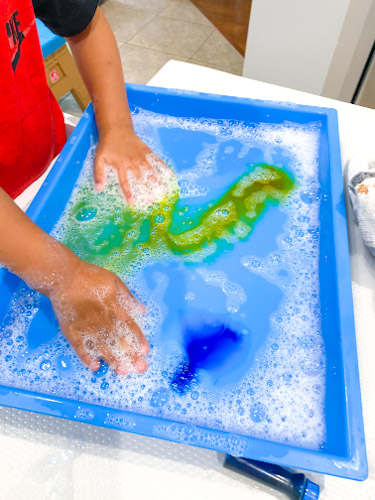
What Primary colors make new colors?
- Red and Yellow makes Orange
- Yellow and blue makes Green
- Blue and Red makes Purple/Voilet

Discovering air is one of the very first science concepts that can be taught, Do this experiment if your child knows how to blow out already. Add a squirt of dish soap into a bowl and some water. Provide a straw and show your toddler how to blow to create bubbles.
Look at the colors the bubbles reflect, can you hold it? does it pop? can you blow on them? what happens?
As a variation of this experiment, you can add watercolor paint to the solution and allow the colored bubbles to pop into a paper to create a work of art.
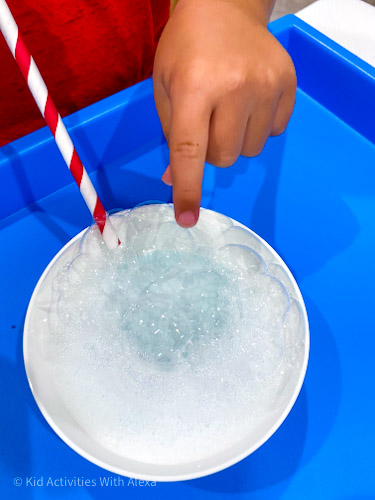
#8 DIY Lava Lamp
This experiment was one of Manu’s favorite. To create your own DIY lava lamp you will need vegetable oil, water, food coloring and effervescent tablets.
For our first try we filled out 1/2 of the glass cup with water and added food coloring (too much!) and the other half with vegetable oil. I crushed the effervescent tablet in many pieces as I knew my toddler would enjoy dropping them tablets into the glass.
Once the tablet hits the water, it starts to dissolve and create bubbles who travel upwards on the glass, passing through the oil and popping into the surface. Because the water doesn’t mix with the oil, you can visually see how these bubbles travel towards the surface and once they pop how the water travel back down.
For our second try, we did only 1/4 of water and used a lot less food coloring and added a lot more vegetable oil to the glass. The lava lamp looked a lot better as the colored water bubbles had more room to travel.
Cutting up the tablets in different pieces was a great ideas. Manu loved creating the bubbles and enjoyed repeating it over and over.
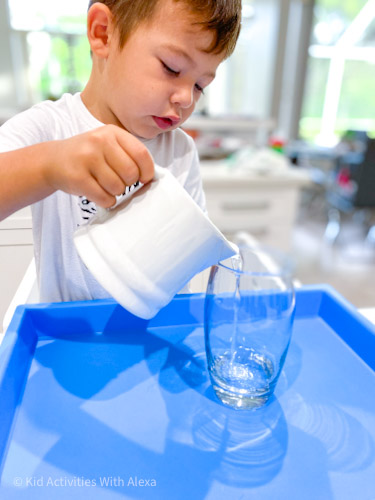
Slime is a great tool to work on fine motor skills, it is also a cool chemistry experiment. Similar to oobleck, slime changes is composition when played with. It is solid but stretches or breaks. For toddlers, of course, they won’t really understand the science concept behind it but they will enjoy playing with the material and making their own little experiments as they learn and understand how slime behaves. Is not like playdough, it is not like oobleck, it is its own unique material.
I like to use fluffy slime , like the rainbow slime or the white fluffy slime with toddlers. Fluffy slime is less stretchy that other types so it is easier to handle by toddlers.
Learn how to make rainbow slime
Learn how to make white fluffy slime.
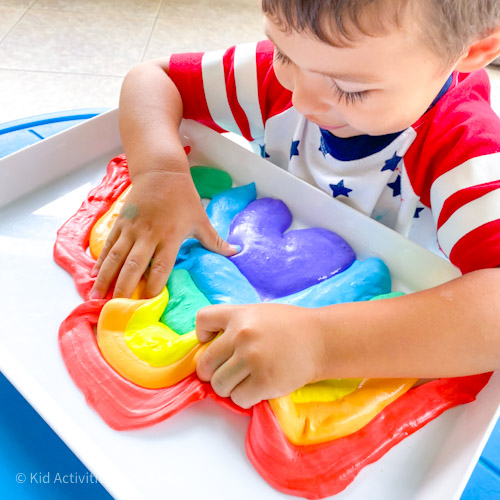
#10 Exploring light
Learning about light and dark, shadows and reflections are all science activities you can start exploring early on.
Make shadows using cutout woods or use your hands and a flashlight, use the sun to explore the light and it’s reflection. We have done colored bottles to explore the colors reflect on the floor, made apple shaped suncatchers and made a glow in the dark sensory bottle.
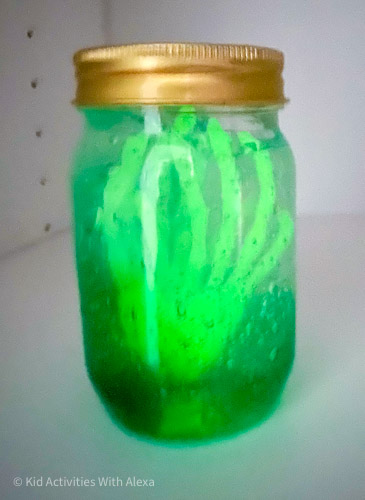
Last Thoughts
Science can be a lot of fun and as you can see, you can start even when they are toddlers. Allowing your toddler time and exposure to different materials and experiments helps them understand the world they live in, gives them the confident to experiment and explore and gain a ton of new information when doing so. Don’t forget to always supervise any experiment or invitation to play.
Get tons of creative ideas to do with your toddler at home! Become a PLAY MEMBER by signing up for the newsletter.
Play members get seasonal activity ideas right in their inbox, a special invitation to our Mommy & Me Virtual Circle time, and access to our free library with educational printables and activities to develop your child through sensory play and reach their developmental milestones while getting a head start when entering Pre-K.
like kt? Love it? Share it!
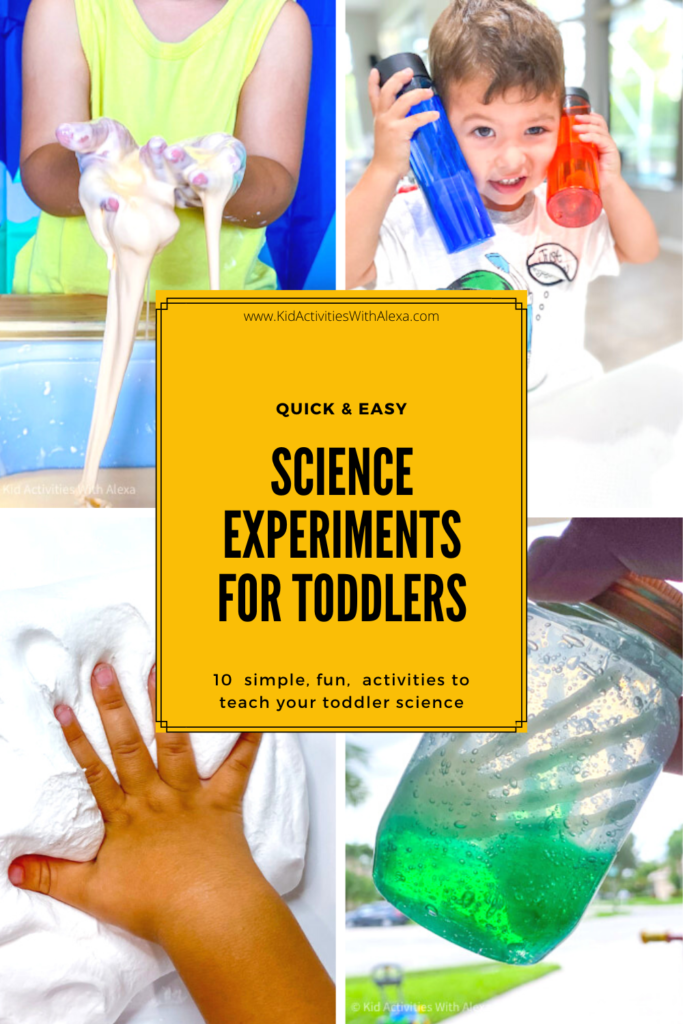
Share With Friends!
1 thought on “10 quick and easy science experiments for toddlers that are totally awesome {2 years old and up}”.
- Pingback: 12+ Of the best halloween activities for toddlers {2 year olds and up} - Kid Activities with Alexa
Comments are closed.
Let's Connect on Social

Terms and Conditions - Privacy Policy
Cool Science Experiments Headquarters
Making Science Fun, Easy to Teach and Exciting to Learn!
Science Experiments
35 Easy Science Experiments You Can Do Today!
Looking for easy science experiments to do at home or in the classroom? You’re in luck because we’ve got over 35 easy science activities for kids that will help you make science fun for all ages.
Most of these simple science experiments for kids are easy to prepare, quick to perform, and use household items or inexpensive materials you can find almost anywhere. To connect the fun to the “why it works” you’ll find an easy to teach explanation with every experiment!
Musical Jars Science Experiment
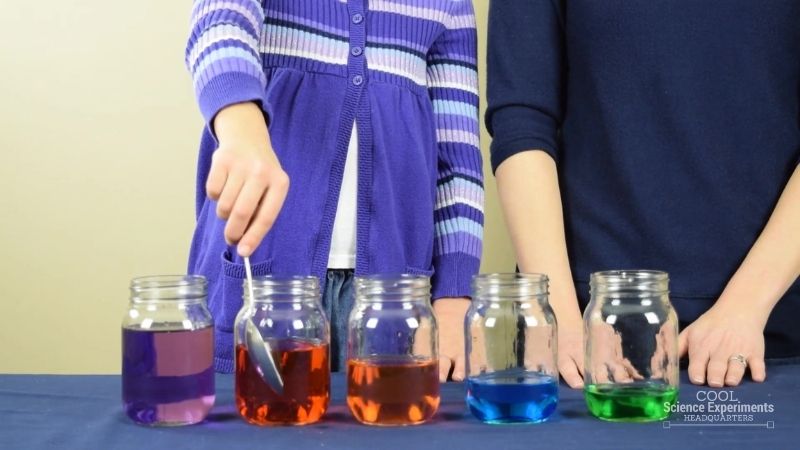
This super easy experiment is simple as it is fun! Kids make their own musical instruments with clear jars and water then investigate sound waves, pitch, and more.
When the experiment is complete, use the colorful new “instrument” for a fun music lesson. Kids can play and take turns to “name that tune”!
Detailed Instructions & Video Tutorial -> Musical Jars Science Experiment
Viscosity of Liquids Science Experiment

Viscosity may be a confusing term for kids at first, but this super easy experiment can help them see viscosity in action!
With marbles, clear jars, and a few household materials, kids will make predictions, record data, and compare the results while they test high and low density liquids.
Detailed Instructions & Video Tutorial -> Viscosity Science Experiment
Floating Egg Science Experiment
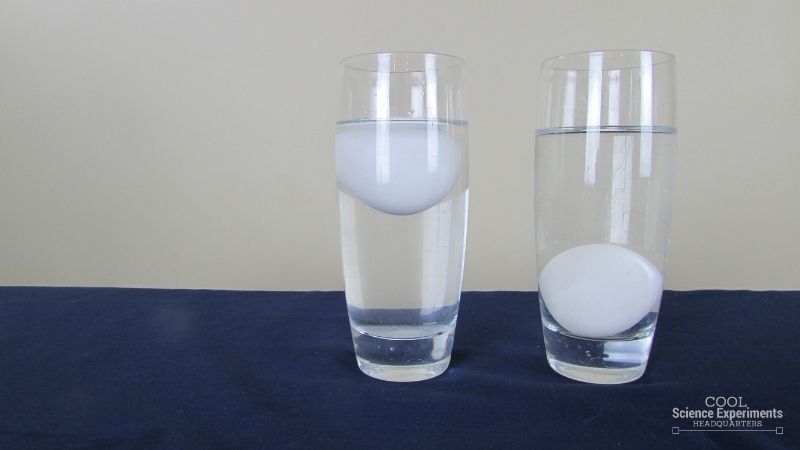
Can a solid egg float? Kids can find the answer and understand why with this quick science experiment.
Discover just how easy it can be to make a raw egg float while testing the laws of density. We’ve included additional ideas to try so kids can make predictions and test the concept further.
Detailed Instructions & Video Tutorial -> Floating Egg Science Experiment
Paper Towel Dry Under Water Experiment
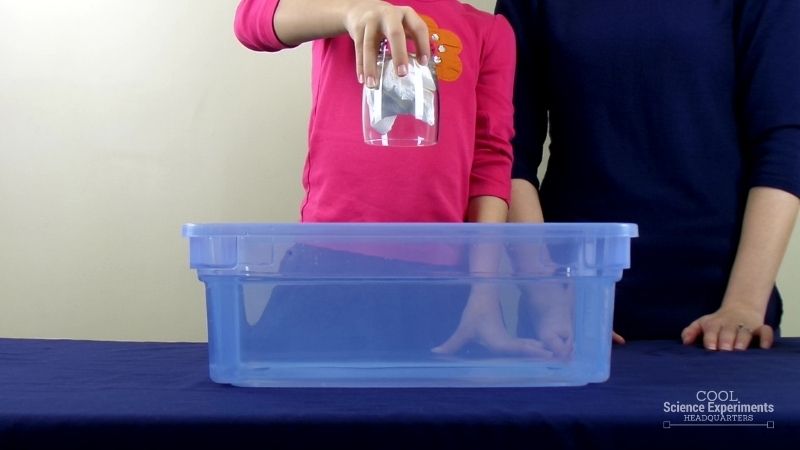
Is it possible to keep a paper towel dry even when submerging it under water? The answer is a surprising “yes,” if you use science to help!
Start with the properties of your materials, make a prediction, then explore matter, density, volume, and more.
Detailed Instructions & Video Tutorial -> Paper Towel Dry Under Water Experiment
Mixing Oil & Water Science Experiment

This simple experiment for kids helps them better understand density and the changes that happen when adding an emulsifier to the mix.
Detailed Instructions & Video Tutorial -> Mixing Oil & Water Experiment
Will it Float or Sink Science Experiment
Will it sink or will it float? This fun experiment challenges what students think they know about household items!
Students record their hypothesis for each item then test it to compare what they think will happen against their observations.
Detailed Instructions & Video Tutorial -> Float or Sink Science Experiment
Water Temperature Science Experiment

What does thermal energy look like? In this easy science experiment, kids are able to see thermal energy as they explore the concept in action.
With clear jars and food coloring, students can quickly see how molecules move differently through hot and cold water.
Detailed Instructions & Video Tutorial -> Water Temperature Science Experiment
Balloon Blow-up Science Experiment
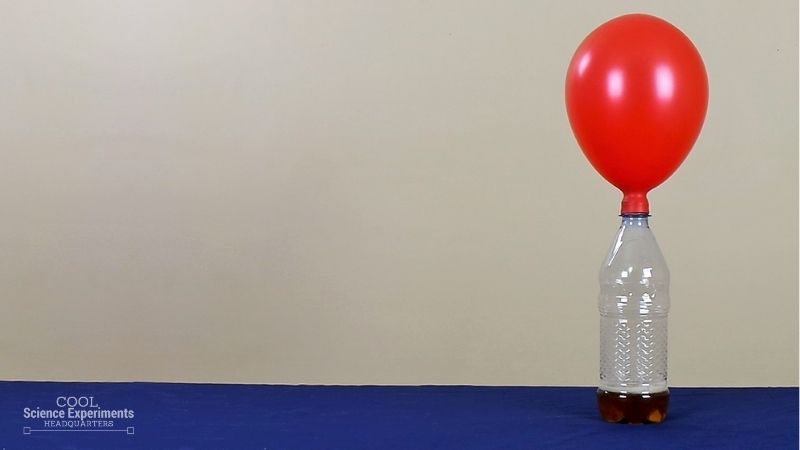
Kids will discover how matter reacts when heated and cooled as they watch with surprise as baking soda and vinegar blow the balloon up before their eyes.
Detailed Instructions & Video Tutorial -> Balloon Blow-up Science Experiment
Floating Ping Pong Ball Science Experiment
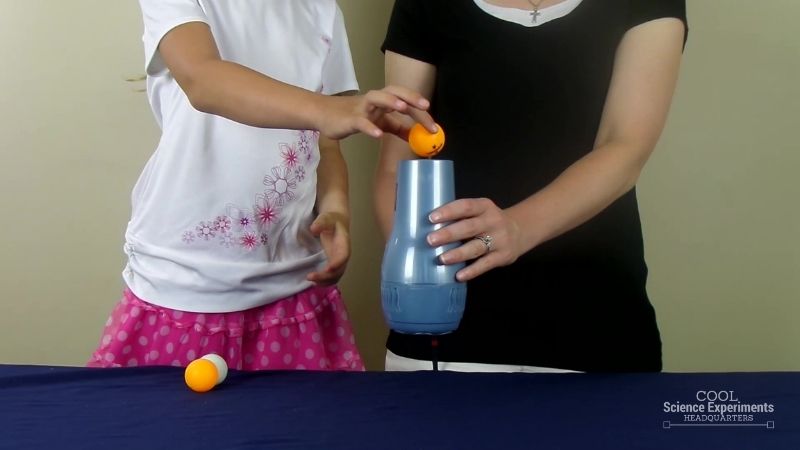
Kids will giggle with joy with this super easy experiment. With only a ping pong ball and a hair dryer, students will have a great time while exploring Bernoulli’s Principle in action.
We’ve included additional ideas to further explore the concept with different objects and observe the change in results.
Detailed Instructions & Video Tutorial -> Floating Ping Pong Ball Science Experiment
Hair Stand on End Science Experiment
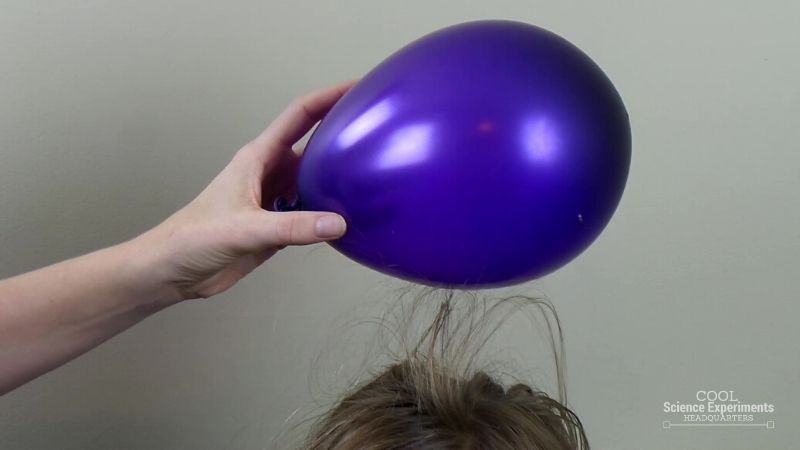
It’s especially fun for those who’ve never seen static electricity in action before!
Detailed Instructions & Video Tutorial -> Hair Stand on End Science Experiment
Oil Bubbles in Water Science Experiment

Kids explore density and experience some chemistry when creating oil bubbles in water with everyday household items.
This experiment is particularly fun when kids see that they’ve made what looks like a lava lamp!
Detailed Instructions & Video Tutorial -> Oil Bubbles in Water Science Experiment
Color Changing Water Science Experiment

Kids will be surprised as they watch a new color being “created” without mixing! Using only a clear bowl and glass, some food coloring, and water, this super easy science experiment is quick and easy with a huge wow factor.
Try it with yellow and blue to follow along with our demonstration video then try different primary color combinations and explore the results.
Detailed Instructions & Video Tutorial -> Color Changing Water Science Experiment
Magnetic Paper Clip Chain Science Experiment

It may seem a bit like magic but it’s actually science! It’s not hard to capture your kids’ attention with this quick and easy science experiment as they watch paper clips “stick” together and form a chain!
Perfect for younger children, the experiment only takes a few minutes and is a fun way to explore the concept of magnetic transference.
Detailed Instructions & Video Tutorial -> Magnetic Paper Clip Chain Science Experiment
Is it Magnetic Science Experiment
With only a magnet and a few household items, kids will make and record their predictions, test and observe, then compare what they think is magnetic against the results.
Simple and quick, but some of the results may surprise your students!
Cloud in a Jar Experiment
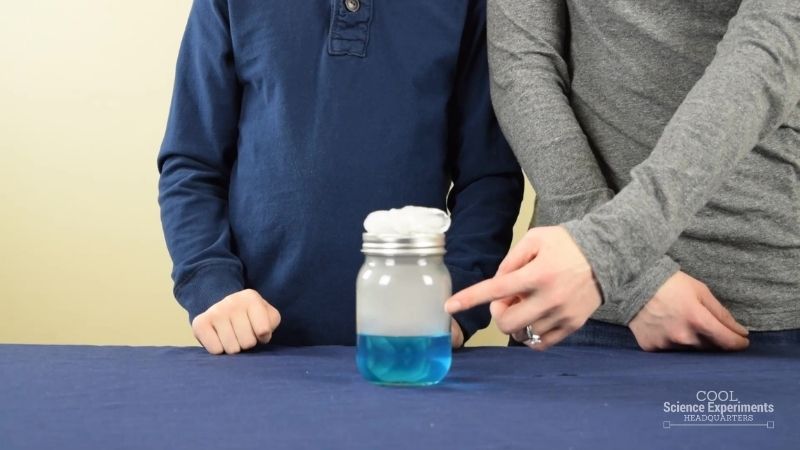
This simple experiment only requires a few materials but really holds student attention as a cloud forms before their eyes!
Kids will learn new weather vocabulary as they explore how physical changes and reactions happen as clouds begin to take form. We’ve also included a helpful chart on the types of clouds.
Detailed Instructions & Video Tutorial -> Cloud in a Jar Science Experiment
Magic Milk Science Experiment
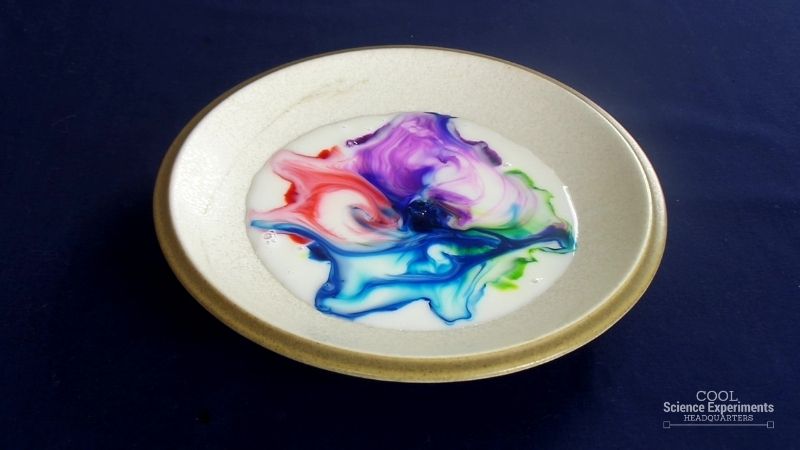
Create a dancing rainbow of colors with this easy science experiment for kids!
Using only a few ordinary kitchen items, your students can create a color explosion in ordinary milk when they add our special ingredient. (Hint: The special ingredient (soap!) includes hydrophilic and hydrophobic molecules that make the magic happen!)
Detailed Instructions & Video Tutorial -> Magic Milk Science Experiment
Walking Water Science Experiment

Water can’t really walk upwards against gravity, but this cool science experiment makes it seem like it can!
Kids are able to see the capillary action process and learn how attraction and adhesive forces in action allow water to move out of one glass into another.
Detailed Instructions & Video Tutorial -> Walking Water Science Experiment
Light Refraction Science Experiment
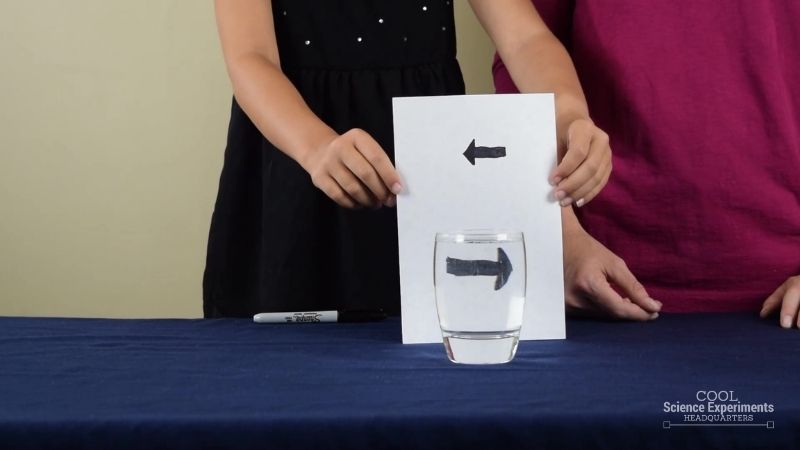
The results of this easy science experiment are so amazing, it makes kids (and adults) think it must be magic!
Young scientists watch in surprise while they see an arrow change directions instantly. Investigating refraction couldn’t be more fun!
Detailed Instructions & Video Tutorial -> Light Refraction Science Experiment
Dancing Raisins Experiment

Learn about the reactions of buoyancy and density in this simple science activity for kids.
They may not need dancing shoes, but give them a glass of soda pop and the raisins in this fun experiment love to dance!
Detailed Instructions & Video Tutorial -> Dancing Raisins Science Experiment
See Sound Experiment
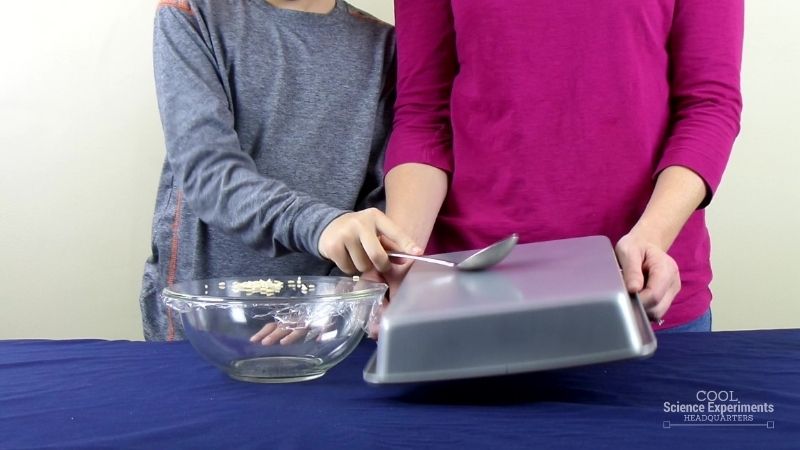
Kids love this experiment because they are encouraged to drum loudly so they can “see” sound waves in action!
Detailed Instructions & Video Tutorial -> See Sound Science Experiment
Elephant Toothpaste Science Experiment

Grab some giant brushes and get ready to make elephant toothpaste! Although you might not be able to get an elephant excited by this super easy experiment, kids love it!
The impressive and quick results created by the chemical reaction and the heat released in the process makes an abundant amount of fun and colorful foam!
Detailed Instructions & Video Tutorial -> Elephant Toothpaste Science Experiment
Upside Down Glass of Water Science Experiment
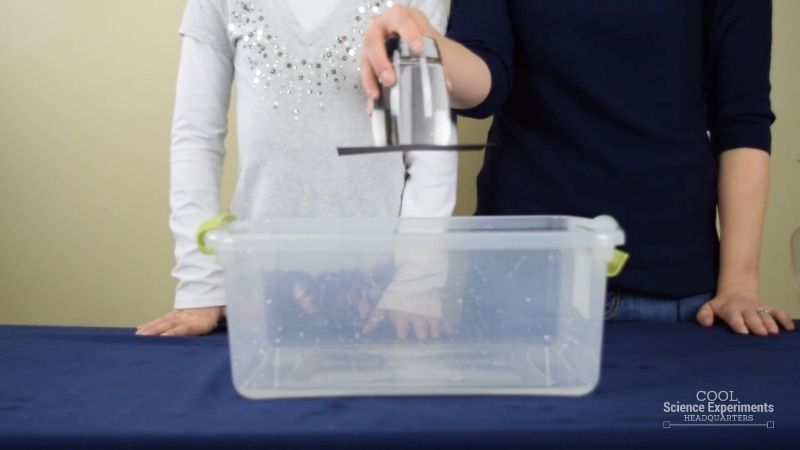
We all know what happens when we turn a glass of water upside down, but what if I told you you can do it without the water spilling out?
The experiment only requires a few common items and you’ll be amazed by the results of air pressure in action!
Detailed Instructions & Video Tutorial -> Upside Down Glass of Water Science Experiment
Pick up Ball with a Jar Science Experiment
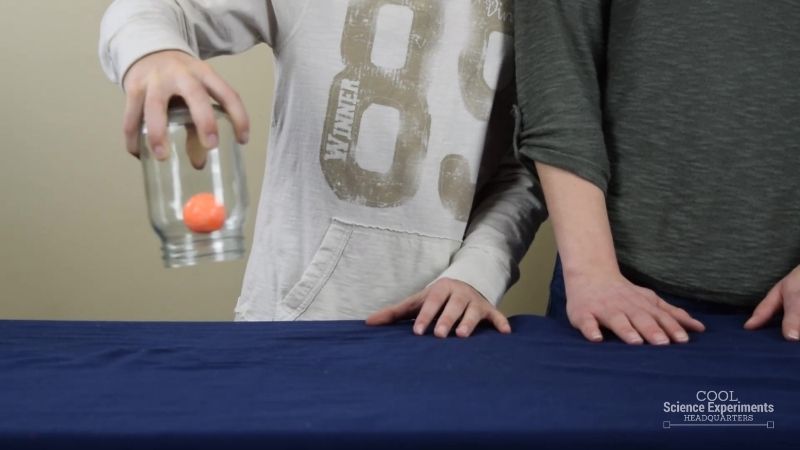
It almost seems like magic but with the help of science, you can pick up a ball with an open jar!
Instead of magic, this easy science activity uses centripetal force and practice to do what seems like the impossible.
Detailed Instructions & Video Tutorial -> Pick up Ball with a Jar Experiment
Will It Melt Science Experiment
Can you guess which items will melt? This easy outside experiment challenges what students think they know about the effects of the sun.
Pepper Move Science Experiment
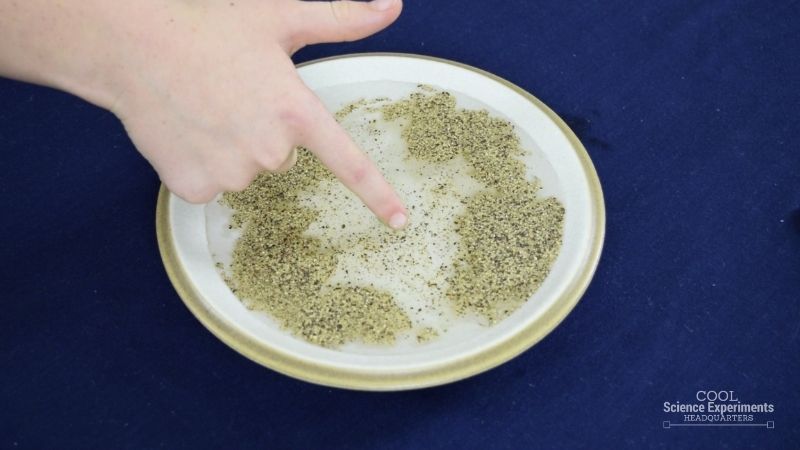
Can you make pepper move and zoom away with just a light touch of your finger? With science you can!
This experiment only takes a few quick minutes from beginning to end, but the reaction caused by surface tension makes kids want to do it over and over.
Detailed Instructions & Video Tutorial -> Pepper Move Science Experiment
Crush a Plastic Bottle Science Experiment

Go for it, crush that bottle, but don’t touch it! Although it usually can’t be seen or touched, air pressure is pushing against all surfaces at all times.
With this easy science activity kids can see air pressure at work when they watch a bottle crushes itself!
Detailed Instructions & Video Tutorial -> Crush a Plastic Bottle Science Experiment
Egg in Vinegar Science Experiment
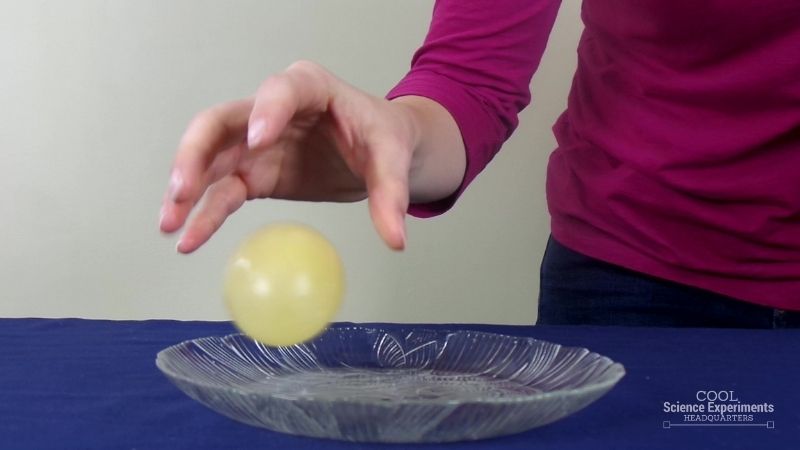
This vinegar science experiment will have your eggs and kids bouncing (with excitement!) before you know it!
Kids can watch and explore the results of chemical reactions as the egg changes from something that seems solid into what feels like something bouncy!
Detailed Instructions & Video Tutorial -> Egg in Vinegar Science Experiment
Straw Through a Potato Science Experiment
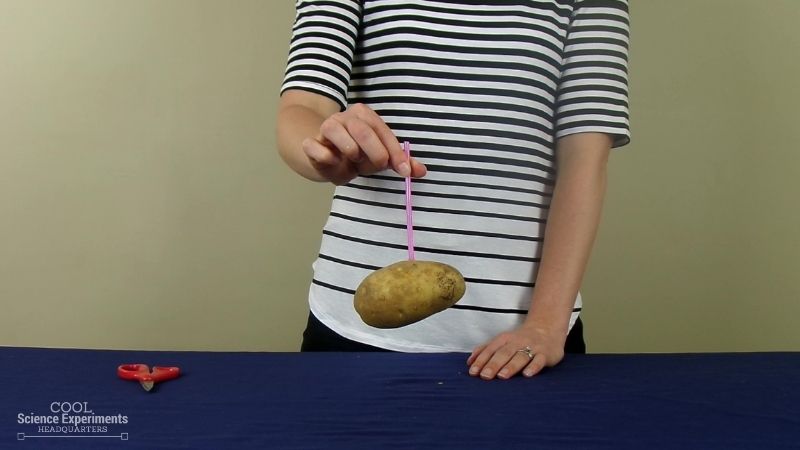
Can you make a normal plastic straw go into a raw, solid potato? It seems like something impossible, but science can easily make it possible!
Pick your potatoes then let kids try their strength as they explore air pressure with this super easy experiment.
Detailed Instructions & Video Tutorial -> Straw Through a Potato Science Experiment
Rainbow in a Jar Science Experiment

With only a few household items, they’ll explore mass, volume, and density with every color layer!
Detailed Instructions & Video Tutorial -> Rainbow in a Jar Experiment
Tornado in a Bottle Science Experiment

Kids can have fun while learning more about centripetal force with this fun experiment.
With a little muscle and science, kids watch with amazement as they create their own glitter cyclone in a bottle as the centripetal force vortex appears.
Detailed Instructions & Video Tutorial -> Tornado in a Bottle Science Experiment
Why Doesn’t the Water Leak Science Experiment
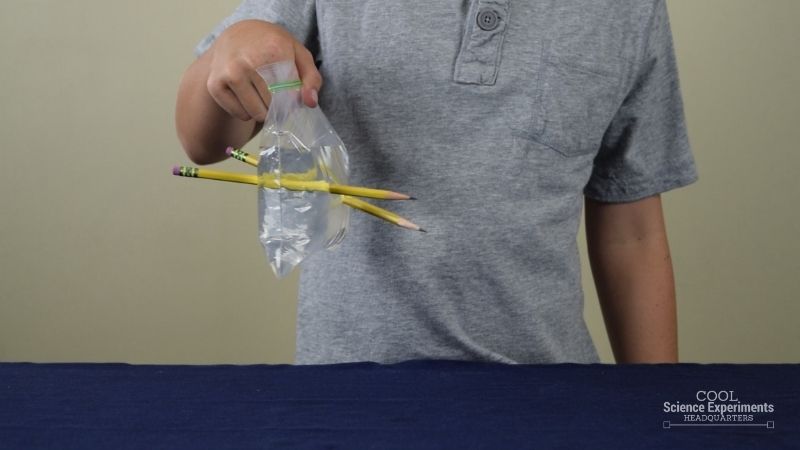
Can you poke holes in a plastic bag full of water without the water leaking out? With this super easy science activity you can!
Kids are stunned as they learn about polymers and how they can do what seems to be impossible.
Detailed Instructions & Video Tutorial -> Why Doesn’t the Water Leak Science Experiment
Use a Bottle to Blow-up a Balloon Experiment

Is it possible to blow up a balloon with only water and science?
In this super easy experiment, kids learn more about how matter behaves as they watch a balloon inflate and deflate as a result of matter being heated and cooled.
Detailed Instructions & Video Tutorial -> Use a Bottle to Blow-up a Balloon Experiment
Orange Float Science Experiment

Kids explore buoyancy as they learn about and test density in this sink or float science activity.
While it only takes a few minutes, this super easy experiment invites kids to predict what they think will happen then discuss why the heavier orange floats!
Detailed Instructions & Video Tutorial -> Orange Float Science Experiment
Pick up Ice with String Science Experiment
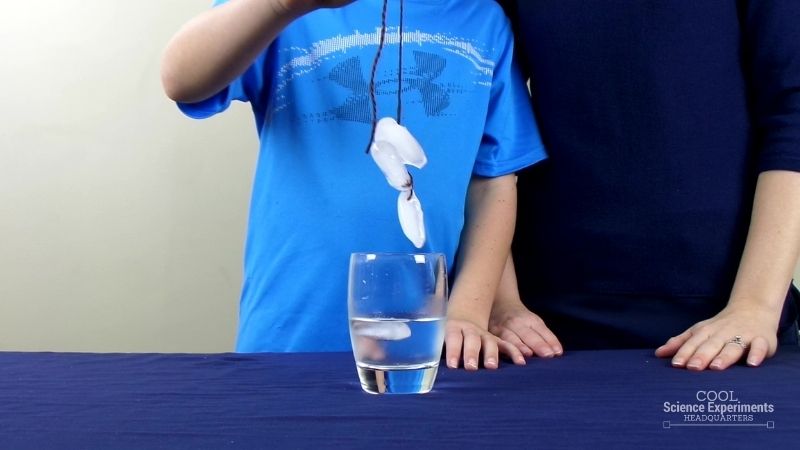
With only a few household items, kids learn about freezing temperatures and the results they create in saltwater versus freshwater.
Detailed Instructions & Video Tutorial -> Pick Up Ice with String Science Experiment
Color Changing Walking Water Experiment
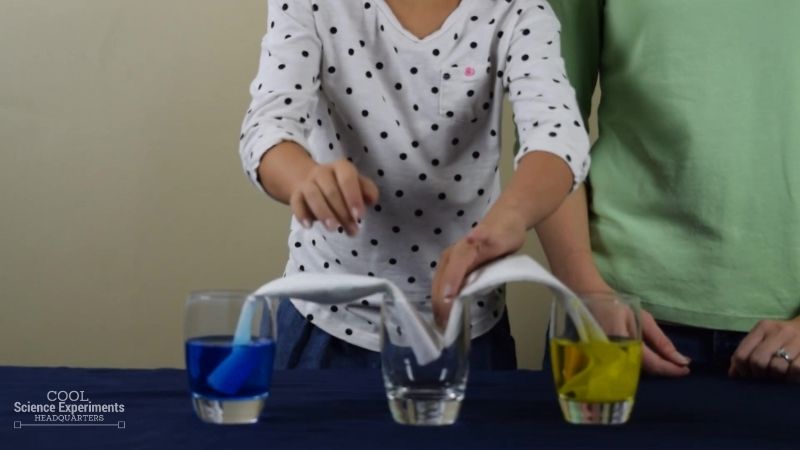
Using the concepts explored in our popular Walking Water Science Experiment, kids will see color walk from one glass to another and change colors as it goes!
The quick experiment seems to defy gravity like magic, but don’t worry, kids can find out how science makes it work!
Detailed Instructions & Video Tutorial -> Color Changing Walking Water Experiment
Reader Interactions
Leave a reply cancel reply.
Your email address will not be published. Required fields are marked *
Save my name, email, and website in this browser for the next time I comment.

- Privacy Policy
- Disclosure Policy
Copyright © 2024 · Cool Science Experiments HQ

21 Easy Science Experiments for Kids to Do at Home
Looking for fun and educational activities to keep your kids engaged at home? How about diving into the world of science with some exciting science experiments that are easy to set up and guaranteed to spark curiosity?
These simple science experiments use everyday household items and turn them into magical learning experiences that will amaze your little ones and teach them the wonders of the scientific world.
From walking rainbows to growing gummy bears, these hands-on activities are perfect for exploring basic scientific concepts in a fun and interactive way.
Whether your kids are interested in chemistry, physics, or biology, there’s something here to captivate their imaginations and keep them asking, “Why?” and “How?”
So, gather your supplies and get ready to embark on a journey of discovery right in your own kitchen or backyard.
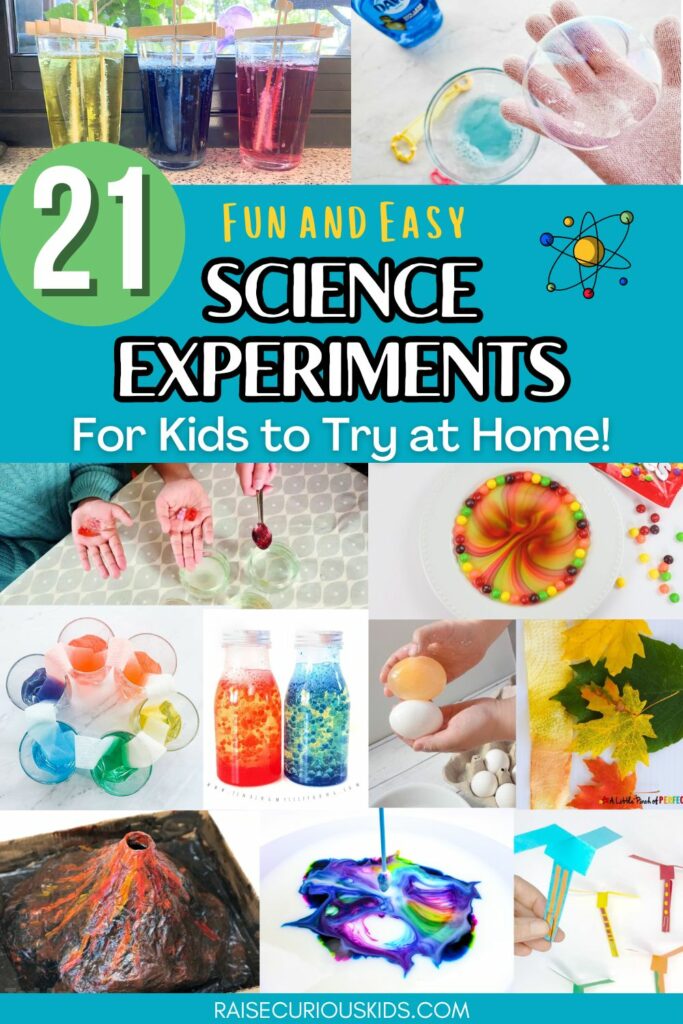
Easy Science Experiments for Kids
Walking rainbow science experiment for kids.
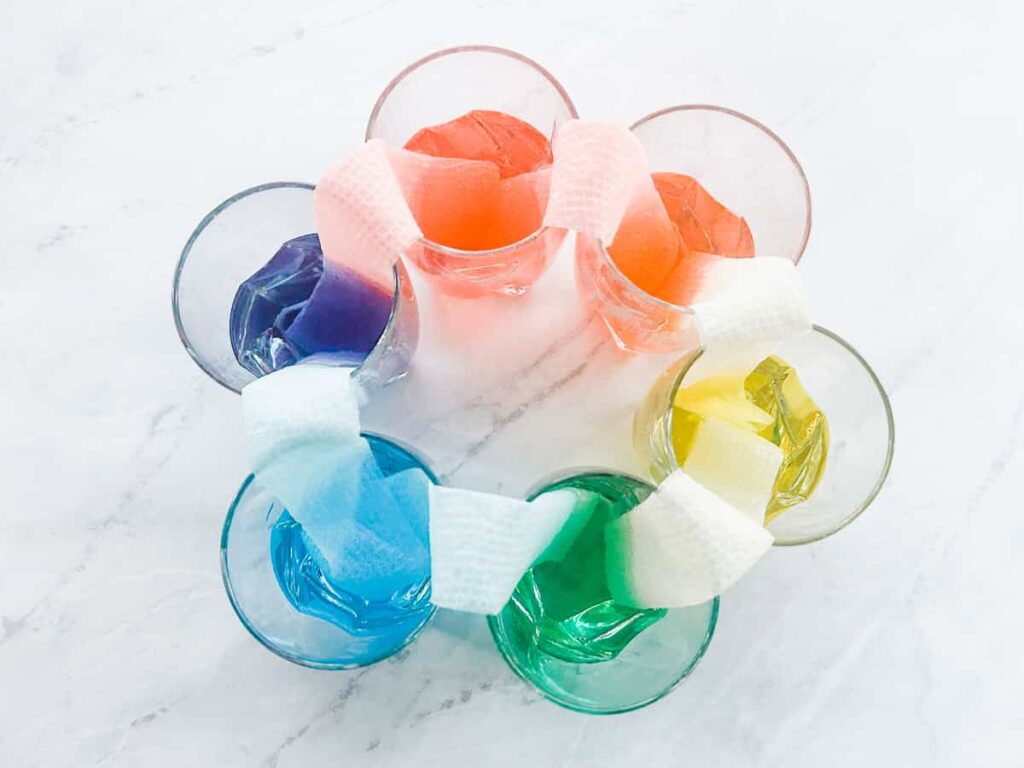
Create a walking rainbow in this fun and easy science experiment for kids! This experiment teaches kids about capillary action, the process by which liquid moves through a material against gravity, illustrating how water travels through plants and other porous materials.
Rain Cloud in a Jar STEM Experiment for Kids
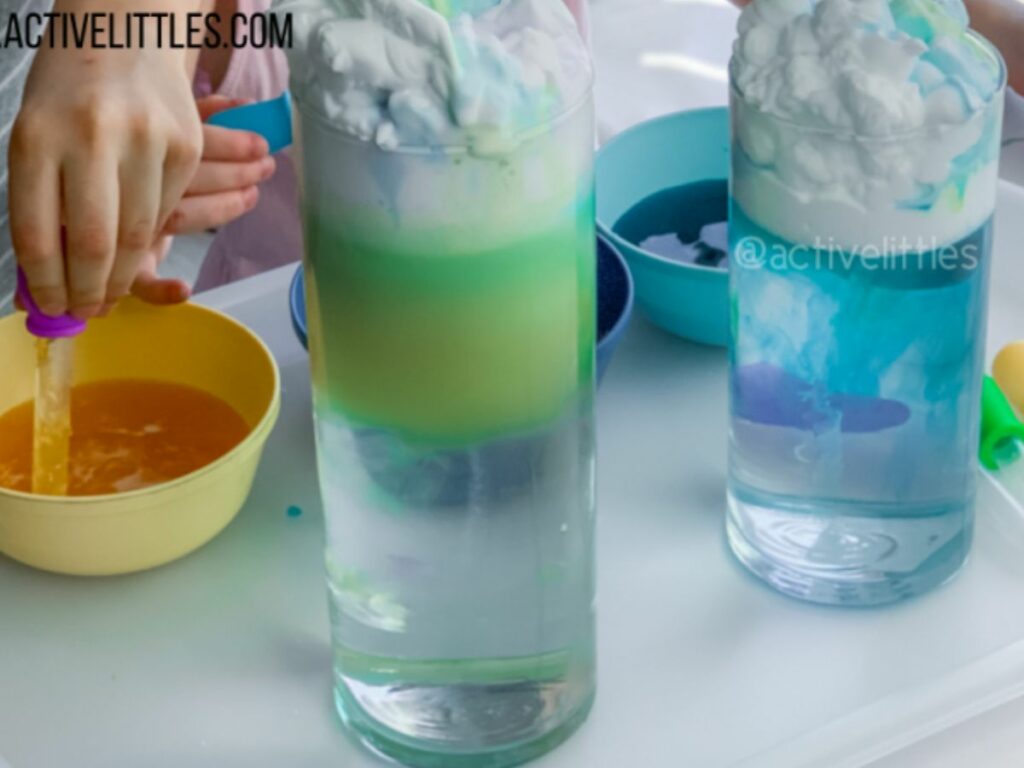
With this raincloud in a jar experiment, kids will learn about the science principle of precipitation, observing how clouds accumulate moisture until they become heavy enough to release rain.
Watch as the color seeps through the shaving cream and “rains” into the jar, demonstrating how real clouds release rain when they become saturated.
Magic Milk Science Experiment
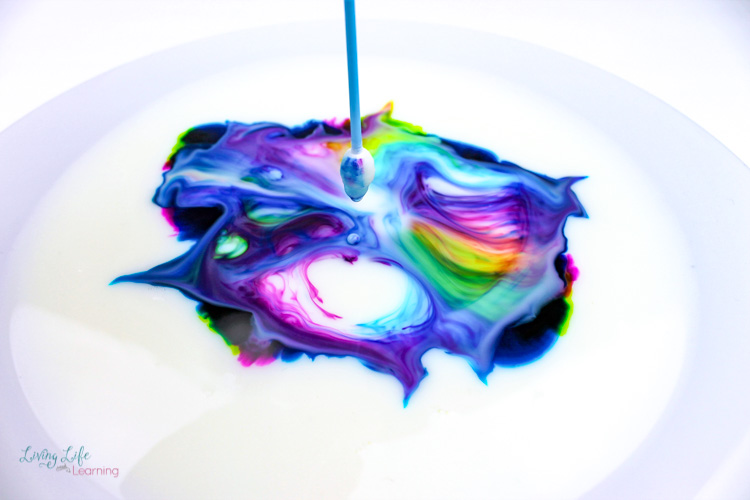
Kids will love seeing chemistry in action with this fun magic milk science experiment! This is a great opportunity to learn about surface tension and the interaction of different kinds of molecules as you watch colors swirl and create beautiful patterns.
Bouncy Egg Experiment
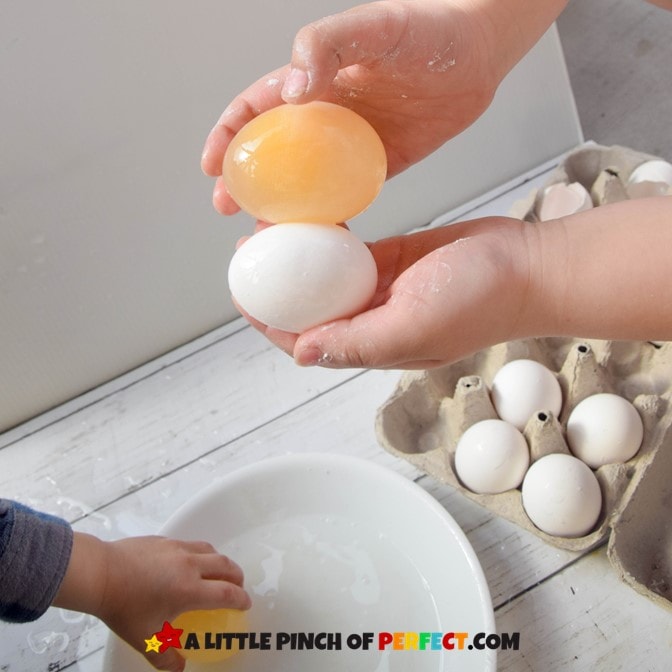
Learn about chemical reactions with this bouncy egg experiment for kids. Your kids will be fascinated watching their egg’s structure change over the course of this experiment, leaving them with an egg that actually bounces!
Easy Paper Helicopter DIY STEM Activity
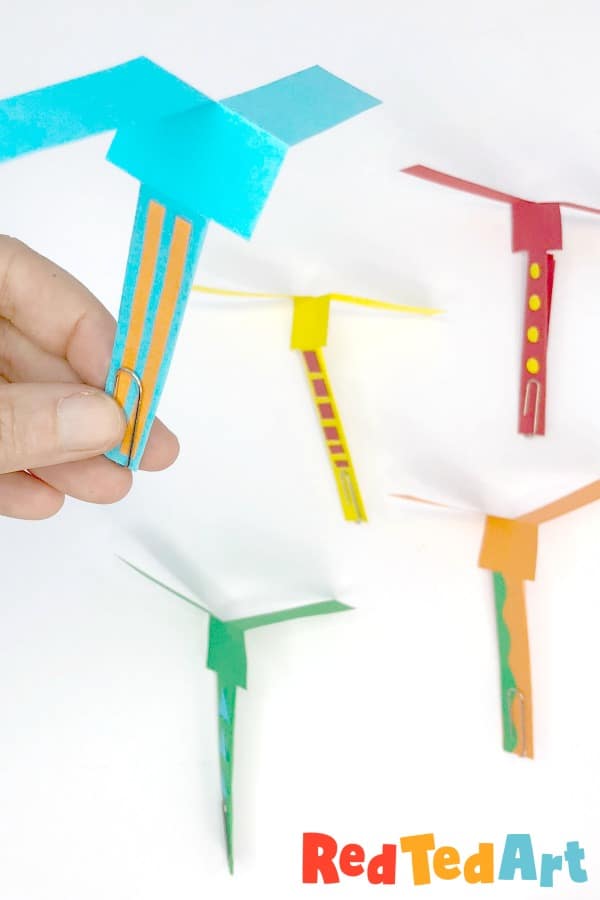
Kids will have a blast creating simple helicopters from paper and watching them twirl to the ground when dropped in this DIY STEM activity!
This hands-on activity teaches children about the forces of gravity, lift, and air resistance. By experimenting with different variables in their design, kids can also explore how these factors affect the way the helicopter flies, providing insights into the principles of flight and aerodynamics in a fun and interactive way.
Jell-O and Vinegar Experiment for Scented Science Fun
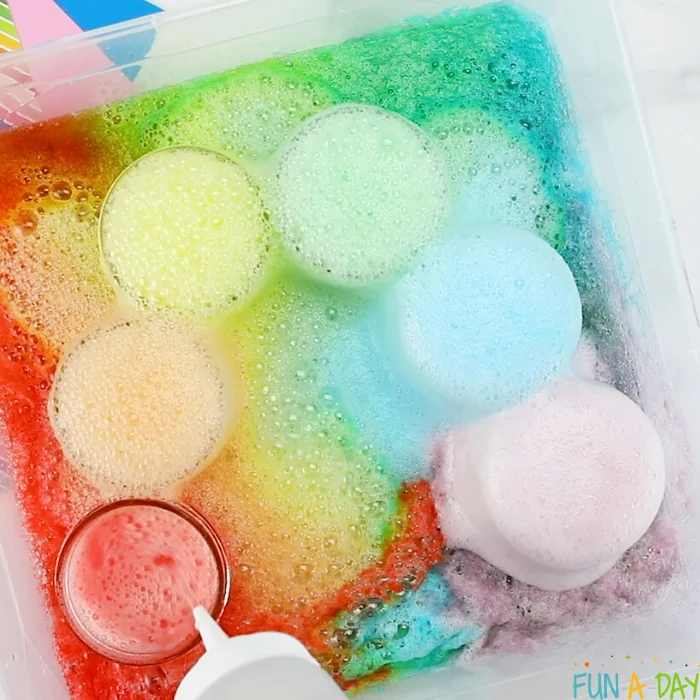
In this Jell-O and vinegar experiment, kids can learn about chemical reactions in a fun and visual way! Adding vinegar to the Jell-O and baking soda mixture will create a fizzy, colorful eruption that will leave kids wanting to do this experiment over and over again.
Growing Gummy Bears Experiment for Kids
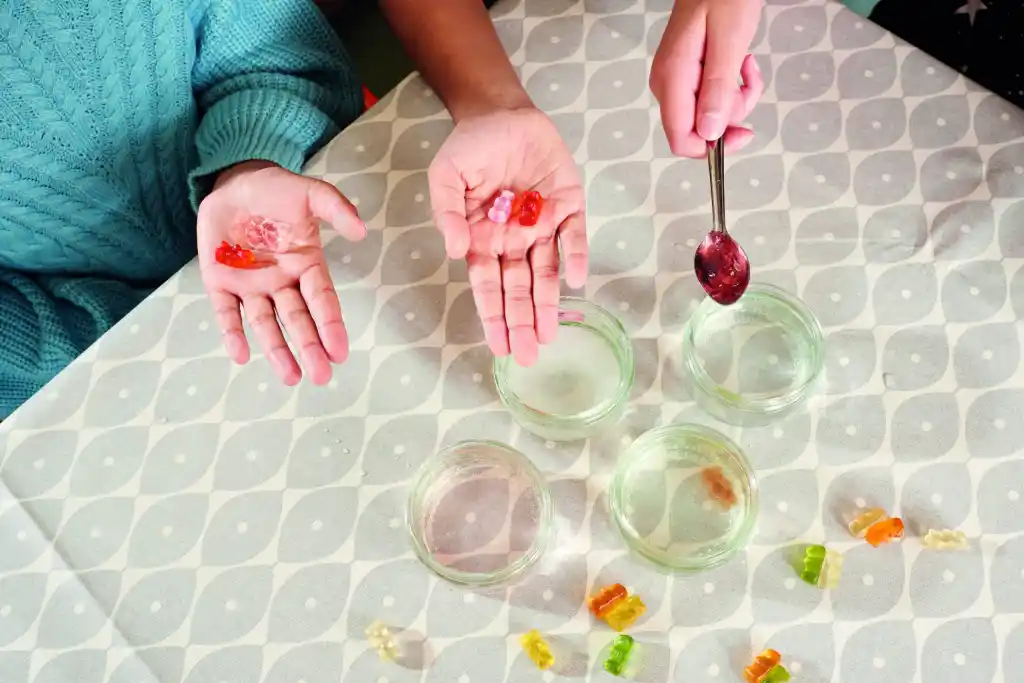
In this easy experiment, kids place gummy bears in different solutions like water, saltwater, and vinegar to observe how they change in size. This experiment is a fun way to help children learn about osmosis, the process by which water moves through a semi-permeable membrane.
Skittles Rainbow Experiment
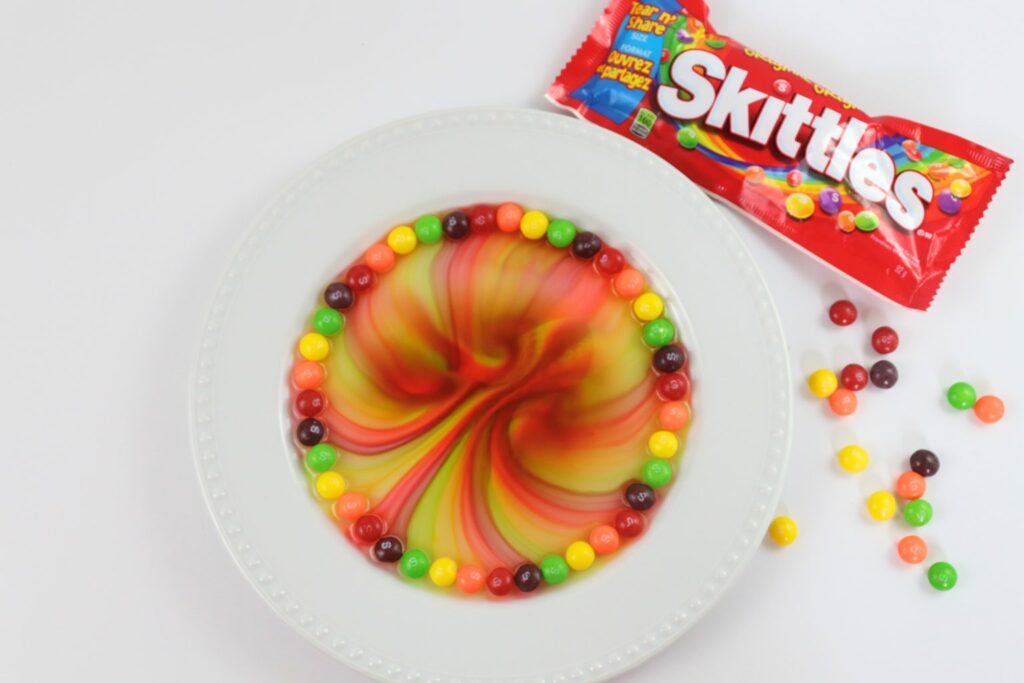
With this experiment, kids can create their own colorful rainbow at home using Skittles! This is a great way for kids to learn about the concept of diffusion, demonstrating how colors and substances mix and move through water.
Make an Ant Farm Science Experiment for Kids
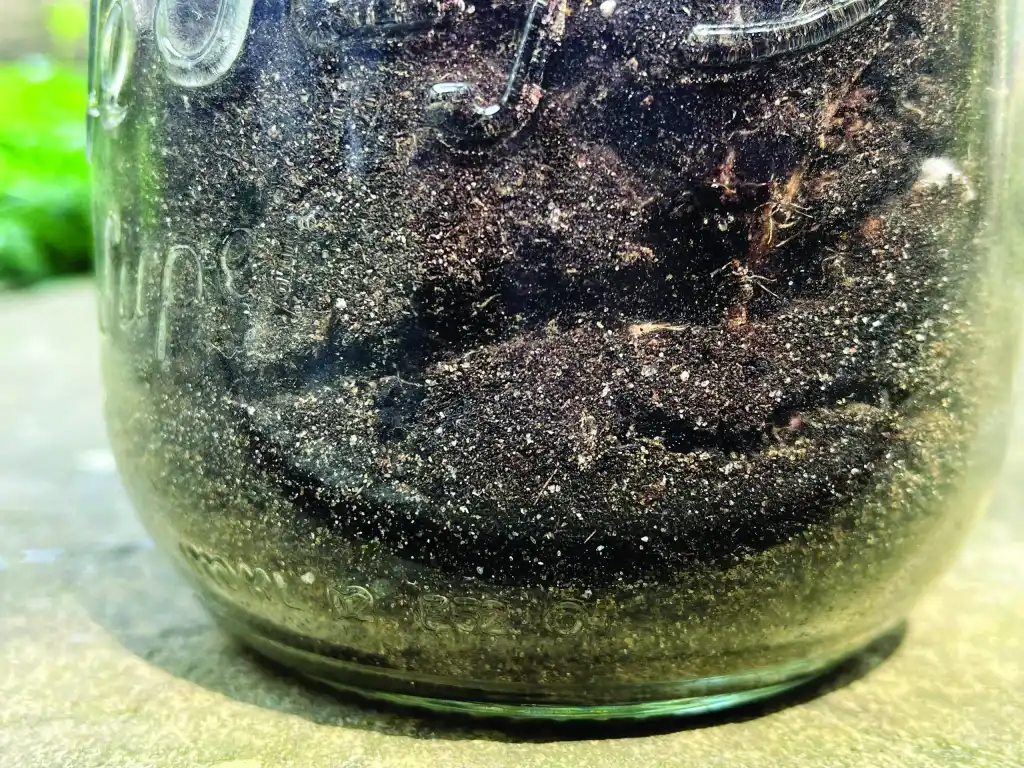
Create a miniature habitat in a jar with this ant farm science experiment!
This experiment helps children learn about the fascinating world of ant biology, including their social structures, tunneling behaviors, and how they work together to create and maintain their underground homes.
How to Make a Lava Lamp Experiment
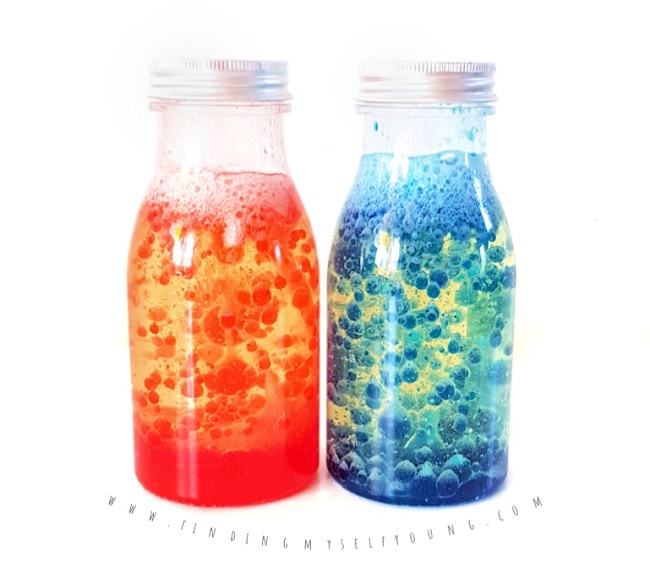
Kids can make a mesmerizing lava lamp at home using a few simple ingredients, transforming ordinary items into a exciting science project.
This experiment is a fun and interactive way to explore concepts of liquid density and gas production, plus it’s so colorful and fun to look at!
Make Your Own Water Compass Science Experiment
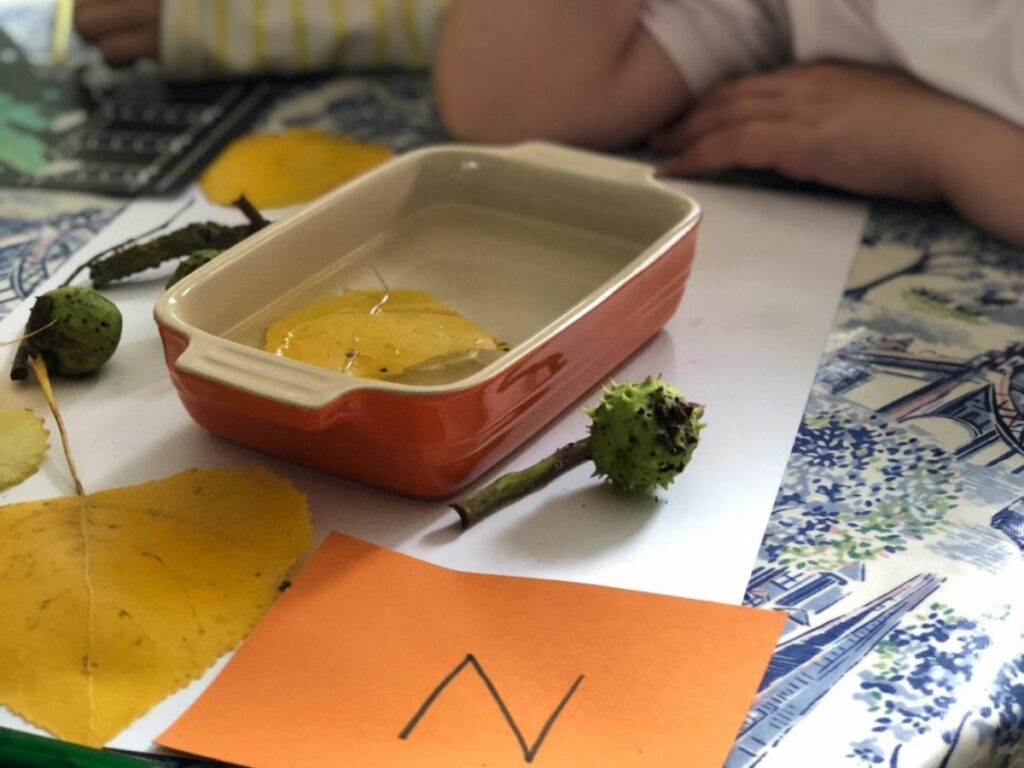
In this fun experiment kids can make their own water compass and learn to magnetize a paper clip! This experiment helps children understand the principles of magnetism and how the Earth’s magnetic field can be used for navigation.
Hot and Cool Colors Outdoor Science Experiment for Summer
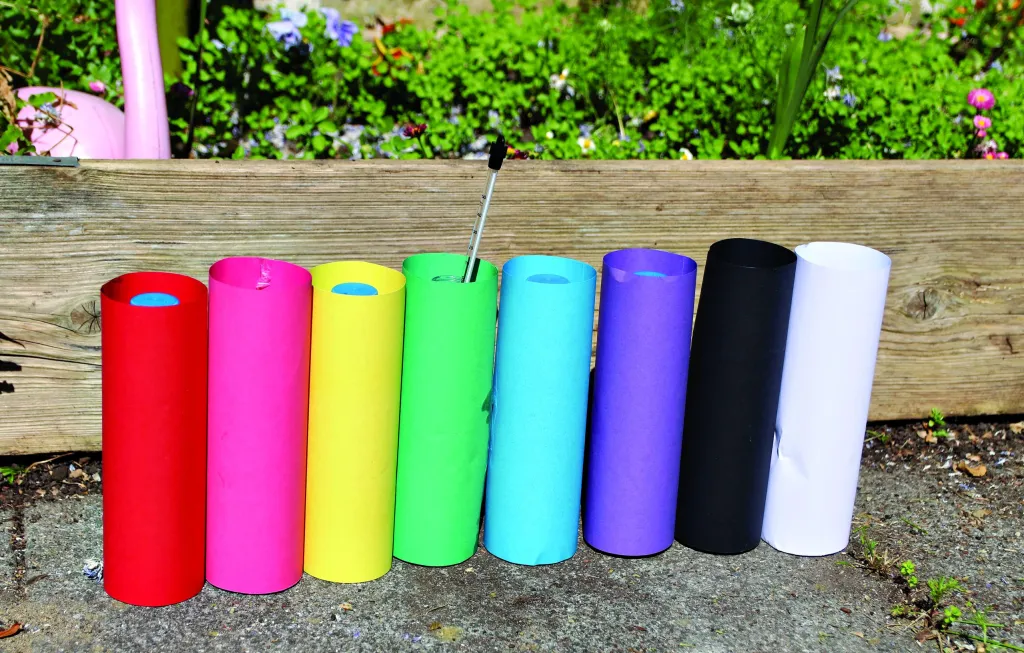
In this hot and cool colors experiment, kids see how color affects temperature and learn about the concept of heat absorption.
It’s a hands-on way to explore the relationship between color and temperature in a fun, summer-friendly activity.
Growing Rock Candy Sticks
What kid wouldn’t love to grow their own rock candy? That’s exactly what they’ll learn to do in this fun experiment!
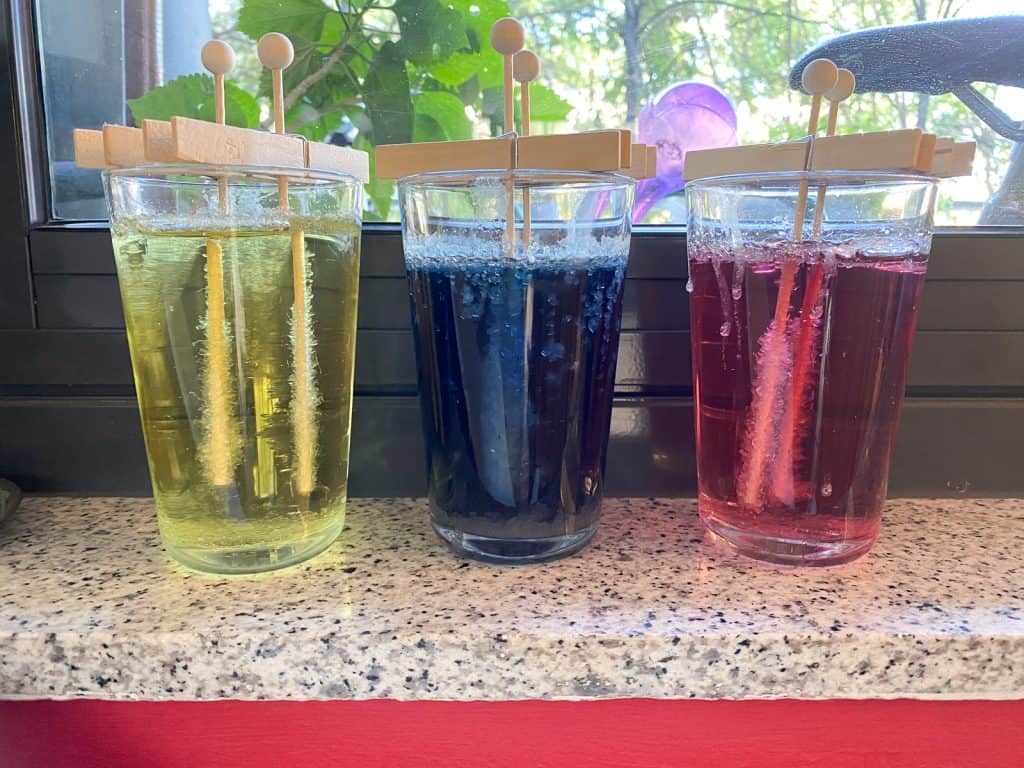
This experiment helps children learn about the process of crystallization, demonstrating how saturated solutions deposit solids as they cool and evaporate. It’s a sweet and educational way to explore the principles of solubility, saturation, and crystal growth.
Magic Paint Potions: A DIY Process Art Lab for Kids
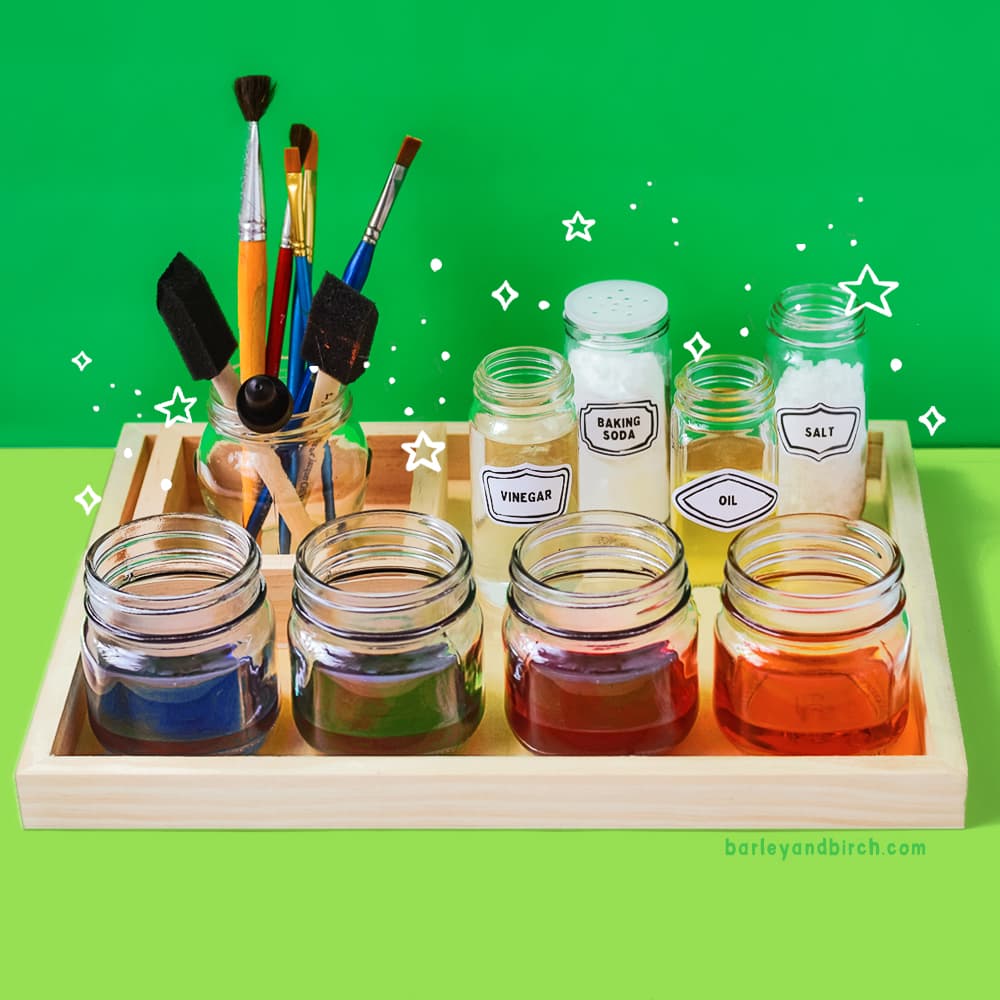
Use common household ingredients to make your own magic paint potions- and some pretty awesome art in the process!
This is an engaging, hands-on way for kids to learn about chemical reactions as they experiment with the different art their “potions” can create.
How to Make a Papier Mache Erupting Volcano
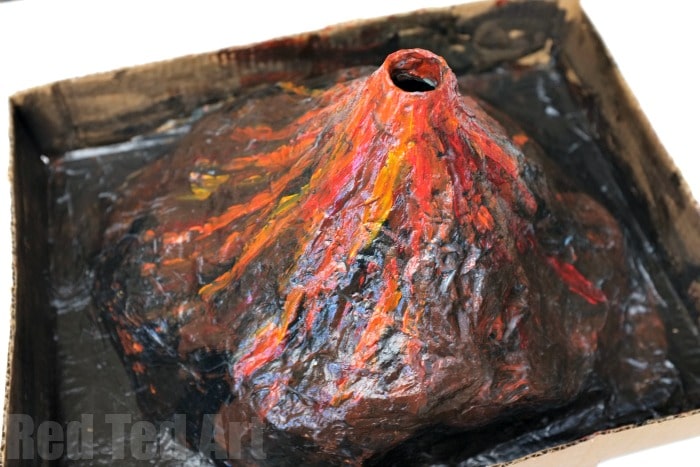
Kids will love making their own bubbling, erupting volcano with this fun activity!
This classic experiment helps children learn about chemical reactions and the dynamic nature of volcanic eruptions. And what kid wouldn’t love to see a mini volcano that actually erupts?!
Heart STEM Activity for Kids
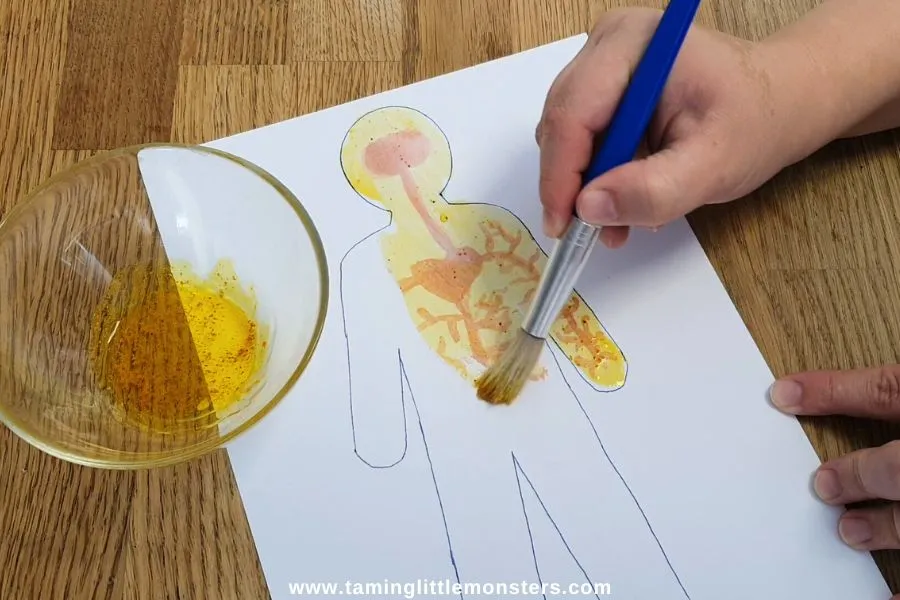
In this fun science activity, an invisible ink solution is used to paint a simple diagram of the human cardiovascular system on a paper outline of the human body. By using a special reagent to reveal the hidden ink, kids will be delighted to see the heart, veins, and arteries “magically” appear.
This engaging experiment teaches children about the cardiovascular system, while also demonstrating the chemical reaction between the invisible ink and the reagent that makes the hidden illustration come to life.
Leaf Chromatography Science Experiment For Kids
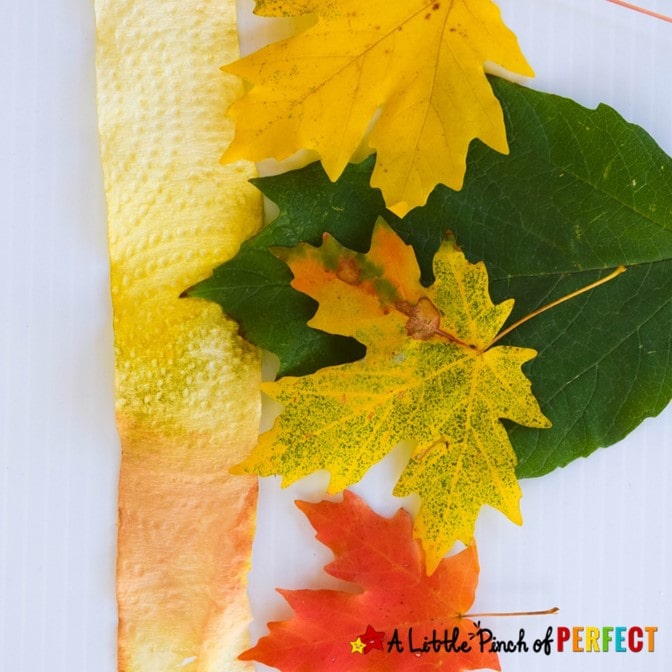
In this leaf chromatography science experiment, kids explore the hidden pigments in leaves by separating their colors using a simple chromatography technique.
This fascinating activity helps children learn about leaf pigmentation, revealing the different chemicals like chlorophyll and carotenoids that give leaves their vibrant green, yellow, and orange hues.
Underwater Volcano Experiment for Kids
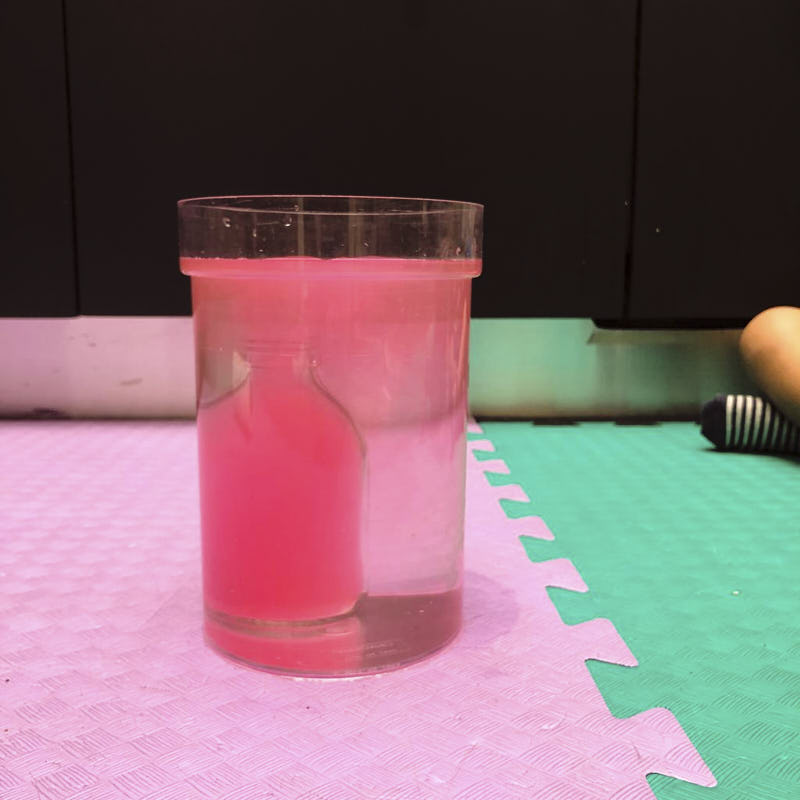
This underwater volcano experiment teaches children about the principles of density and convection currents, demonstrating how warm water, being less dense, moves upwards through colder, denser water. It mimics the way underwater volcanic eruptions release hot magma, creating dynamic movement and mixing in the ocean.
How to Make a Mini Balloon Racecar
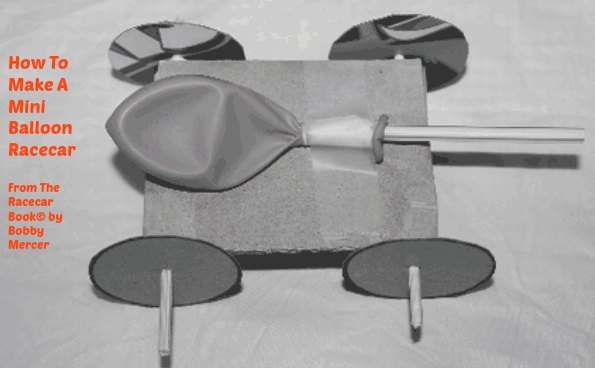
In this fun project, kids create a small racecar powered by the force of a deflating balloon.
As the air rushes out of the balloon, it propels the car forward, providing a hands-on way to learn about Newton’s Third Law of Motion: for every action, there is an equal and opposite reaction.
Working Indoor Water Cycle Experiment
Learn all about the water cycle with this working indoor water cycle experiment!
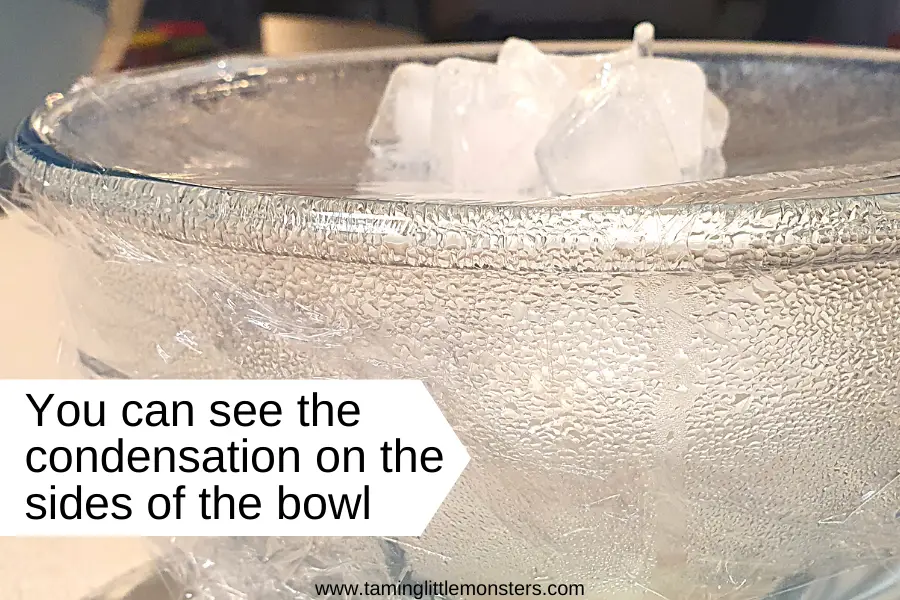
This experiment helps children understand the stages of the water cycle by observing how water vapor rises, condenses into droplets on the cling wrap, and then falls back into the bowl, mimicking rain.
It’s a hands-on way to explore the processes of evaporation, condensation, and precipitation in a contained environment.
Fun Bouncing Bubbles Activity
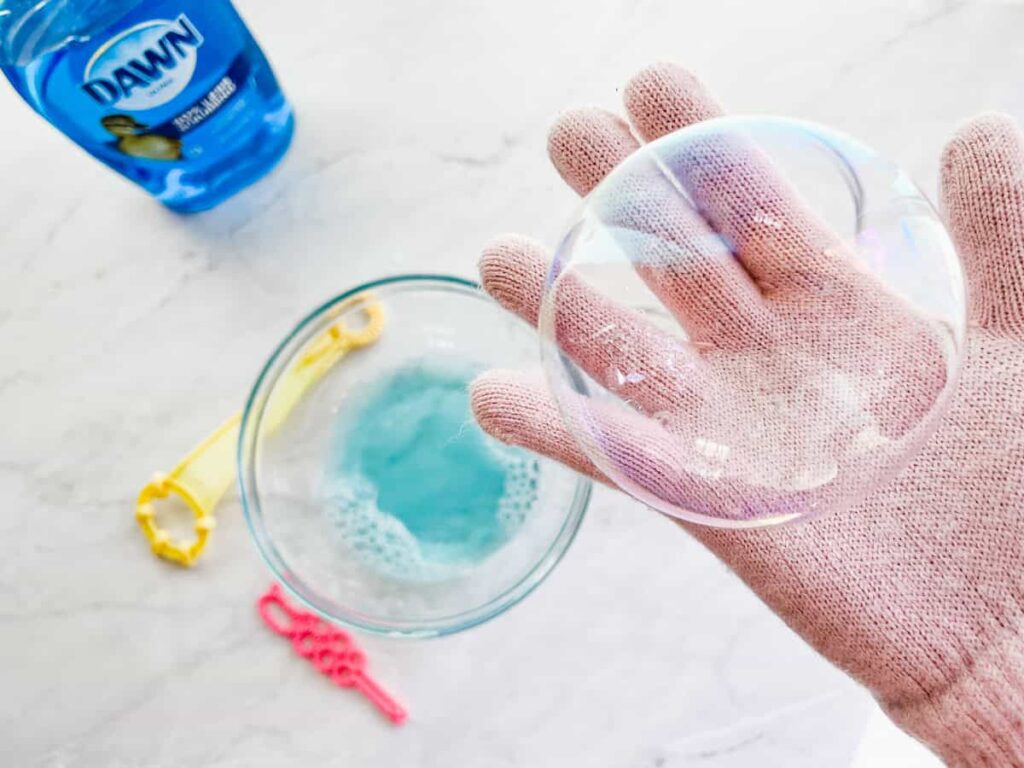
In this bouncing bubbles experiment, kids create a special bubble solution that allows them to make bubbles that can bounce without popping easily.
This fun activity helps children learn about surface tension, which is the force that holds the surface of a liquid together. Kids explore how surface tension works to keep the bubbles intact, providing a fascinating look at the properties of liquids and the science behind bubbles.
Final Thoughts
Exploring these easy and engaging science experiments is a fantastic way to spark curiosity and excitement in young minds.
Each activity, from making a raincloud in a jar to growing rock candy sticks, provides a hands-on opportunity for kids to discover fundamental scientific principles.
These experiments transform everyday materials into tools for learning, making complex concepts like density, osmosis, and the water cycle both accessible and fun.
I hope these experiments inspire your children to ask questions, make observations, and see the world around them through the lens of a budding scientist.
Keep experimenting and enjoy the journey of discovery together!
Related Posts
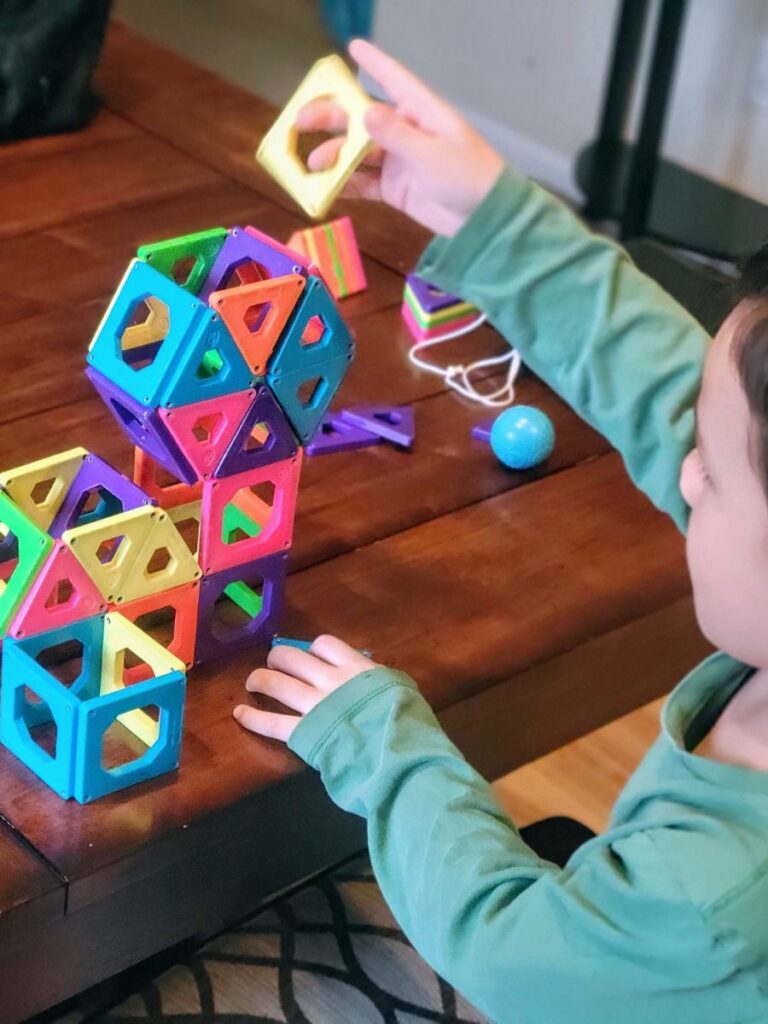
29 Best Open Ended Toys for Creative Play

Stocking Stuffer Ideas for Toddlers
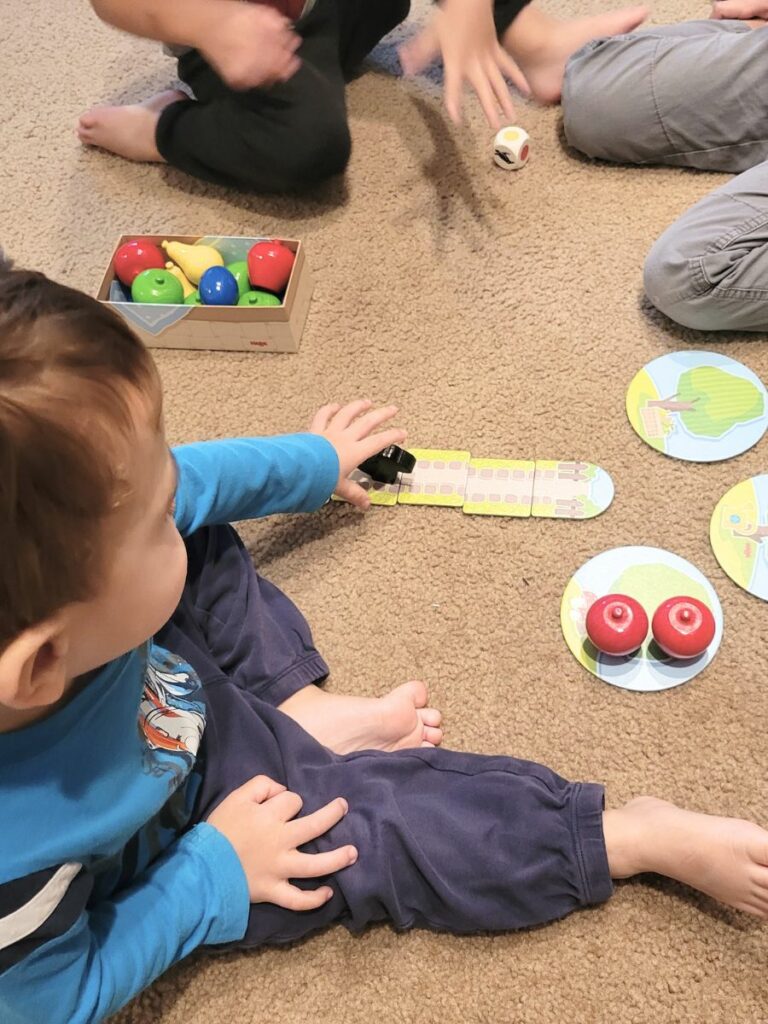
Best Board Games for 2 Year Olds (That They Can Actually Play!)
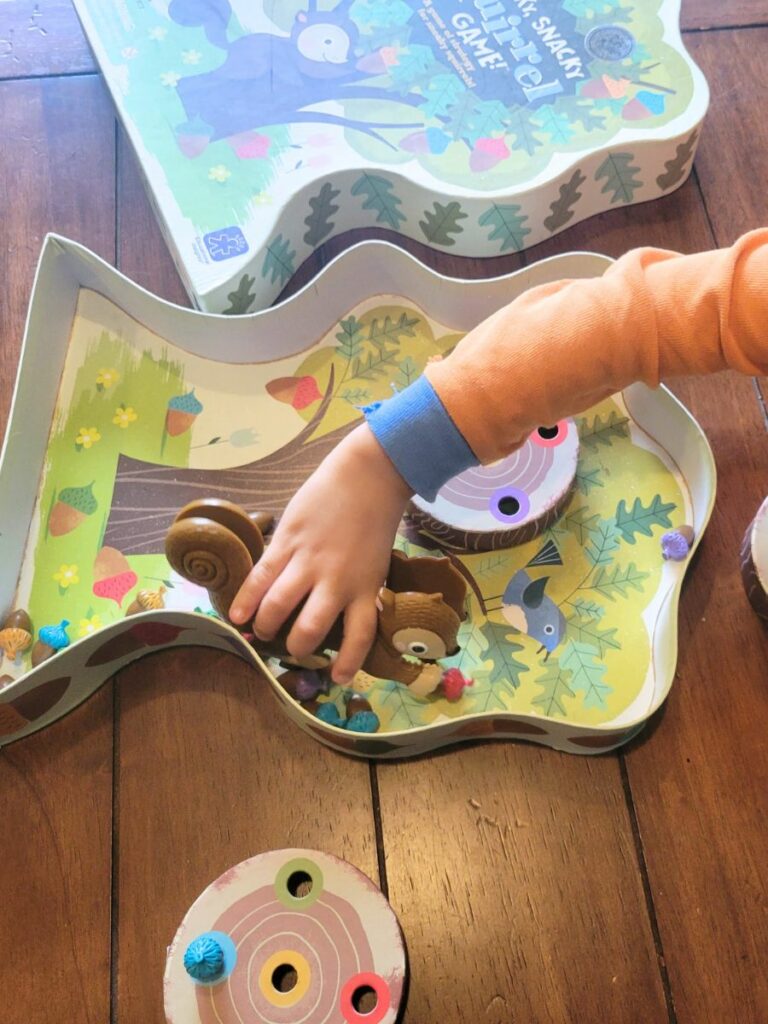
12 Awesome Board Games for 3 Year Olds
Leave a comment cancel reply.
Your email address will not be published. Required fields are marked *
Save my name, email, and website in this browser for the next time I comment.

32 Cool Science Experiments for Kids (that are Fun AND Easy!)
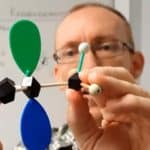
Do you ever want to do science experiments at home with your kids, but you’re not quite sure what to do? Not just any old kitchen science experiment will do – you want something cooler than vinegar + bicarb soda! But, you also want something simple and easy to do – because no-one wants a huge mess from their kids doing crazy science experiments at home!
We understand, and that’s why the writing team here at STEM Geek has put our heads together to come up with the most awesome at-home science experiments for kids! As science enthusiasts and educators, we also wanted to make sure that these are genuine science learning opportunities. So not only are they captivating for the kids, but we also emphasize what questions can be asked as kids explore and apply the scientific method! Plus, we’ve arranged them according to how much time they take: up to 1 hour, 1 to several hours, and long-term.
Related Post: Ultimate Boredom Buster: 101 Things To Do When Kids Are Bored
Science Experiments at Home that take Less than 1 Hour
1. tie-dye milk.
Sounds delicious, right? You’re not actually drinking it, but instead watching science magic happens when you combine dish soap with milk and food coloring. This is a very pretty experiment that draws the focus and mind into what’s happening on the plate, and all because of a little chemistry with everyday items. Well, food dye may not be an everyday item, but it might be after your kids get a hold of this!
So, what’s going on here, scientifically-speaking? Milk is made up of two major ingredients: water and fat. When you add a little dish soap, it bonds with the fat in the milk so strongly that it literally pushes the food coloring and water away from the cotton ball. On a microscopic level, the dish soap is wandering around the milk, which causes the colors to swirl and swirl.
Questions to ask beforehand:
- Before knowing what will happen to the food coloring, ask the kids what they think will happen when dish soap mixes with milk.
- Since the major catalyst is fat in the milk, what would happen if you used other types of milk: Skim milk, soy milk, coconut milk?
You’ll need:
- Round cake pan or plate with high edges
- Cotton ball (some tutorials show cotton swabs)
- Dish detergent
- Different colors of food dye (three or four should do)
Procedure/Instructions:
- Fill the pan halfway with milk.
- Drip one color of food dye in one section of the plate away from the center. Four to five drops works and later you can play around with more or less. Do the same for the rest of the colors around the plate.
- Soak the cotton ball in dish detergent, and when you’re ready for action, place the cotton ball into the center of the pan.
- Watch the colors racing around, creating a psychedelic tie-dye effect!
- You can add more cotton balls throughout the dish to see more action.
- If some food coloring hugs the wall of the plate, take a cotton swab dipped in dish detergent and place it into the food coloring. It will move away!
2. Saturn’s Glowing Rings
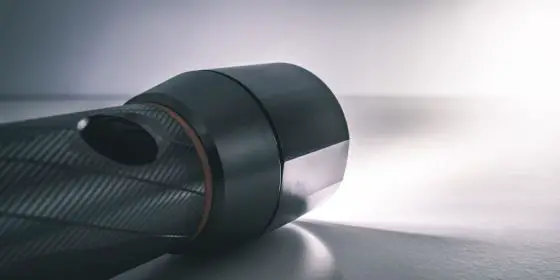
I don’t know about you, but I love everything about space. This experiment shows you how Saturn’s rings are made of rocks and ice chunks even though they look so smooth in pictures. You’ll also see why there are big gaps in the rings. Younger kids take delight in using a flashlight and sprinkling powder, while older kids can get more specific with questions about Saturn and how the rocks and ice stay in orbit.
- Do Saturn’s rings give off their own light?
- Why are some rocks and ice chunks more lit up than others?
- Compare the results of light sprinkles to thicker sprinkles.
- Strong flashlight
- Powder (flour, baby powder, etc) in a shaker
- Very dark room
- Darken a room and set the flashlight on the edge of a table or counter, pointing it at a blank wall. Lay the newspaper on the floor between the flashlight and the wall.
- Turn on the flashlight and notice where the light comes from the flashlight and where it hits the wall. You should only see the light from these two places and not from the space between them. This shows you that the light travels through the air without being seen until it hits the wall. The light represents the sun’s light.
- Now to see how Saturn’s rings glow: Hold the powder shaker and sprinkle some powder over the beam of light where you know the light is traveling. You’ll notice the powder lights up and sparkles in the beam of light. The powder shows in glowing clumps, just like in Saturn’s rings.
3. Breaking Down Colors
We all know that the fun, vibrant colors we see in our lives are created by mixing the basic red, yellow, and blue. In this experiment, you and your child will learn which colors make up those fun shades they have in their art supplies. This also teaches some basic chemistry and uses materials you already have at home. It can be done very simply and expanded to create a large-scale investigation if you love it.
- Which colors separate out first?
- Is the same order for each test?
- Which colors make up the original shade?
- Do the different types of color (pen, pencil, paint) separate in the same way or differently?
- Are some separated in a shorter space are the colors the same mixture?
- Coffee filters
- Color sources (markers, colored pencils, paint, etc.)
- A plain pencil
- To complete this experiment, cut the coffee filters into strips, mark one end with a line the same distance from the bottom on each strip.
- Color in each strip (between the bottom and line) with your colors, and write at the top what the color and source are (e.g., purple marker).
- Place each strip in a glass and help it to stand up by folding the top over a pencil (a chopstick, table knife, or any long narrow object will also work) so that it stands up in the glass.
- Fill the glass up to the top of your colored block, and wait. The water will move up the filter, and the colors will separate out as it goes.
- Remove the strip once the water gets near the top of the strip to stop the experiment.
To make this a true experiment, we recommend testing multiple colors and using markers, colored pencils, and paint (as some starting examples). You could test the same colors from each type of art supply to investigate whether they all use the same mix of basic colors to create the same end product.
This post has a nice full description of the methods if you need more detail.
4. Water Xylophone
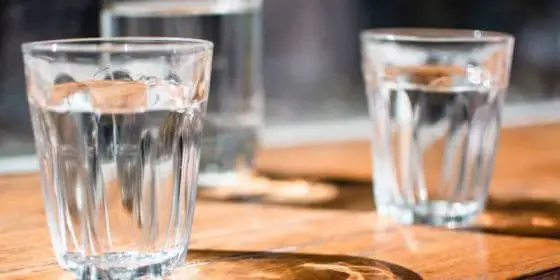
This simple experiment will teach your child about sound and pitch using glasses, water, and something to act as a mallet. Don’t let the simplicity deceive you, there are a lot of ways to experiment and learn through this process, and it also brings in an element of music that makes it interesting and engaging.
- Do you think more water makes the sound higher or lower in pitch?
- How do you think the shape or size of the glass will affect the sound?
- How should we arrange the glasses to play a simple song?
- Do you think this will work with a plastic cup, why or why not?
- Some glasses
- Something wood to act as a mallet (we recommend wood so you don’t break the glasses!)
- A great way to start is with glasses that are the same size, shape, and material, and filling them with different amounts of water.
- Have your child use the mallet to test how the amount of water affects the sound.
- From there, it’s a really simple extension to use different sized and shaped glasses (or any glass vessel like jars and bowls) to experiment with how the shape, size, and amount of water in the glass affect the tone.
To take this one further and really bring in the musical component, you and your child could work out a simple song and create the right tones to play it. If you or your child are musical, you could get very elaborate and creative (try googling harry potter or star wars theme songs on glasses, there are so many options that I couldn’t even choose one)!
5. Ultimate Bottle Flipping
Ah, bottle flipping. The fad that kids can’t get enough of, but parents are well and truly over. The constant thud of semi-filled water bottles being tossed (and hopefully landing upright) is guaranteed to send parents around the twist!
If you can stand it for a bit longer though, there’s a lot of STEM knowledge to be gained in this bottle flipping experiment. As we know, the aim of bottle flipping is to flip a partially filled water bottle underhand and get it to land upright.
In this experiment, kids will learn the importance of observing a result multiple times before changing a variable (the amount of water in the bottle).
- How much water should you put in the bottle?
- What is the ideal amount of liquid to get the perfect flip?
- What should be the ideal amount of water?
- Was their prediction correct?
- Why do they think the amount of water affects the chances of landing the bottle?
- A plastic water bottle
- Measuring jug
- Paper to record results
- Get the kids to start by flipping their bottle with no water in it at all. Kidspot recommends flipping it 50 times for each step, but you could do less if you need to.
- Try it again with 50ml of water.
- Keep adding more water until the bottle is full.
If they’re keen, you could try other types or sizes of bottles, or even try different liquids to see if that affects the results!
6. Rainbow in a Jar
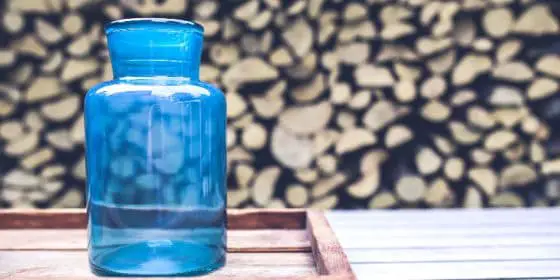
This simple science experiment is not only very visually appealing, but it’s also a great way to learn about the density of liquids. Warning though, this one could get messy so make sure kids are in some old clothes and you might want to take it outside! I like this experiment because you’ll probably have most of the materials in your kitchen already!
- Which liquids they think will be heaviest?
- Which ones will be lightest?
- Why do they think that?
- A glass jar
- Food coloring
- Various liquids like honey, corn syrup, dishwashing liquid, olive oil, rubbing alcohol and water.
- Use the food coloring to make all your liquids a different color. A dropper comes in handy here, but if you don’t have one you can manage without.
- Slowly add each liquid to the jar (pouring into the middle of the jar is best).
- Soon, you’ll have different layers of colored liquid forming your very own rainbow in a jar.
You might even get them to draw a diagram of what they think the jar will look like at the end. They can compare this with the experiment results to see if their prediction was correct.
It might also help to talk to your kids first about what density is and how materials are all made of different amounts of molecules. The more molecules a liquid has, the heavier it will be. Playdough to Plato demonstrates a great way of introducing this concept using marbles.
7. Write Your Own Secret Messages!
We love science experiments that are made up primarily of supplies that you likely already have in your home.
- Why do you think this will work?
- Which liquid do you think will make the best secret message?
- Why do people write secret messages?
- Juice (eg. Lemon)
- Lamp (or anything else that can be used as a heat source)
- In order to complete this experiment, you’ll need to gather all of your supplies along with a piece of paper, some q-tips, and a lamp or other item that you can use as a heat source.
- Next, you’ll mix your lemon juice with a slight amount of water.
- Using your q-tip, use the mixture you’ve created to begin writing your message.
- Allow it to dry.
- Once dry, apply heat to it in order to get your message to appear.
Extend this project by attempting to write with a juice and water mixture, a milk and water mixture, or any other variation of the liquids we listed as necessary supplies!
8. Create Your Own Butterfly
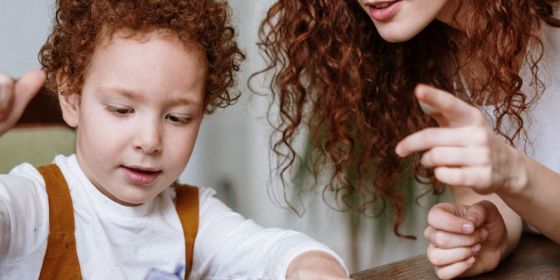
Your little ones will love practicing their color mixing by creating their very own coffee filter butterflies. Hang them in the windows of your home to spread some cheer and to watch the sun flow through their beautiful wings!
- What colors can mix together to make other colors?
- How do butterflies fly?
- What do you think will happen when we add water to the markers?
- Water spray bottle
- Allow your child to draw on the coffee filter to their heart’s content.
- Spray it with water and allow the colors to mix together.
- Allow it to dry thoroughly.
- Once dry, fold it like a fan and then clip it in the middle.
Ta-da, you’ve created a beautiful butterfly!
9. Make A Duck Call
Give your family an excuse to head outdoors by allowing your children to craft their own duck calls. Test them out at a local pond and see if you can get the ducks to come closer to you for a healthy veggie snack!
- Do you think ducks will be able to hear us with this?
- What other materials do you think could make this noise?
- How is what we have created similar to a duck’s beak?
- Plastic straw
- Push down on the straw to flatten one end and then cut the flattened end into a point.
- Flatten out your straw and then blow into it.
- Feel free to experiment with different amounts of flattening and different point shapes to see how you can adjust the sound.
- When finished, take your duck call into the wild to test it out.
10. Make Ivory Soap Boats
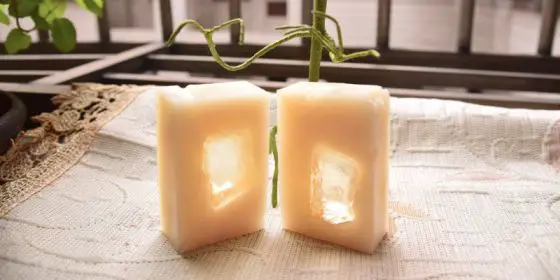
Did you ever carve items out of soap at camp when you were a child? Give your child the same opportunity. Soap can be carved using safe items, like plastic knives.
- Why are we able to carve soap so easily?
- Do you think our boats float?
- Why do you think they float or sink?
- Carving tools (for kids)
- Allow your child to express their creative side by carving their boat out of soap.
- Once they have finished carving it, allow them to test them out in the bathtub. . Extend their learning by discussing density with them–the soap floats because it is less dense than the water.
11. Make Your Own Quicksand
As John Mullaney famously said, “I thought quicksand would be a much bigger problem in my adult life than it would have turned out.” For some reason, quicksand permeates children’s adventure stories – and their imaginations!
- Where can we find quicksand in real life?
- How do you think quicksand works?
- What do you think we will need to make our own quicksand?
- Cornflower (one cup)
- Water (half cup)
- A container
- To make your quicksand, you’ll need to mix the cornflour and water.
- Be sure to stir slowly in order to demonstrate – if you stir too quickly, it will become hard and you won’t be able to see it function the way it should!
12. Make Your Own Lava Lamp
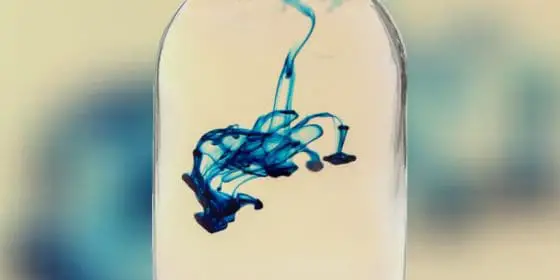
We’ve tried this one in our classrooms, and trust us, our kids go wild year after year. Kids love making something that they can use as home decoration, and they love how easy it is to show new people – this is the experiment that lives on and on!
- How do you think density is involved in this experiment?
- Why don’t the water and oil mix?
- Why can’t we shake our lava lamps?
- Clear Plastic Bottle
- Vegetable Oil
- Food Coloring
- Alka-Seltzer
- Pour water into the plastic bottle until it is approximately one quarter full.
- Then pour vegetable oil in until the bottle is almost completely filled.
- Allow some time for the oil and water to separate.
- It is important that your children do not shake the bottle in this step. It will extend the experiment for no other reason than you waiting for the bubbles to dissipate.
- Add as much food coloring as your child deems fit and then drop a piece of Alka-seltzer tablet into the bottle for the lava lamp fun to begin.
13. Guess the Smell
This one will take a little more prep work, but it’s a great touchstone for your children to begin discussing one of their five senses: the sense of smell!
- What are examples of times we use our sense of smell?
- What other senses do we have?
- If you could only use one sense for the rest of your life, which one?
- Plastic Cups
- Smells (eg. coffee, cinnamon, vanilla, lemon juice)
- Place a variety of common smells in small plastic cups. We like to use coffee, cinnamon, vanilla, and lemon juice.
- Pour these in and place tin foil securely over the top of the cup.
- Poke small holes in the top of the foil.
- Secure the foil with tape (on the sides, not over the holes).
- Allow your children to guess the smells and record their findings on paper.
Home Science Experiments that take 1 to Several Hours
14. mangrove bioshield .
Ecologists and conservationists are pushing for more regulations in building and saving mangrove forests around coastal areas. The reason is represented in this STEM activity. The trees act as a mangrove BioShield (bio = life, shield = protection), showing how natural obstacles can prevent critical damage from marine natural disasters such as tsunamis.
The mangrove BioShield can be for older elementary kids through to high school. Obviously, the younger they are, the more parent involvement. This experiment is done twice to show the effects of having and not having a BioShield. The first part uses little to no trees, and the second uses a forest of trees and rocks.
- What will happen in a tsunami if the village is without a BioShield? And the village with a BioShield?
- Would a BioShield help with hurricanes?
- Would you want to encourage people to save manatee forests if they are beneficial?
- Medium to large clear, plastic container
- Newspaper – wad into balls, then cover half of the bottom container – this help to keep the ground sturdy
- Mud – cover the newspaper and press it in to form a slope down to the empty side of the container. The top side should be flattened for the cardboard houses, then it slopes down into the empty half of the container.
- Cardboard houses (use the bottoms of milk cartons for the house and popsicle sticks for the roofs, place houses on the mud towards the top of the high slope
- Model trees or leafy stems from plants – Different amounts for activity 1 and activity 2
- Several small rocks
- Cardboard – long enough to fit across the container and tall enough to hold it from out of the water
- Water – enough to go halfway up the slope
A tsunami without the mangrove forest – insert only one or two trees down the slope. Place the cardboard piece into the water end of the container and move back and forth to create waves. Notice how easy it is for the water to destroy the village you’ve created.
Repeat the process of constructing the village, but this time insert a lot of trees down the slope to where the water meets the mud. They need to be deeply rooted like mangroves, and I’ve found that aquarium plants work well for this reason. Place the rocks within the mangrove forest and in front of the trees. Add a little bit more water. Insert the cardboard again and move it back and forth to create waves.
15. A Greater Crater
When you look at the night sky and see the moon, one of the first things you notice is its craters. The moon is completely covered in them, and some are so large we can see them from Earth. Meteorites often make the craters that we see when they hit the surface, but it makes us wonder why some craters are so much bigger than others.
This experiment will help you to investigate one of the main reasons why craters come in different sizes.
- What causes craters?
- How big do the meteorites have to be to make a crater?
- What is it about the meteorite that causes the size of the crater?
- Paper to record your results
- Flat floor surface for the experiment, large enough for the newspaper to cover
- Shallow metal pan at least 2 inches deep
- Flour to fill 2 inches of the pan
- ¼ cup hot chocolate powder
- Mesh strainer or flour sifter
- Large marble (and others of varying sizes if comparing results)
- Metric ruler
- Tongs or long tweezers
- Pour the flour into the pan until it reaches 2 inches. Place the pan on top of the newspaper on a level surface.
- Sift a layer of hot chocolate powder over the flour (this is so you can better see the rays and other features of the craters).
- You will be dropping your marble from three different heights, then comparing the sizes of the craters. Measure the diameter (side to side) of the marble and record this on your paper as Marble 1. Hypothesize how large the crater will be and write that next to the diameter of Marble 1.
- Stand next to your pan and hold the marble at knee height above the flour. Drop the marble (do not throw it, just let it fall from your fingers) into the flour and study the shape of the crater. Look for a rim around the crater or any rays coming from the edges.
- Measure across the widest part of your crater, from rim to rim and record on your data sheet as Marble 1 – Knee Height – Width or something similar. You can also draw a picture of your results.
- Very gently use the tongs or long tweezers to remove the marble without destroying the crater.
- Repeat this procedure from waist height, shoulder height, top of head height. Make sure you aim in different parts of the flour so you don’t land on top of another crater. Record all of your results as the different heights you’re using.
- Compare your results.
- You can try again with a different sized marble as “Marble 2” to compare those results with each height as done with Marble 1.
Perhaps now, you’ll look at the moon a little differently!
16. Rube Goldberg Chain Reaction Machine
We’ve all seen them, some pretty far-out there chain reaction machines to complete simple tasks, usually in movies. But they are real , and are becoming even more popular now that we’re all stuck at home for a while. This is a fun way to explore physics with stuff you have at home.
Ask your child to decide what the end goal is (e.g. get the ball into the cup), and ask them to think about creative ways to make it get there. Working together, you can start with small pieces of a circuit to find out how your ball reacts to the set-up, and grow it from there. You can even refer to this video for more ideas:
- What will happen when the ball bounces off of this wall?
- How will these dominoes change the speed of the ball?
- What can we use to make sure that the ball goes in the direction we want it to at this point?
- What should we put here to get the best bounce?
- Paper towel
- Toilet paper tubes
- Fixed objects like walls or furniture
- Any other toys and materials that can be used to build your circuit
To make this a true experiment, it needs to include more than a one-off demonstration, and there are a lot of ways to accomplish this.
- Set up parallel courses and use different sized or weighted balls to go through the circuit.
- Set up one elaborate circuit and use different objects one at a time.
- Set up circuits in different ways to see how different set-ups affect your end goal.
Another experimental component is the process used to create a circuit that reaches your end goal ( like this video about getting the ball into the cup, but you could come up with lots of other endpoints!). Along the way, you and your child get a lot of time to learn about momentum, velocity, friction, energy transfer, and interference (e.g., the cat).
17. Melting
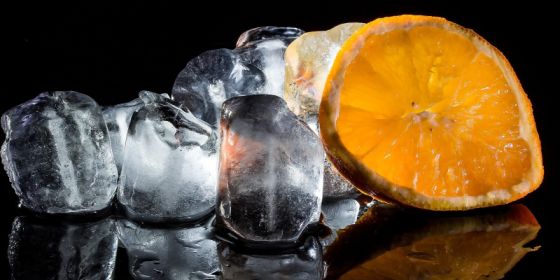
This is a simple and fun experiment that can be set up in a short time and then fill-up your day with observations and new experiments. Using only things you already have at home, you can set-up an engaging experiment with your kids!
Ice melts at different rates depending on a variety of factors including temperature, pressure, and if there are impurities (think salt, sugar, dirt) in the ice or touching the ice. There is a lot of opportunities to get creative and do the experiment in multiple ways, keeping your kids engaged and developing their investigative, experimental, and critical thinking skills.
- Which ice melts the fastest, slowest, and if they have any guesses about why?
- What other ice-melting experiments they think would be fun: Using different temperature liquids? Using different amounts of ice? Different sized cups?
- Lots of ice
- Several matching cups (i.e., they are the same size, shape, and color)
- Measuring cups
- A variety of liquids for the test
- Paper for writing down observations
- Measure the same amount of ice and place it in each cup.
- M easure equal amounts of each liquid and place them in the cups: try to complete this part quickly so that the ice in each cup is in liquid for as close the same amount of time as possible.
- Set up your cups in a place that is easy for your child to watch and observe.
- Ask them to check in at regular intervals (every 15 minutes, every hour) and record or talk to you about their observations.
Other potential experimental examples:
- Using different liquids to test if they affect melting time;
- Using the same liquid and placing ice in different locations to test what conditions throughout your home affect melting;
- Test if different amounts of ice melt at different rates;
- Test if different kinds of cups change melting time.
There are endless possibilities for you to come up with new ways to complete these simple experiments. You get the idea. Explore more!
18. Breathing Leaves
Science experiments don’t get much more simple than this one! It’s effective though and kids will enjoy watching their leaf ‘breathe’. Learning about plant science is often tricky because it can seem a bit abstract. This experiment allows kids to see the process of plants making oxygen right before their eyes!
A question to ask beforehand:
- What do you think will happen if we leave it for a few hours?
- A fresh leaf from a tree
- A bowl of water
- Pluck a fresh leaf from a tree and place it in a bowl of water.
- Use a rock to weigh it down and leave the experiment out in the sun.
- Have your kids predict what they think they will see when they come back in a few hours (they can write their prediction down or draw a diagram if that’s more their style).
- After a few hours, your kids will see lots of tiny little bubbles on the edge of the leaf and in the glass bowl of water (use a magnifying glass to get a closer look if you have one).
So, what’s happening here? Leaves take in carbon dioxide and convert it to oxygen during photosynthesis. The bubbles you can see are the leaf releasing the oxygen it’s created. You could explain to your kids how trees and plants make the oxygen we need to breathe. Kids Fun Science explains this experiment in more detail and suggests taking it further by leaving the plant for a longer period of time (do you see more or fewer bubbles?) or placing a leaf in a dark area to see what difference that makes!
19. How Does Sunscreen Work?
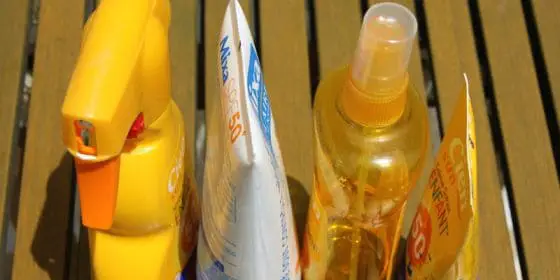
If there’s one thing I know, it’s that kids hate wearing sunscreen! Trying to get it on them is like wrestling a crocodile. Maybe if they knew how sunscreen worked they’d understand how important it is to wear it when they’re out in the sun (and be slightly more cooperative when we’re lathering it over their little faces). This is a simple experiment that shows kids the difference wearing sunscreen will make to their skin.
- What do they observe when they come back?
- Why do they think one side faded and the other not?
- A piece of colored cardboard (a dark color would be best)
- Your usual bottle of sunscreen
- Have your kids smear the sunscreen over one part of the cardboard and leave the other part clear.
- Kids can then predict what they think will happen when they return to the experiment after a few hours.
- Talk to them about how the sun’s UV radiation is absorbed by the sunscreen so it can’t get through to damage the cardboard.
You could even take it further by trying different kinds of sunscreen or leaving your cardboard out during different times of the day.
20. Make A Rubber Egg
Imagine a world in which eggs can be used like bouncy balls. Well, with a couple of home supplies and a little bit of science, you can live in that world. Your child will be dazzled as they remove eggshells from eggs while leaving the insides intact.
- Is vinegar an acid or a base?
- Is there another substance that could do this?
- Simply leave the egg in the vinegar for a few hours and wait to see what happens. Because of the transformative nature of this experiment, it lends itself to science journaling.
- Consider having your kiddos draw before and after pictures of the eggs in order to track their journeys.
21. Flying Tea Bags
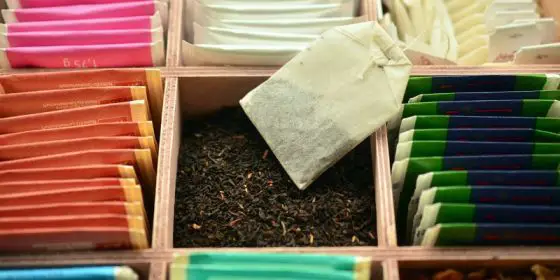
Nothing will get your kids’ attention faster than telling them that you are going to spend some time creating something that will fly. However, because this experiment will involve fire, please ensure that you select a time in which you will be able to provide ample adult supervision.
- How do we stay safe with fire?
- How do we make sure we don’t damage the surface we are working on?
- Why do you think the tea bag will fly?
- Single Serving Tea Bags
- A Small Bowl
- A Non-Flammable Work Surface
- First, open the tea bags and unfold them.
- Empty the leaves from the bag.
- Stand the tea bags up on your surface and light the top of each bag on fire.
As they begin to burn, they will float into the sky!
22. Make Wax Paper Lanterns
Your children will love the chance to display their fantastic art skills by creating these paper lanterns. If you want to add a culture lesson, have your children research German’s St. Martin’s Day and learn about why children parade through the streets with lanterns. We promise there’s a good moral story involved here!
- When could we use lanterns?
- What safety considerations do we need to use in this project?
- Why can we see the light through the wax paper?
- Popsicle Sticks
- To begin, tear a ten-inch piece of wax paper off of the roll and cut it in half.
- After that, fold each piece in half.
- Allow your child to color their image on top of the wax paper. (This is a great place for an impromptu lesson in color mixing).
- Fold the wax paper and iron it (consider something in between the crayon mess and the iron you use on your clothes).
- Finally, glue the craft sticks into squares, add the wax paper, and turn it into a cube.
Voila, you’ve created your own lantern!
23. Create an Insect Habitat
Alright, this one isn’t for the faint of heart. Draw up your courage and send your child into the backyard to collect all of the creepy crawlies they’d like to.
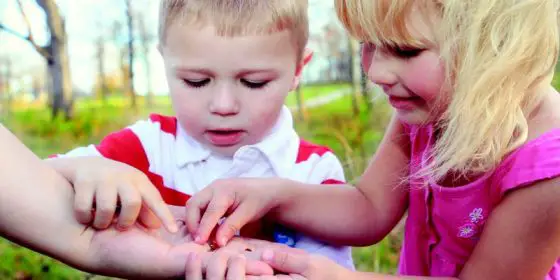
Now you have a home for them. Better yet, you can keep your child entertained for hours as they track the growth of their bug friends.
- What do bugs need to survive?
- What do bugs eat?
- What is the difference between a need and a want?
- Imagination
- Find something that you’re willing to sacrifice to the bugs in order to create a habitat for them – we recommend a shadowbox so that your child can see inside, but a cardboard box will do just fine as well.
- Ensure that there is breathing room for the bugs.
- Create a habitat with sticks, bark, small rocks, dried leaves, and whatever else you can find.
- If you’re willing to hang onto the habitat long enough, use it as an opportunity to talk about decomposition as the bugs begin to break down the twigs.
Long-Term Science Experiments at Home
24. crystal kingdom.
This is the oldest trick in the book, but it’s popular because it’s so effective, fun, and has great results. The only drawback to most crystal-growing recipes is that they take ages to grow, and to be quite honest this one is no exception. In fact, these crystals will take several days to grow but the end result is worth it. The reason is that this experiment involves growing a whole landscape of beautifully colored salt and bluing crystals. Here’s a video for visual reference:
A few things to keep in mind: Allow for plenty of air circulation, preferably inside rather than outside. Ammonia is not necessary but does help in the process.
- What will happen when you add ammonia?
- Why does more salt and less liquid create faster crystallization?
- What part does the bluing solution have in crystal growing?
(Answers can be found here )
- Two bottles of bluing solution
- Large tray/cookie sheets with sides
- Measuring cup
- Liquid watercolors
- Eye droppers
- Cut sponges into large pieces. Spread them out on the tray.
- Measure out 1 cup of each of salt, water, and bluing and then gently mix together.
- Evenly coat or sprinkle the mix over the sponges.
- Add 1 cup of ammonia to the sponges.
- Coat an extra 1 cup of salt on to the sponges.
- By now you’ll see some crystals growing . Sprinkle the magic mix again: 1 cup each of salt, water, and bluing. You can pour the ingredients onto the tray instead of on top of the crystals to keep them from breaking. Don’t worry, more will grow!
- Take an eyedropper, and drop a tablespoon of each liquid watercolor (undiluted) in different patterns over the sponges and crystals.
- Take note of your garden and what the crystal formations look like. You can make a sketch in your notebook as a before and after. Ask questions and observe!
- Observe how the crystals are bigger than before, and notice the colors aren’t as vibrant. Compare the differences in shapes, sizes, and colors.
- If you want more crystals to grow, add a little more water, bluing, and salt.
25. Blow up a Balloon with Yeast
We are surrounded by science in action, but sometimes it is really difficult to see what is happening, especially when it is on a small-scale. When we make bread, yeast ‘eats’ the sugars in the food and creates CO2, giving bread its airy texture. This experiment lets you both visualize what happens when yeast consumes sugar and is a great set-up for an experiment that can be observed throughout the day.
Depending on your supplies and time, you could start with a demonstration and use that to think of other tests, or you could set up several parallel tests at the same time.
- How quickly does the balloon filled with air?
- When does it stop filling (at some point the yeast will run out of food and will stop making gas)?
- Does the starting temperature affect the experiment?
- Does the balloon fill faster in different places in your home (try especially for different air-temperatures, you could include an outside location)?
- Some balloons
- Blow up the balloon a few times before starting so that it’s loosened up a bit.
- Fill the bottle with about 1 inch of warm water (heat is required to activate the yeast, but you could experiment with different temperatures), add the yeast and swirl to dissolve.
- Add the sugar and swirl more.
- Place the balloon over the opening to the bottle and wait. You should expect to see the balloon begin to inflate after around 20 minutes.
- Continue checking and observing how much the balloon inflates throughout the day.
More example experimental setups include:
- Do different temperatures – either with the water you start with or the air the yeast lives in – affect how quickly the balloon blows-up?
- Does using 2x the yeast result in a balloon that is 2x bigger, or blows-up 2x faster?
- Do different types of sugar (e.g., white sugar, honey, syrup, flour) affect how quickly the balloon blows up or how big it gets?
A sk your child to think of new experiments (you could prompt with some of the examples above, or ideas from this post ).
26. Seed Germination
A really simple but fun multi-day experiment is germinating seeds under different conditions. This means finding some quick-sprouting seeds such as beans and putting them in different conditions to see how that affects germination (sprouting leaves and roots) and growth.
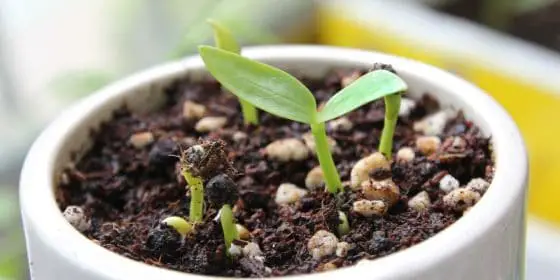
I love using seed experiments because they are inexpensive, simple, and leave a ton of room for creating your own unique experiment.
- Which seed will sprout fastest?
- Seeds (Beans, radishes, squashes, and many flowers sprout quickly from large seeds, making them good choices.)
- Small pots or paper cups
- Potting soil
- Cloth or paper towel
- Somewhere with good light
- To get started, you’ll need some seeds – feel free to choose something you already have, if you’re a gardener you might have some seeds ready for the coming season and could spare a few – or find something online or at your local nursery.
- Use small pots or paper cups and fill each with your growth material (we recommend a minimum of 3 for a useful comparison).
- Fill one with potting soil, one with sand, and one with a cloth or paper towel.
- Place them somewhere with good light, and add water.
- Ask your child to predict which seed will sprout fastest, and make observations every day. If possible, make them around the same time each day.
- Once you see growth, you can ask your child what they think caused any differences, and you can use that as a jumping-off point for more experiments
Additionally, you could:
- Use one type of seed and different types of growth media: soil, paper towel, gravel, sand, water, etc.
- You could use different seeds (beans, flowers, grass, herbs) and grow them under the same conditions (soil, water, sun exposure) to see how different plants grow differently.
- You could see how different light conditions (by a window, in the basement, in a bright room away from a window, etc.) affect germination.
You could also extend each experiment by simply continuing to grow each seed to learn whether the different germination time affects long-term growth (you may want to re-pot everything in the soil for this to be effective, depending on the specifics of your initial experiment).
27. Colored Celery
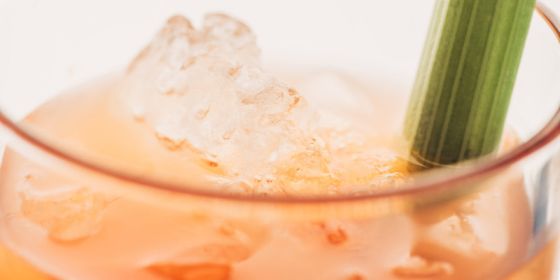
It’s hard to imagine plants having little capillaries inside them that transport water and nutrients, but this experiment shows that in action. It’s easy to set up, but you’ll have to wait at least a day to see some results. Your kids will be able to see how transpiration takes place and plants absorb water from the soil all the way up into their leaves.
- A few stalks of celery (celery works best for this because it’s a bit more visible, but you could also use flower stems)
- Different food coloring
- Place each stalk in a cup of colored water and make your predictions about what will happen.
- After a day or so you’ll see the celery leaves becoming the color of the water they’re standing in.
- Have your kids describe their observations (they can write down what they see or draw it if they prefer).
- If you look at the base of the stem you’ll also see tiny little holes that the colored water is traveling through.
When you’re done with the experiment, make sure you snap the celery and look inside – you should be able to see the capillaries in action. For more ideas, Little Bins for Little Hands has got some great hints and tips for this experiment.
28. Moldy Bread
This experiment is an oldie, but a goodie! Kids love looking at disgusting things and this one will certainly come up with the goods. Not only will kids learn about how mold grows, but they might also take on some lessons about the importance of washing their hands!
You might want to check out the results of this experiment at Science Alert before you start to see if your stomach is up to it.
- A few slices of bread
- Some ziplock bags
- Sticky little hands.
- Get a few slices of bread and lay them out on your kitchen bench.
- Have your kids touch one piece of bread with dirty, unwashed hands.
- They can wash their hands with soap and water and touch another slice, then do the same using hand sanitizer.
- Leave one piece of bread untouched.
- Place them all in clear, labeled ziplock bags and predict which one will grow the most mold.
- Leave your bread slices for at least a week (it may take a bit longer, depending on the conditions where you live) and get the kids to record their observations.
You can also try wiping your bread slices on other surfaces to see what moldy results you get (their laptop or tablet is a great place to start)!
29. Sprouting Beans
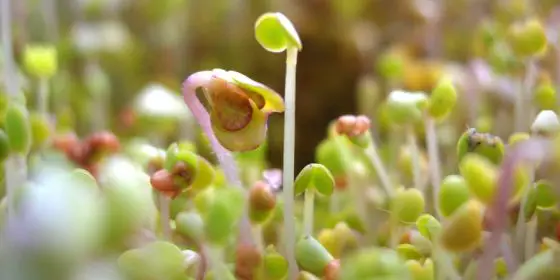
Give your household a real survivalist feel by beginning an indoor garden. We recommend planting your beans in a clear cup so that your children can be privy to all of the processes during the plant’s journey.
- How does a plant grow?
- What does germination mean?
- What is in season to grow in our area now?
- Unprocessed Beans
- If you’d like your child to see every step of the process, consider placing the beans inside of a damp paper towel inside of a ziplock.
- You can wait, see the germinated seed together, and then plant it inside of a small cup.
- Once inside the cup, watch it grow.
Extend your work by planting various beans and altering the growth conditions in order see what makes your beans grow best!
30. Begin Composting
Begin your “go green” resolutions by teaching your child the value of composting! Best of all, once the science experiment is done, your family will have a recycling process that will last your entire lifetimes.
- Why is composting important?
- How else can our household go green?
- Why do we need a foundation layer for compost?
- Compost Bin
- Organic Material
- First, create a compost bin. You can purchase one or build one out of wood.
- To begin your composting, you’ll need even amounts of brown materials (think shredded paper, dryer lint, etc.) and green materials (think fruit and vegetable waste, lawn clippings, etc.).
- If you’re really feeling fancy, throw some earthworms in there.
For days to come, your family will be able to discuss what can and cannot be broken down by the decomposers inside of the compost bin. Never-ending science!
31. Turn Grapes Into Raisins
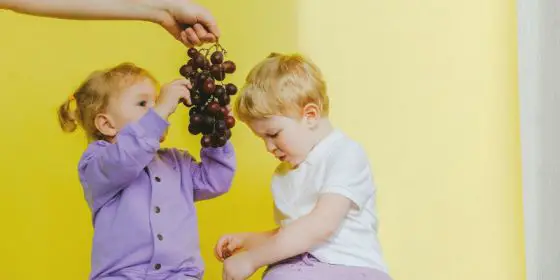
Your kids may or may not eat raising – but we can guarantee you, they’ve likely never considered the option of creating their own!
- What other snacks can we make with science?
- Should we ever eat our experiments?
- How does this work?
- For this experiment, you’ll need grapes. (Really, that’s it!)
Leave your grapes somewhere where they will not be disturbed and use this as an opportunity for your children to journal the changes in the grapes from day to day. Believe it or not, this type of sequential journaling is a valuable literacy skill!
32. DIY Science Experiment
The best science experiment your child can engage in is the one they create themselves! Begin brainstorming a list of questions and let the world be their oyster as they plan and carry out their own experiments. Some of our favorite brainstorming questions, from Scholastic’s Science-Fair Project Guide, are listed below:
- What is the effect of toothpaste brand on teeth-cleaning power?
- What brand of trash bag can withstand the most weight before ripping?
- How does the type of material affect how long a shirt takes to dry?
Written by Miranda Altice, Kaitlin Anselmo, Mark Coster, Allison Ebbets, and Jodie Magrath.

Mark is the driving force behind STEM Geek. With 20 years of experience in chemistry education and research, and 3 willing children as guinea pigs, Mark has a passion for inspiring kids and adults to combine fun and learning with STEM Toys!
Editor’s Picks

7 Best LEGO Star Wars Sets | Our Top Picks of All Time!

Best LEGO Creator Sets – Take Your Pick From These 7 Gems!

How to Use a Metal Detector: 8 Essential Tips to Get the Most of It

Best Metal Detector for Kids: 5 Top Picks (+ Buying Guide)

Best 2+ Player Cooperative Board Games (Top 6 in 2024)

MEL Chemistry Review: Is Your Child the Next Bill Nye?

100+ Easy Science Experiments for Kids To Do at Home (Using Materials You Already Have!)
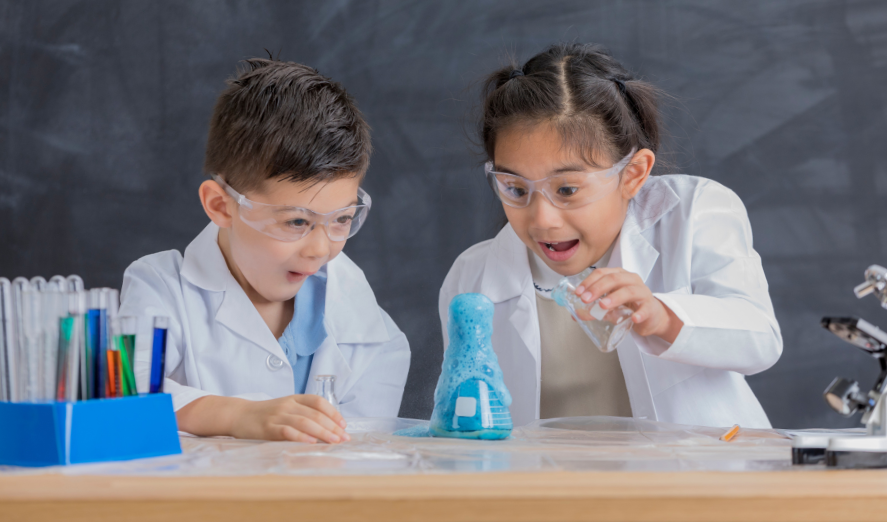
- Pinterest 1.1K

Looking for fun science experiments to do at home with your kids? We’ve compiled the ultimate list of cool science experiments for kids – most of which can be done with materials you already have on hand!
Children are naturally curious about the world around them, but explaining scientific concepts without a physical demonstration can be confusing, and well, just not fun! We’ve found the best way to teach science is with simple science experiments that provide hands-on learning opportunities – making concepts more accessible, and most importantly, extremely fun and memorable for kids.
We’ve scoured the web to pull together an epic list of the best easy science experiments you can do at home with your kids. Whether you have preschoolers starting at square one, or tweens or teens looking for the ultimate Science Fair project idea, this list has it all – ranging from weather, water and physics experiments, to chemical reactions and explosions (always a kid favorite!).
And you won’t have to make a special trip to the craft or hardware store – almost all of these fun science experiments use common household ingredients that you probably already have at home. Score!
So what are you waiting for – dive right in and have some science fun!
PIN for when you’re ready to perform a fun science experiment:

Science Experiments using Chemistry (Hello, Explosions!)
Your kids will have a blast watching how different materials react and change with these simple chemistry experiments – there’s tons of bubbly explosions, fizzy reactions and rainbow creations to choose from!
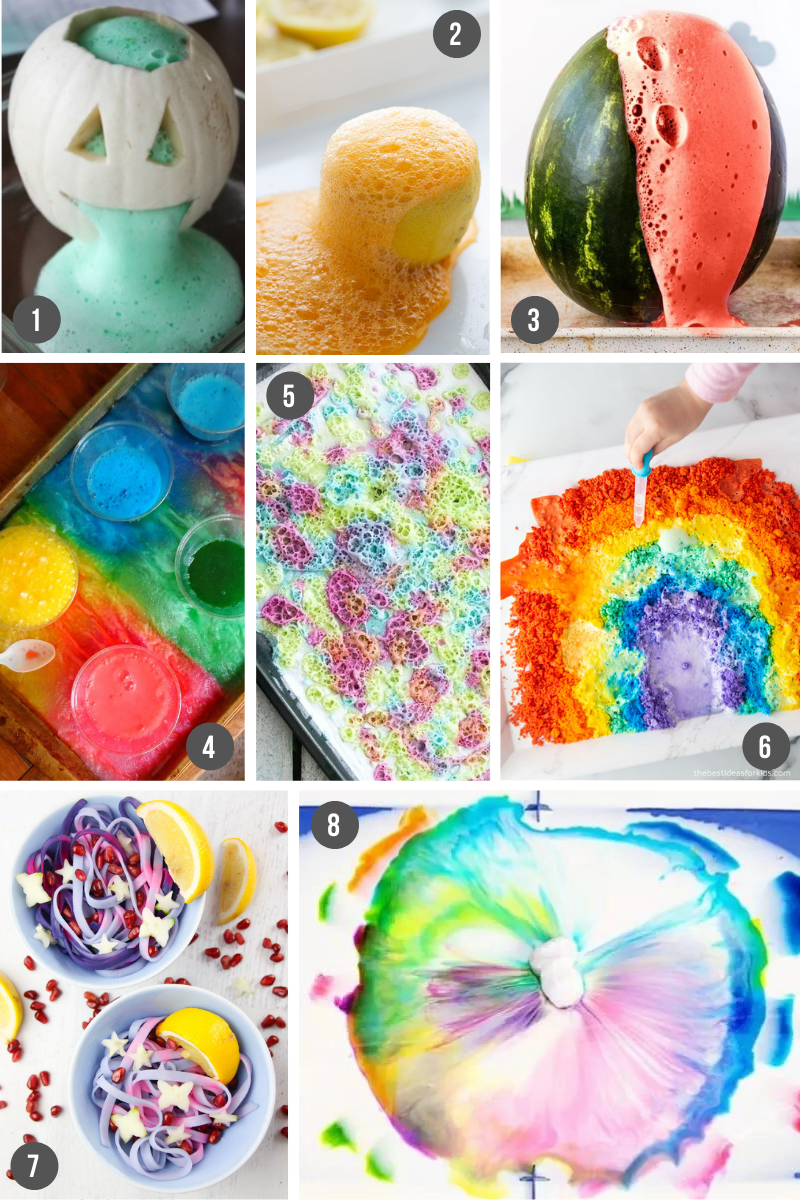
(1) These Oozing Pumpkins are sure to bring lots of laughs from your young scientists as you create overflowing reactions from baking soda and white vinegar. (via Little Bins for Little Hands)
(2) Or swap the pumpkin for a lemon to create a miniature volcano right in your kitchen with this Lemon Volcano . (via The Best Ideas for Kids)
(3) Go big or go home with this incredible Watermelon Volcano experiment where you just need a few simple materials including baking soda, dish soap, vinegar and a little bit of food coloring. (via Preschool Play & Learn)
(4) We love this colorful twist on the classic Baking Soda and Vinegar Reaction . It just never gets old! (via Crafts by Amanda)
(5) Grab a baking sheet and try this Fizzing Colors activity to make a bubbly piece of art! (via Mom Wife Busy Life)
(6) A fun Rainbow variation on the classic Baking Soda and Vinegar experiment that is sure to make kids smile. (via The Best Ideas for Kids)
(7) Make these amazing Magical Color Changing Unicorn Noodles with cabbage and then squeeze on some lemon to watch the noodles change color! (via Left Brain Craft Brain)
(8) Learn about reactions on a large scale and turn milk into a work of art with this interactive Giant Magic Milk experiment . (via Hello Wonderful)
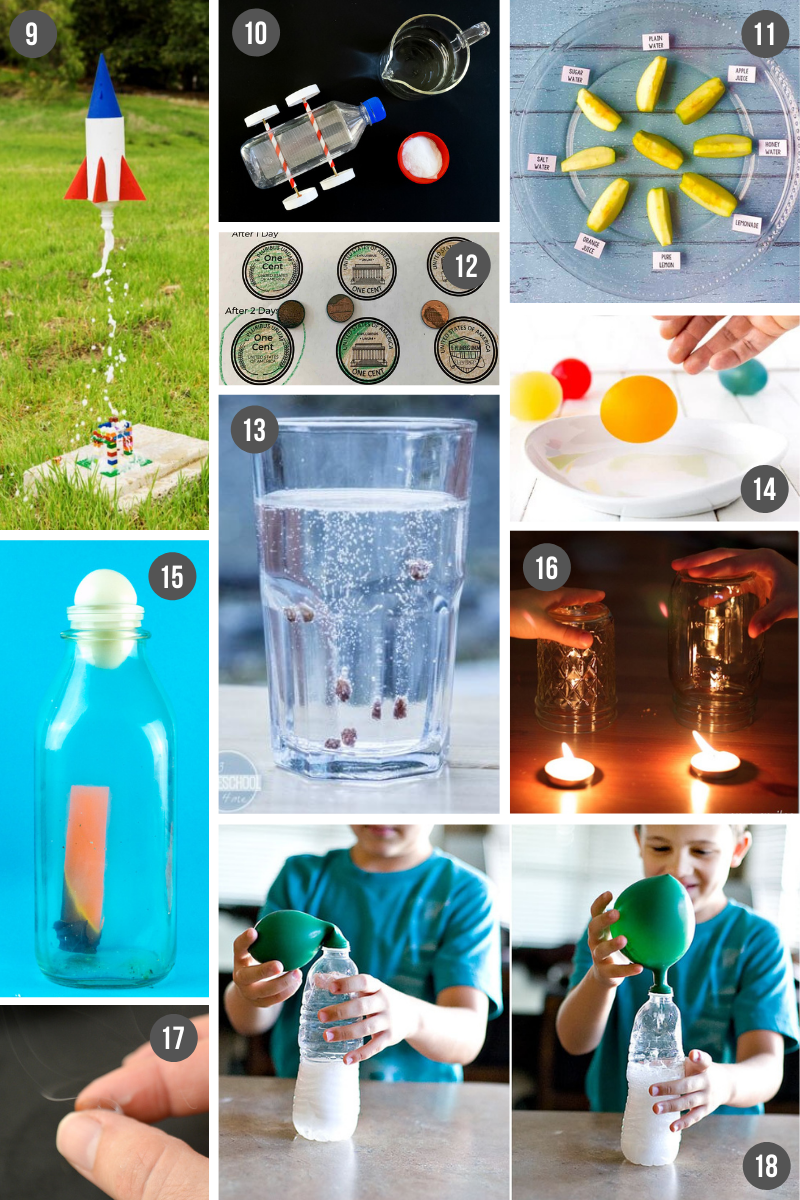
(9) Up the ante and make this Vinegar & Baking Soda Rocket – the chemical reaction can make it fly 30-50 feet into the air! (via 123 Homeschool for 4)
(10) Or try this super cool Chemical Reaction Car – it gets a boost from a fizzy reaction from a base (sodium bicarbonate, aka baking soda) and an acid (vinegar) which mix together and release carbon dioxide. (via Left Brain Craft Brain)
(11) Kids love this simple experiment about Apple Oxidation where they can predict which liquid will keep the apple slices from browning, then test their hypothesis. (via Jennifer Findley)
(12) Ever wonder why the Statue of Liberty is green? Get the answer to that question and learn a little bit about a famous US landmark with this cool Penny Science Experiment . (via The Keele Deal)
(13) Wow your kids by making raisins dance! This Dancing Raisins chemical experiment requires minimal ingredients (water + baking soda) but gets maximum results. (via 123 Homeschool 4 ME)
(14) What happens if you drop an egg? It cracks, right? But what if you drop a bouncy egg?! Learn how to make Bouncing Eggs with this fun kitchen experiment. (via 123 Homeschool 4 ME)
(15) It’s an old classic, but it’s still fun to do – try to fit a hardboiled egg into a glass jar with this Egg in a Bottle experiment. (via Left Brain Craft Brain)
(16) Practice fire safety while learning about the relationship between oxygen and fire with this incredibly simple Fire Safety Experiment . (via Mama Smiles)
(17) Impress your kids with this cool Smoking Fingers Trick that makes it look like your fingers are on fire as smoke rises from them! And yes, it’s best to leave this one to the grown-ups for demonstration. (via Left Brain Craft Brain)
(18) Kids will enjoy watching these balloons inflate “on their own” in this fun Balloon experiment . (via All for the Boys)

(19) With a few ingredients from your pantry, you can head outside and try this Exploding Sidewalk Chalk , because who doesn’t love messy explosions?! (via Hess Un-Academy)
(20) How do elephants keep their teeth clean? With Elephant Toothpaste of course! This is one of the best science experiments for kids of all ages – from preschoolers to teens. All it takes is hydrogen peroxide, dry yeast, dish soap and food coloring to make this super cool foamy reaction. (via Teach Beside Me)
(21) Kids (and parents) will enjoy seeing the “lava” flowing in this fun experiment where you can Take a Look Inside of a Volcano ! (via 123 Homeschool 4 Me)
(22) How pretty are these Crystal Flowers ? They’re a craft and science experiment all in one! (via Preschool Play & Learn)
(23) Make your own sweet treat, with this Fizzy Sherbet and learn the science behind why it tickles your tongue. (via Go Science Kids)
(24) Grab all your dull pennies and task your little scientists to try different solutions to determine How to Clean Pennies , then learn why some solutions work better than others. (via Gally Kids)
Weather Science Experiments for Kids
Why is it rainy one day and sunny the next? What causes thunder and lightning? How do clouds form?
The weather is always changing and easily observable by kids. That makes weather experiments not only super fun, but incredibly relevant for children of all ages. Explore weather-related science with these easy experiments:
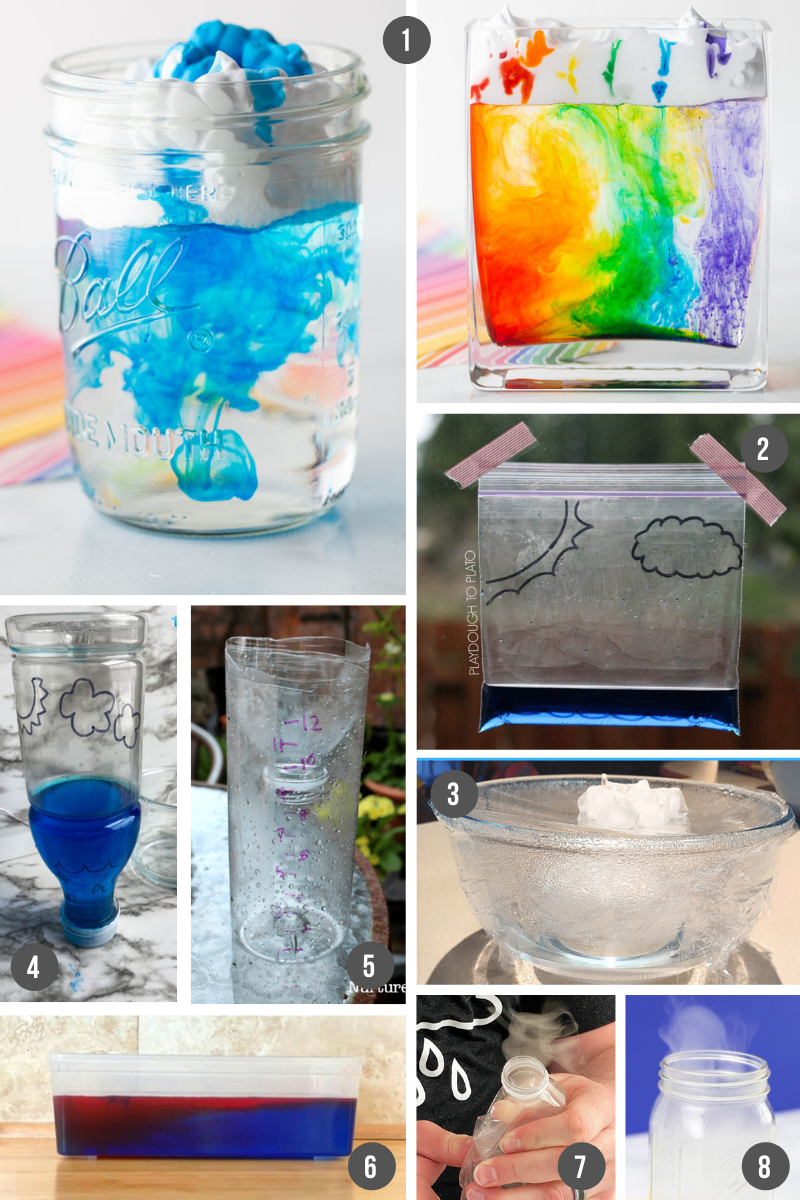
(1) Have fun creating your very own rain clouds using shaving cream and food coloring with this Rain Cloud in a Jar activity. (via The Best Ideas for Kids)
(2) If you’ve got a marker and a plastic zipper bag, your kids will love getting to watch the water cycle in action by creating their very own Water Cycle in a Bag . (via Playdough to Plato)
(3) Or simply use a glass bowl and some ice cubes for a Water Cycle Experiment on the kitchen counter! (via Taming Little Monsters)
(4) Alternatively, reuse plastic bottles for a hands-on Water Cycle Experiment . (via 123 Homeschool 4 ME)
(5) Now that you know all about the water cycle, why not Build Your Own Rain Gauge ? (via Nurture Store)
(6) Learn what happens when warm air rises and cool air sinks with this colorful simple experiment. (via Mom Brite)
(7) Kids will love watching a cloud form and escape when you Create a Cloud in a Water Bottle . (via Playing with Rain)
(8) If you don’t have an empty water bottle lying around, you can check out this post to create another billowing cloud using a mason jar . It is so exciting to watch the clouds roll out of the jars! (via Little Bins for Little Hands)

(9) This Tornado in a Jar is one of the most classic science experiments and is always a hit with kids. (via Natural Beach Living)
(10) Light a fire and learn about how heat moves from the Earth in this Observing Conduction experiment. (via Learn, Play, Imagine)
(11) If it’s too cold to go out and play, make the most of your time inside with this Snowstorm in a Jar . (via Taming Little Monsters)
(12) You can create your own lightning spark at home with static electricity by using just a balloon and a metal spoon! (via Learn, Play, Imagine)
(13) Have you ever wondered how hail forms? Well, you’re in luck! Grab your hair dryer for this Understanding Hail activity . (via Playing with Rain)
(14) Watch wind create energy by Making a Pinwheel. (via Science Sparks)
(15) Your kids will love learning about ice caps and polar regions with this fun sensory Melting Polar Ice Caps science activity. (via Science Sparks)
(16) And if that’s not enough snow, you can kick it up a notch with this Avalanche Experiment . (via A Dab of Glue Will Do)
(17) Grab some sidewalk chalk on a sunny day for a Human Sundial Experiment . (via Rhythms of Play)
(18) Make your own Rainbow and learn about refraction and dispersion of light. (via Rookie Parenting)
Easy Science Experiments with Candy
Adding candy makes anything more exciting for kids (or at least more sweet!), and these cool candy science experiments are no exception.
These experiments are easy, fun, and a great way to use up any extra candy that might be hanging around after the holidays!
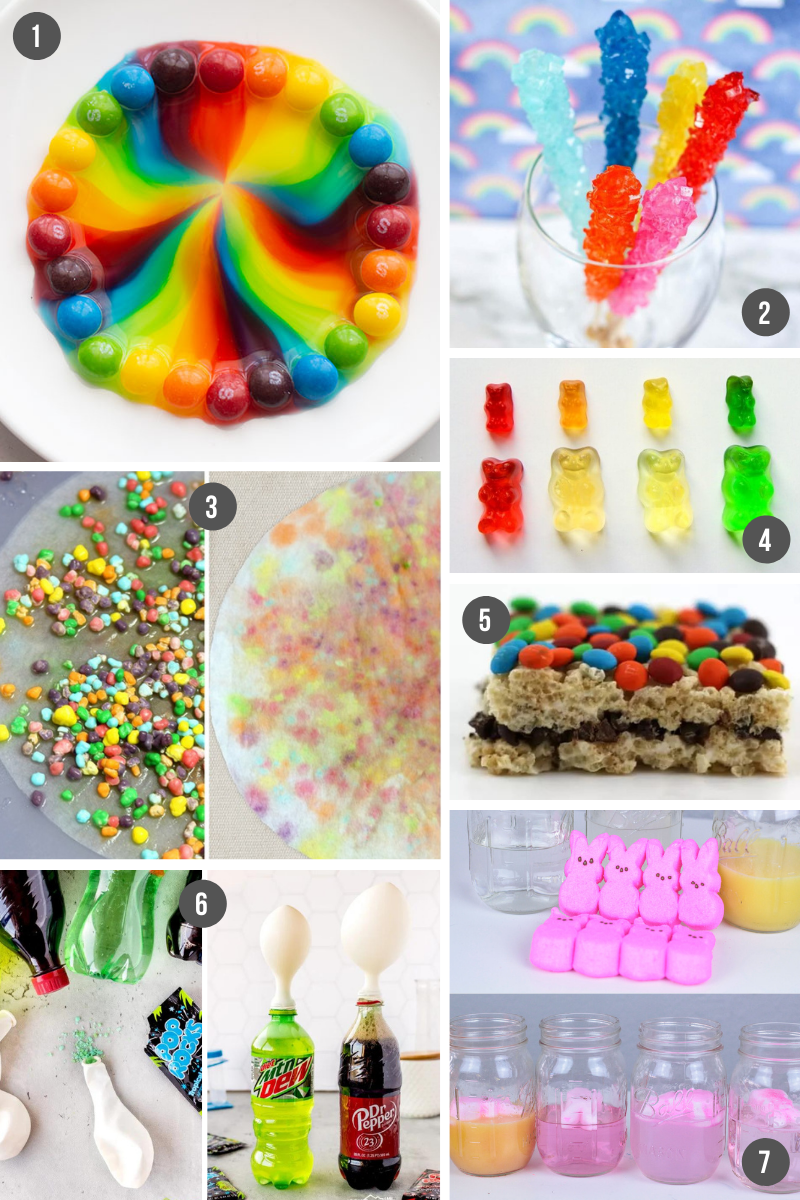
(1) Create a rainbow on your plate with this stunning Easy Skittles Experiment . (via The Best Ideas for Kids)
(2) Now this is an experiment that kids will get excited about! Make your own Homemade Rock Candy while learning about the crystallization process. (via Better Life Blog)
(3) Explore chromatography, a technique for separating difference substances (in this case, candy and dye), with this cool Candy Chromatography kid-friendly experiment. (via Mama Miss)
(4) Learn about osmosis and watch gummy candy magically grow with this simple Gummy Bear Science Experiment . (via Playdough to Plato)
(5) Does your child like to collect rocks? Why not let them dig deeper by making these Edible Sedimentary Rocks . (via Rainy Day Mum)
(6) Watch your kids get excited as you make Pop Rocks blow up a balloon in this epic Pop Rock Science Experiment . (via 123 Homeschool 4 ME)
(7) While many people either love or do not love bright marshmallow Peeps, everyone will love learning what makes them dissolve in this Dissolving Peeps experiment. (via A Dab of Glue Will Do)

(8) If your candy has transparent colored wrappers, you can save them to learn about color mixing in with this fun color science project . (via Kids’ Craft Room)
(9) There are many ways to learn about the human body, but we’re pretty sure that the sweetest way is with candy. Kids of all ages will love making this Candy DNA Model . (via Science Sparks)
(10) Your kids won’t be the only wiggle worms in the house with these fun Dancing Frankenworms . (via Playdough to Plato)
(11) Learn how powerful the sun can be with these DIY Solar Oven S’mores . We bet you can’t eat just one! (via Desert Chica)
(12) Your little scientists will LOVE this Mentos Geyser which will teach them what happens when carbon dioxide in Soda meets a Mentos candy, while putting on quite the display! (via I Can Teach My Child)
(13) Usually we’d advise that kids stay far away from broken glass – unless, this is, it’s this yummy Edible Glass ! (via Go Science Kids)
(14) This is a simple science experiment and a magic trick! Find out what happens to sugar when emerged in warm water with this cool Disappearing Candy Cane Stripes experiment. (via Playdough to Plato)
Science Experiments Using Water
If there is anything that is almost universally fun for kids, it’s playing with water. Try one of these fun water science experiments that are perfect for a rainy day indoors, or for keeping cool on a sunny day!

(1) If your little one enjoys all things colorful, they will love this incredible Walking Water Science Experiment – and all you need are paper towels, water and food coloring to get started. (via The Best Ideas for Kids)
(2) Your kids won’t believe their eyes when they see cabbage changing colors in this fun Rainbow Cabbage experiment . (via Growing a Jeweled Rose)
(3) Discover how different liquids react together with this easy experiment that creates a colorful Layered Density Column . (via Steve Spangler Science)
(4) Or learn how water travels upward through vines and stems all while creating a beautiful bouquet with these Color Changing Flowers . (via The Best Ideas for Kids)
(5) Observe how different liquids do or do not mix by creating Fireworks in a Jar . (via Hands on Teaching Ideas)
(6) Find out how temperature affects the density of water with this colorful Hot and Cold Water Density experiment. (via STEAMsational)
(7) “Grow” your own Rainbow with this colorful science experiment that highlights chromatography. (via The Best Ideas for Kids)
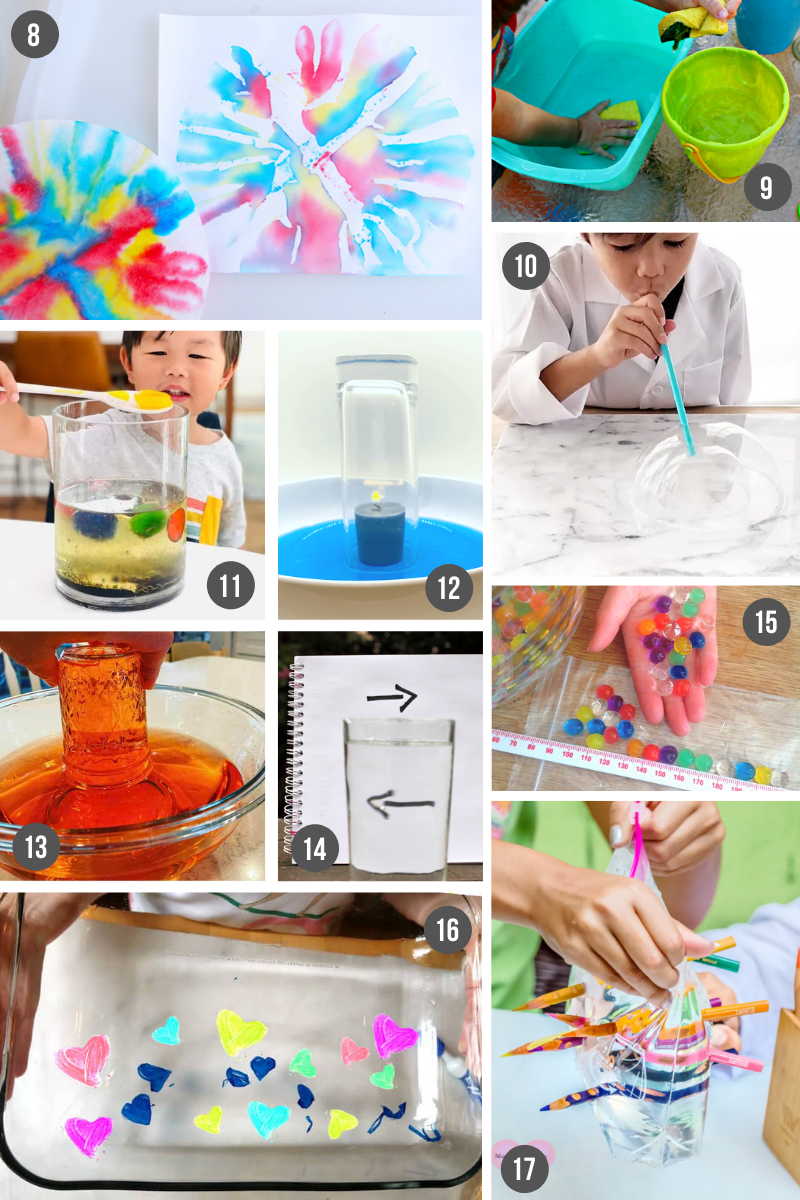
(8) Keep exploring the concept of absorption, diffusion and solubility while bringing out your creative side with this Coffee Filter Process Art . (via Babble Dabble Do)
(9) See how quickly you can move water from one container to the next using sponges in this fun Water Transfer Activity. (via Live Well Play Together)
(10) Play with water and Bubbles while learning about surface tension and evaporation. (via Hello Wonderful)
(11) Who else had a lava lamp growing up? This DIY Frozen Lava Lamp experiment is not only simple and fun, but brings back the lava lamp nostalgia! (via Hello Wonderful)
(12) Explore the relationship between gas, pressure, and volume in this easy Rising Water Experiment . (via Team Cartwright)
(13) Explore the power of water pressure with this low-prep, big fun Water Suspension Science activity. (via A Mothership Down)
(14) If you are looking for an activity that you can do almost anywhere, take a couple of minutes for this Water Light Refraction Experiment . (via Go Science Kids)
(15) Learn about absorption and expansion by Measuring Water Beads. (via Blue Bear Wood)
(16) Kids will love watching their drawings come to life with these Floating Dry Erase Figures . So cool! (via Go Science Girls)
(17) What will happen if you poke a hole in a bag full of water? Will it leak? Not with this Leak Proof Bag experiment. (via Montessori from the Heart)
Life Science Experiments for Kids
One of our favorite things to learn about is how living things (ourselves included) work. These life science experiments and activities will spark your child’s curiosity about the world around them!

Life Science Experiments about the Human Body:
(1) Learn how our heart pumps blood to our bodies with this Heart Pump Model . (via Science Sparks)
(2) Your child can learn how our lungs work by making a Model Lung with simple materials you probably have around the house: a plastic bottle, straw, elastic band, balloons and play dough! (via Science Sparks)
(3) These printable life-sized organs allow kids to study their body anatomy in a hands-on way. (via Adventure in a Box)
(4) Learn all about scabs – what causes them (and why they’re so important not to pick!) by making a Fake Jelly Scab that can then be eaten! (via Science Sparks)
(5) If you’re willing to brave glitter, this Glitter Germs Hand Washing Activity teaches children the importance of thorough hand washing while talking about how germs spread. (via The Soccer Mom Blog)
(6) Or, try this Growing Germs easy science experiment which uses an apple and your own child’s germs to not only teach kids to wash their hands, but all about controls and variables too! (via Playdough to Plato)
(7) Demonstrate how tooth decay happens and how to prevent it by soaking eggshells in various liquids in this Tooth Decay experiment. Is sugar a culprit? A great lesson for kids. (via Sciencing)
(8) This super easy Heart Rate Investigation will teach your kids about their heart, blood circulation and pulse, but also get them moving! (via Science Sparks)
(9) Your budding artists will love this Magic Heart Painting activity. Watch the cardiovascular system appear before their eyes! (via Taming Little Monsters)
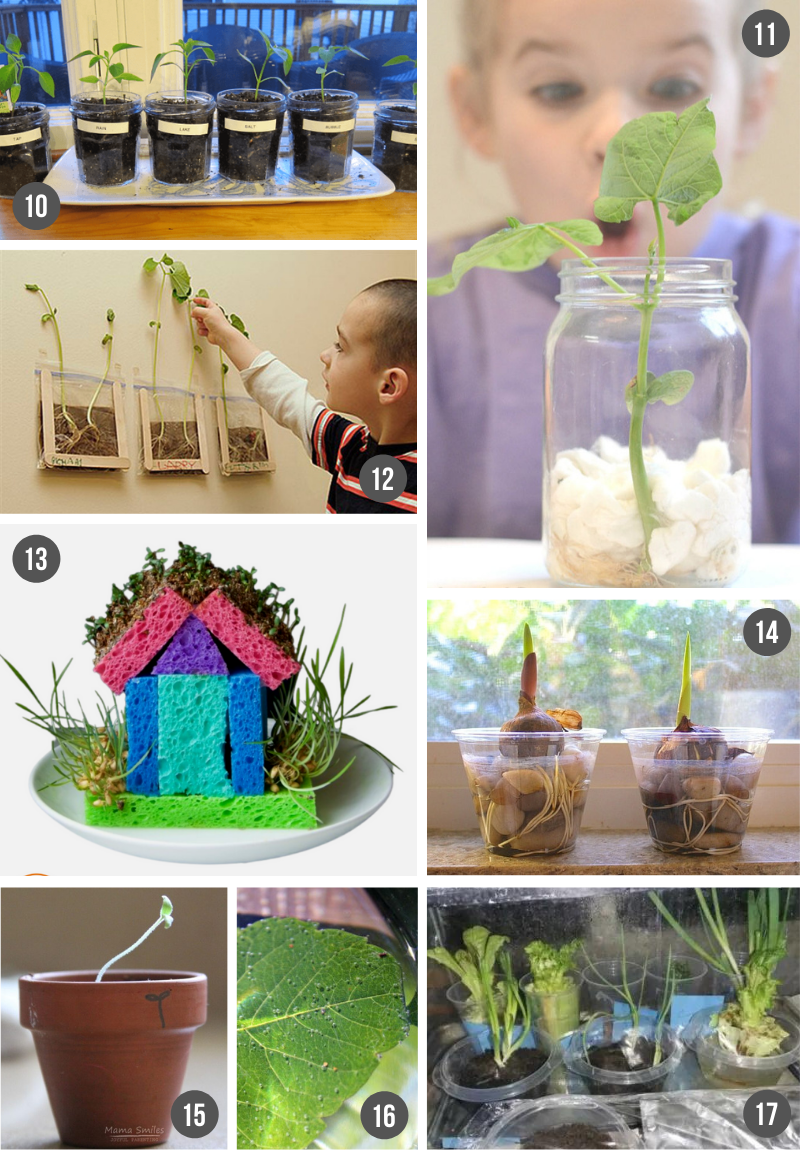
Life Science Experiments with Plants:
(10) How do different liquids affect plant growth? Find out with this Plant Growth experiment – it’s one of our favorite science experiments and makes a great Science Fair Project! (via Lemon Lime Adventures)
(11) Discuss how plants grow and what they need to thrive by growing a Bean in a Jar . (via Growling a Jeweled Rose)
(12) Or use a plastic bag instead! All you need is a Ziploc baggie, a few beans and a damp paper towel to Grow Beans in a Bag . (via Community Playthings)
(13) Combine engineering and science while learning all about germination with this DIY Sprout House . (via The STEM Laboratory)
(14) Observe plant growth both above and beneath the “ground” by planting bulbs in a clear cup . (via Buggy and Buddy)
(15) Watch how plants respond to sunlight in this super easy Plant and Sunlight Experiment . (via Mama Smiles)
(16) Kids will love learning How Leaves Breathe with this simple plant experiment. (via Edventures with Kids)
(17) Did you know that you can grow vegetables with scraps? Watch your scrap veggies grow new life with a Scrap Garden . (via Hess UnAcademy)
Easy Physics Science Experiments for Kids
Learn how things move with these simple physics experiments for kids. Physics is the branch of science that studies matter, how it moves, and how it interacts – it encompasses the study of motion, light, electricity, magnetism, aerodynamics, and sound.
We’ve found that the best way to explain physics to kids is to skip the explanation and do a hands-on demonstration instead. Use these fun experiments to jump feet first into the world of Physics:
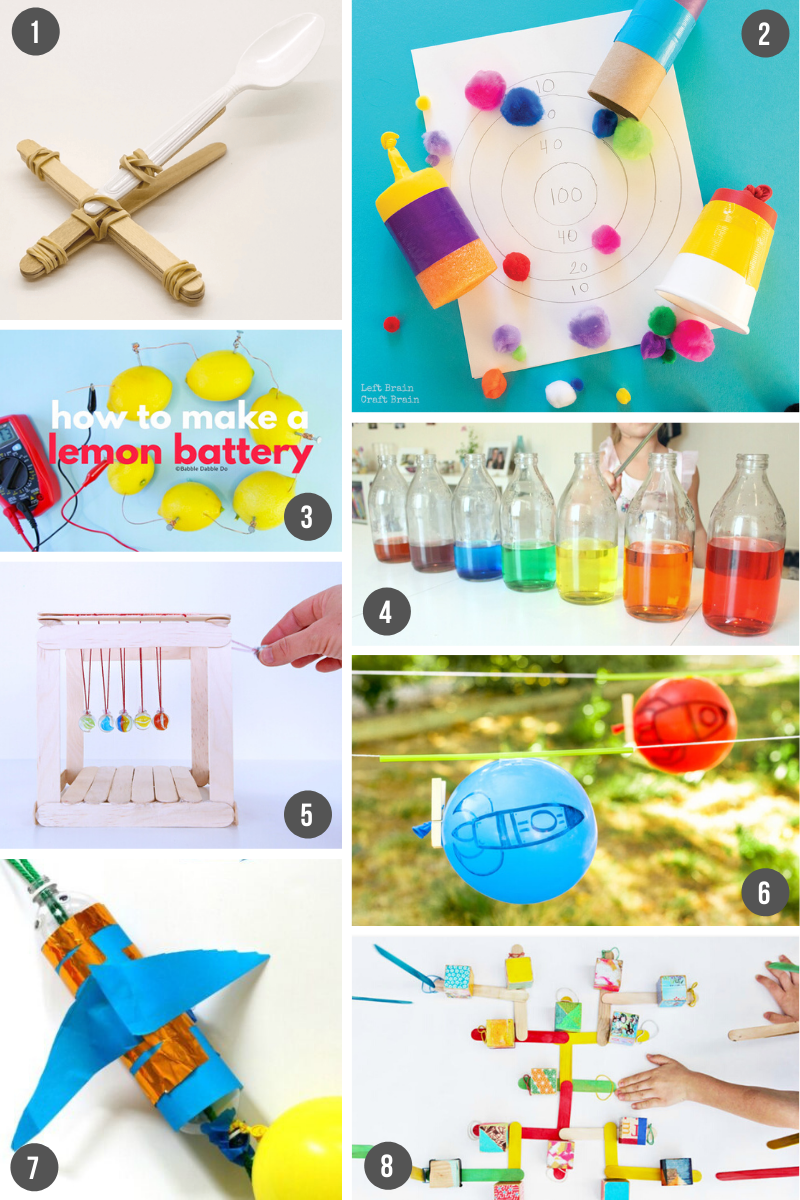
(1) First off, a classic Craft Stick Catapult ! This simple activity is a great way to teach about energy cause and effect, as well as simple machines…and you thought you were just going to be launching marshmallows across the room! (via Team Cartwright)
(2) Explore physics and play at the same time with these awesome Pom Pom Shooters . (via Left Brain Craft Brain)
(3) This classic science fair project will teach your kids how to use chemistry to generate an electric current by making a Lemon/Lime Battery ! (via Babble Dabble Do)
(4) Explore the science of sound with this pretty Rainbow Water Xylophone . (via Mama Papa Bubba)
(5) Make a simple Newton’s Cradle out of popsicle sticks, string and marbles to demonstration the conservation of momentum – kids loooove this one! (via Babble Dabble Do)
(6) Send a balloon blasting off and introduce simple physics with these neat Balloon Straw Rockets . (via Preschool Play & Learn)
(7) Grab some plastic bottles and string to make this fun Inertia Zoom Ball – a project kids can learn and play with! (via What Do We Do All Day)
(8) Popsicle sticks, rubber bands and some blocks are all you need to make a Stixplosion – demonstrating chain reactions which you can use to teach about kinetic and potential energy. (via Babble Dabble Do)
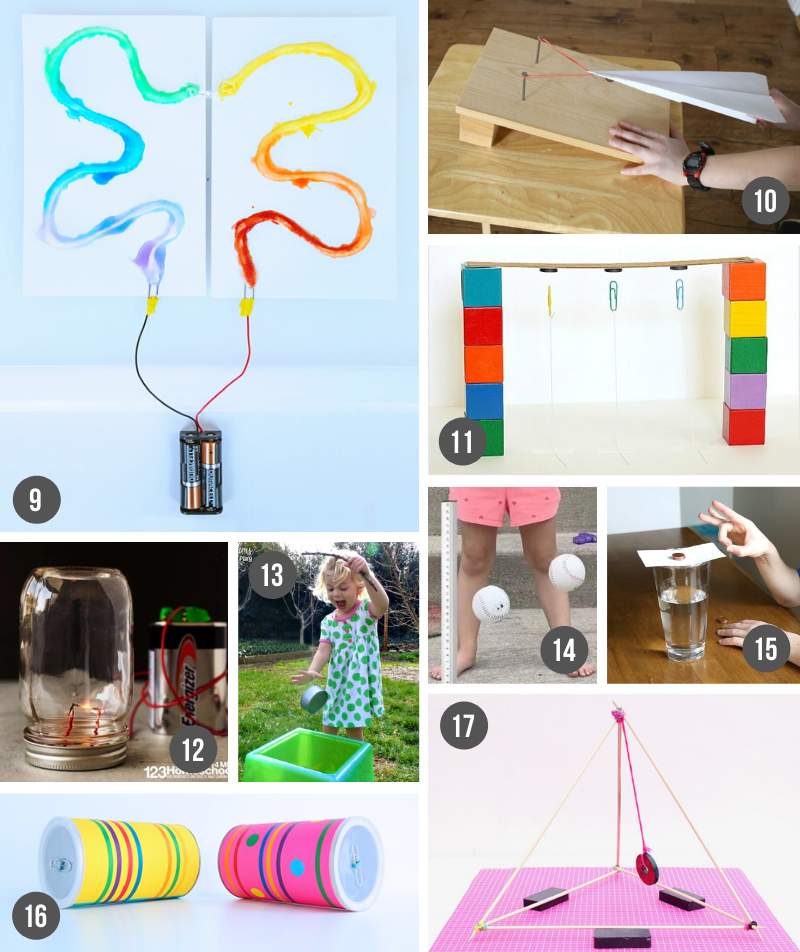
(9) Make a Salty Circuit to introduce your kids to electricity and how it moves from a battery through a circuit to power an LED. (via Babble Dabble Do)
(10) Demonstrate work and energy with this super cool Paper Airplane Launcher . (via Frugal Fun 4 Boys and Girls)
(11) Visually show the concept of gravity with this easy Gravity Activity with Paperclips . (via Buggy and Buddy)
(12) If you’re feeling particularly ambitious, you can create your own Light Bulb Experiment to see how electricity travels through a circuit. (via 123 Homeschool for Me)
(13) Discover what things are magnetic and vice versa with this fun Magnet Fishing Game . Great for preschoolers! (via Rhythms of Play)
(14) Baseball fans will enjoy this Frozen Baseball Experiment to observe how temperature affects how a baseball travels. (via Our Family Code)
(15) Learn more about inertia with these easy Inertia Science Experiments with Pennies . (via Frugal Fun 4 Boys and Girls)
(16) This awesome Rollback Can is a simple physics project that will amaze your kids and demonstrate potential and kinetic energy. (via Babble Dabble Do)
(17) These 4 Magical Magnet Projects will teach your kids about magnetism, and they’ll be mesmerized by its power! (via Babble Dabble Do)
States of Matter Science Experiments for Kids
All matter is either a solid, liquid, or gas, right? Or is it? And what happens to make some matter change states more easily than others? Kids will love these easy States of Matter science activities where they will get to learn the answers to those questions and more!

(1) This Simple Balloon experiment will teach young kids all about the 3 states of matter with a Hands-on Density test. (via 123 Homeschool 4 ME)
(2) Watch as liquid cream becomes a solid by making your own Homemade Butter . Make sure you taste test it too! (via Playdough to Plato)
(3) And because it’s always a good time for ice cream, see how simple ingredients come together and change state when you make this Ice Cream in a Bag . It’s also a great activity to discuss an exothermic reaction, a chemical reaction that releases light or heat. In this instance, heat is released from the shaking, yet it freezes the cream – science sure is amazing! (via House of Nash Eats)
(4) Fill up balloons with different types of liquid in this fun Water Balloon Science Experiment and then try and predict if they will float or sink in water. (via 123 Homeschool 4 ME)
(5) A messy project that is universally loved by kids – Oobleck ! This Non-Newtonian fluid can act like a solid and a liquid. And you can make it at home as long as you’ve got cornstarch in your pantry. (via The Best Ideas for Kids)
(6) Task your kids to create an insulated box for an ice cube using materials from around the house in this Don’t Melt the Ice experiment. (via Frugal Fun 4 Boys and Girls)
We hope this list of easy science experiments for kids proves that science doesn’t have to be complicated…or boring! With materials you already have at home, you can create a memorable learning experience, and you definitely don’t need a lab coat to watch science come alive!
RELATED: Looking for more fun indoor activities to keep your kids busy? Check out 87 Energy-Busting Indoor Games & Activities for Kids (because cabin fever is no joke!)
What’s your favorite science experiment? Let us know your favorites in the comments below!

Mary Leigh is a stay-at-home mom to 3 fun and active boys. She started her blog, Live Well Play Together , as a creative way to encourage moms to celebrate the simple, everyday moments in motherhood. You can most often find her writing about kids’ activities, thoughts on motherhood, and simple ideas for family fun. Follow her on Pinterest , Instagram , Facebook , and Twitter for fun ideas to bring a little fun to your everyday!

Similar Posts

52 Holiday Traditions For Families To Make Christmas Time Magical

Unique 13th Birthday Party Ideas Your Just-Turned Teenager Will Love

70 Creative, No-Carve Pumpkin Decorating Ideas for Kids

The Foolproof Kitchen Cleaning Schedule To Keep Your Kitchen Spotless (+ Free Printable Checklist!)
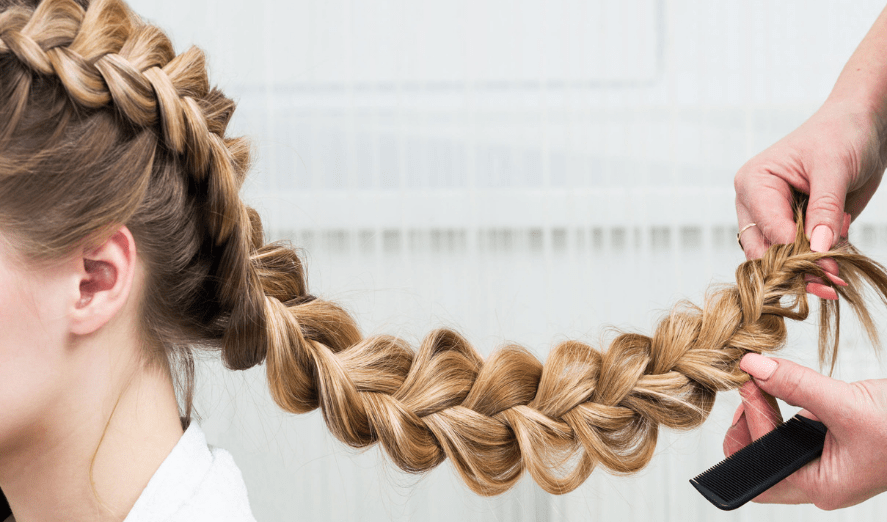
Easy Girls Hairstyles For Toddlers, Tweens & Teens

80+ DIY Star Crafts Ideas For Kids To Make (& Adults Too!)
Comments brighten our day. leave one here. cancel reply, featured in.

Unique & Useful Party Favor Ideas for Kids That Aren’t Junk!
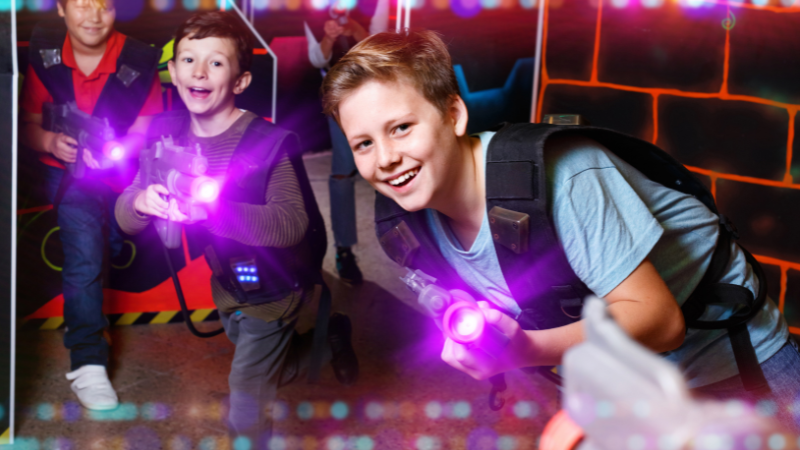
Tween Boy Birthday Party Ideas – Fun Themes & Activities!
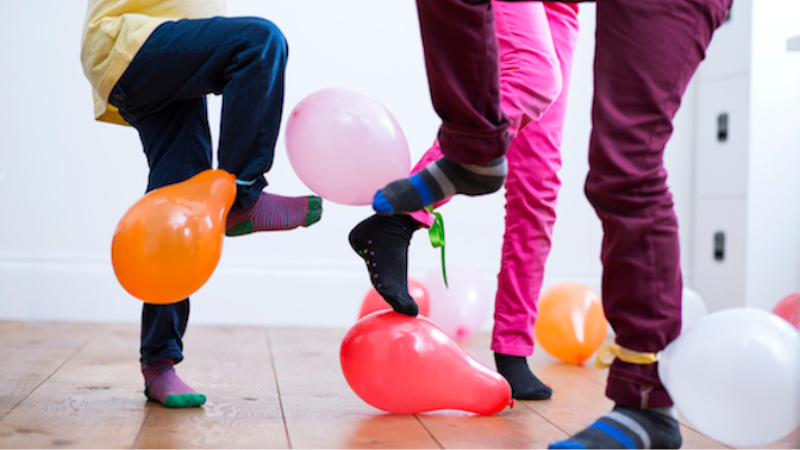
90+ Fun Indoor Birthday Party Games For Kids of All Ages

Creative Mother Daughter Photoshoot Ideas. Top Poses & Tips!
65 Science Experiments for Kids: Have a Blast at Home
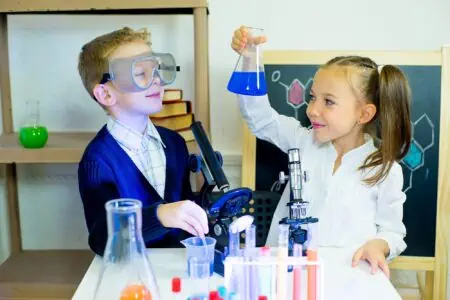
Is your kid bored at the weekends or while on school vacation? Are they couch potato-ing in front of the TV again? I know a brilliant way to keep your child entertained and engage their brain: science experiments.
Whether your child is intrigued by the thought of Imploding Cans or a Lemon Volcano, I’ve put together a list of 65 dazzling science experiments for kids! No need for a fancy science lab — you can do these all from the comfort of your home.
I’ll let you know exactly how to carry out each experiment. Gone are the days when there was nothing to do. Now you have 65 theories to test out!
Easy Science Experiments Kids Will Enjoy
Safety tips, faqs about science experiments for kids.
From making a cloud in a bottle to homemade bouncy balls, here are 65 easy science projects for kids to try. Plus, most use household items, making this a cheap way to pass the time.
1. Cloud in a Bottle
Tightly secure the lid on an empty plastic water bottle. Twist the bottom of the water bottle as tightly as possible. This will compress the air and push all the molecules inside together.
When you open the water bottle, the molecules expand, releasing the pressure and creating an instant cloud.
2. Floating Fish
Learn about solubility and density with this fun experiment. On the bottom of a glass plate, draw the outline of a fish with a dry-erase marker.
After a couple of minutes, slowly pour tap water into the corner of the dish until it covers the plate. The water will move towards the fish drawing, surrounding it. Tilt the plate from side to side and watch as the fish drawing starts to float!
3. Lava Lamp
Learn about density and make a lava lamp at home. Add two inches of baking soda to the bottom of a jar, then fill the rest with vegetable oil until full. These two ingredients won’t mix.
Combine ¼ cup of vinegar with a bit of food coloring in a separate cup. Mix together before pouring the solution into the jar with oil and baking soda.
Turn off the lights and shine a flashlight on your lava lamp!
4. Foamy Fountain (Elephant’s Toothpaste)
In this experiment, kids will make foam with a few household ingredients. In scientific terms, this is called an Exothermic Reaction.
Pour ¾ cup of hydrogen peroxide into a bottle. Add 10 drops of food coloring and one tablespoon of dish soap. Swirl it around to mix.
Combine three tablespoons of warm water and one tablespoon of dry yeast in a separate cup. Mix for 30 seconds.
Use a funnel to pour the yeast-water combination into the bottle and watch it fantastically foam!
Don’t touch the foam. We know it’s tempting, but it contains peroxide, which can irritate your skin and eyes.
5. Magic Milk
Pour whole milk into a shallow pie dish with a flat surface. Add a few drops of food coloring to different parts of the dish. You can use tons of different colors!
In a separate bowl, pour some dish soap. Dip a cotton swab into the dish soap and gently touch the surface of the milk with the swab.
The soap will lower the surface tension of the milk, and the colors will burst and swim around.
6. Egg in a Bottle
Did you know you can fit an egg in a bottle without breaking it? Firstly, boil and peel your egg. Then grab a glass bottle (no plastic!) and ensure that the opening is smaller than the diameter of the egg.
With an adult’s help, light three matches and drop them into the bottle. Place the egg at the bottle’s opening with the wide end pointing up. The egg will slowly squeeze into the bottle as the fire goes out!
7. Floating Ping Pong Ball
Levitate a ping pong ball with Bernoulli’s Principle! Make a paper funnel using thick card. With a grown-up’s help, cut a small hole in the bottom of the funnel.
Insert a straw into the bottom of the funnel and secure it in place with putty or tape.
Add a ping pong ball (or DIY foil ball) into the funnel and put the long end of the straw in your mouth. Blow into the straw and watch the ball levitate because of the high speed and low-pressure air.
8. Imploding Cans
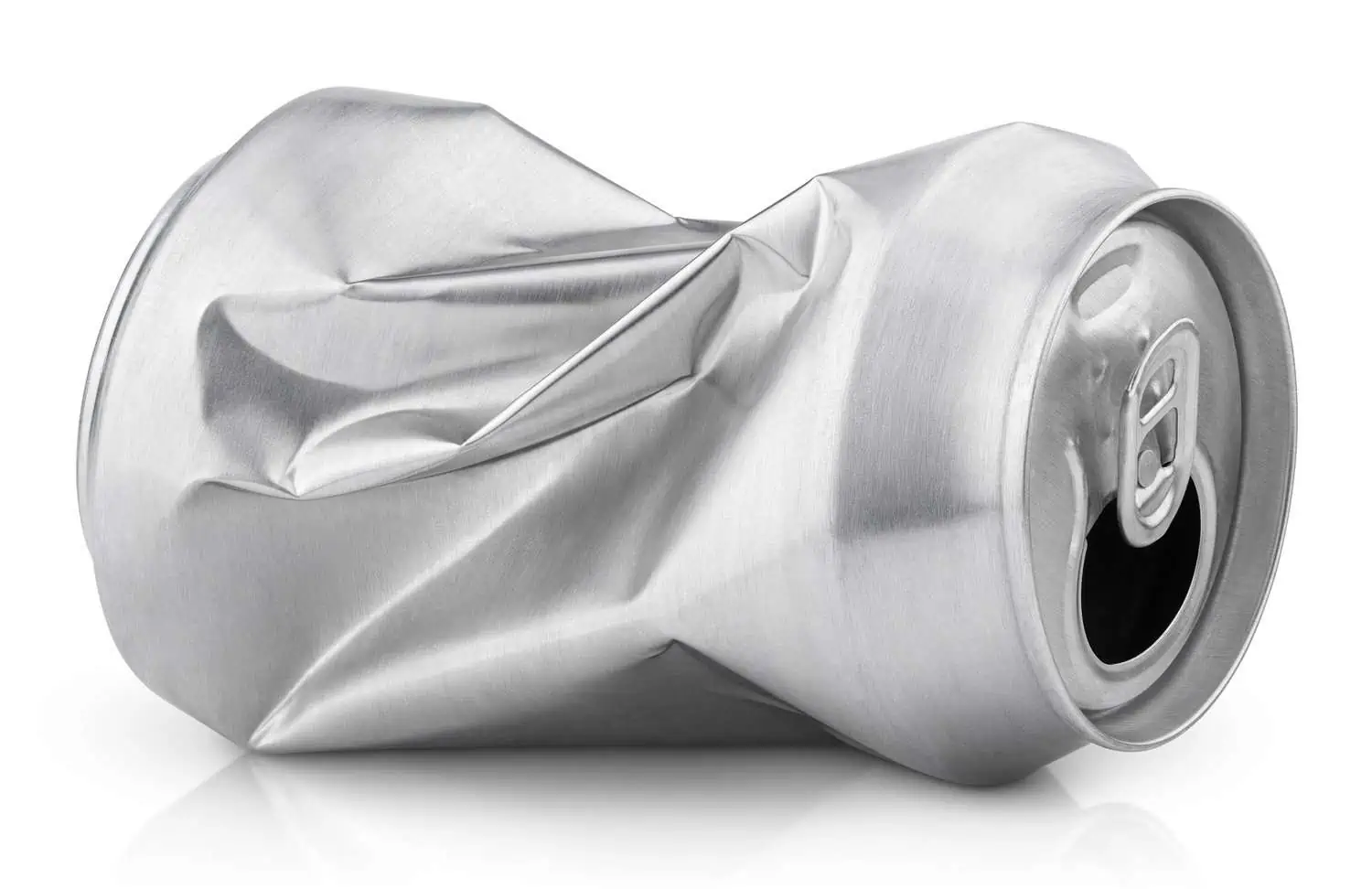
Fill up a few empty soda cans with a bit of water. Then, fill up a large bowl with ice cubes and water.
Heat a flat frying pan on the stove and carefully stand your cans on the frying pan until they are hot. Using tongs, transfer the hot cans one at a time into the ice water.
When the cans drastically change temperature, they implode on themselves and crush inwards.
This is one for parents to do and kids to watch. It’s not safe for kids to do on their own.
9. Eggs and Toothpaste
Learn about the power of toothpaste in this shocking science project for kids. Fill up four glasses, two with soda and two with lemon juice. Then cover two eggs in toothpaste and pop one into a soda glass and another into the lemon juice glass.
Next, place two more eggs into the remaining glasses. This time, they’re not covered in toothpaste. Leave all the eggs in the glasses for 12 hours.
Once the time is up, remove the eggs, rinse under cool water, and pat dry. You’ll notice that the eggs covered in toothpaste feel and look different than those without. This emphasizes the significance and protective abilities of toothpaste.
10. Black Pepper Trick
Teach kids about surface tension and the power of soap in this fun and easy experiment. Pour a thin layer of water onto a plate. Pour a bit of ground pepper all over the water’s surface.
Then pour a tiny amount of dish soap onto your finger. Dip your finger into the water, and you’ll notice the pepper quickly zoom away from your finger.
Need something for your science fair project? People will love watching this one in action!
11. Ice Cream in a Bag
Have fun and try something yum! Pour four ounces of milk and cream, ¼ teaspoon of vanilla, two tablespoons of sugar, two teaspoons of vanilla, and food coloring (optional) into a zip-bag and ensure it’s securely closed.
Place the bag into a larger zip-bag and fill it with ice and a small handful of salt to surround the smaller bag. Zip it shut and hold either side while shaking back and forward for about five to eight minutes.
Yes, your arms will be tired. But in the end, you’ll have ice cream! Open the large bag and remove the smaller bag. Rinse off salt from the bag and open it up. It’s ice cream time!
12. Magic Melting Skittles
Grab a plate and line up Skittles around the edge of the bowl. Pour a little bit of boiling water into the plate to surround the bottom. Watch as the colors from the Skittles slowly melt off and swirl together on the plate.
This experiment has endless possibilities. Try it with different colors and shapes on the plate!
13. Bouncy Egg
Turn a raw egg into a bouncy egg! Simply place the raw egg (uncracked) into a glass. Cover it completely with distilled white vinegar and leave for 24 hours. After 24 hours, you can gently scrape off the eggshell, and you’re left with a squishy, bouncy egg.
14. Grow an Avocado Tree
Wash an avocado pit and insert four toothpicks halfway up the side, on all sides. Suspend the pit over a jar and fill the container with enough water to submerge the lower third of the seed. Make sure the broad side of the pit is facing down.
Keep the jar in a warm place out of direct sunlight and change the water every few days. After a few weeks, roots and sprouts should start appearing.
When the sprouts are about six inches, cut it back three inches. This will encourage more growth. When the stem has grown back again, plant the avocado pit in a 10-inch pot with soil, and voila! Your avocado tree will grow.
15. Make Slime
This exciting experiment will provide days of fun! Mix together ¼ of water and ¼ cup of white school glue in a bowl. Add a few drops of food coloring.
In a separate bowl, combine ½ tablespoon of Borax and another ½ cup of water. Stir to combine. Add the solution to the glue mixture, and enjoy playing with the slime!
16. DIY Rock Candy
On the stove, combine a 1:3 ratio of water and sugar. Bring it to the boil.
Let it cool for 10 minutes before transferring to a large glass or jar. If you want colorful rock candy, add food coloring to the solution and stir.
Pour half a cup of sugar onto a plate. Dampen a wooden skewer in water and roll it around in the sugar. Then place the skewer into the glass jar and secure it in place with a clothespin so it stays in the middle of the jar.
After five days, your rock candy will have formed. Use a skewer to break the piece of rock candy out of the water. Place it inside an empty jar to dry, and yum! You have your own rock candy.
Ask for an adult’s help for this one since you’ll be using high heat.
17. Baking Soda and Vinegar Balloon
Baking soda and vinegar can blow up a balloon without any help from your lungs. Using a funnel, pour about ¼ cup of vinegar into a bottle (with an opening small enough to stretch the mouth of a balloon over).
Put the mouth of the balloon over the funnel and add one tablespoon of baking soda to the balloon. Stretch the balloon over the bottle’s mouth and empty the baking soda into the bottle.
Watch as the balloon fills up with air. More technically, it’s carbon dioxide because that’s what happens when you combine baking soda and vinegar.
18. Frozen Bubbles
Blowing bubbles can be even more fun when the temperatures are below freezing. The bubble solution can freeze on the spot! You can do this with a bubble solution and a bubble wand — wave it around to produce bubbles.
The bubbles will either freeze mid-air, once they fall to the ground, or even while they are still attached to the wand.
Another option is to pour the bubble solution onto a plate or shallow bowl. Use a straw to blow a bubble into the solution. The bubble will slowly freeze, forming ice crystals.
You can pop the bubble and notice how it shatters and crumples rather than disappears like a normal bubble.
19. DIY Phone Speaker
When you don’t have your own Bluetooth speaker, you can easily make one with paper cups and toilet roll tubes. On the toilet roll tube, cut out an opening on one side that will fit the bottom of your phone.
On the paper cups, cut out a small opening to fit the end of the toilet roll tube through. Connect the pieces together, choose your favorite song, and insert your phone speaker into the toilet roll tube.
The system will naturally amplify the sound from the phone! Dancy party time.
20. Invisible Ink
Reveal hidden messages with this science project for kids. Pour ⅓ cup of baking soda and ⅓ cup of water into a bowl. Mix together before adding a cotton swab into the solution and writing a secret message onto a card.
Pour 100 percent grape juice into a cup. Dip in a paintbrush and paint over the secret message to reveal it. This is a great way to teach about acids and bases.
21. Milk Bottle Xylophone
Make music with items you already have in the house. Line up six glass bottles and pour a different amount of water into each jar.
Make music by tapping a metal spoon on each jar. Notice how the amount of liquid in each jar changes the sound waves and vibrations, resulting in a higher and lower pitch.
22. Dancing Raisins
Fill a clear glass with clear soda and fill another glass with water. Place a few raisins in each glass and notice how the raisins dance in the soda liquid but not in water. This is because the gas bubbles carry the raisins up, and when the bubbles pop, the raisins sink again.
23. Exploding Lunch Bag
This chemistry test is a great way to add excitement to a dull Saturday morning!
Fill a zippable lunch bag with ¼ cup of warm water. Add ½ cup of distilled white vinegar. Zip the bag shut.
Place a piece of tissue or paper towel down and pour three teaspoons of baking soda onto the middle. Fold the tissue over itself.
It’s time to be speedy! Open the zippable bag enough to add the baking soda tissue.
Once you’ve added it, quickly shut the bag, put it on the ground and step back. The bag will begin to expand and eventually… BOOM!
Do this experiment outside. You don’t want a mess on your living room floor!
24. Lemon Volcano
Let’s make citrus volcanos! This is a great one for science fair projects.
Cut the top and bottom off a lemon and carve out the insides. Add food coloring to the inside and fill the lemon with baking soda. Mix with a knife and watch as the baking soda starts to fizz out.
You can also try this with different citrus fruits, like an orange or grapefruit. Make it with different colors to have a rainbow volcano collection.
25. Walking Water Rainbow
Place seven identical jars or glasses in a row or a circle. Fill every second jar ¾ full with water, so jars #1, #3, #5, and #7 have water.
Then add a big squirt of red food coloring to jars #1 and #7, yellow to jar #3, and blue to jar #5. Jar #2, #4, and #6 will remain empty.
Fold six paper towels in half (hot-dog style), then in half again, making long, thin pieces of paper towels. Fold each paper towel in half (hamburger-style), so they make a tent shape.
Then place one end of the paper towel in the first cup and the other half in the second cup. Repeat with each paper towel.
Each cup should have two paper towel ends inside unless your cups are in a row. In that case, the first and last cups will only have one paper towel end inside.
After a couple of hours, the paper towels will have soaked up the food coloring using a capillary action. The colors mix together to create the shades of the rainbow: red, orange, yellow, green, blue, indigo, and purple.
26. Rising Water
Fill a shallow bowl with enough water to cover the bottom. You can add food coloring for more fun!
Place a tealight candle in the middle of the water and light it. Quickly place an empty glass over the candle.
The candle will gently burn out while water rises into the glass. This is a great way to teach Charles’s Law, which conveys how when temperature decreases, the volume does, too, allowing water to rise and fill the empty space.
Get an adult to help with the Rising Water experiment, since it involves fire.
27. Bend Water
Run your kitchen or bathroom tap with a very thin stream of water. Blow up a balloon and create static by rubbing it against a towel or your hair. Hold the balloon close to the water and watch as the water bends towards the balloon.
28. Citrus Pops Balloons
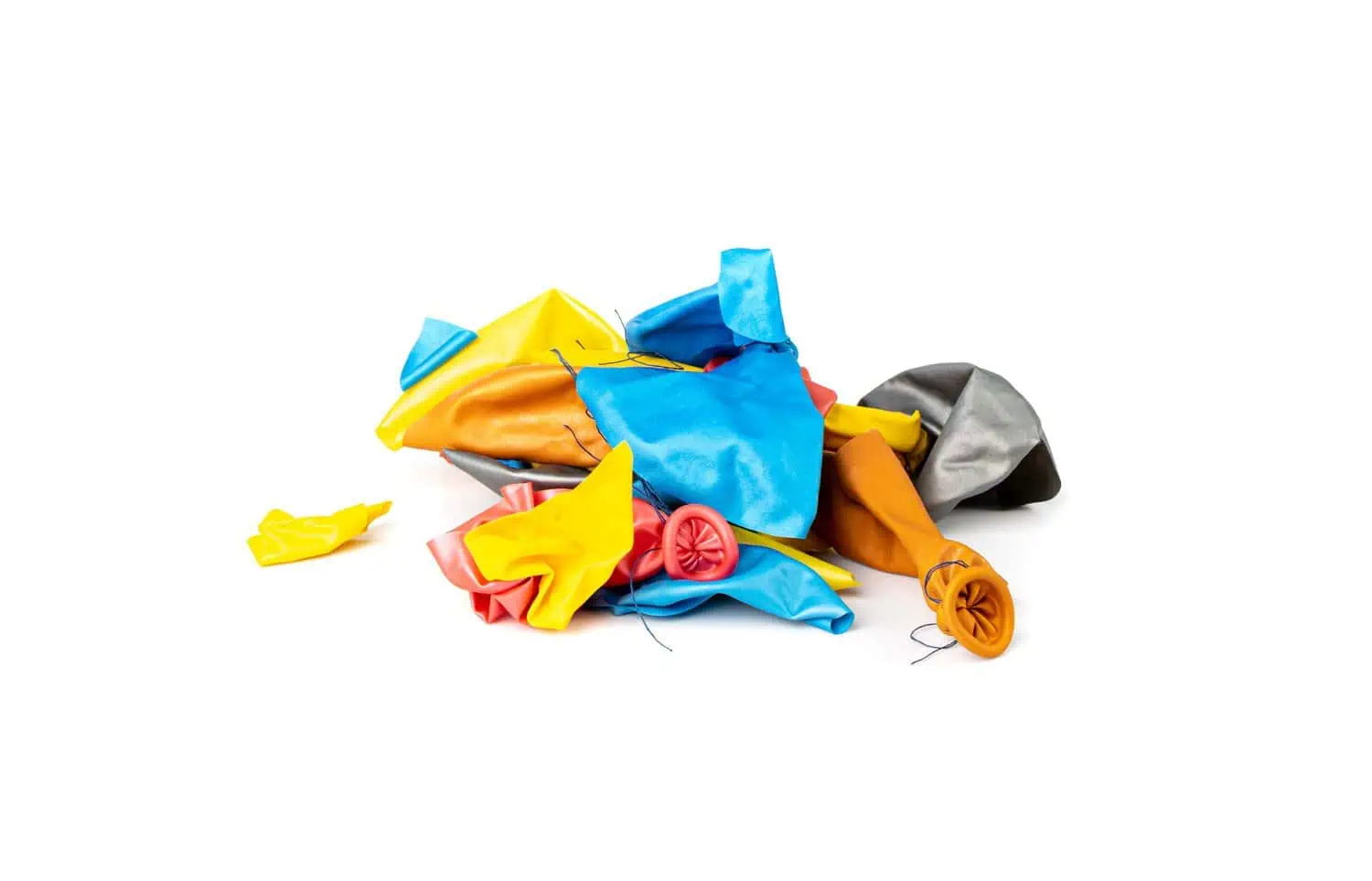
Limonene, a component in citrus, has the ability to dissolve rubber, which is a component of balloons (1) . Therefore, when you squirt citrus onto a balloon, it pops!
Blow up a few balloons. Peel an orange, ensuring you have large pieces of the peel to hold.
Hold the peel a few inches from the balloon, with the rind side facing the rubber. Quickly squeeze the peel so the liquid squirts onto the balloon, and it should pop!
Something To Note
Not all balloons will pop through this experiment. If the balloons are made from natural rubber, they will most likely pop easily. But if the rubber is vulcanized, it’s more durable and harder to dissolve.
29. DIY Compass
Never get lost again! To make a compass, stroke a strong magnet down one length of a sewing needle 50 times. Then flip the magnet and the needle, and repeat on the other side.
Cut a cork so it’s about 1.5 centimeters thick. Push the needle through the cork — you may need to use pliers, so ask a parent for help.
Next, fill a bowl with a few inches of water. Place the cork into the water, and it should point North.
30. Sink or Float

Take note of which ones sink and which ones float. Can you determine why?
31. Optical Illusions

Optical illusions are an incredible way to confuse your brain using your eyes. Why not get a book of optical illusions for your kids to flick through all summer? This will keep them entertained — and amazed.
32. Pumpkin Volcano
Cut a hole in the top of a pumpkin and clean out the insides. Pour ¼ cup of baking soda into the pumpkin with a squirt of dish soap and watch the pumpkin start to foam from the top!
33. Create a Marshmallow Catapult
Stack up six popsicle sticks and tie them together with a rubber band on either end. Then tie a wooden spoon and another popsicle stick together at the bottom end of the spoon. Push the large stack of popsicle sticks between the spoon and the second stick until it’s halfway down.
Secure it together by making an “X” with a rubber band where the two sticks meet. Then put a mini marshmallow on the spoon and pull it back slightly.
The marshmallow should fly through the air! If not, adjust your mechanism until it can catapult the marshmallows.
34. Make Ginormous Bubbles
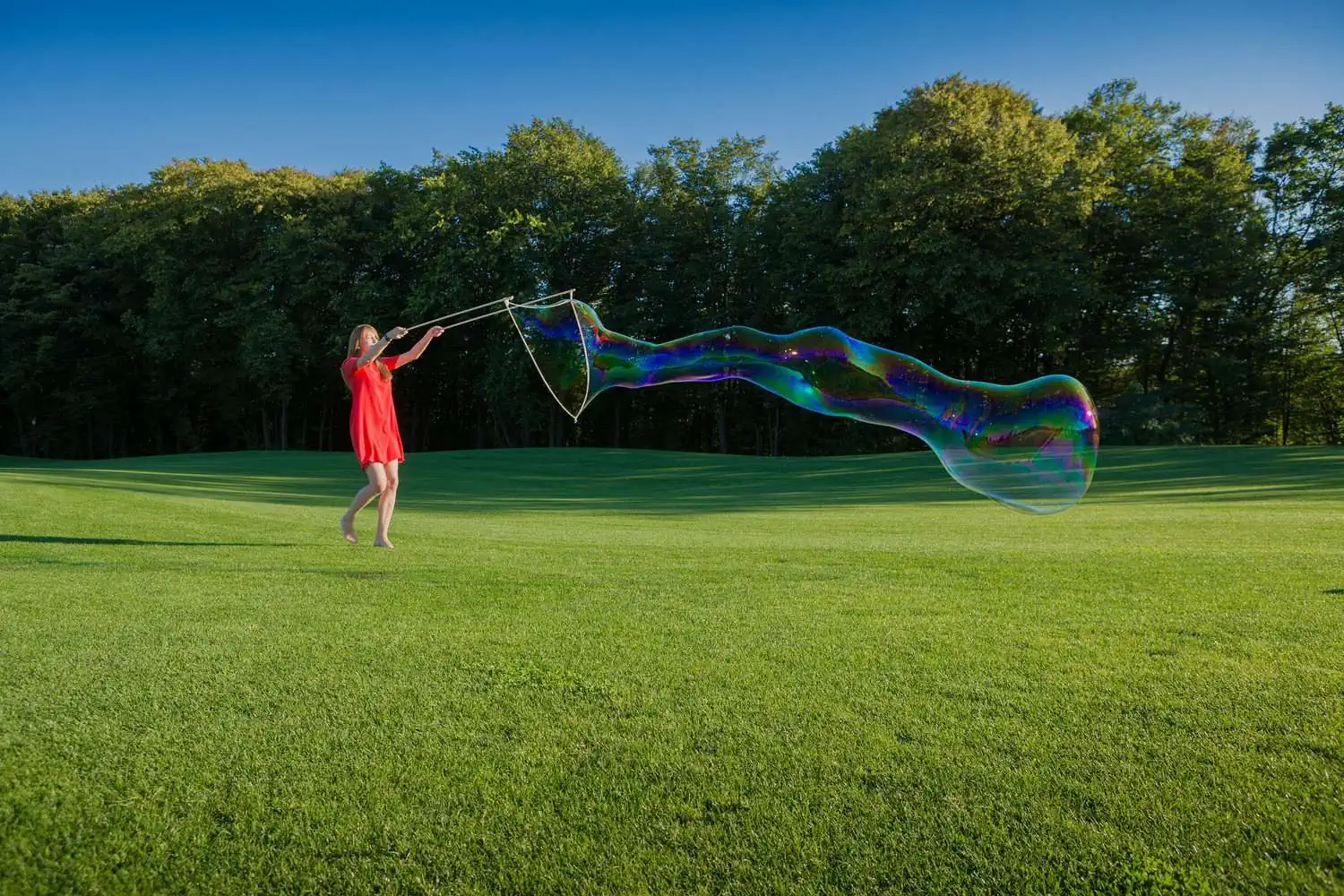
Make the biggest bubbles your eyes have ever seen! Mix together six cups of distilled or purified water with ½ cup of cornstarch.
Add one tablespoon of baking powder, one tablespoon of glycerine, and ½ cup of dish soap. I recommend Blue Dawn dish soap .
Use it with a giant bubble wand. If you need to make your own giant bubble wand, do this beforehand so you can use the bubbles immediately.
35. Magnet Experiment
Fill a glass with water and add a few tablespoons of magnetic fine iron filings . Run magnets up and down the side of the glass and watch the iron fillings move around.
36. Paper Bridge
All you need for this are pieces of paper, two plastic cups, and a bunch of pennies. Create different types of bridges by trying out different designs with the paper. Add one penny at a time to the bridges to discover the strongest bridge design.
37. Shine Up Pennies
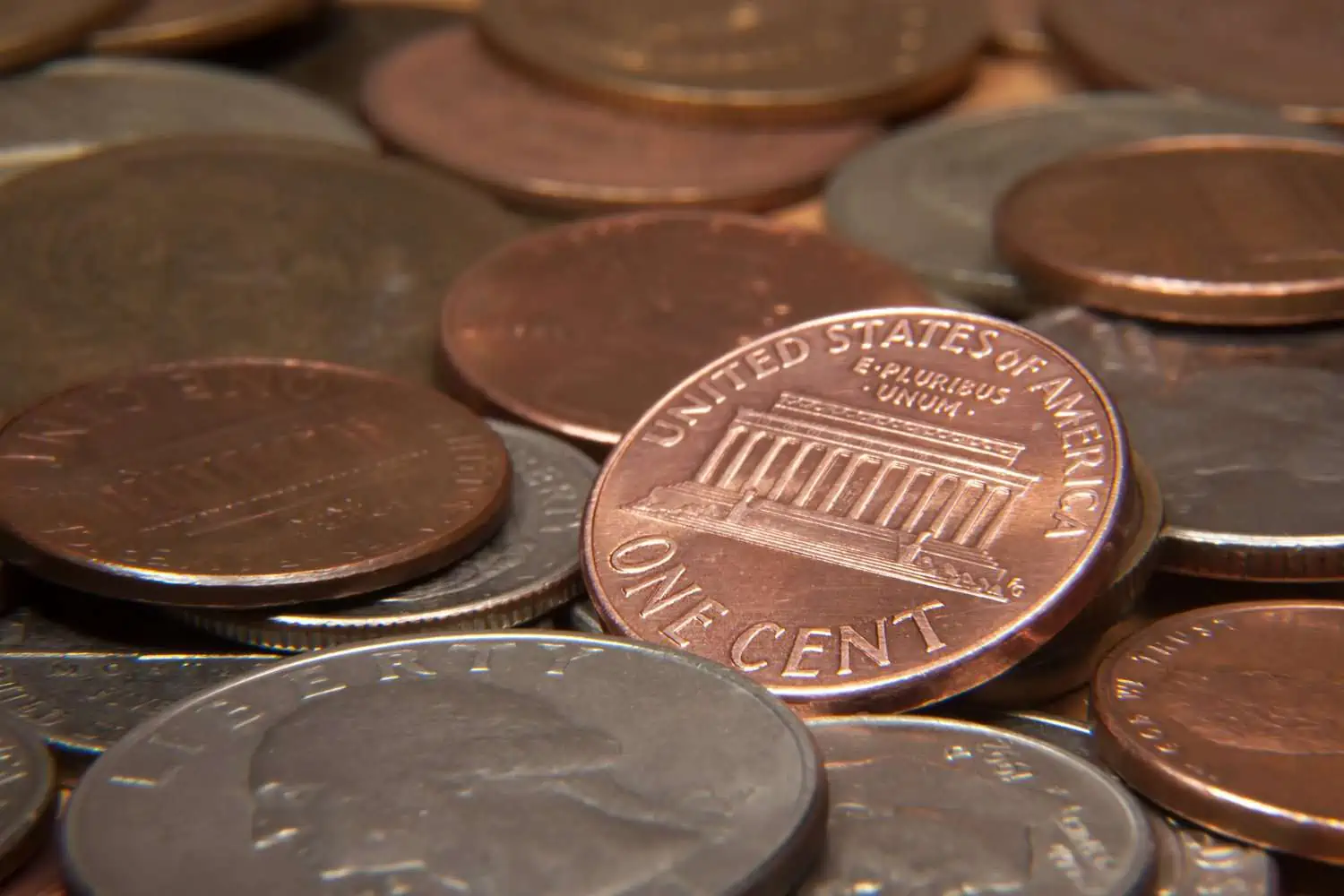
Discover how to clean copper pennies using household items. Fill different cups with different liquids, including white vinegar, soapy water, ketchup, and soda. You can fill up the other cups with any liquid you please!
Put a penny in each cup and wait 10 minutes. Then rinse the pennies with water and rub with a paper towel. Which liquid cleans the pennies best?
38. Egg Drop Challenge
The aim here is to drop the egg into the glass of water. So fill a glass full of water (make sure it’s big enough for the egg) and place a piece of cardboard or a small tray on top of the glass. Then place a toilet paper tube on top of the tray before balancing the egg horizontally on the tube.
When you’re ready, strike the tray or cardboard away with your hand, making sure to send it flying away without knocking over the water. The egg will hang in the air for a split second before dropping into the water.
39. Green Pennies
Above, I taught you how to polish pennies. Did you know you can turn pennies green using a very similar method?
Fill up two bowls with ¼ cup of vinegar and one teaspoon of salt. Mix well. Add a few pennies to each bowl.
After 10 minutes, remove the pennies from one bowl, rinse them, and lay them flat to dry on a paper towel.
Take the other pennies from the second bowl and place them onto the paper towel. Don’t rinse! Wait and see what happens.
The pennies that you rinsed will be polished. But the pennies you didn’t rinse will be green. This is called a patina — a layer caused by the weathering chemical process you just carried out.
40. Homemade Butter
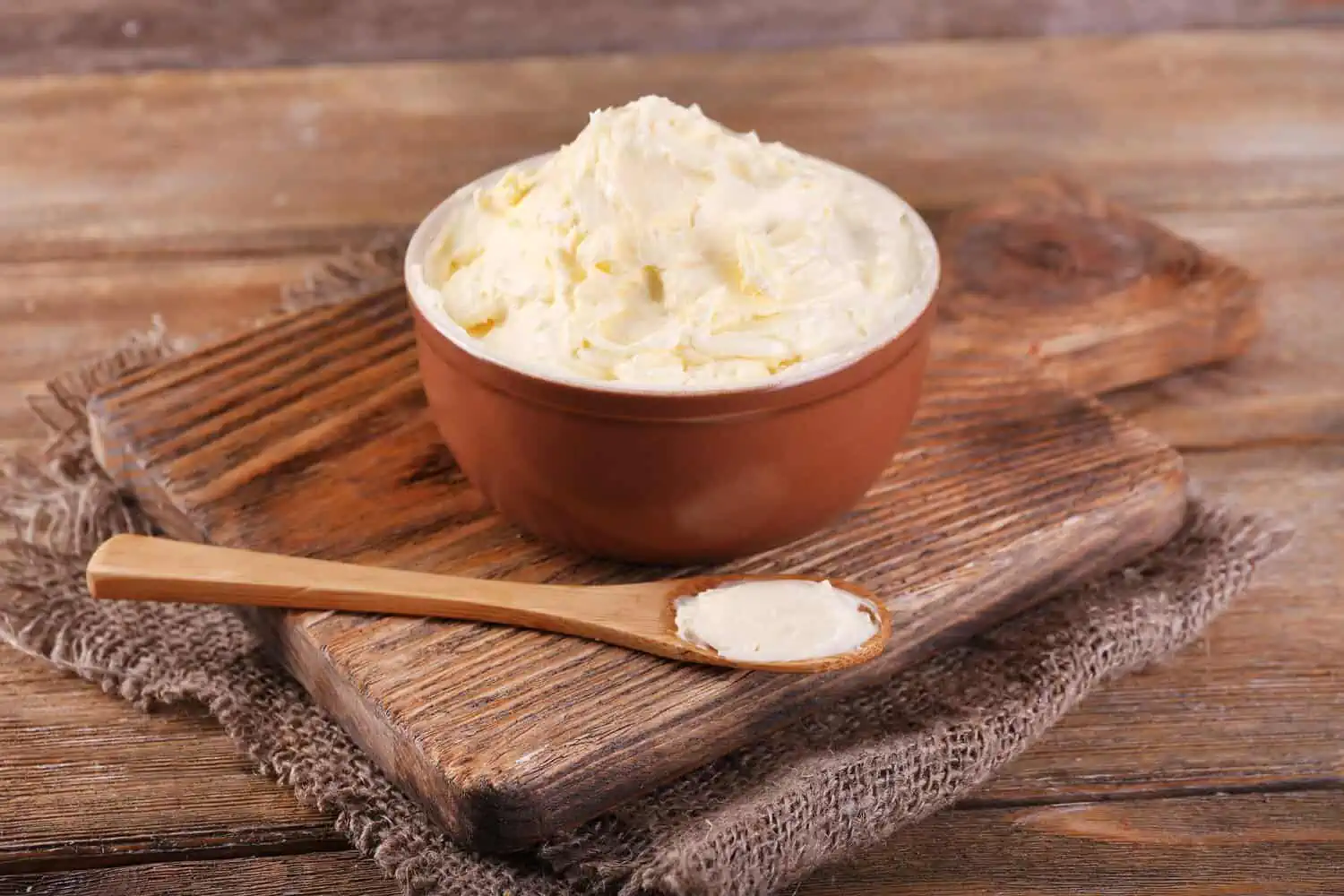
Pour heavy cream into a jar and put the lid on tight. And start shaking! This is a great one for siblings so they can take turns because it can take up to half an hour for the cream to turn to butter!
As the cream solidifies, it separates from the buttermilk. When you remove the lid, pour the buttermilk away; underneath, you’ll have butter. Spread it on your toast, and enjoy!
41. Neon Flowers
Fill up a few glasses with water and five drops of food coloring. Mix well before adding white daisies or carnations to each glass. The next day, your flowers should be bright and colorful!
42. Expanding Soap
Watch what ivory soap does when you microwave it. Submerge a bar of ivory soap into water before cutting it into quarters and placing it on a plate. Pop it in the microwave for two minutes and watch as it expands into a pile of fluff!
43. Sticky Ice
Fill a container with water and ice cubes. Lay a piece of string across the container, ensuring the string is in contact with one or some ice cubes. Sprinkle salt over the string.
One minute later, gently submerge the ice cube slightly under the water to wash the salt off. Pick up the string, and you’ll notice that the ice cube comes with it!
This is because the salt melts the ice a little, and when you wash the salt away, the ice cube refreezes, attaching the string to it.
44. Density Jar
This is what I did my 5th grade science experiment on. Learn all about density with this cool and easy experiment.
Pour some honey into a jar, followed by corn syrup, dish soap, water, oil, and alcohol. The layers of liquid will sit on top of one another rather than mixing together!
45. Soap Boat
Cut out a mini boat about one-inch long using card or paper. Fill up a large tray or container with water. Dip a cotton swab into dish soap and place a tiny amount on the back of the paper boat.
Watch as it starts zooming around the water! This works because the soap breaks the surface tension of the water and creates a force strong enough to push the paper through the liquid.
46. Dancing Sprinkles
Place plastic wrap tightly over a bowl and secure it with a rubber band. Make sure there aren’t any wrinkles.
Pour a few sprinkles over the plastic wrap. Lean closely and hum songs near the bowl. The louder or higher you sing, the different sound waves you’ll create.
You can also try placing a speaker into the bowl before you place the plastic wrap over it. Once you’ve poured on your sprinkles, play a song and watch the sprinkles boogy!
47. Eggs and Salt Water
Fill a glass full of water. Fill a second glass all the way with water and add a bunch of salt. And finally, fill a third halfway with water.
Place an egg in the plain, full glass of water and watch as it sinks. In the salty glass of water, the egg floats. Finally, add salt to the third glass of water, allowing it to dissolve slightly before placing the egg inside.
What does the egg do? It floats. But if you pour water on top of it so the glass is full, the egg stays in the middle. This is a great science lesson to teach density to kids.
48. Leakproof Bag
Fill a plastic zippable bag half full with water and seal it shut. Stab a sharp pencil through the bag until it comes out the other side. Repeat with a few more pencils. Notice how the bag doesn’t leak water when you stab the pencils through!
50. Frozen Baking Soda
Fill a freezable tray with one cup of baking soda. Add three cups of water and food coloring. Mix well.
Add some figurine toys to the mixture and freeze the mixture overnight. Start pouring vinegar into the mixture as you try and rescue the figurine toys. The vinegar will slowly break down the baking soda with a fizzing reaction until you can break free the figurines.
51. Leaf Breathing
Fill three bowls with warm water. Place one freshly picked leaf in each bowl and hold the leaf down with a small rock. After a few hours, check back, and you’ll notice little oxygen bubbles all over the leaves.
These bubbles convey the oxygen coming out of the leaves. This highlights that plants breathe! They take in carbon dioxide and transform it into oxygen, which goes back into the air we breathe.
52. Exploding Colors
Fill a tray with baking soda. Fill an ice cube tray with distilled white vinegar. Add food coloring to the vinegar. Use an eyedropper to transfer the colored vinegar to the baking soda, and watch the colors explode!
53. Floating Paperclip
When you drop a paperclip into water, it will sink because it has a bigger density than water. But with this experiment, you can make it float!
Bend a paperclip to create an “L” shape. Balance another paperclip on the bottom end of the “L” shaped paperclip.
Gently lower the paperclips into the water, sliding out the “L” shaped one from beneath the second paperclip. The second paperclip will now float!
54. Viscosity Experiment
Fill three glasses with different liquids like water, olive oil, and honey. Place a ruler over the top of the glasses with a marble balancing above each glass.
At the same time, tip the marbles into the cups and watch which one reaches the bottom first. This is a great science lesson on viscosity.
55. Plastic Milk
Create your own plastic using milk. Pour one cup of fat-free milk into a saucepan with four teaspoons of white vinegar. Stir gently to combine.
Set the heat to a high temperature. Don’t stir. After a couple of minutes, the milk will start separating.
Gently stir the solution, and the milk will form a big curd called a casing. Voila! You’ve made plastic out of milk. You can mold and cut it into anything you want.
Adults should help set the heat to a high temperature and stir the milk. Don’t leave your child unattended with this experiment.
56. Oxidation With Apples
Learn about oxidation with this fun and fruity experiment.
Get 10 plastic cups and pour ½ cup of water in all but one cup. Then add ½ teaspoon of ingredients to each water-filled cup, including vinegar, honey, salt, sugar, baking soda, and anything else you’d like to try.
With the help of an adult, cut up 10 apple slices. Place one apple slice in each solution for 10 minutes.
Remove them from the solution and wait another 10 minutes. Notice how the oxidation process varies depending on what solution the apple slice was exposed to.
57. Sunscreen Science
Using bright construction paper, fold each sheet in half and open it back up. Squeeze sunscreen onto a paper plate and use a paintbrush to draw a picture on one half of the construction paper.
On the other half of the paper, apply a spray-on sunscreen. Leave the paper outside in the sun for a few hours, ideally all day.
Notice how the sunscreen bleaches the part of the paper that doesn’t have sunscreen on it. But the sunscreen portion is protected! This is a great way to enforce the importance of sunscreen.
58. Static Electricity Hair
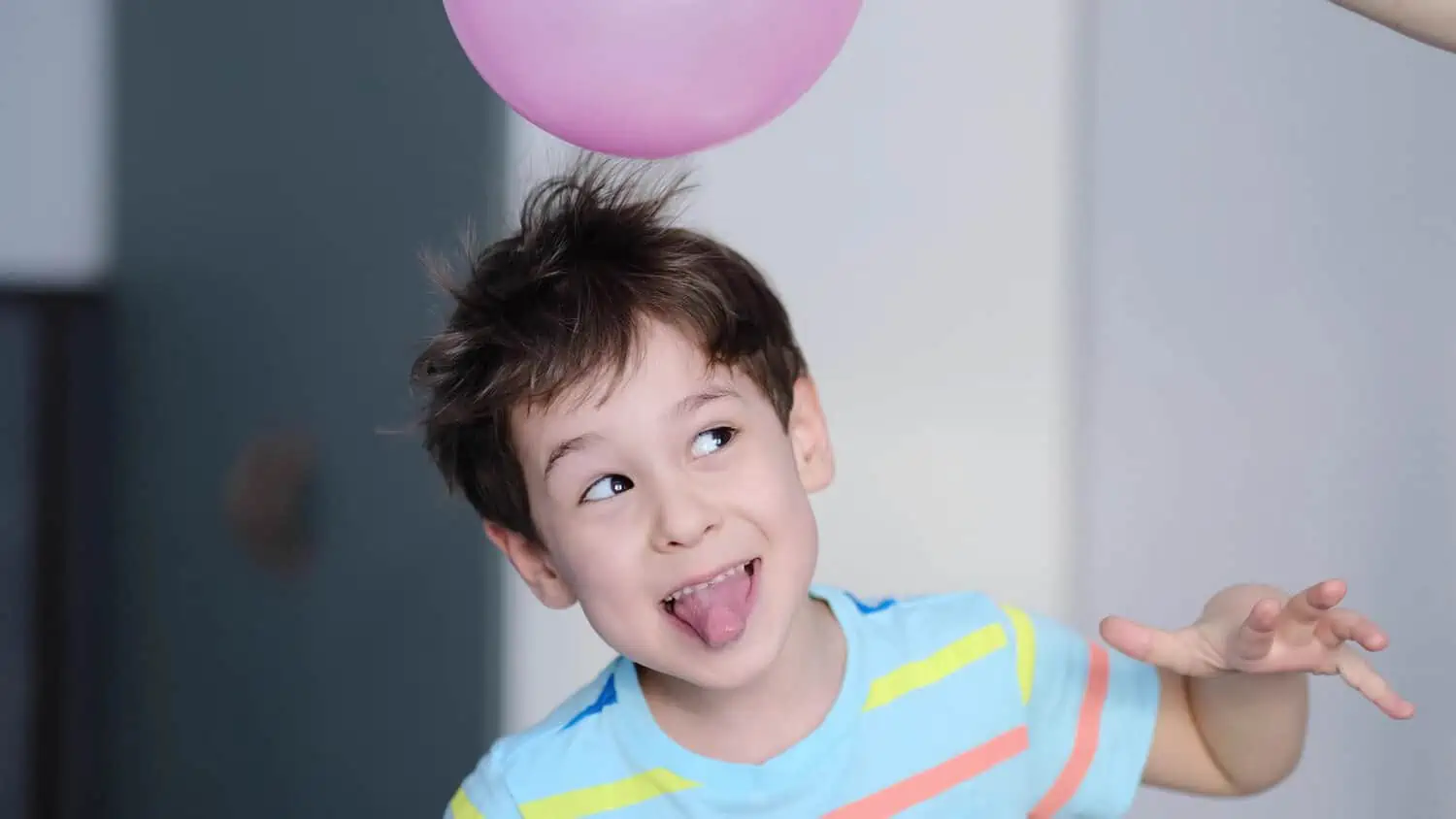
Teach your kids about electrons and negative vs. positive charge with this silly balloon experiment! Rub the surface of a balloon with a cloth for around one minute. Hold it slightly above your head and watch your hair move upwards towards the balloon.
59. Chicken in a Cup
Punch a hole in the bottom of a plastic cup. Attach a paperclip to the end of the ribbon and weave the other side through the hole so the paperclip is inside the cup. Dampen the dangling part of the ribbon slightly.
Hold the cup tightly in one hand and use your other hand to squeeze the ribbon and pull it down in sharp, short movements. All going well, it should make chicken noises!
60. Gummy Bear Osmosis
Pour water, coke, salt water, and white vinegar into four separate cups. Add one gummy bear into each cup and wait 24 hours. Remove the gummy bears and notice how they expand or stay the same depending on the liquid they rested in.
Weigh and measure the gummy bears before and after the experiment to track exactly how much they changed.
61. Make a Sundial
Make your own sundial to help you tell time! Start by poking a stick in the ground. If you live in the Northern Hemisphere, tilt the stick at a bit of an angle to the North. If you live in the Southern Hemisphere, angle it slightly to the South.
Every hour, take note of where the stick’s shadow is pointing on the ground. So, at 7 a.m., head outside and mark the shadow with a rock. Repeat at 8 a.m., 9 a.m., and so forth. As long as the sun is in the sky, you can use your sundial to tell the time.
62. Homemade Bouncy Balls
Combine ½ teaspoon of Borax with two tablespoons of warm water. Add a few drops of food coloring (optional). Then add one tablespoon of school glue to a separate bowl. Add glitter if you’d like.
Now add ½ teaspoon of the Borax solution into your glue, followed by one tablespoon of cornstarch. Stir well.
Once the solution has hardened, pick it up and mold it into a ball. Leave it to dry for 10 minutes. Watch it bounce!
63. Instant Ice
Fill a plastic bottle with water and place it in the freezer for two hours. Carefully remove it from the freezer.
Place a bowl or cup upside down and set an ice cube on top of it. Then, slowly pour the cold water onto the ice cube and watch instant ice form!
As an extra step, you can pour the cold water into a glass. Then hold an ice cube slightly into the water’s surface and watch as the water slowly freezes beneath it.
64. Mystery Smell
Get an adult or friend to fill up various opaque containers with different objects, such as chocolate, milk, vanilla, and other fragranced items. The children should put a blindfold on and sniff the different containers, trying to guess what is inside.
65. What Dissolves in Water?
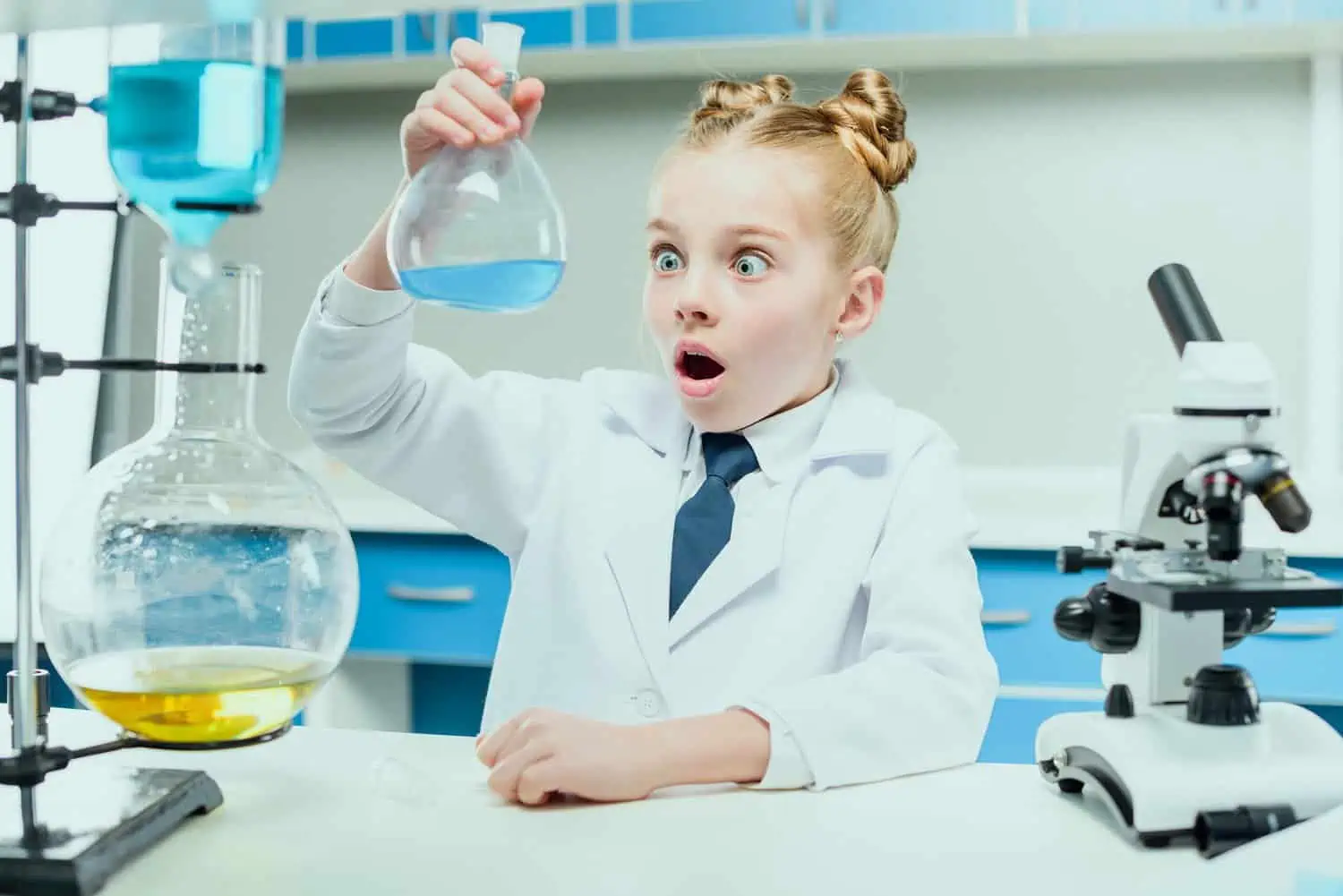
This experiment is fantastic for learning what dissolves in water and what doesn’t. Drop some ingredients into various cups — oil, sugar, pepper, flour, and more. Then add warm water and stir.
Make it more fun by guessing beforehand which ingredients will dissolve and which won’t. Were your theories correct?
It’s essential to stay safe during your science fair projects and experiments. Here are five tips for ensuring your child is safe while they meddle with science.
- Stay nearby: Don’t leave your child unattended while they perform science experiments. Stay nearby without distractions to keep an eye on what your child tries out.
- Wear protective clothing: It’s a good idea to wear a lab coat, glasses, and goggles while conducting experiments. Many ingredients, even natural ones, can irritate the skin and eyes.
- Provide clear instructions: Before your child attempts a science experiment, ensure you have given them clear instructions, and they have a good understanding of what to do.
- Only do approved experiments: The experiments on this list have been tried and tested many times. I urge you to stick with approved experiments. Don’t make up your own experiments, as many mixtures and chemical combinations can make toxic gasses.
- Work in a well-ventilated spot: Some ingredients might cause nausea, dizziness, and headaches. So always work in a well-ventilated spot near an air purifier or open window.

What Are the Most Popular Science Experiments?
The most well-known science project experiment is definitely the baking soda and vinegar volcano. It has a beloved place in school fairs, movies, and TV shows.
Other popular projects include invisible ink, growing crystals, making a vegetable battery, making a baking soda rocket, and elephant’s toothpaste.
What Are Some Simple Science Experiments?
Your science experiment doesn’t need to be super complicated.
Keep it nice and simple with these easy experiments:
- Magic Milk.
- Black Pepper Trick.
- Dancing Raisins.
- Sink or Float.
- Eggs and Salt Water.

About the Author
Beth McCallum
Related Reading
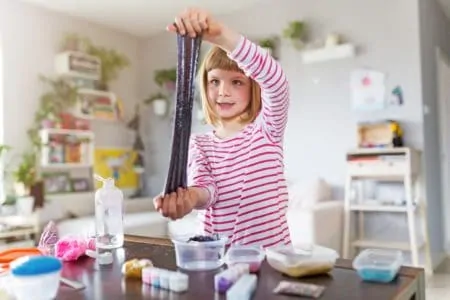
Slime Consistency — From Sticky to Stretchy
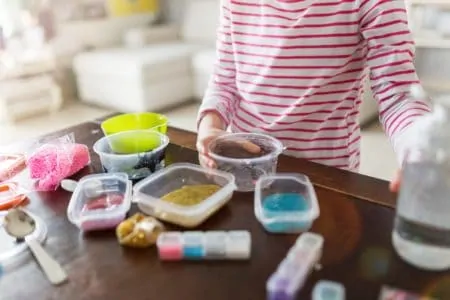
Discovering How to Make Slime Without Borax: For Fun, Less Skin Irritation
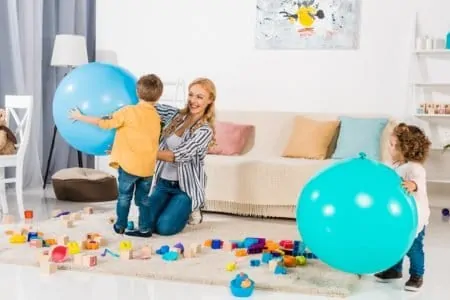
Indoor Games for Kids: Keep Your Little Ones Engaged
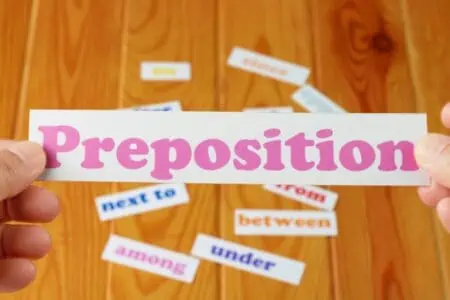
English Prepositions Explained: A Complete List

The Sermon on the Mount: Explaining Beatitudes to Kids
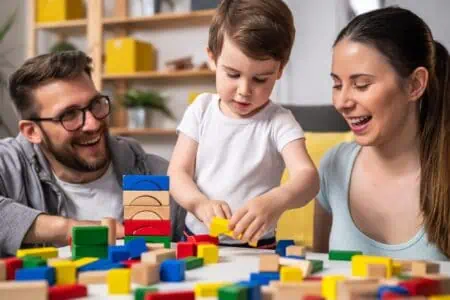
Engage Your Child with Memory Games
The Yellow Birdhouse
Helping you live your best crafty life
17 Easy Science Experiments for Kids Using Household Items
September 29, 2017 by Laura 15 Comments
Last Updated on May 29, 2024
When we’re stuck indoors on a rainy weekend we are always trying to find activities to entertain the kids using things we already have at home. But usually we end up on our computers for 30 minutes trying to find ideas! So I thought I’d do a round up post of easy science experiments for kids that only require household ingredients.

This post contains affiliate links. Read more .
Easy Science Experiments for Kids
These experiments are best suited for 3-6 year olds I think. But honestly I really like them, so maybe they’re for all ages! I’ve included any of the ingredients that you may or may not have on hand so you can easily pick an experiment that you can do right away!
1. Shaving Cream Rain Clouds

Learn about how rain is made or just have fun mixing pretty colours! You’ll need shaving cream and food colouring . From: One Little Project at a Time
2. Growing Gummy Bears

Compare the difference between using plain and salt water to grow gummy bears. You’ll need salt and gummy bears. From: Play Dough to Plato
3. Walking Rainbow

Watch as colours travel through paper towels to mix in the next jar. You’ll need food colouring and paper towels. From: Steam Powered Family
4. Dish Soap Silly Putty

It’s not quite liquid and not quite solid, but lots of fun! The colour of the putty will depend on the colour of the dish soap you use. You’ll need dish soap (or shampoo) and cornstarch . From: One Little Project
You might also be interested in these posts:
11 Edible Silly Putty, Play Dough and Slime Recipes 13+ Ideas for Teaching Elementary Math Using Games and Play 11 Awesome & Free Educational Websites for Kids
5. Salt Crystal Apples
You could easily make different shapes with this simple experiment! You’ll need pipe cleaners and salt. From: Schooling a Monkey
6. The Science of Yeast

Discover how yeast works. You’ll need balloons and active dry yeast. From: Play Dough to Plato
7. Hatch a Dinosaur Egg

This is such a fantastic idea! And a great alternative to the standard volcano. You’ll need, small toys or objects, baking soda, food colouring and vinegar. From: Sunshine and Hurricanes
8. Growing Rock Candy

Grow your own rock candy and your kids will love you forever! 😀 You’ll need lots of sugar, skewers or candy sticks and food colouring. For edible experiments you may want to look into natural food colouring . You may also want candy flavouring .
The form you have selected does not exist.

My mom used to make this for us as kids, I didn’t know it had a proper name though, we just called it goop! We made this a couple weekends ago and my 5yo spent over 2 hours playing with it. Major success! You’ll need cornstarch and food colouring . From: Babble Dabble Do
10. Ocean Currents

Learn how ocean currents work! You’ll need food colouring . From: Life Over C’s
11. Rainbow Paper

Make pretty paper then turn into another craft! You’ll need black paper and clear nail polish . From: Science Kiddo
12. Constellation Flashlight

My son loves learning about space, so this will be a great way to teach him about constellations! You’ll need a flashlight, black paper and black paint. From: Handmade Charlotte
13. Dancing Worms

This is another fun variation on the classic baking soda and vinegar experiment. You’ll need gummy worms, vinegar and baking soda. From: Play Dough to Plato
14. Make Pennies Turn Green

Learn about chemical reactions and make observations with a free printable. You’ll need copper pennies and vinegar. From: Buggy and Buddy
15. Mentos Geyser

Who doesn’t love a good explosion? You’ll need a 2L bottle of dark coloured soda and a pack of Mentos . From: I Can Teach My Child
16. Disappearing Eggshell

Is there anything vinegar can’t do?! You’ll need a mason jar with a lid, eggs and vinegar. From: Premeditated Leftovers
17. Chromatography

These instructions call for a canvas tote bag , but I think a piece of cotton fabric would work too. You’ll need fabric, black water based markers and rubbing alcohol . From: Babble Dabble Do
Which of these looks like the most fun?! I can’t wait to try the dino eggs!
Happy Experimenting!

Reader Interactions
May 21, 2018 at 6:34 pm
These are such great ideas! I cant wait to try a bunch this summer!
May 31, 2018 at 6:59 pm
I hope you do! They’re fun!
February 19, 2018 at 2:35 pm
recently I looks for something different and you helps me a lot. Thanks for the magical ideas.
October 3, 2017 at 1:56 pm
Love these! They look so fun too. Wondering if I can do some of them with my toddlers? Perhaps the shaving cream one?
October 3, 2017 at 3:27 am
Oh these look like soooo much fun! Pinning for later!!!
October 3, 2017 at 2:34 am
Thank you for this post! My five year old wants to be a scientist when he grows up, so we do a lot of science experiments in our house. I love the rainclouds, goop, and constellations.
October 3, 2017 at 1:10 am
These look so fun! I’m sharing so I can come back and do some of these with my kids.
October 2, 2017 at 6:29 pm
My kids will LOVE these! Sharing on my Facebook page for other mamas to see!
October 2, 2017 at 9:40 pm
I’m so glad! Thanks for sharing!
October 2, 2017 at 4:34 pm
These are awesome! My 8 year old son loves doing science experiments so I am saving this one for him! Thanks for sharing!
October 2, 2017 at 9:39 pm
I’m glad you liked it! Have fun experimenting! 🙂
October 2, 2017 at 12:58 pm
Wonderful round up of science projects to do with children. Nice you can make these from common household items.
Yes! So many times I’ve wanted to do fun stuff like this but the project requires such specialized ingredients. I love that I have most of the items required for these experiments already in my cupboards!
October 2, 2017 at 12:54 pm
This list is outstanding!! I love the rain clouds and the walking rainbow! It’s my daughter’s birthday this week and we may have to try these with her friends!
October 2, 2017 at 9:35 pm
I love that it’s a super inexpensive activity, you can just grab a couple cans of shaving cream from the dollar store! Have fun with the birthday celebrations!
Leave a Reply Cancel reply
Your email address will not be published. Required fields are marked *
Privacy Overview
- Skip to main content
- Skip to primary sidebar

This post might contain affiliate links. Click here for more information . Thanks for visiting!
10 Toddler Science Activities that Are Full of Fun
May 4, 2018 by Sheryl Cooper
Last Updated on July 30, 2024 by Sheryl Cooper
Inside: This collection of toddler science activities are perfect for little explorers! Hands-on, fun, and full of learning opportunities!
Toddlers can be very curious about how things work.
In fact, you might hear “why?” a lot.
This is a good time to give them opportunities to investigate, finding answers to those “why” questions.
Simple, hands-on science exploration should be a part of your toddler curriculum . Simple, short ideas that work with their shorter attention spans.
Today I’m going to share 10 easy science activities for toddlers that you can easily add to your home or classroom.

CLICK HERE to find science activities for preschoolers!
Exploring Sunflower Seeds : Strengthen those little fingers while pulling seeds from large sunflowers.
Painting on Ice Blocks : What happens to the paint as the ice starts to melt? Preschoolers love this activity, too!
What’s Magnetic : Fill a bin with large objects and a magnetic wand. Super easy! (Busy Toddler)
Which One is Heavier : This easy science activity only takes a couple of minutes to set up, using a child’s hanger and some paper cups. (Go Science Kids)
Will it Sink or Float : This is a favorite, mostly because it involves playing with water! (Hands On as We Grow)
Magnetic Discovery Bottle : Discovery bottles work well with toddlers because the small pieces are contained in the bottle. Move the wand and watch the pipe cleaner pieces move! (Frugal Fun 4 Boys and Girls)
Exploring Vegetable Seeds : This only takes a minute to set up! In fact, this would keep your toddler busy while you are fixing dinner. (Lemon Lime Adventures)
Magic Milk Science Experiment : Perfect for little ones who have not yet experienced chemical reactions. (Laughing Kids Learn)
Bubble Snake : Toddlers are learning how to blow bubbles, and they will love this easy DIY bubble snake activity! (One Little Project)
Color Surprise Eruptions : Add simple color recognition to this fun science activity. (Learn, Play, Imagine)
More toddler activities:
16+ Playful Toddler Alphabet Activities
30+ Toddler Indoor Activities
30+ Favorite Toddler Songs
Toddler and Preschool Activity Plans
Looking for an entire year’s worth of learning activities? We’ve done the work for you!
I have helped create each of these packets, along with a team of talented educators and homeschoolers.
Easy to follow lesson plans include activity modifications and adaptations to meet the needs of all learners.
Every theme comes with recommended reading lists, songs, material lists, and more.
Click on the graphics below for more details.
Toddlers (18 – 36 months):

Preschool (3 – 5 Years):

FREE CIRCLE TIME PLANNER!
Get your FREE circle time planner as a gift when you subscribe to my free weekly newsletters.
Here is my Privacy Policy
Success! Now check your email to confirm your subscription.
There was an error submitting your subscription. Please try again.
About Sheryl Cooper
Sheryl Cooper is the founder of Teaching 2 and 3 Year Olds, a website full of activities for toddlers and preschoolers. She has been teaching this age group for over 25 years and loves to share her passion with teachers, parents, grandparents, and anyone with young children in their lives.

- DIGITAL MAGAZINE
MOST POPULAR
5 easy science experiments to do at home
Check out these speedy STEM activities that kids can do on themselves!
Kids won’t need beakers and microscopes for these easy science experiments to do at home – they just need themselves!
Each of these five biology activities lets children discover how a human body system works. And by doing these ‘tests’ on their own bodies, they’ll get to see and feel exactly how their own systems function. (We promise it’s safe!)
“Going through the process of physically doing something gets people more excited than just reading about it or watching someone else do it,” says Evan Barnes, a biology instructor at Westmont College in California.
Challenge your kids to experiment on themselves with these activities – and watch them be wowed.
1. The Big Jump (muscular system)
What to do: Have your kids stand with their legs straight and try to jump. Then have them bend their knees and jump again. This time they’ll probably be more successful!
What’s going on: The muscular system is made of special cells called muscle fibres that contract to help your body move. “As you crouch, the muscle fibres in your thighs, hips and glutes contract,” MacKenzie says. “When you start to jump, the muscle fibres expand, and the effect is like a spring uncoiling.” That releases the energy needed for your body to jump. When your legs are straight, the muscles don’t contract, so they don’t release as much energy.
2. Spinning and Sitting (nervous system)
What to do: Have your child sit in a chair blindfolded, then stand up and spin in a circle seven times. Now, without removing the blindfold, have them try to find the seat to sit down. (Make sure you do this in a safe place that’s clear of obstacles!)

What’s going on : The nervous system relies on chemical and electrical signals to communicate with the brain and different parts of the body. Those signals are sent with the help of receptors that are all over your body – including hair-like structures in the inner ear. When those receptors are touched by the endolymph, a fluid inside the ear’s canals, they send a message to the brain that your body is moving. But after you stop spinning, the fluid keeps moving.
“That sends signals to the brain, brain stem and cerebellum, and the brain interprets this as movement,” says biology instructor Jamie Parker of Fordham University in New York City. “So, if the liquid is moving while you’re still, your brain still thinks you’re still spinning.”
Get more fun family activities straight to your inbox with Nat Geo Kids’ free newsletter. Sign up here!
3. Water Bottle Test (respiratory system)
What to do: Fill an empty water bottle with water and dump it into a large basin. (Tip: Do this in the sink!) Refill the bottle, mark the water level on the outside and place the cap back. Turn the bottle upside down into the basin. Then, keeping the mouth of the bottle underwater, take off the cap. Have your child insert a bendy straw into the jug, with the other end sticking out of the water.
Have your kid take a deep breath, then blow into the straw until no more air is in their lungs. When they’ve blown out all they can, place the cap back on the still-underwater jug. When you remove it from the water, you’ll see the water level has gone down, and the missing water replaced by air.
What’s going on: Our lungs breathe in oxygen that our cells need to live, then breathe out carbon dioxide as a waste product. The air in the bottle shows how much carbon dioxide they’ve exhaled – and how much lung capacity they have to inhale air.
4. Hopping Marshmallow (circulatory system)
What to do: Have a child stick a marshmallow on top of a toothpick. (A mini one is best, but any will do!) With their arm palm-up on a level surface, balance the marshmallow so that the toothpick sticks straight up over their wrist where they feel a pulse. You’ll see the marshmallow stick jiggle back and forth or even hop up and down. Then have your kid jog or do star jumps for 30 seconds, and repeat. The marshmallow stick will move faster!

What’s going on: The circulatory system is what causes the heart to pump blood and lymph through your body’s arteries and veins. Pumping blood into an artery creates a pulse. That’s what you feel when you press your fingertips to your wrist—and why the marshmallow stick moves when it’s balanced there. And after you exercise? “The heart pumps more strongly to send more blood to the areas of the body that are moving, bringing them more nutrients and oxygen,” Parker says.
5. Bag of Bones (skeletal system)
What to do: Grab a friend for this experiment! With a long string, Kid 1 measures the height of Kid 2, then cuts the string there. Then Kid 2 stretches their arms out to each side, and Kid 1 uses the same string to measure fingertip to fingertip. It will be almost exactly the same length!
Now fold the string in half, and measure from the bottom of the heel to the top of the femur (just under the rear end). It will be almost exactly half the distance from fingertip to fingertip. If you unfold the same string and then fold it in half twice, it will equal the distance from the elbow to the fingertip. Finally, unfold the string and refold it in thirds, and it will equal the circumference of the head!
What’s going on: The skeletal system is all about the body’s bones and how the muscles support them, helping us stand and walk. So, your skeleton’s limbs must be proportionate to each other. “If these proportions are uneven, it will impact your gait,” MacKenzie says. If your legs are uneven, you might limp. Or, if your arms are too long for your legs or your skull is too big for your spine, you might have trouble balancing.
Looking for even more easy science experiments to do at home? Check out our ‘magic’ experiments article .
Written by jamie kiffel-alcheh. image credits: girl jumping © halfpoint images / getty images; blindfold © jgi / jamie grill / getty images; marshmallow © shannon hibberd / ng staff., leave a comment.
Your comment will be checked and approved shortly.
WELL DONE, YOUR COMMENT HAS BEEN ADDED!
Customize your avatar, more like this.

10 top sustainable gifts for kids
Boredom-busting car games for kids

Too much screen time? Here’s how to refocus on reading
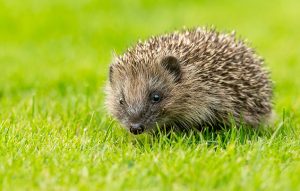
Seen hedgehogs in the garden?

Creative kids: how to inspire their growing minds

Sign up to our newsletter
Get uplifting news, exclusive offers, inspiring stories and activities to help you and your family explore and learn delivered straight to your inbox.
You will receive our UK newsletter. Change region
WHERE DO YOU LIVE?
COUNTRY * Australia Ireland New Zealand United Kingdom Other
By entering your email address you agree to our Terms of Use and Privacy Policy and will receive emails from us about news, offers, activities and partner offers.
You're all signed up! Back to subscription site
Type whatever you want to search
More Results

You’re leaving natgeokids.com to visit another website!
Ask a parent or guardian to check it out first and remember to stay safe online.

You're leaving our kids' pages to visit a page for grown-ups!
Be sure to check if your parent or guardian is okay with this first.
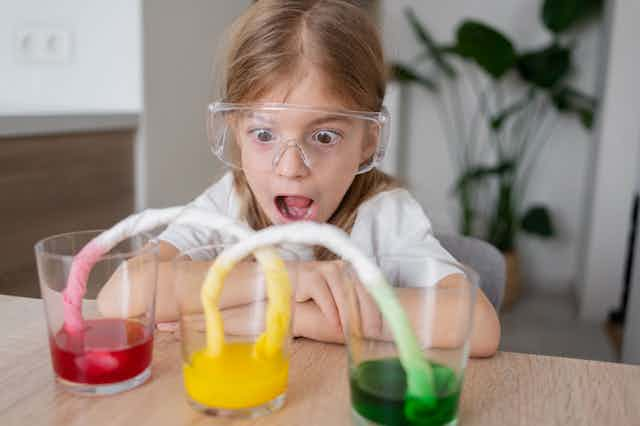
Summer holiday science: turn your home into a lab with these three easy experiments
Associate Professor in Biology, University of Limerick
Disclosure statement
Audrey O'Grady receives funding from Science Foundation Ireland. She is affiliated with Department of Biological Sciences, University of Limerick.
University of Limerick provides funding as a member of The Conversation UK.
View all partners
Many people think science is difficult and needs special equipment, but that’s not true.
Science can be explored at home using everyday materials. Everyone, especially children, naturally ask questions about the world around them, and science offers a structured way to find answers.
Misconceptions about the difficulty of science often stem from a lack of exposure to its fun and engaging side. Science can be as simple as observing nature, mixing ingredients or exploring the properties of objects. It’s not just for experts in white coats, but for everyone.
Don’t take my word for it. Below are three experiments that can be done at home with children who are primary school age and older.
Extract DNA from bananas
DNA is all the genetic information inside cells. Every living thing has DNA, including bananas.
Did you know you can extract DNA from banana cells?
What you need: ¼ ripe banana, Ziploc bag, salt, water, washing-up liquid, rubbing alcohol (from a pharmacy), coffee filter paper, stirrer.
What you do:
Place a pinch of salt into about 20ml of water in a cup.
Add the salty water to the Ziploc bag with a quarter of a banana and mash the banana up with the salty water inside the bag, using your hands. Mashing the banana separates out the banana cells. The salty water helps clump the DNA together.
Once the banana is mashed up well, pour the banana and salty water into a coffee filter (you can lay the filter in the cup you used to make the salty water). Filtering removes the big clumps of banana cells.
Once a few ml have filtered out, add a drop of washing-up liquid and swirl gently. Washing-up liquid breaks down the fats in the cell membranes which makes the DNA separate from the other parts of the cell.
Slowly add some rubbing alcohol (about 10ml) to the filtered solution. DNA is insoluble in alcohol, therefore the DNA will clump together away from the alcohol and float, making it easy to see.
DNA will start to precipitate out looking slightly cloudy and stringy. What you’re seeing is thousands of DNA strands – the strands are too small to be seen even with a normal microscope. Scientists use powerful equipment to see individual strands.
Learn how plants ‘drink’ water
What you need: celery stalks (with their leaves), glass or clear cup, water, food dye, camera.
- Fill the glass ¾ full with water and add 10 drops of food dye.
- Place a celery stalk into the glass of coloured water. Take a photograph of the celery.
- For two to three days, photograph the celery at the same time every day. Make sure you take a photograph at the very start of the experiment.
What happens and why?
All plants, such as celery, have vertical tubes that act like a transport system. These narrow tubes draw up water using a phenomenon known as capillarity.
Imagine you have a thin straw and you dip it into a glass of water. Have you ever noticed how the water climbs up the straw a little bit, even though you didn’t suck on it? This is because of capillarity.
In plants, capillarity helps move water from the roots to the leaves. Plants have tiny tubes inside them, like thin straws, called capillaries. The water sticks to the sides of these tubes and climbs up. In your experiment, you will see the food dye in the water make its way to the leaves.
Build a balloon-powered racecar
What you need: tape, scissors, two skewers, cardboard, four bottle caps, one straw, one balloon.
- Cut the cardboard to about 10cm long and 5cm wide. This will form the base of your car.
- Make holes in the centre of four bottle caps. These are your wheels.
- To make the axles insert the wooden skewers through the holes in the cap. You will need to cut the skewers to fit the width of the cardboard base, but leave room for the wheels.
- Secure the wheels to the skewers with tape.
- Attach the axles to the underside of the car base with tape, ensuring the wheels can spin freely.
- Insert a straw into the opening of a balloon and secure it with tape, ensuring there are no air leaks.
- Attach the other end of the straw to the top of the car base, positioning it so the balloon can inflate and deflate towards the back of the car. Secure the straw with tape.
- Inflate the balloon through the straw, pinch the straw to hold the air, place the car on a flat surface, then release the straw.
The inflated balloon stores potential energy when blown up. When the air is released, Newton’s third law of motion kicks into gear: for every action, there is an equal and opposite reaction.
As the air rushes out of the balloon (action), it pushes the car in the opposite direction (reaction). The escaping air propels the car forward, making it move across the surface.
- Science experiments

Manager, Centre Policy and Translation

Finance Business Partner - FBE/MLS/EDUCN

Newsletter and Deputy Social Media Producer

College Director and Principal | Curtin College

Head of School: Engineering, Computer and Mathematical Sciences
- Children's Books
- Science, Nature & How It Works
Sorry, there was a problem.

Download the free Kindle app and start reading Kindle books instantly on your smartphone, tablet, or computer - no Kindle device required .
Read instantly on your browser with Kindle for Web.
Using your mobile phone camera - scan the code below and download the Kindle app.

Image Unavailable

- To view this video download Flash Player

Follow the author

Awesome Science Experiments for Kids: 100+ Fun STEM / STEAM Projects and Why They Work (Awesome STEAM Activities for Kids) Paperback – February 13, 2018
The ultimate science experiment book for kids! 100+ hands-on projects to get kids ages 5 to 10 excited about science.
As kids grow older, they become more curious about the world around them, often asking, "How does this work?" Awesome Science Experiments for Kids teaches young brains the nuts and bolts of the scientific method using fun, hands-on experiments designed to show kids how to hypothesize, experiment, and then record their findings.
It's great for fun anytime, but especially for turning your child's summer break into a period of fun-filled summer learning! With awesome projects like a Fizzy Rocket, Magnet-Powered Car, and Pencil Sundial, kids will have a blast learning to build, design, and think critically―while getting inspired to interact with the world around them and make their own discoveries. An amazing summer learning workbook, it guides young readers through numerous exciting projects that demonstrate the elegance and wonder of science in the most enjoyable way possible.
Awesome Science Experiments for Kids includes:
100+ STEAM experiments ―Each activity includes an explanation of the processes in play, so kids can understand how and why each project works.
Easy instructions ―These step-by-step science experiments for kids simplify each process to make the projects fun and simple to understand―and they only require basic household materials.
Colorful photos ―Refer to real-life photos that show you how to bring these experiments to life.
From learning how quicksand works to turning a lemon into a battery, these experiments teach budding STEAM kids how cool it is to be curious.
- Part of series Awesome STEAM Activities for Kids
- Print length 254 pages
- Language English
- Grade level Preschool - 1
- Lexile measure 920L
- Dimensions 8.5 x 0.62 x 9 inches
- Publisher Callisto Kids
- Publication date February 13, 2018
- ISBN-10 9781939754660
- ISBN-13 978-1939754660
- See all details
From the Publisher

| Discover interactive activities for science, technology, engineering, art, and math in which kids learn how and why each project works. | Step-by-step experiments simplify engineering for kids and make the STEM experiments and art projects clear and simple to do. | With awesome projects like a Fizzy Rocket, Magnet-Powered Car, and Pencil Sundial, kids will have a blast learning to build, design, and think critically while getting inspired to interact with the world around them and make their own discoveries. |

Editorial Reviews
About the author.
CRYSTAL CHATTERTON is an educator, a chemist, and a stay-at-home mom. Her blog, The Science Kiddo, grew from her eagerness to find exciting ways to introduce her son to science. Since that time, she has made it her mission to help kids fall in love with science. She lives in Portland, Oregon, where she homeschools her three children.
Product details
- ASIN : 1939754666
- Publisher : Callisto Kids (February 13, 2018)
- Language : English
- Paperback : 254 pages
- ISBN-10 : 9781939754660
- ISBN-13 : 978-1939754660
- Reading age : 5 - 9 years, from customers
- Lexile measure : 920L
- Grade level : Preschool - 1
- Item Weight : 2.31 pounds
- Dimensions : 8.5 x 0.62 x 9 inches
- #1 in Children's Chemistry Books (Books)
- #3 in Children's Weather Books (Books)
- #4 in Children's Science Experiment Books
Videos for this product

Click to play video

The Science Experiments your kid will LOVE!
Brooklyn’s Favs ✨

Review- Awesome Science Experiments For Kids
Lyndsey Horito

Our Point of View on Science Experiments For Kids
WTI | We Tried It!

practical & fun science experiments for kids!

A closer look at this science experiment book for kids!

Fun and easy science experiments for kids!
Sarah Haley

Customer Review: I would love to give this book a 5 star review but I can't.
About the author
Crystal chatterton.
Crystal Chatterton grew up at the foot of the Rocky Mountains where she earned a master's degree in organic chemistry. After grad school she decided to stay home with her young children. She started her blog, The Science Kiddo, to incorporate her experience as an organic chemist and her love of science into her new life as a stay-at-home mom.
Crystal shares simple science experiments, beginning coding lessons, and fun math activities on her blog. Her goal is to make every parent, grandparent, and teacher seem like a science expert by providing them with easy-to-follow instructions, simple scientific explanations, and activities that WOW both children and adults alike.
She is now a busy homeschooling mom of three living in the Pacific Northwest where she loves to hike, bike, and explore with her family.
Related books

Customer reviews
- 5 star 4 star 3 star 2 star 1 star 5 star 79% 14% 5% 1% 1% 79%
- 5 star 4 star 3 star 2 star 1 star 4 star 79% 14% 5% 1% 1% 14%
- 5 star 4 star 3 star 2 star 1 star 3 star 79% 14% 5% 1% 1% 5%
- 5 star 4 star 3 star 2 star 1 star 2 star 79% 14% 5% 1% 1% 1%
- 5 star 4 star 3 star 2 star 1 star 1 star 79% 14% 5% 1% 1% 1%
Customer Reviews, including Product Star Ratings help customers to learn more about the product and decide whether it is the right product for them.
To calculate the overall star rating and percentage breakdown by star, we don’t use a simple average. Instead, our system considers things like how recent a review is and if the reviewer bought the item on Amazon. It also analyzed reviews to verify trustworthiness.
Customers say
Customers find the experiments engaging, cool, and explained. They also say the writing quality is easy to follow and loved by kids. Readers describe the book as great fun education that inspires learning. They appreciate the good illustrations and instructions.
AI-generated from the text of customer reviews
Customers find the book great for younger kids with help, but older students will enjoy doing them solo. They also say it looks like fun and is educational, keeping them interested. Readers also mention the book is age appropriate and has good illustrations and instructions.
"...The book offers a wide variety of experiments that are both fun and educational, helping kids understand scientific concepts through practical..." Read more
"...offers a variety of simple science experiments that are perfect for kindergarteners ." Read more
"Bought for my grandsons, 5 and 10. Great ideas, creative, good illustrations and instructions...." Read more
"We have been doing science experiments. Non-stop, it is very fun . She loves it" Read more
Customers find the experiments in the book exciting, educational, and fun. They also appreciate the scientific reasoning and practical explanations. Readers also mention that the book has plenty of easy experiments that challenge young minds to think. They say it's a simple, practical book with tons of projects to do.
"The book offers a variety of simple science experiments that are perfect for kindergarteners." Read more
"Bought for my grandsons, 5 and 10. Great ideas, creative , good illustrations and instructions...." Read more
"...The experiments are engaging, and provide great insight and follow-up that explain the why and not just the how...." Read more
Customers find the writing quality of the book easy to follow and loved by kids. They also say the transaction was seamless.
"...Its clear instructions and explanations make it easy for children and parents alike to explore the wonders of STEM/STEAM together" Read more
"The book has many projects with step to step directions . Most of the items needed are accessible easily...." Read more
"...Great ideas, creative, good illustrations and instructions ...." Read more
"...Lists everything you need and clear instructions " Read more
Customers find the book a great classroom resource that lists everything they need and provides clear instructions. They also appreciate the background info and interactive questions. Readers also mention that the supplies required are not hard to find.
"...Most of the items needed are accessible easily . My grandchildren enjoyed doing several of them." Read more
"... Lists everything you need and clear instructions" Read more
"...It's very clear what supplies you need , and many of them are things you'd have around the house anyway...." Read more
"...We made it multiple times. Supplies required are not hard to find for any of the experiments...." Read more
Customers find the book a perfect gift.
"This book was so nice as a gift and has great experiments in it!" Read more
" Such a perfect gift ! I’ve purchased this for two friends. Absolutely a fantastic gift!" Read more
" Great Birthday gift idea !..." Read more
"A good gift for the family ...." Read more
Reviews with images

- Sort reviews by Top reviews Most recent Top reviews
Top reviews from the United States
There was a problem filtering reviews right now. please try again later..
Top reviews from other countries
- About Amazon
- Investor Relations
- Amazon Devices
- Amazon Science
- Sell products on Amazon
- Sell on Amazon Business
- Sell apps on Amazon
- Become an Affiliate
- Advertise Your Products
- Self-Publish with Us
- Host an Amazon Hub
- › See More Make Money with Us
- Amazon Business Card
- Shop with Points
- Reload Your Balance
- Amazon Currency Converter
- Amazon and COVID-19
- Your Account
- Your Orders
- Shipping Rates & Policies
- Returns & Replacements
- Manage Your Content and Devices
- Conditions of Use
- Privacy Notice
- Consumer Health Data Privacy Disclosure
- Your Ads Privacy Choices
- BOOK RECOMMENDATIONS
The Best Kids' Activity Books in Summer 2024
Beat the heat and summer boredom.

Activity books have been loved by both kids and parents for generations! Filled with puzzles, quizzes, drawing prompts, or instructions for hands-on activities like making ice cream or discovering back yard bugs, activity books are always a great answer to “What should we do next?”
Whether you're looking for something to do on days it's too hot to go outside, or need a fun way to keep math and reading skills sharp, these activity books are guaranteed to keep summer boredom at bay.
This list fulfills a prompt in our 2024 Kids Summer Reading Challenge! Learn more and join here .
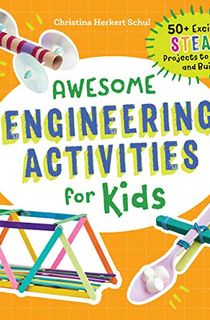
Awesome Engineering Activities for Kids
By Christina Schul
Perfect for ages 5-10, this engineering activity book is filled with projects kids can do themselves. Using common household objects like toothpicks and paper cups, these activities will get your child interested in how things work, and show them that science is everywhere.

125 More Learn to Read Activities
By Rae Pritchett
If your child is still learning to read on their own, this is the ideal activity book for them! Filled with exercises that get more challenging as the book progresses, this book is designed to make reading fun.
Educational Books for Kids to Keep Reading Skills Sharp

Perfectly Simple Ice Cream
By Anthony Tassinello
We can't think of a better activity for a hot summer day than homemade ice cream! This book shows you how to make perfect scoops of ice cream, sherbert, frozen yogurt and more—all you need is an ice cream machine and a little patience.

The Backyard Bug Book for Kids
By Lauren Davidson
Incredible insects are all around us—you just have to keep your eyes peeled! Take a trip to the back yard or your local park and help your little one find the bugs featured in this book. Then once you're back home, this activity book will help kids remember what they learned with fun challenges.

Kindergarten Activity Book Unicorns
By Hillary Statum�
This unicorn activity book is a magical blend of learning and fun! Featuring 75 cute and colorful activities, kids aged 5-6 can practice numbers, words and more so they're ready for their first day of kindergarten.

Awesome Science Experiments for Kids
By Crystal Chatterton
If you have a child who loves to ask how things work, then you need this book! Featuring more than 100 experiments, kids will learn the basics of the scientific method while completing fun projects like making their own magnet-powered car and pencil sundial.

Accessible Nonfiction Books for Kindergarteners
Want more great books? Sign up for the Early Bird Books newsletter and get the best daily ebook deals delivered straight to your inbox.
Get the best daily book deals delivered to your inbox.
© 2024 OPEN ROAD MEDIA
- We are a participant in the Amazon Services LLC Associates Program, an affiliate advertising program designed to provide a means for us to earn fees by linking to Amazon.com and affiliated sites.

IMAGES
COMMENTS
The Best Ideas For Kids has an awesome rainbow experiment! Check it out here! 4. Sink or Float Science. A simple yet awesome science experiment for kids. Check it out at Happy Hooligans. 5. Mixing Colors Science Activity. This is another awesome science activity that your toddler would love.
Go Science Kids. 43. "Flip" a drawing with water. Light refraction causes some really cool effects, and there are multiple easy science experiments you can do with it. This one uses refraction to "flip" a drawing; you can also try the famous "disappearing penny" trick.
Dive into 100 easy science experiments for kids to do at home, featuring activities like Traveling Rainbows, making slime, exploring colors with baking soda and vinegar, and revealing secret messages with invisible ink. Perfect for curious minds eager to learn through fun, hands-on science.
Coolest Science Experiments for Kids at Home. 1. Make rock candy. Learn about the crystallization process by learning how to make rock candy in a glass. 2. Make a lava lamp. Make a lava lamp by pouring vegetable oil into water and then adding an Alka-Seltzer tablet to make the blob of oil move. 3.
Salt Dough Dinosaur Fossils. This is without a doubt one of my favorite preschool STEM activities. Use the DIY dinosaur fossils to create a real dino dig in the sandbox, or just as a dinosaur matching activity. All you need is some salt dough, and small toy dinosaurs. It's so easy. 13. Planet Match Activity.
Magnetism - Next comes another fun and easy physics experiment. Busy toddlers site explains this experiment in detail. All you need is a bin with dust and a magnet. Yes, hold the magnet and see which all the magnetic things are. Fine motor skills - This experiment will help your toddler work with fine motor skills.
Each unit contains approximately 15 activities, with instructions and templates as needed. Hands-on activities are provided to keep it fun and exciting. This includes sensory bins, experiments, games, and more! Easy supplies keep it low-cost, and book suggestions add learning time. We have a PASSION for SLIME, and are dedicated to helping you ...
Difficulty Level: Easy. Messiness Level: Medium. In this quick and fun science experiment, kids will mix water, oil, food coloring, and antacid tablets to create their own (temporary) lava lamp. Oil and water don't mix easily, and the antacid tablets will cause the oil to form little globules that are dyed by the food coloring.
Science Kindergartners Preschoolers Experiment Resources 30 Comments. Kids love experimenting, and these 50 simple science experiments for kids at home from Brigitte are perfect for all ages!Plus, you probably already have the basic supplies at home. My daughters and I have had a lot of fun doing science experiments.
C2H4O2 + NaHCO3 -> NaC2H3O2 + H2O + CO2. vinegar + sodium bicarbonate -> sodium acetate + water + carbon dioxide. Some of our favourite baking soda and vinegar science activities of all time include Bottle Rockets, Fireworks Experiment, Baking Soda Oobleck, and Hatching Dinosaur Eggs. No matter which one you pick, you must try at least one ...
Age Suitability for these Easy Science Experiments. This activity is good for kids 3 years and up with adult assistance. My kids are 4, 4, and 8 year old. Mess Level for these Easy Science Experiments. This is a mess level is varies. Difficulty to Create these Easy Science Experiments. Easy to medium. Skills Developed in Easy Science Experiments
Wash and dry your hands. Leave the eggs in the glasses for 12 hours. After 12 hours, remove the eggs from the glasses of soda one at a time. Rinse them in cool water and pat them dry with the ...
It is science week here at Tot School, and to celebrate, we had a week full of daily science experiments for toddlers. If you are looking for easy science experiments for toddlers to learn and enjoy, these are our top favorites so far!. All of these science experiments for toddlers are age-appropriate, fun, and have been tested and approved by my own toddler 2-year-old toddler as well as my ...
Musical Jars Science Experiment. This super easy experiment is simple as it is fun! Kids make their own musical instruments with clear jars and water then investigate sound waves, pitch, and more. When the experiment is complete, use the colorful new "instrument" for a fun music lesson. Kids can play and take turns to "name that tune"!
Growing Gummy Bears Experiment for Kids. Photo credit: In The Playroom. In this easy experiment, kids place gummy bears in different solutions like water, saltwater, and vinegar to observe how they change in size. This experiment is a fun way to help children learn about osmosis, the process by which water moves through a semi-permeable membrane.
Easy Science Experiments for Toddlers As magical as it is simple, magic milk is made with a few household ingredients. 1. Magic Milk. This wizardry is as magical as it is simple. Add a few drops of food coloring to a dish of milk. Swirl a cotton swab in some dish soap, then dip the swab into the milk.
Along the way, you and your child get a lot of time to learn about momentum, velocity, friction, energy transfer, and interference (e.g., the cat). 17. Melting. This is a simple and fun experiment that can be set up in a short time and then fill-up your day with observations and new experiments.
(1) These Oozing Pumpkins are sure to bring lots of laughs from your young scientists as you create overflowing reactions from baking soda and white vinegar. (via Little Bins for Little Hands) (2) Or swap the pumpkin for a lemon to create a miniature volcano right in your kitchen with this Lemon Volcano. (via The Best Ideas for Kids) (3) Go big or go home with this incredible Watermelon ...
9. Eggs and Toothpaste. Learn about the power of toothpaste in this shocking science project for kids. Fill up four glasses, two with soda and two with lemon juice. Then cover two eggs in toothpaste and pop one into a soda glass and another into the lemon juice glass. Next, place two more eggs into the remaining glasses.
You'll need shaving cream and food colouring. From: One Little Project at a Time. 2. Growing Gummy Bears. Compare the difference between using plain and salt water to grow gummy bears. You'll need salt and gummy bears. From: Play Dough to Plato. 3. Walking Rainbow.
Kids can start learning parts of the scientific method and scaffold a version of it with these science experiments. As you walk your children through the experiment, keep in mind the steps of the scientific method and look for chances to add this into your discussions: Gather supplies. Make a hypothesis (prediction, guess) Do the experiment.
Which One is Heavier: This easy science activity only takes a couple of minutes to set up, using a child's hanger and some paper cups.(Go Science Kids) Will it Sink or Float: This is a favorite, mostly because it involves playing with water!(Hands On as We Grow) Magnetic Discovery Bottle: Discovery bottles work well with toddlers because the small pieces are contained in the bottle.
3. Water Bottle Test (respiratory system) What to do: Fill an empty water bottle with water and dump it into a large basin. (Tip: Do this in the sink!) Refill the bottle, mark the water level on the outside and place the cap back. Turn the bottle upside down into the basin.
Audrey O'Grady receives funding from Science Foundation Ireland. She is affiliated with Department of Biological Sciences, University of Limerick. Many people think science is difficult and needs ...
Water Recovery Systems. The Water Recovery Systems MEL Science Kit provides an opportunity for kids to learn about the challenges of water purification in space. By conducting various experiments ...
After grad school she decided to stay home with her young children. She started her blog, The Science Kiddo, to incorporate her experience as an organic chemist and her love of science into her new life as a stay-at-home mom. Crystal shares simple science experiments, beginning coding lessons, and fun math activities on her blog.
Perfect for ages 5-10, this engineering activity book is filled with projects kids can do themselves. Using common household objects like toothpicks and paper cups, these activities will get your child interested in how things work, and show them that science is everywhere.